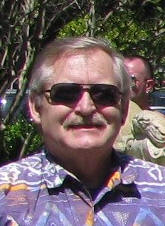|
|
|
This site was last updated
08/21/11
For
trip reports before September 28, 2010,
click here.
Europe 2010 - Part B
(Newest blogs at bottom.
Click on thumbnails to see larger photo.)
|
Hungry for Hungary,
Sept. 28
As we awoke this morning and prepared to go
to breakfast, our ship docked on the Pest ("pesht") side of the
river at Budapest. This is the capital city of 2 million in a
country of 9 million. It is bisected by the Danube River, the
west side hilly and the east is flat. Most stunning are the
buildings with exquisite architectural detail, evident before we
even went ashore. Our day was somewhat abbreviated since our ship is
limping, but we still were able to get an overview, and are pleased
that we didn’t have to miss this city.
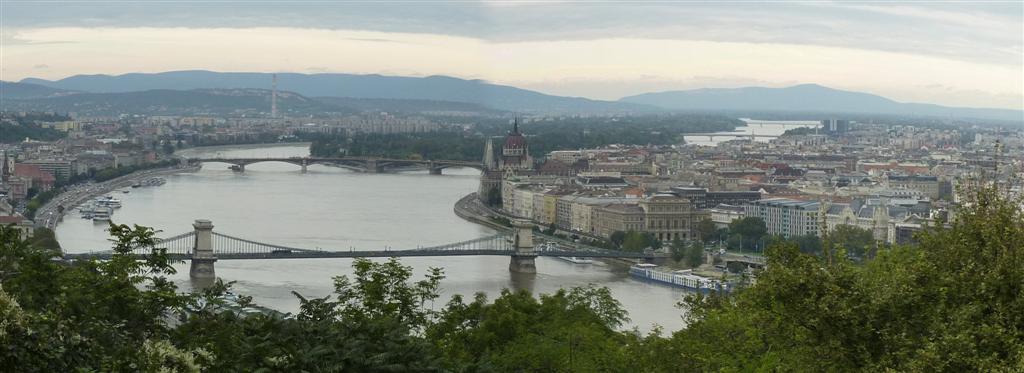
We boarded a bus for a tour of some of the
high points with stops at a high viewpoint of the city, the Square
of the Heroes, and the Royal Palace. The viewpoint gave a wonderful
view of the city from a high vantage point. The square is a huge
area with monumental statues to family people in the history of
Hungary. The palace is a city within a city up the hill from the
river with many historic buildings and a part of the fortress wall.
We spent some time in the oldest church in Budapest, St. Mathias,
dating back to the 13th century. It is gothic with lots of
decoration both inside and outside. In the 19th century, Emperor
Franz Joseph and Empress Elizabeth (Si Si) of the Austria-Hungarian
Empire had their coronation held in this church. Franz Joseph
visited it ahead of time, decided it was too plain on the inside and
had the walls painted with endless decoration. Outside is a
magnificent statue of King Stephen who lived in the 11th century.
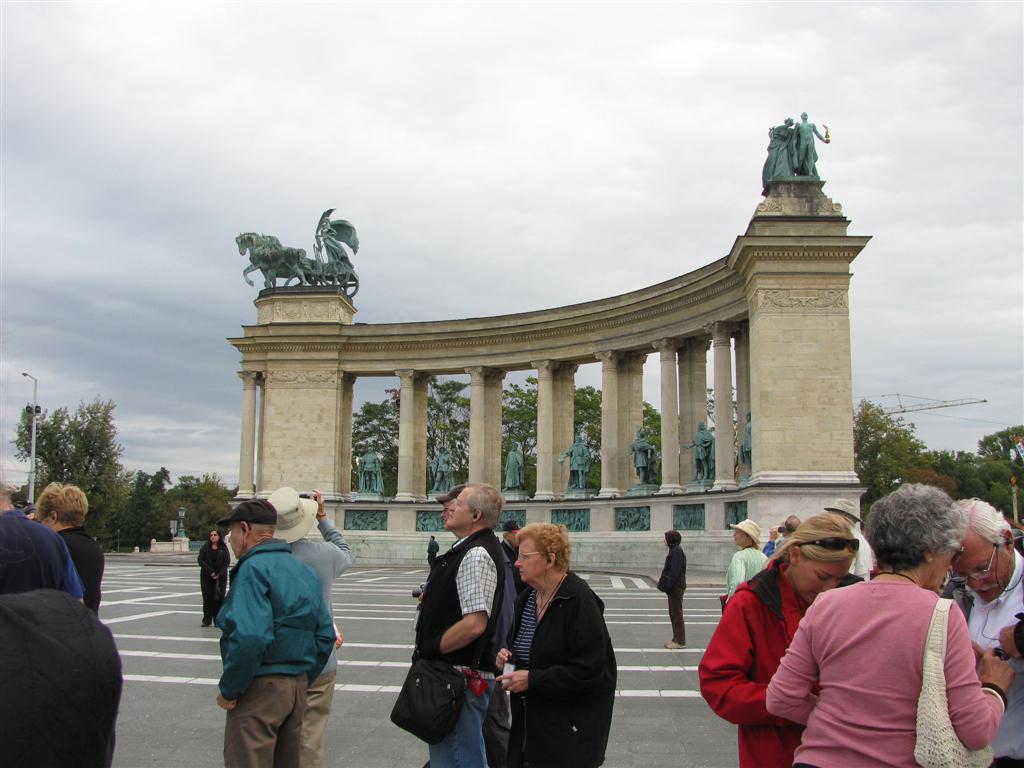
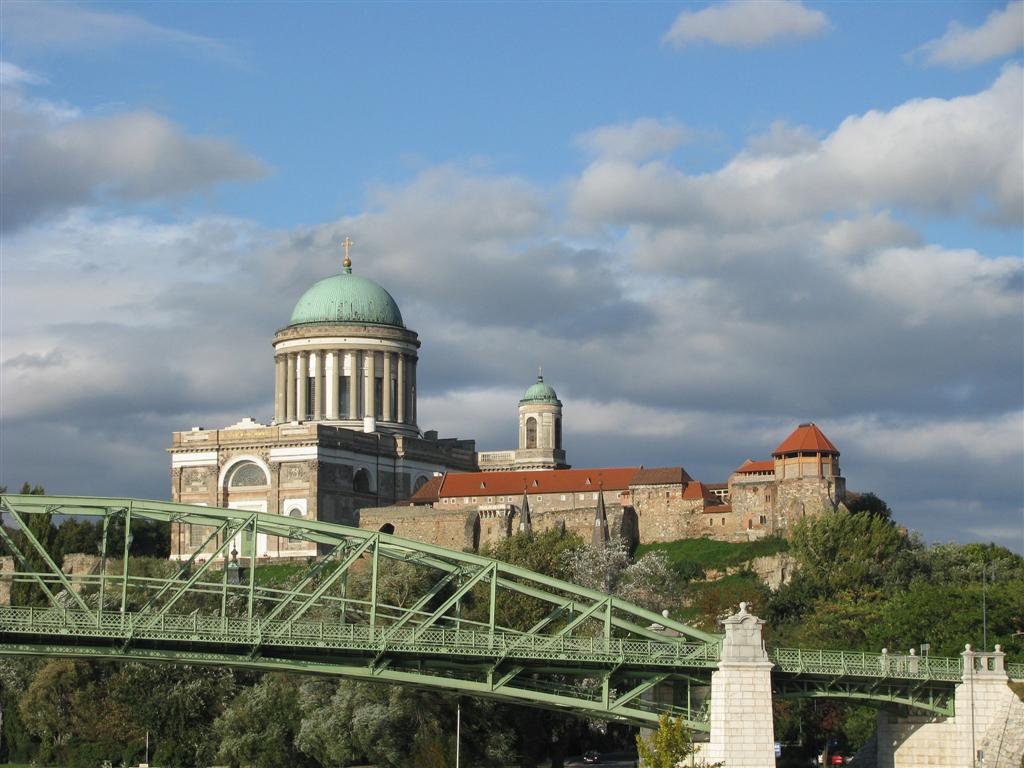
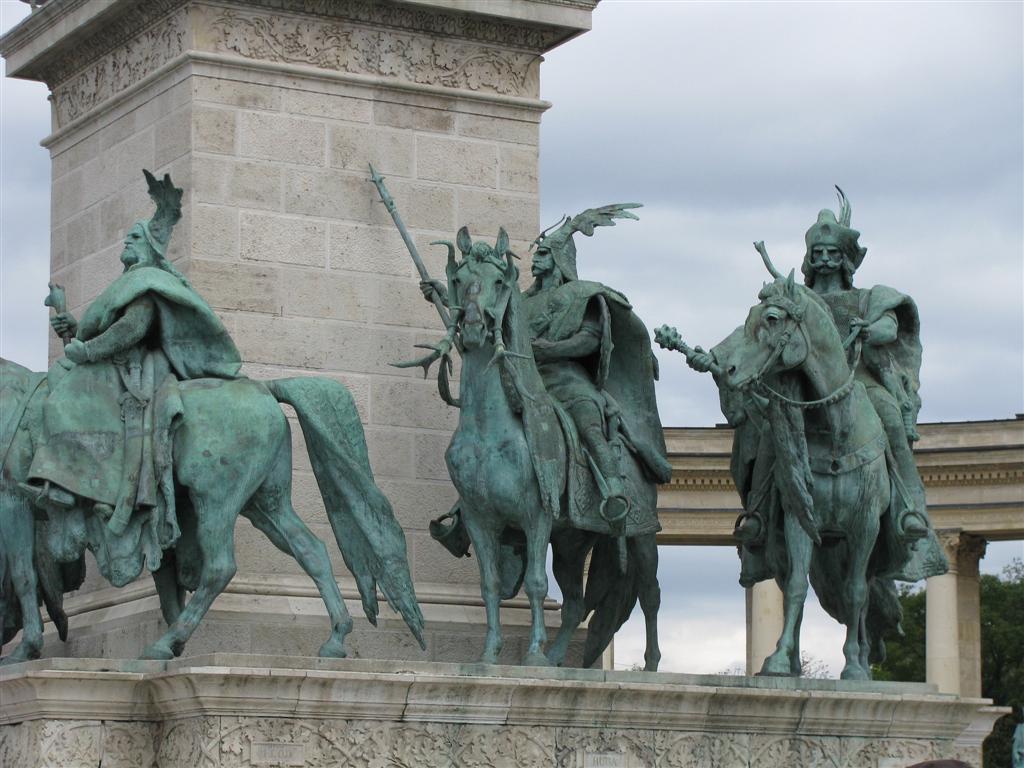
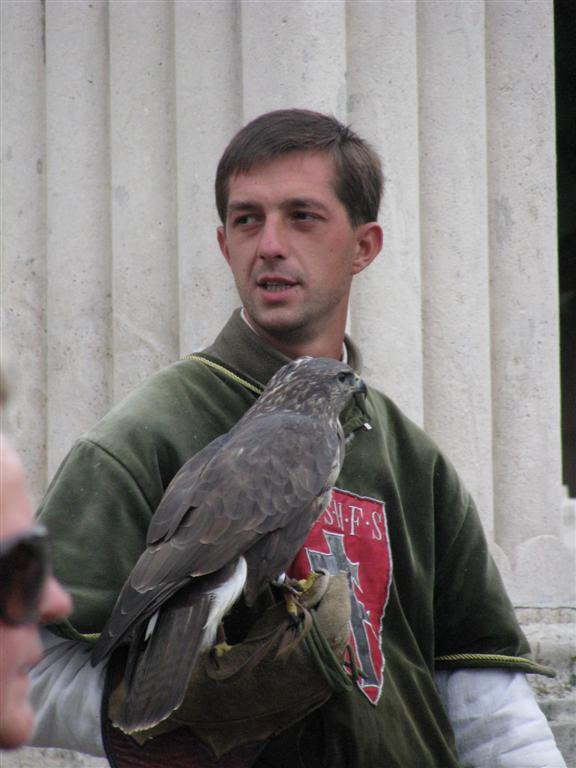
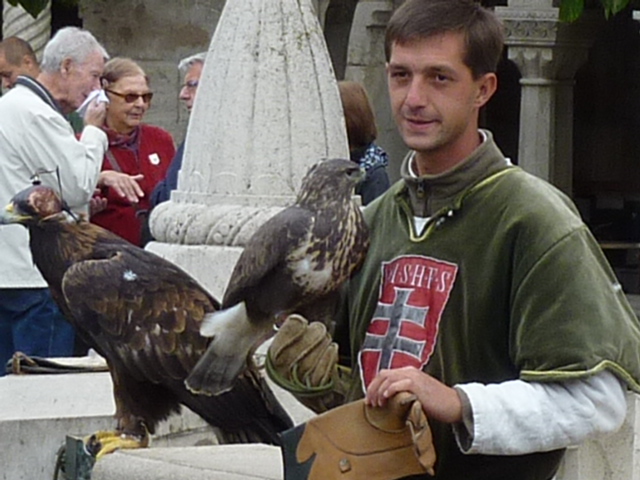
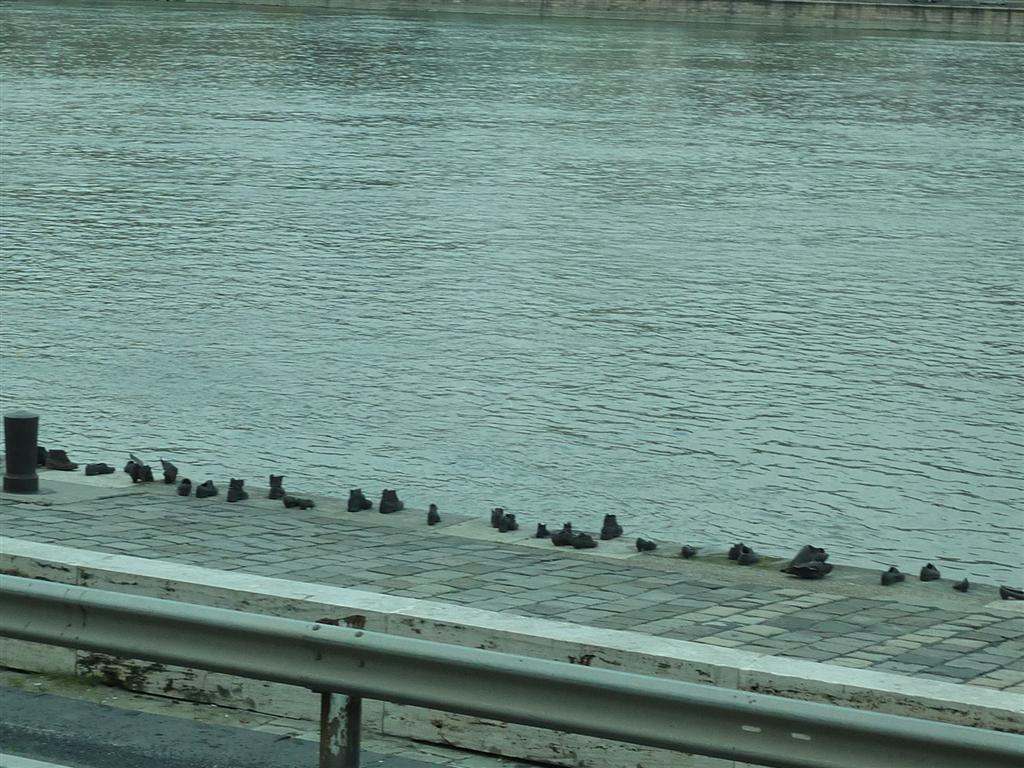
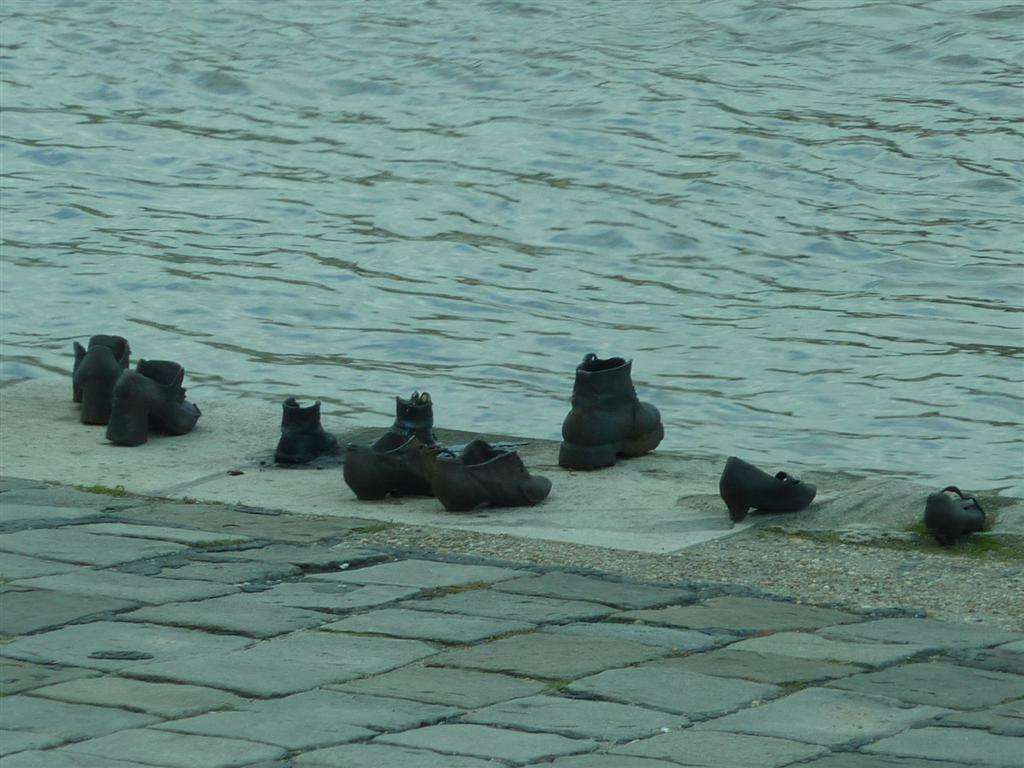 The bronze shoes line the bank of the Danube in remembrance of those
Jews who lost their lives to the Hungarian Nazi's who shot them and
threw the bodies into the water.
The bronze shoes line the bank of the Danube in remembrance of those
Jews who lost their lives to the Hungarian Nazi's who shot them and
threw the bodies into the water.
Our third stop was for lunch in a hundred
year old cellar not far from the river. It accommodated our group of
over 100 easily, and we had typical Hungarian food. It would be a
popular place to eat, I imagine. We had time afterward to stroll
down a pedestrian street nearby to look for souvenirs and watch the
people. It was spotlessly clean and the variety of the buildings on
either side was very interesting. One sees an incredible amount of
needlework with signs saying “Not made in China.” They would like
you to think they’re all handmade, but we doubted if that was
possible. Blanche is always on the lookout for toothpick holders,
and Burt usually finds a mug to add to their collections.
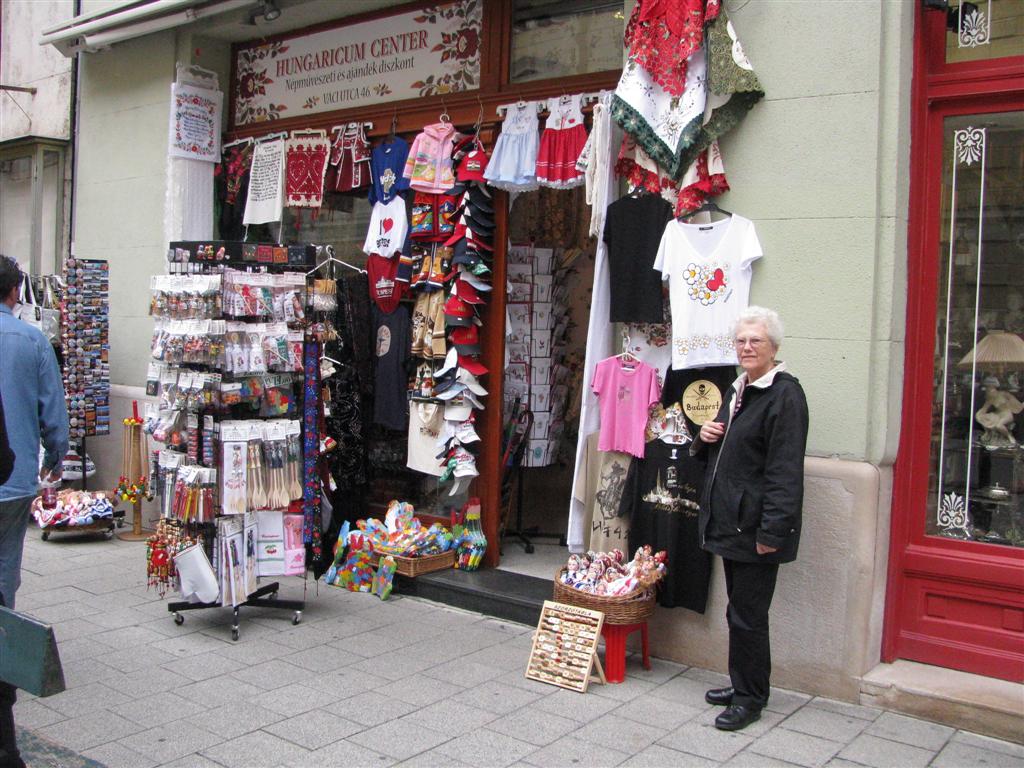
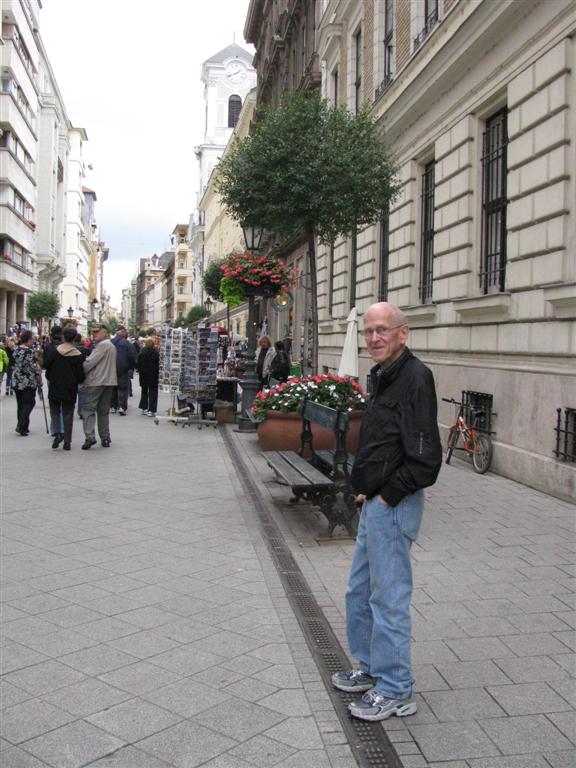
At 3:14, we had to be ready to board our
buses for an hour’s ride upriver to Escargot where the ship was
waiting to take us on to Bratislava for tomorrow. We are a day
behind after today and will have to work in Vienna. There was a bit
of grumbling that this was a lot to do in one day, but I’m sure we
can manage. We all were very impressed with Budapest and would love
to come back and spend more time.
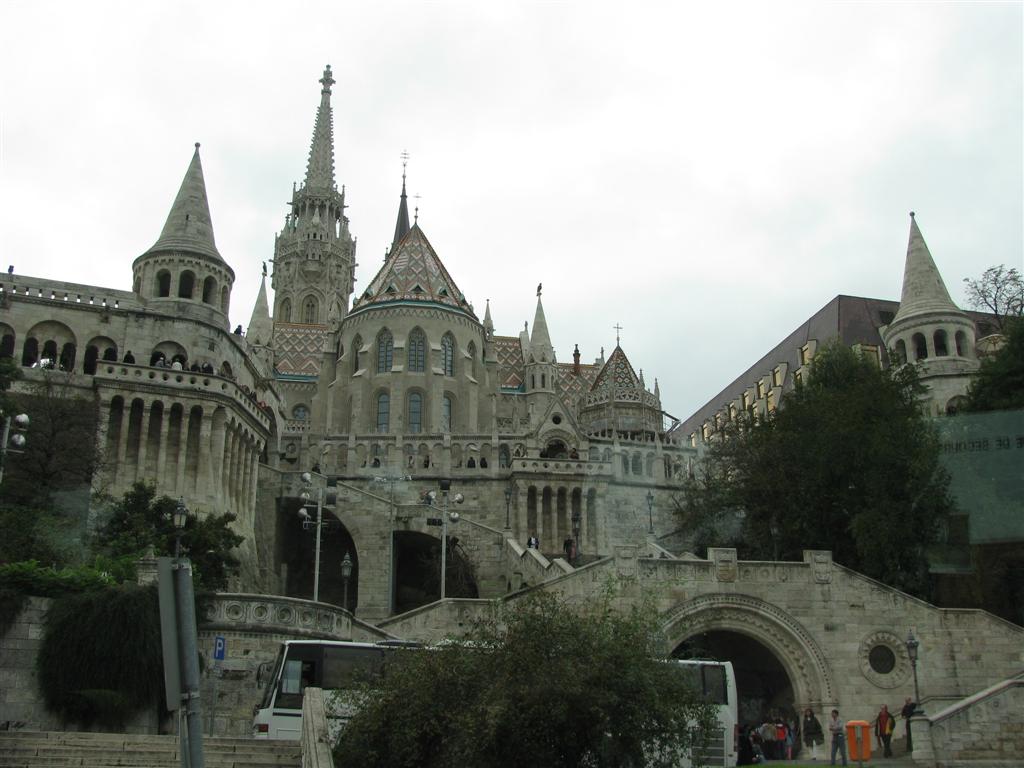
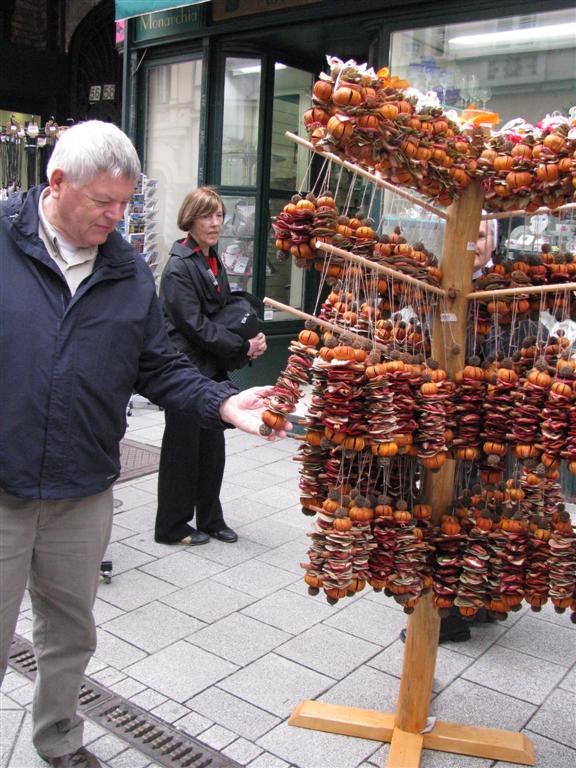
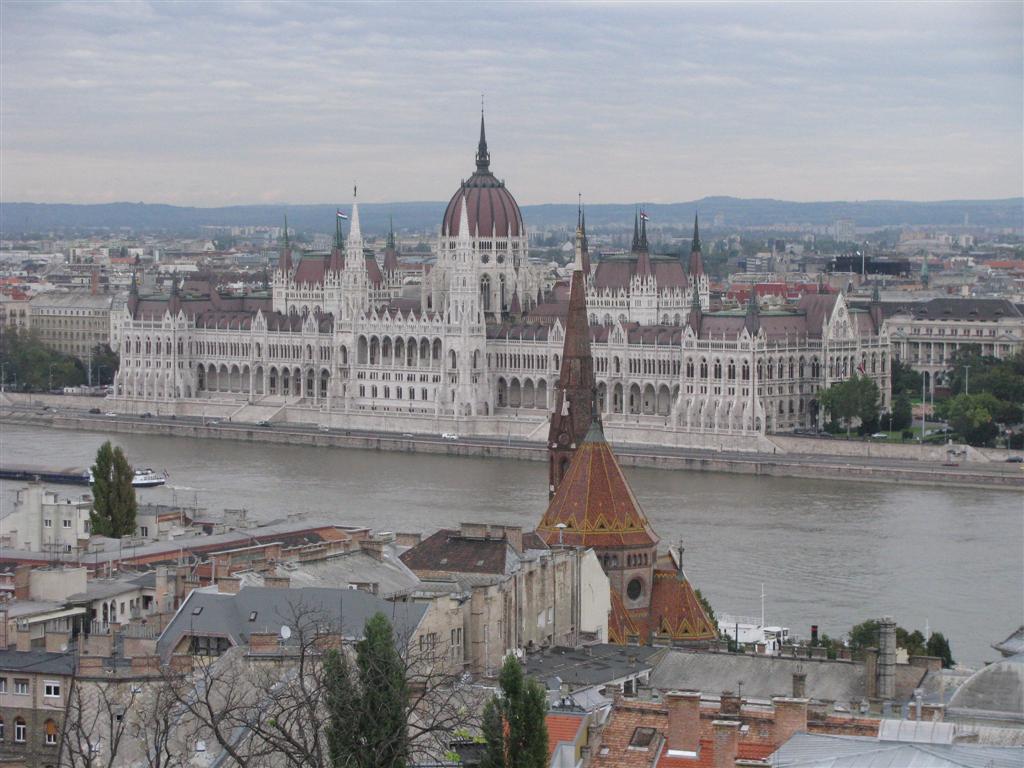
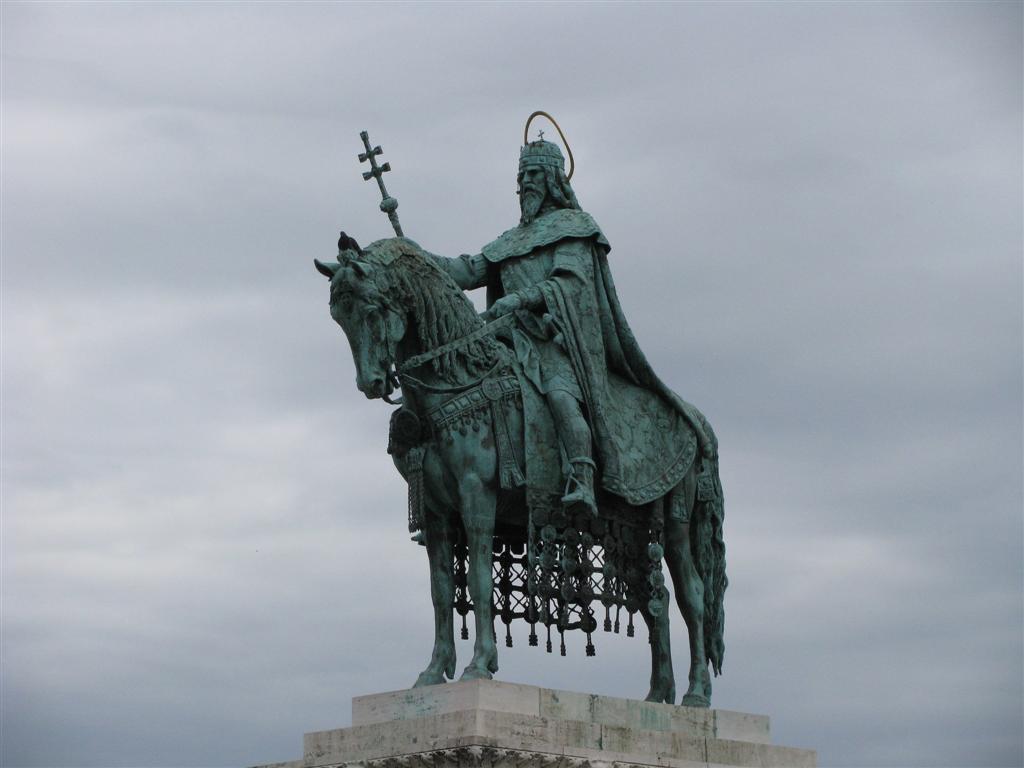
|
|
A Full Day: Both
Bratislava and Vienna
Up early, we glided into Bratislava,
Slovakia on the Danube near the border with Austria for a morning
tour. This city of half a million, is the capital of Slovakia,
created early in this decade after the breakup of Czechoslovakia,
created after the end of WWI. The two new countries are the Czech
Republic and Slovakia. The Czechs speak Czech and the Slovaks,
Slovakian, but the languages are quite closely related.
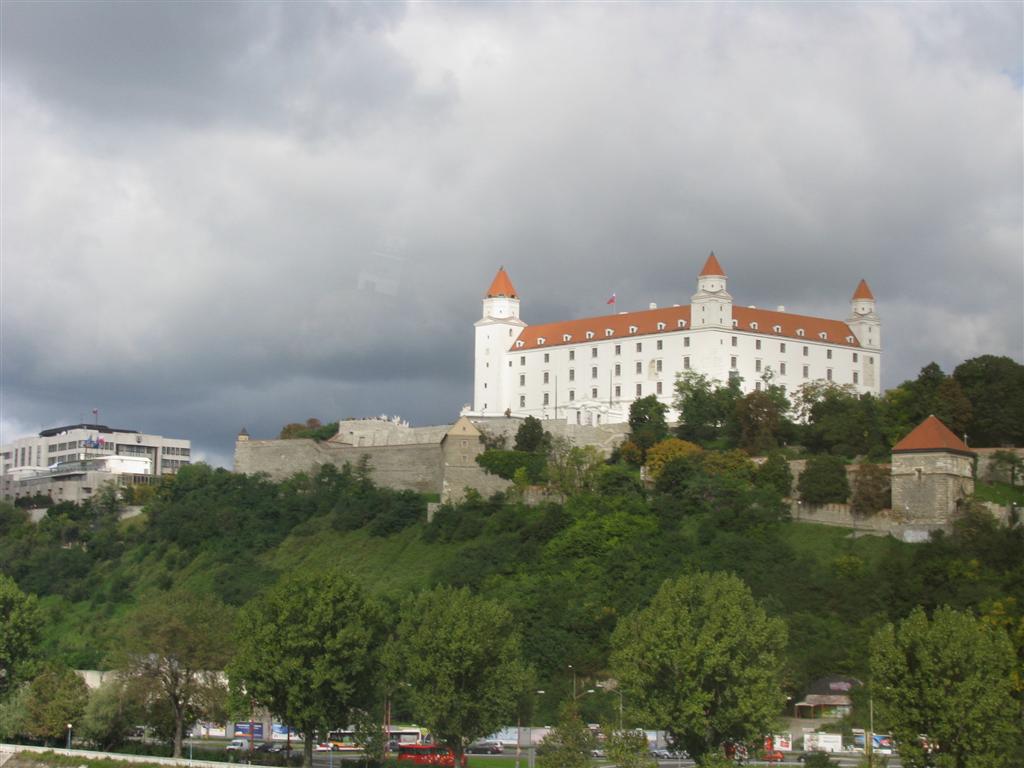
We began our tour with a ride on a small
rubber-tired choo-choo train around the old town. Our local guide
was a fount of information and took us on a walking tour before
giving us some free time in the public square and surrounding
streets. Much of the area is closed for pedestrian traffic, and we
were impressed with how well maintained it was. We walked around and
saw a number of public buildings and various embassies. The U.S. one
is a local irritant with its high barbed-wire fortress in an
otherwise peaceful and historic area. It certainly says something
about how we are viewed or see ourselves in the world.
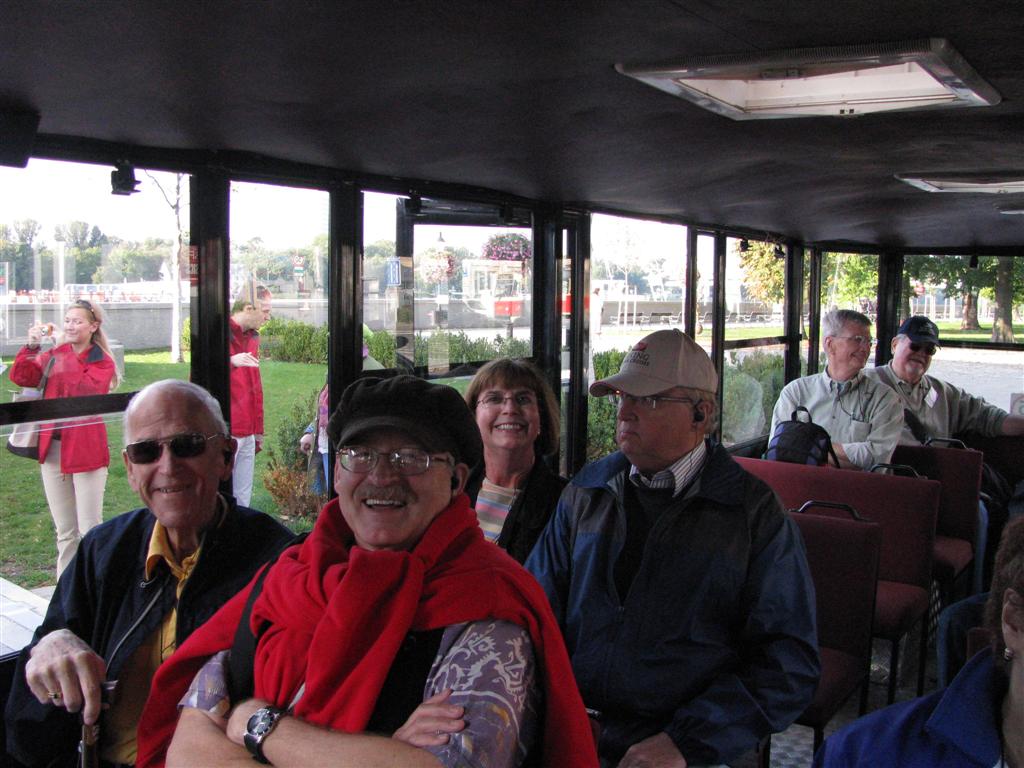
Slovakia adopted the Euro a year ago, and we
will now have the same currency for the remainder of our trip. Since
it is new here, the old crowns are shown in the prices. I used the
cash machine and discovered that there are over 131,000 crowns left
in my account. It won’t last long. Since we left home, the dollar
has fallen against the Euro, so we probably won’t be able to afford
to go home.
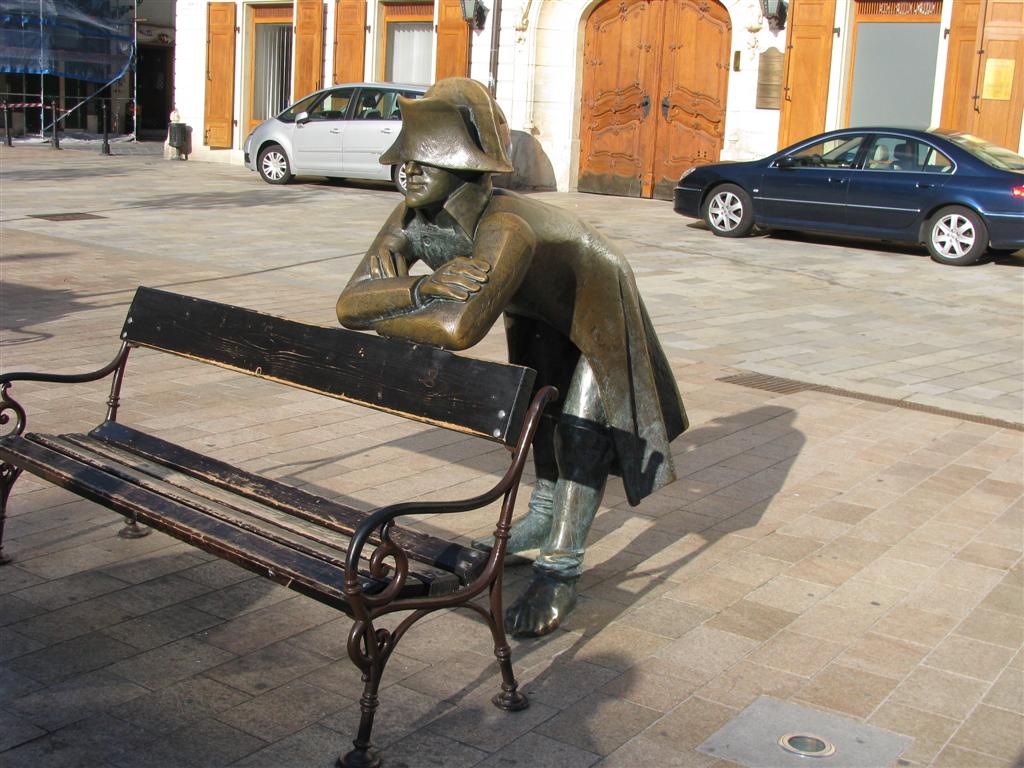
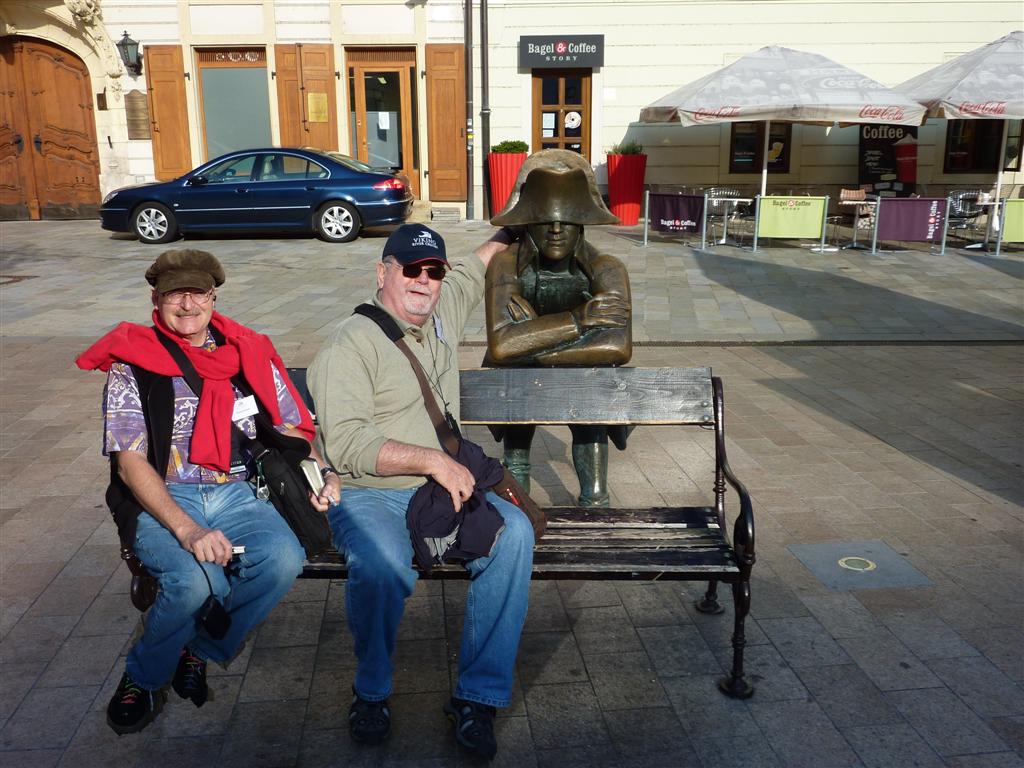
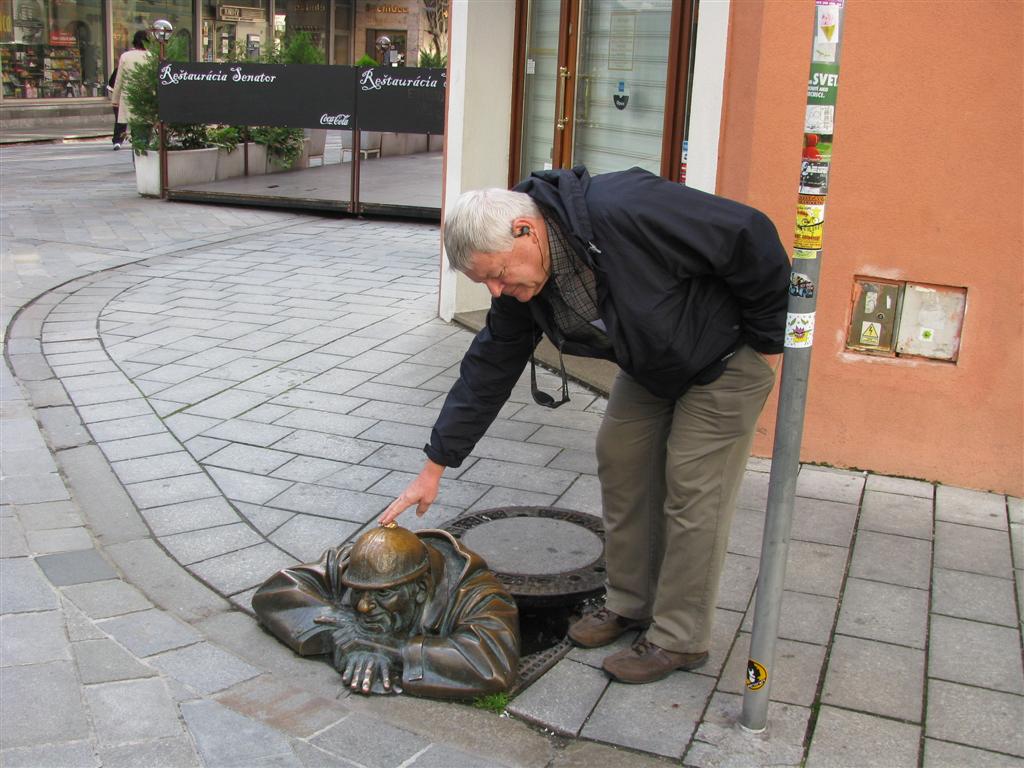
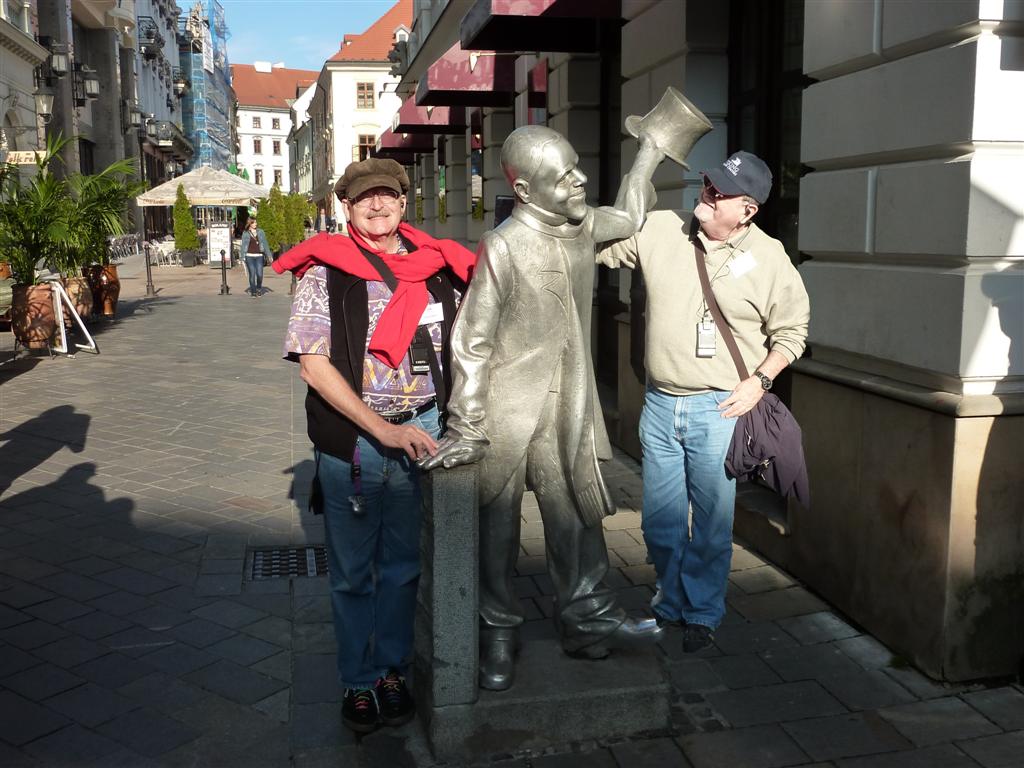
As we began our tour, the ship left to sail
to Vienna (Wien), in eastern Austria. The plan was for us to follow
in a bus on the autobahn to catch up after our time in Vienna. The
bus trip was a little over an hour, time to nap or look at the
beautiful farms in the flat countryside. Arriving in Vienna, we were
taken to lunch. As we passed through to our seats, we passed tables
with a beer tap in the middle; this was a serious venue. We came to
believe that the place was very disorganized with a lack of staff.
Fortunately, the Viking staff pitched in and helped serve a lunch
that was supposed to be typical Austrian fare. We weren’t impressed,
and we thought the crew was embarrassed. They hadn’t chosen this
place.
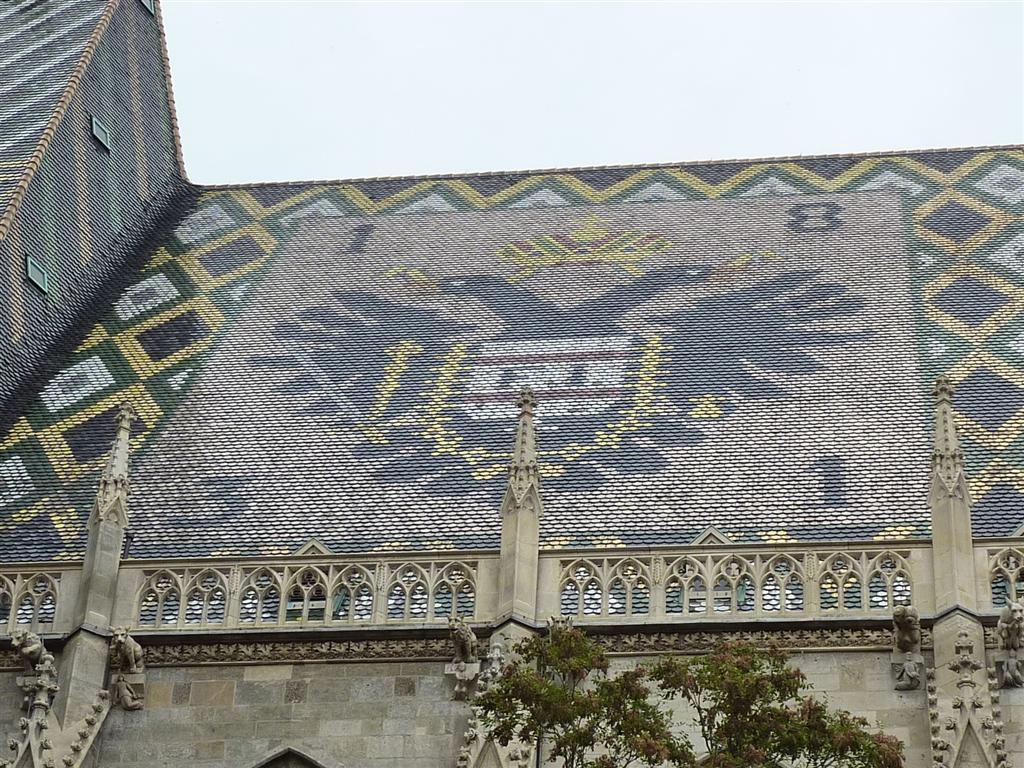
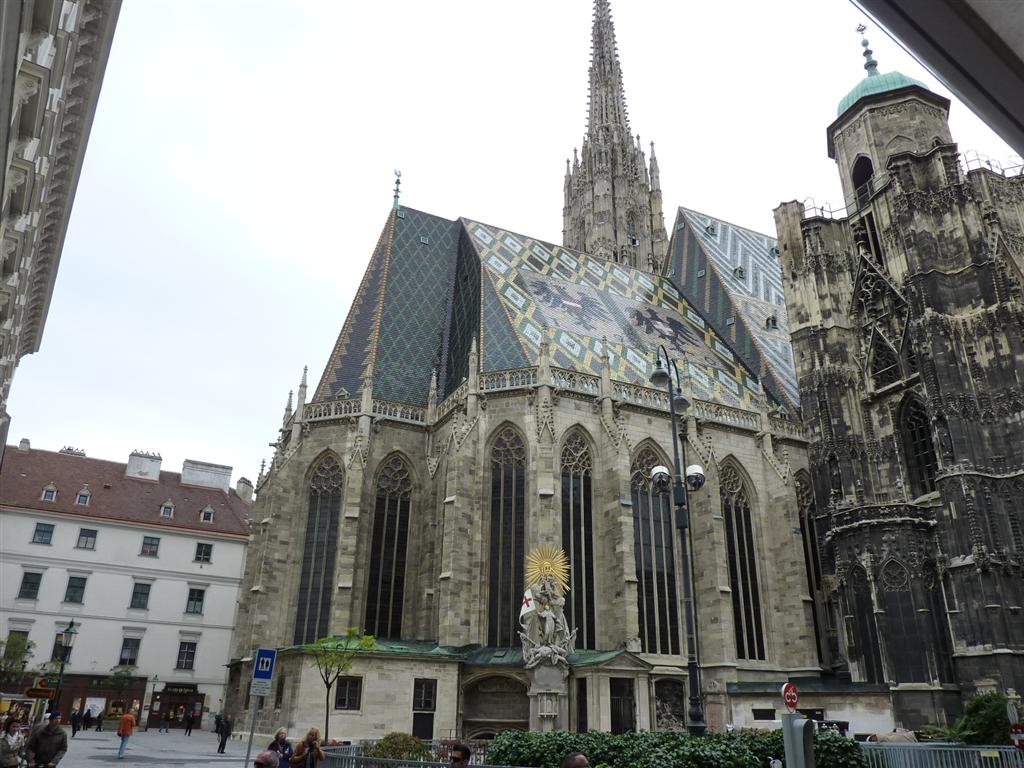
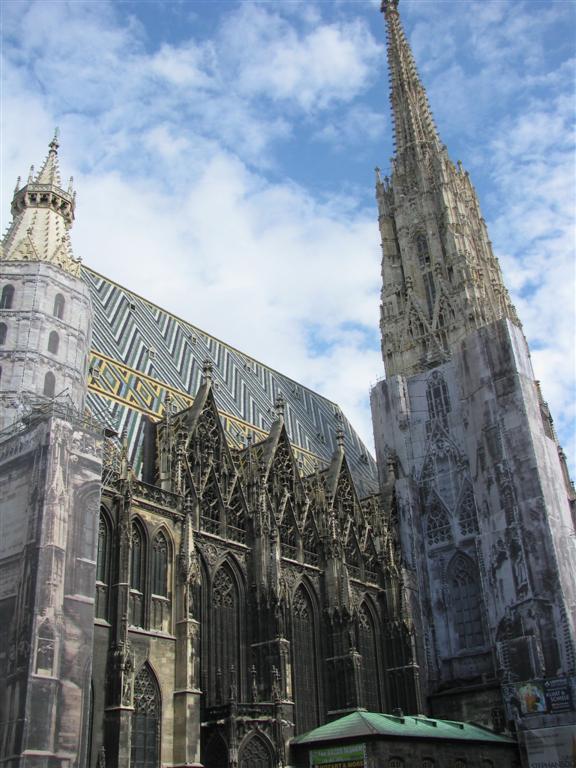
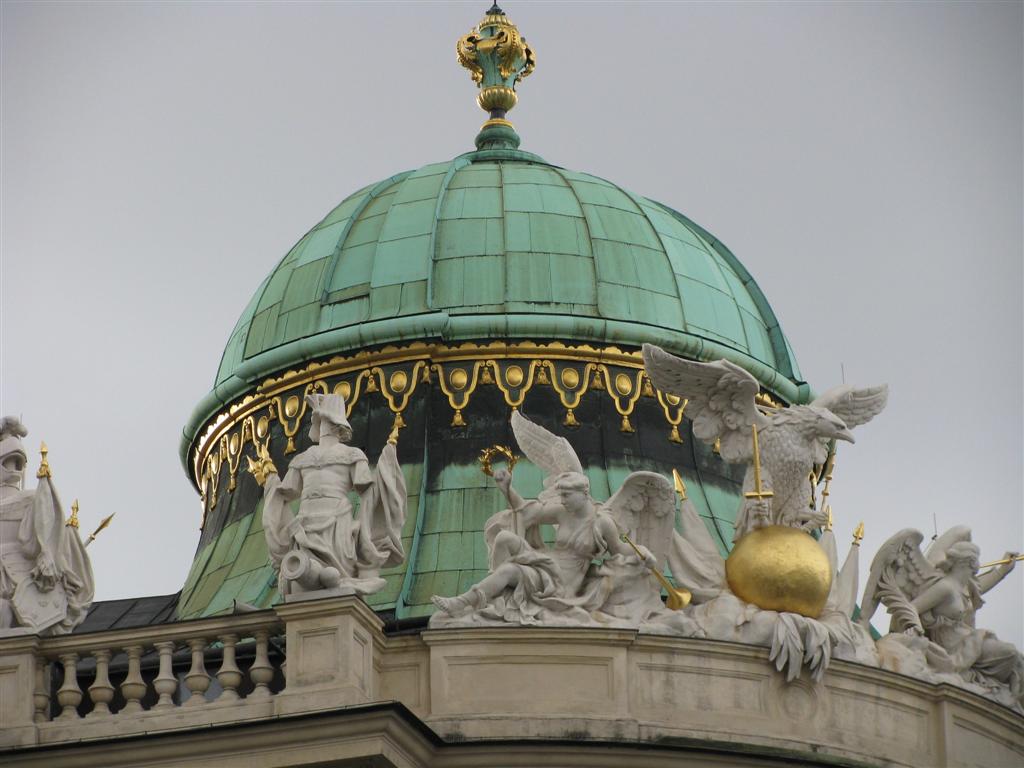
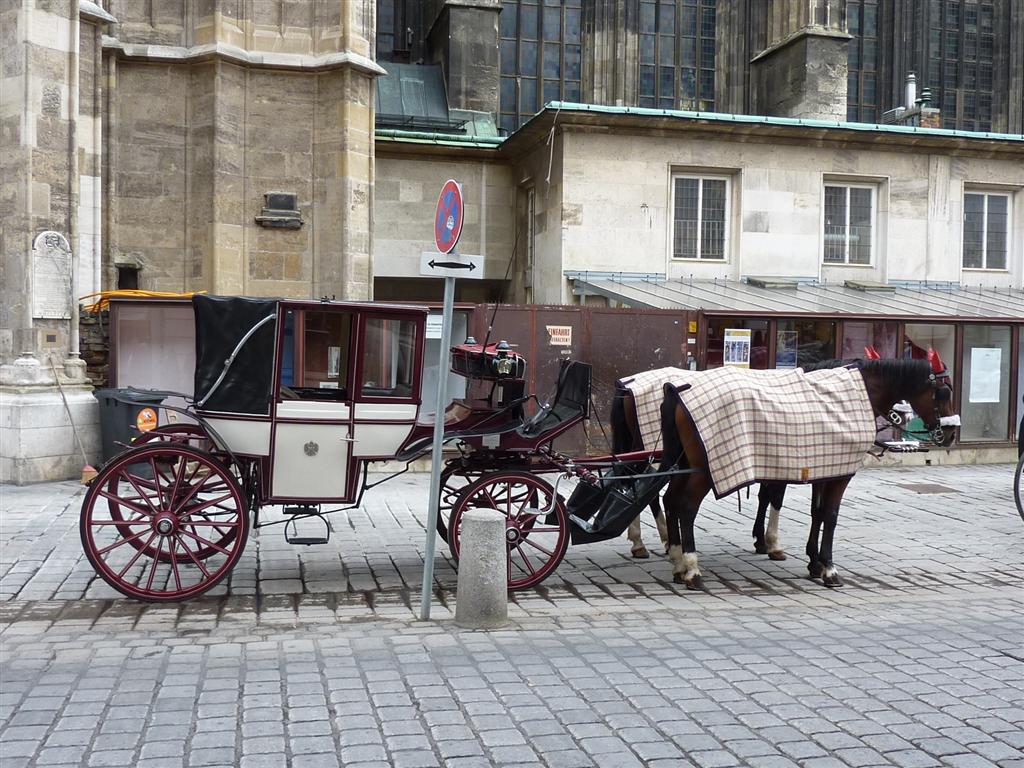
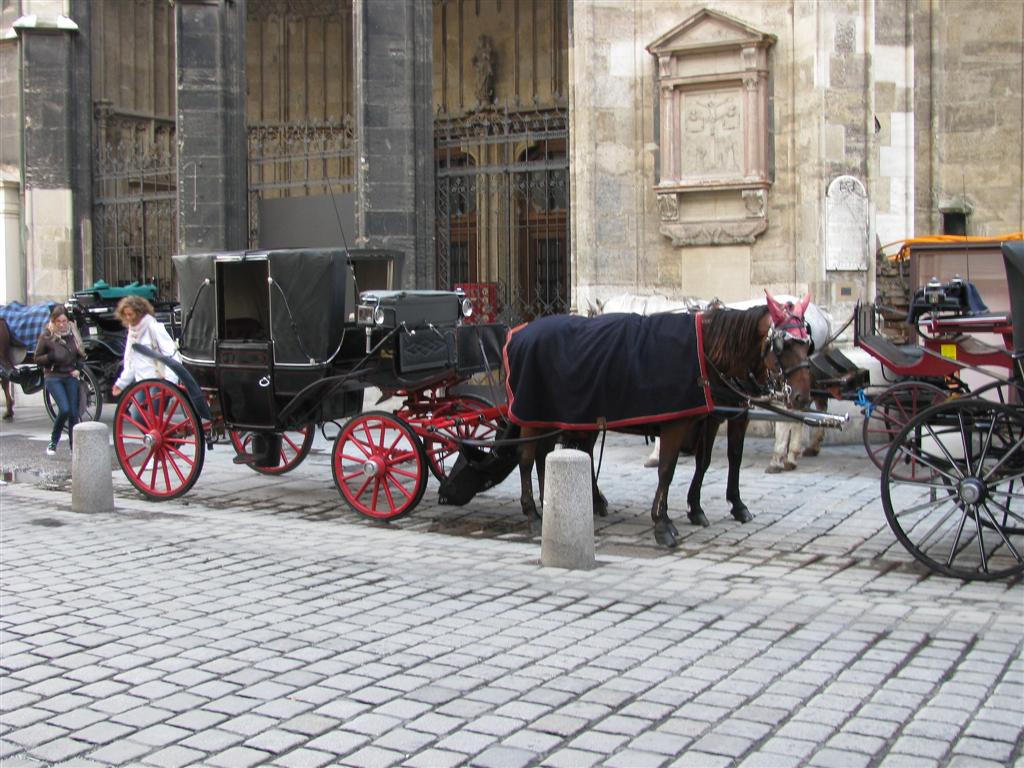
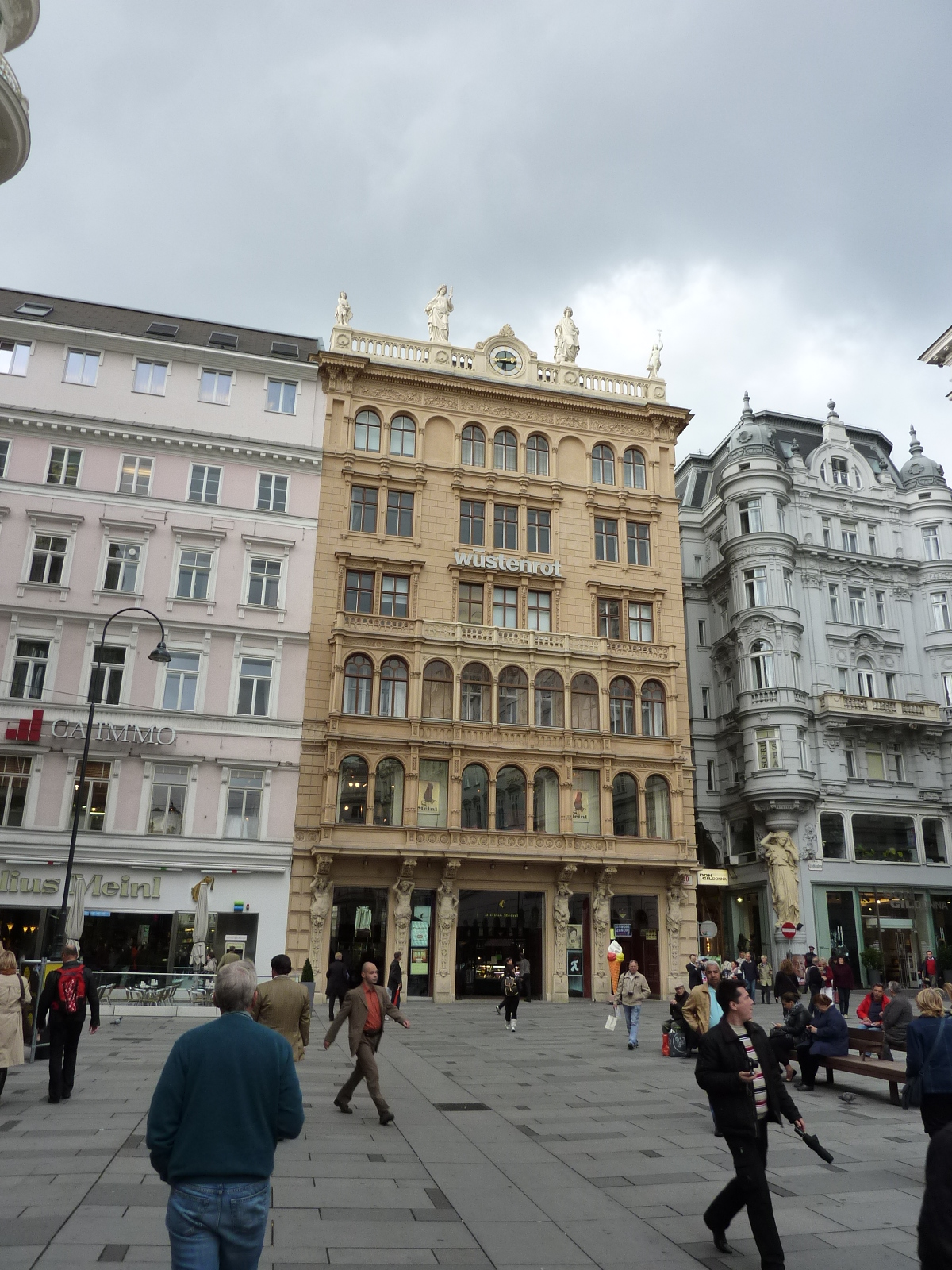
Next, we took a bus tour around the Ring
Strasse (street) a horseshoe boulevard created in the 19th century
by Franz Joseph after he had the city wall torn down. We passed
buildings that truly took our breath away. Magnificent palaces and
beautiful houses were on every side, many of which have been
converted into businesses and flats. One can do anything with the
inside as long as the outside remains the same. Franz Joseph who was
emperor for more than 50 years, certainly made his mark on the city.
A large Romanesque church near where our ship docked was built for
the 50th anniversary of his coronation.
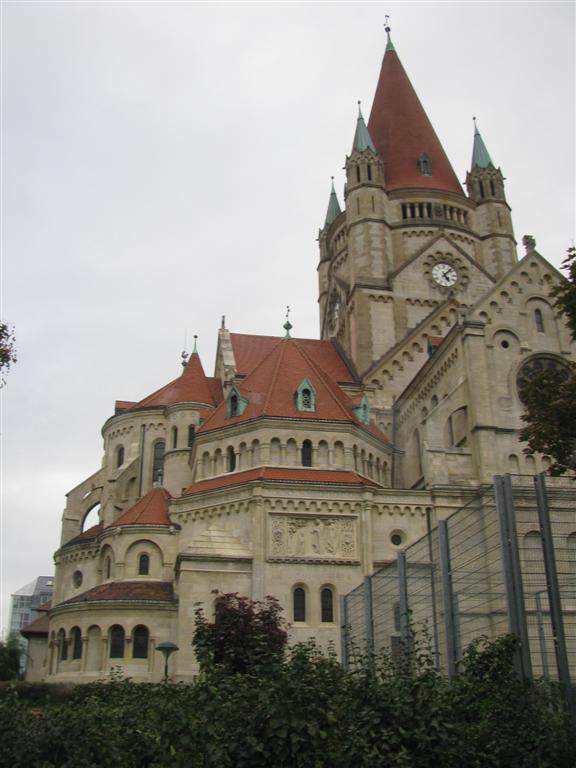
After circling the ring, we made our way
into the center to St. Stephen’s cathedral, a monumental gothic
edifice built between the 12th and 16th centuries. It was badly
damaged in the war with the wooden roof destroyed. It has been
restored, and is being sandblasted to remove the black grime of the
ages. All around the square was a car-free pedestrian area with very
sophisticated shops like 5th Ave in New York. It was an unusually
cold (54) day and we needed warm coats in the wind. We were spared
the threatening rain while walking around.
One of the spectacular buildings near the
cathedral had golden arches where we knew we could get cheap coffee
and find a restroom. The latter proved a challenge because it
required a 50 cent (€) coin or a card to operate the turn-style. We
managed to get change. I had forgotten that restrooms in this part
of the world require some coins. We thought we should go to a bank
and get a roll of coins.
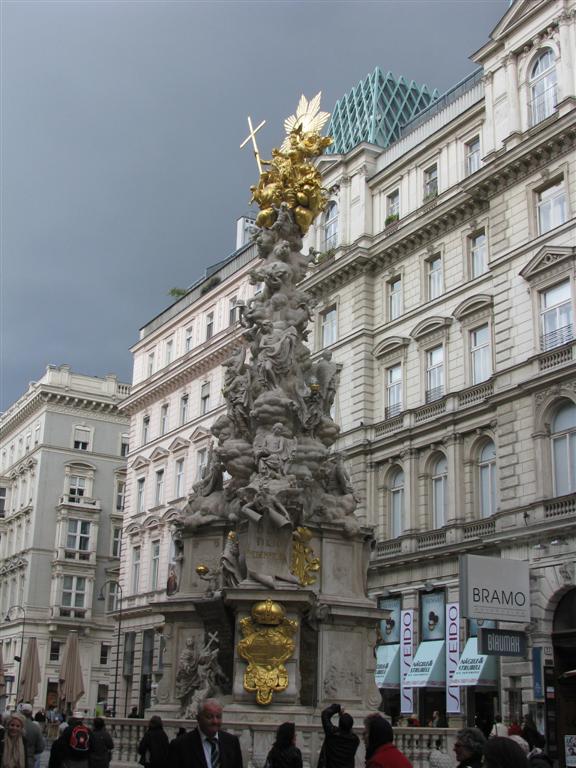
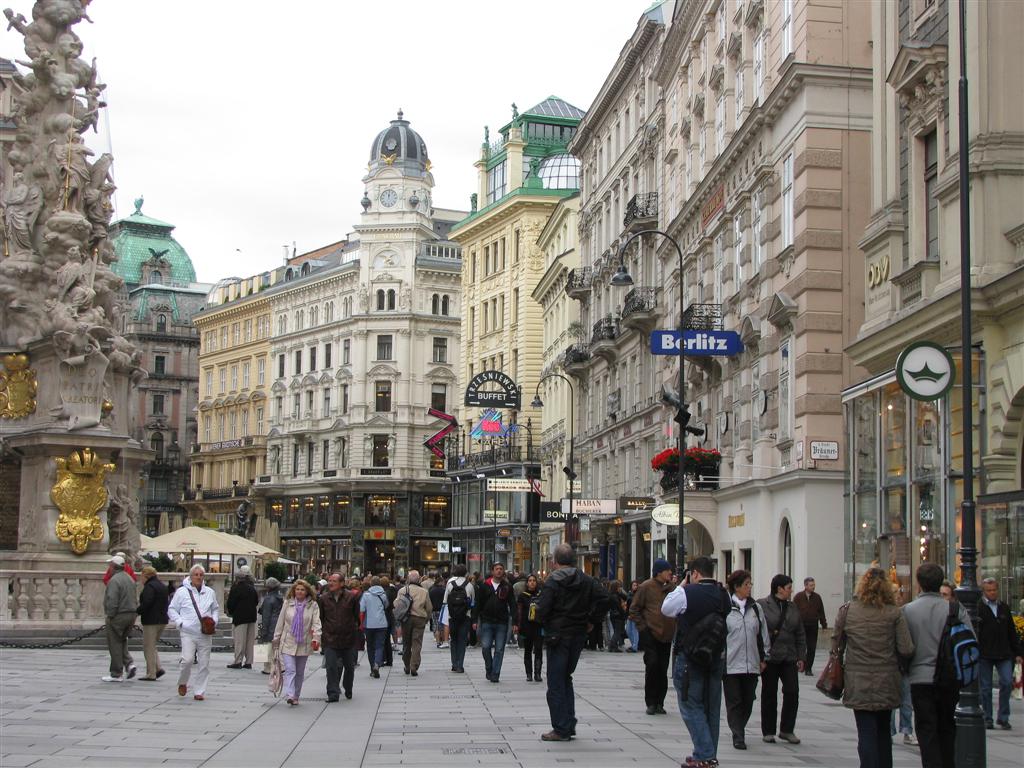
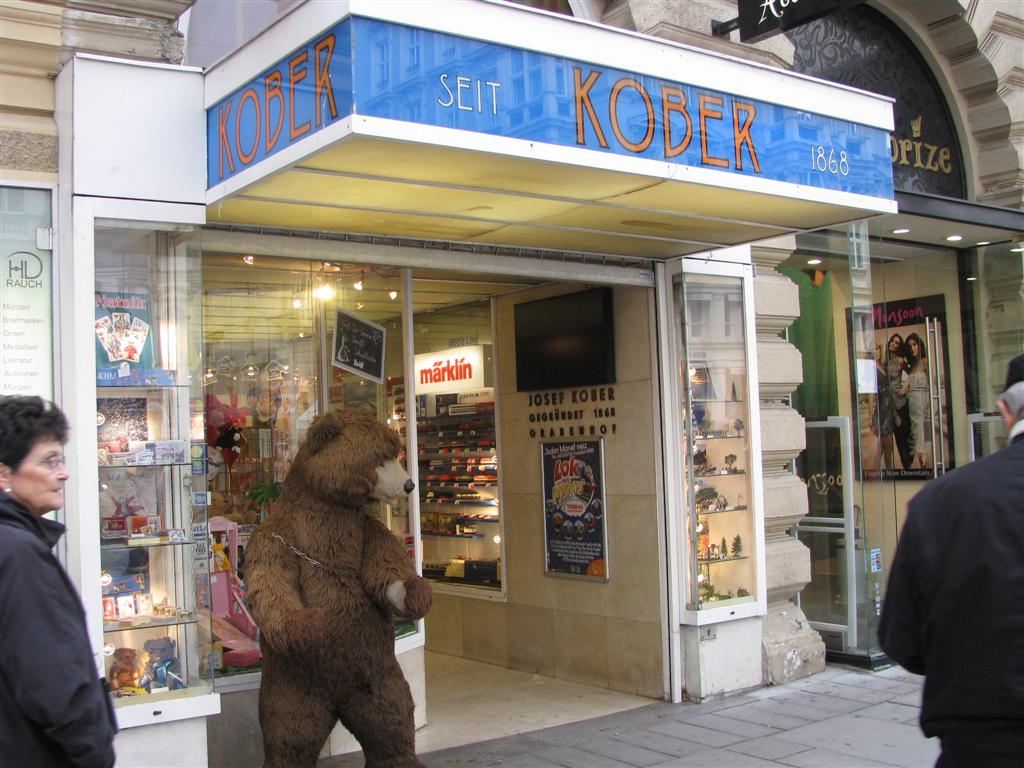
In the evening most of us went to a concert
organized by Viking to hear the sounds of Vienna. We took a bus from
the ship across the center of the city to a hall that was part of
some sort of military museum built in the mid nineteenth century by
Franz Joseph. The room for the concert was huge and very ornate.
There was an orchestra of 13 with 2 dancers, a soprano and a tenor.
The 2 hour event contained everything from Mozart opera to Strauss
waltzes. The crowd began to murmur its approval as the first strains
of the last number was heard: The Beautiful Blue Danube. Though a
relatively small ensemble, the acoustics caused the music to fill
the room. Riding back to the ship, we appreciated seeing the lighted
buildings. Our ship is near the large amusement park with and old
huge Ferris wheel where the passengers ride in boxcar-looking
containers. A light supper was served upon our return, but there
were few takers from our group.
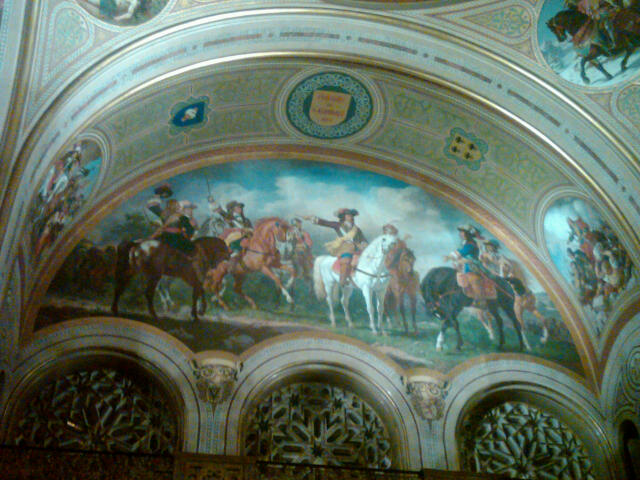
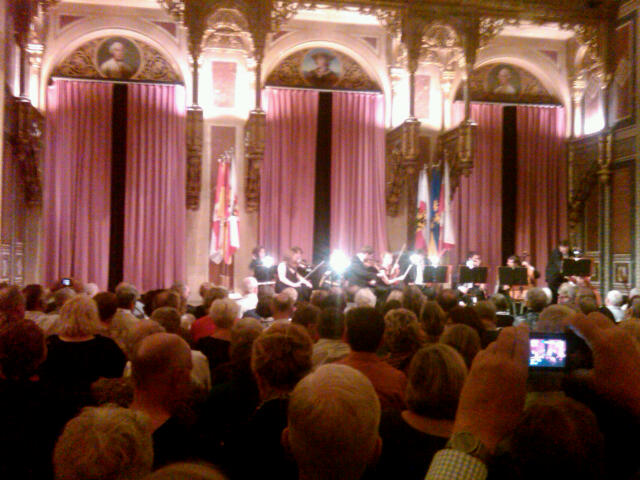
We are happy that we are back on schedule,
both engines are running and we will make the rest of the cruise as
originally planned.
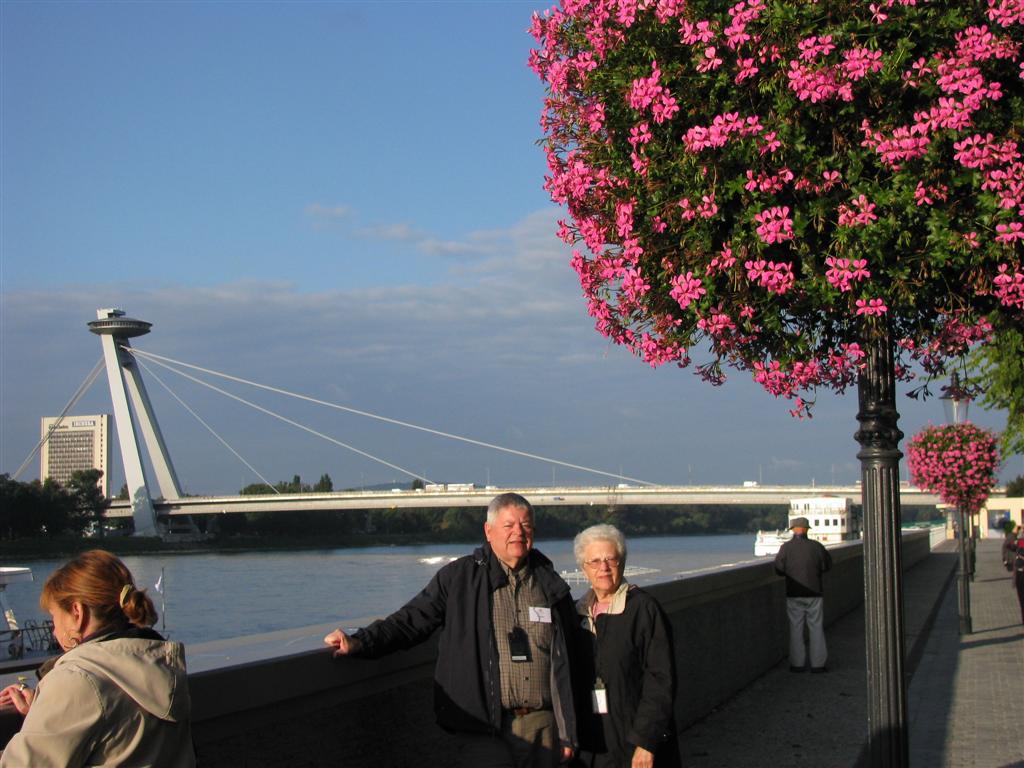 |
|
Melk Austria,
September 30 Our ship
left Vienna late in the evening heading for the small town of Melk,
Austria famed for its well-preserved Benedictine monastery, up on
the hill with a commanding view of the surrounding area. The
morning cruise had many interesting towns and ruins through this
area, and we had some commentary by our guide Merek. Lest there be
any tedium during the cruising, we could go to a talk about coffee,
brought to Europe by the Ottoman Turks, and a demonstration of
strudel-making.
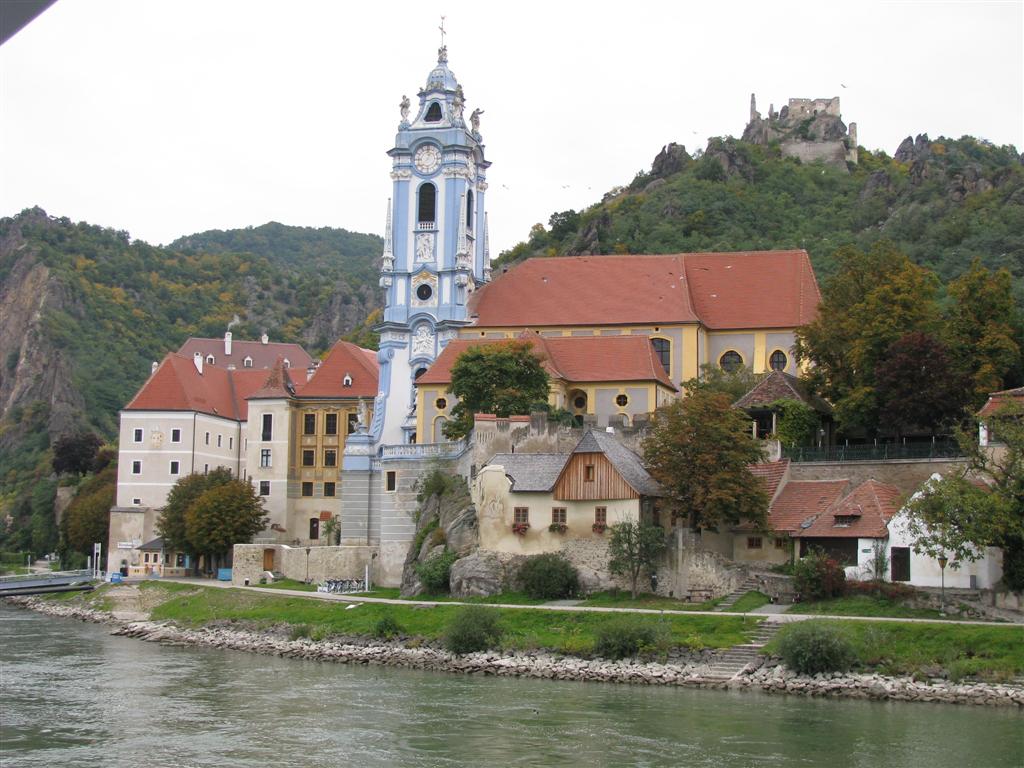
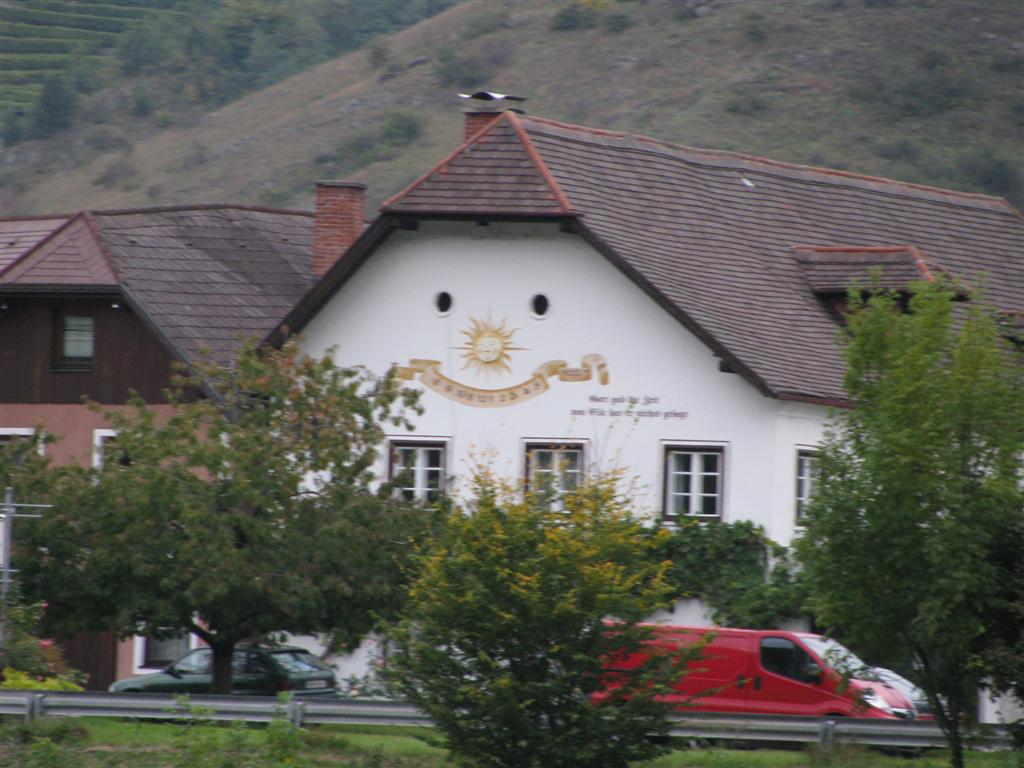
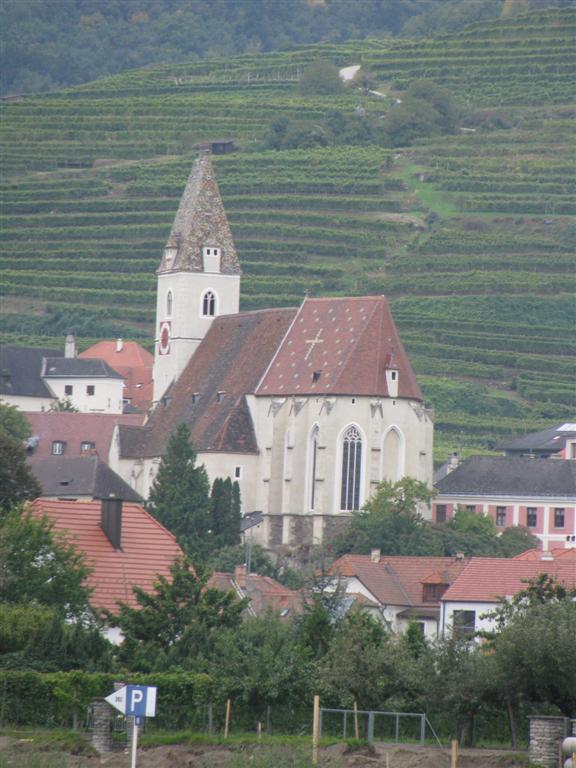
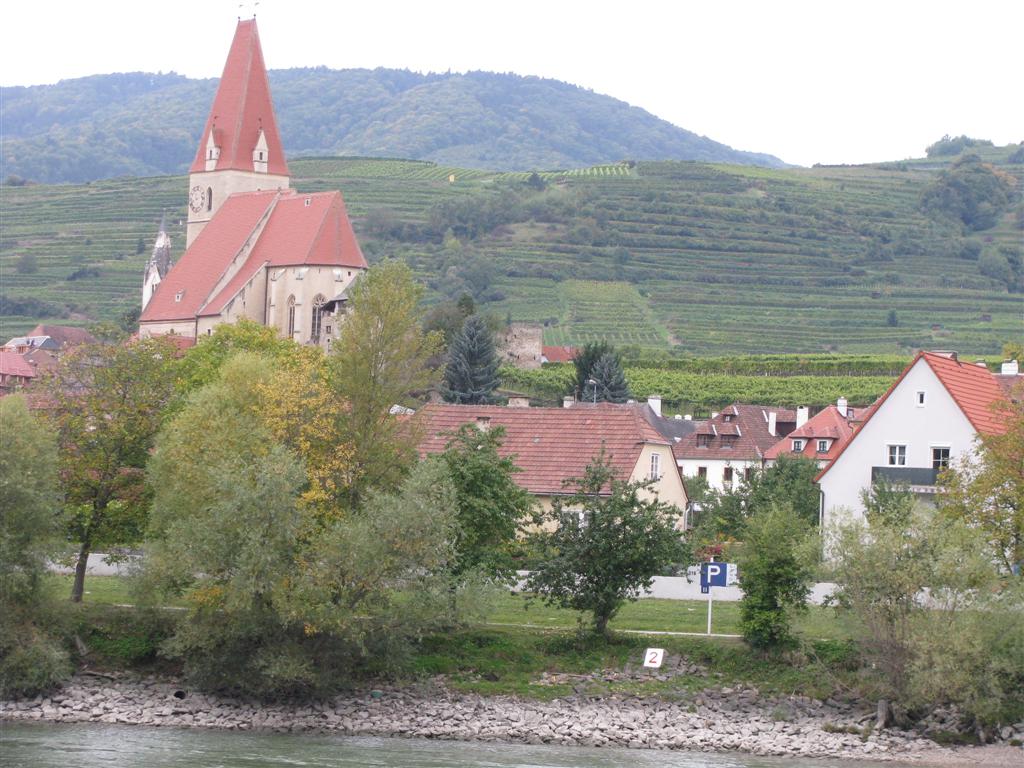
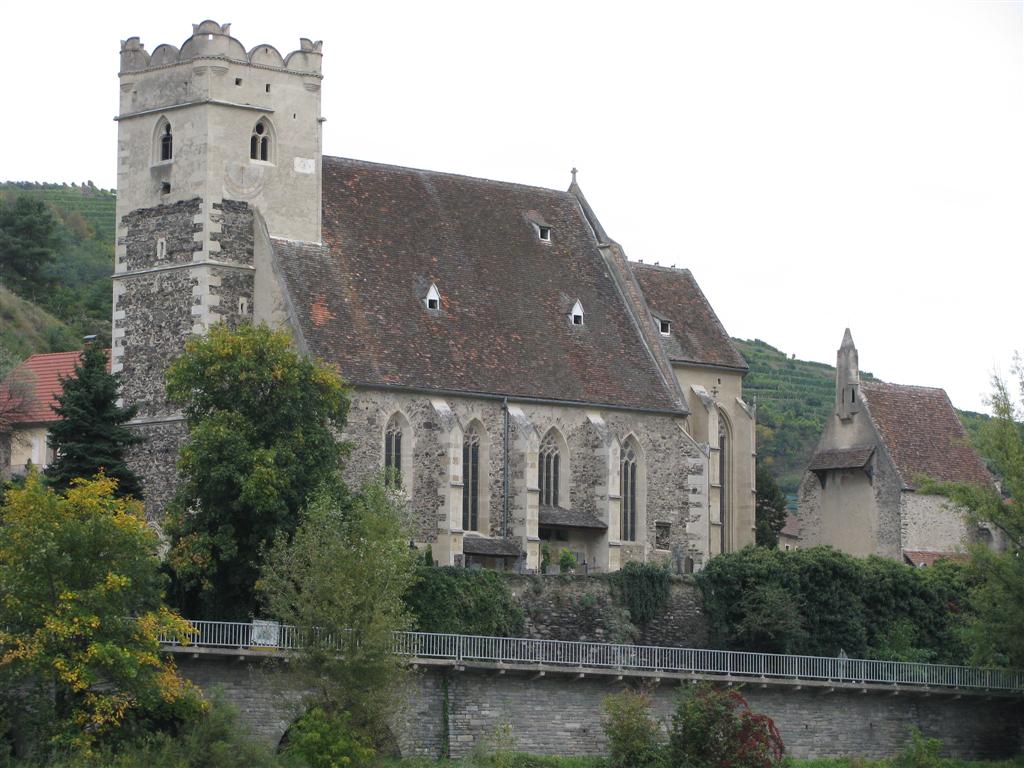
We docked shortly after
noon, and were able to disembark for a stroll into the town before
meeting our tour at 3:00. We were especially interested in the
photography shop named Gottwald. Later Blanche, who stayed in
the town, went into the shop and picked up a magazine that told
about the family. Elaine’s maiden name is Gottwald.
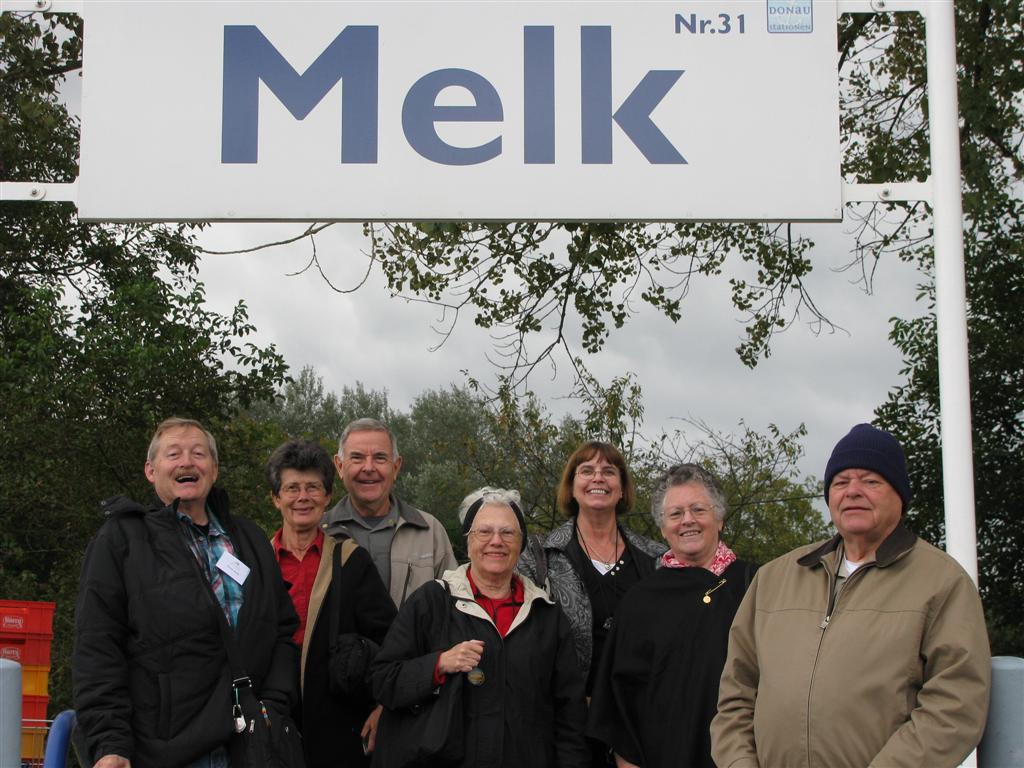
TomD, Levonne Rick, Elaine, Nancy, Blanche, Joel
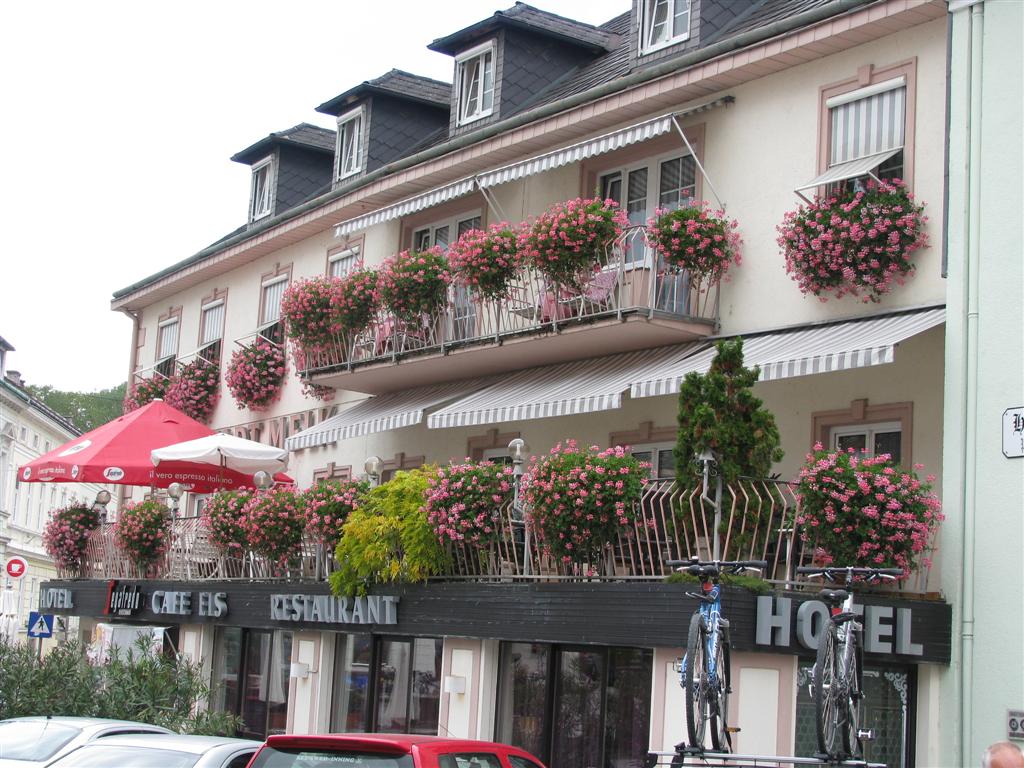
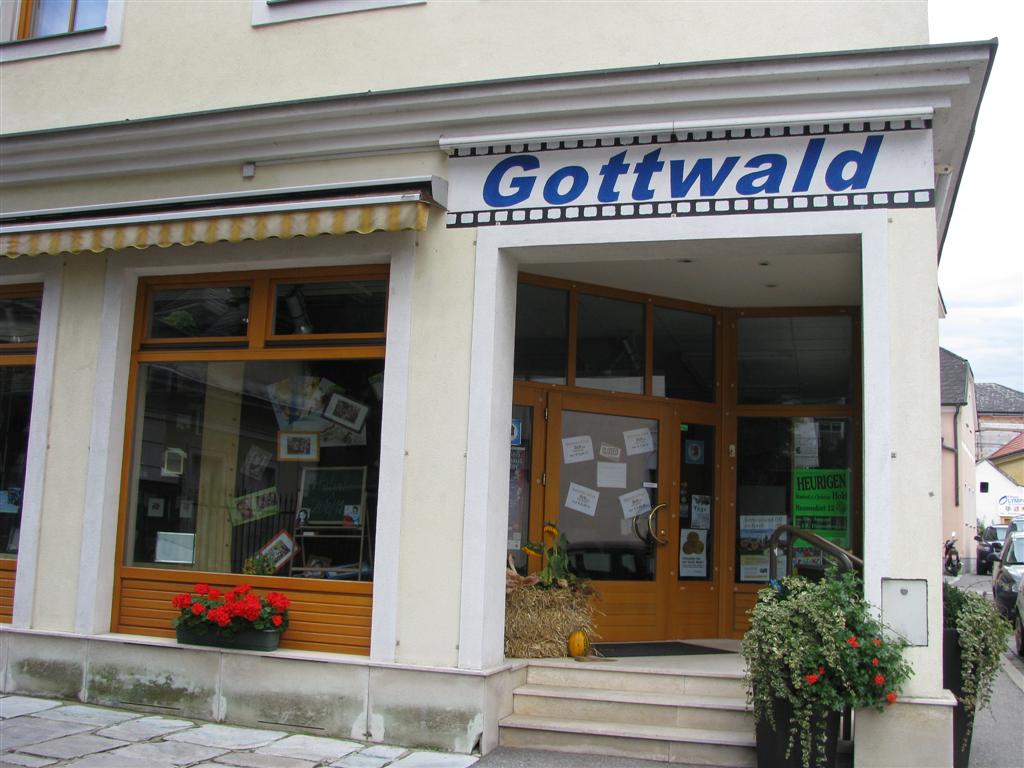
Several Gottwald businesses in Melk
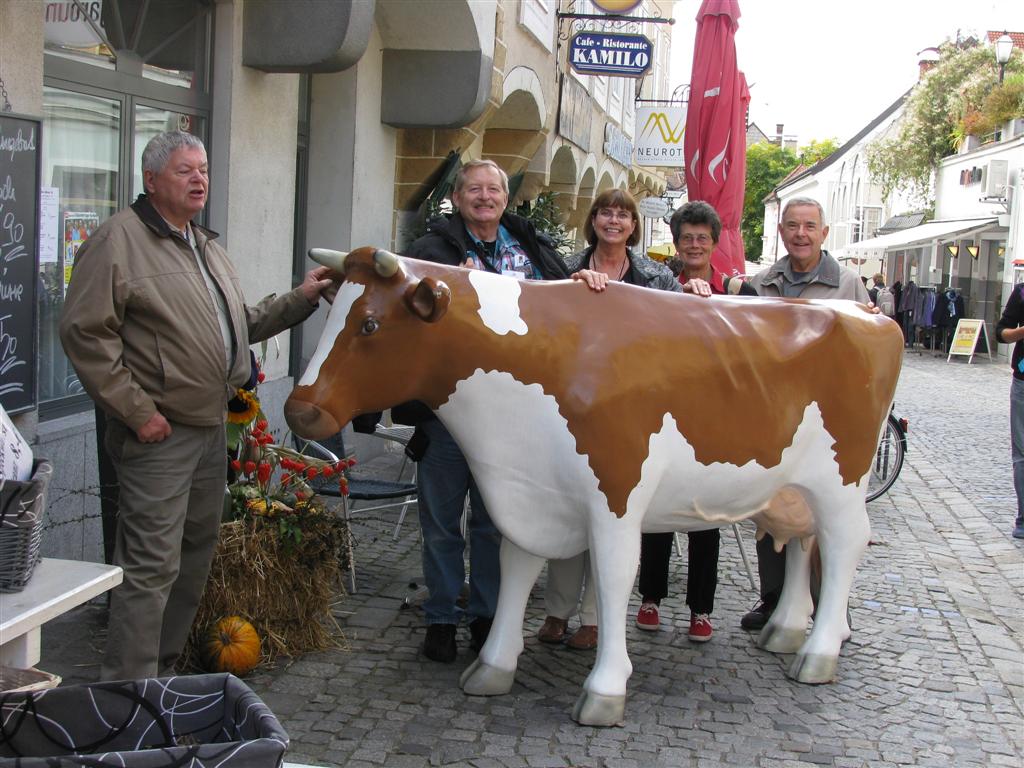
Joel,
TomD, Nancy, Levonne, Rick
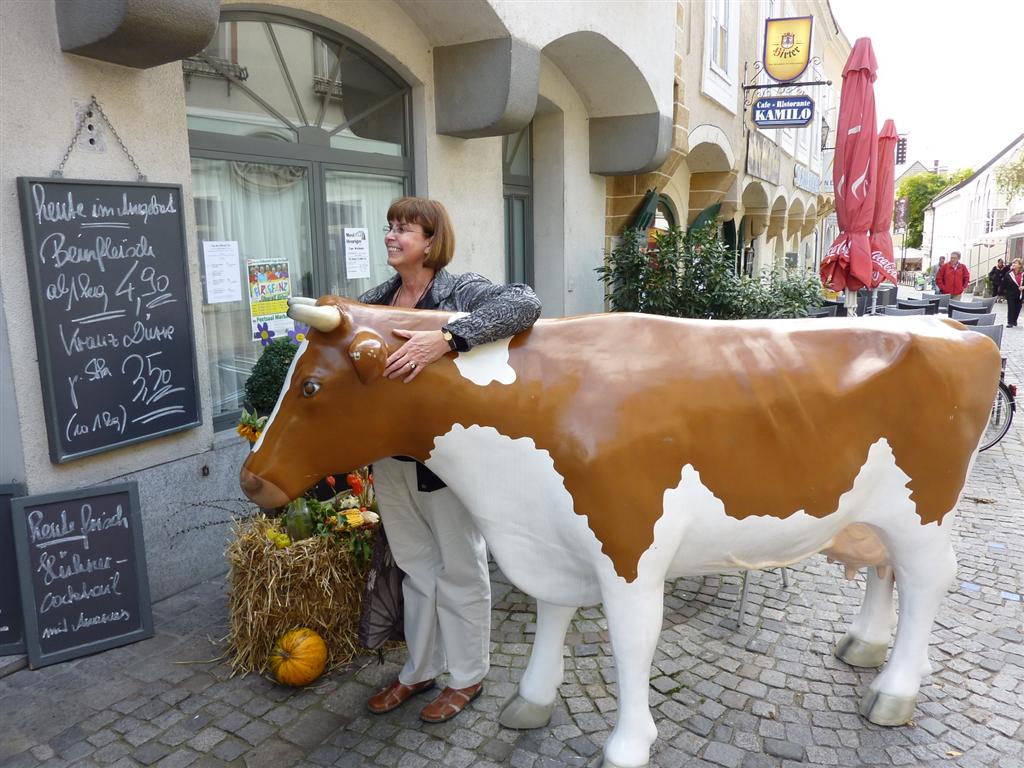
Nancy
and Melk Cow
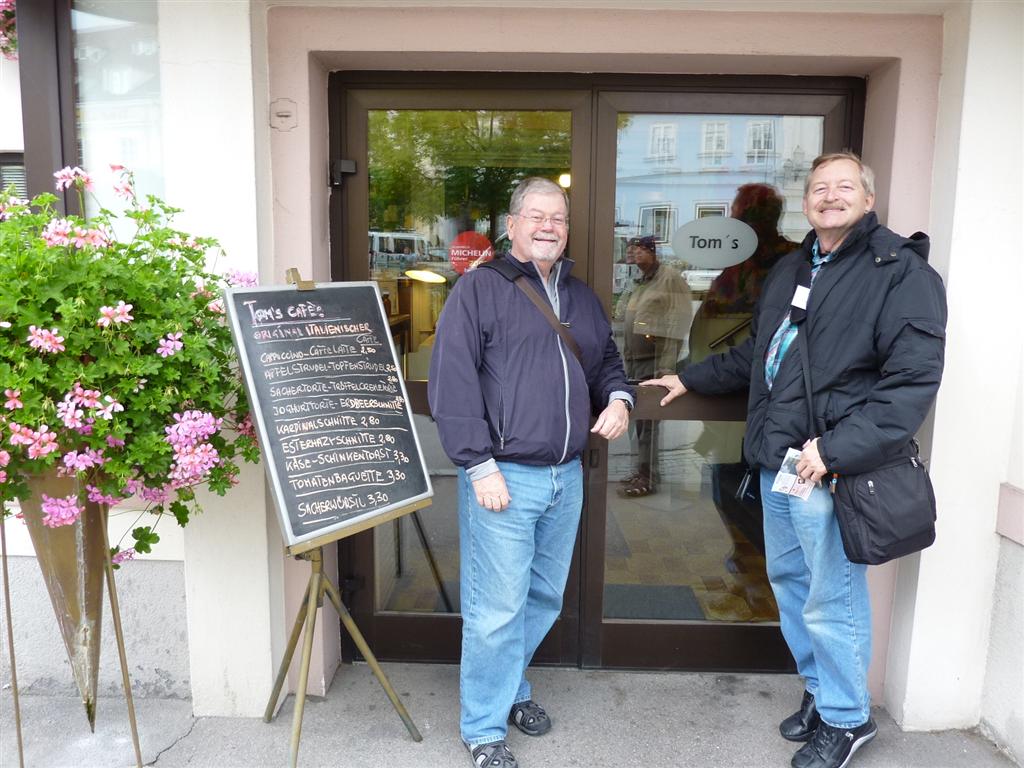
Toms Tom's
By three, we had climbed
the many steps to the monastery and received our tickets so we could
enter the extensive gardens. Located on the hill aside
the town, it provides a beautiful view of the surrounding
countryside and the Danube and Melk rivers. The Monastery
has been in the area for over 900 years following the rules laid
down by St. Benedict. Destroyed and rebuilt numerous times,
the current architecture, dating from the 17th century,
is one of the most important buildings in the baroque style in
Europe. Currently there are 30 monks, 15 living at Melk
and 15 serving in surrounding parishes. They operate a school
of 750 boys and girls from the region.
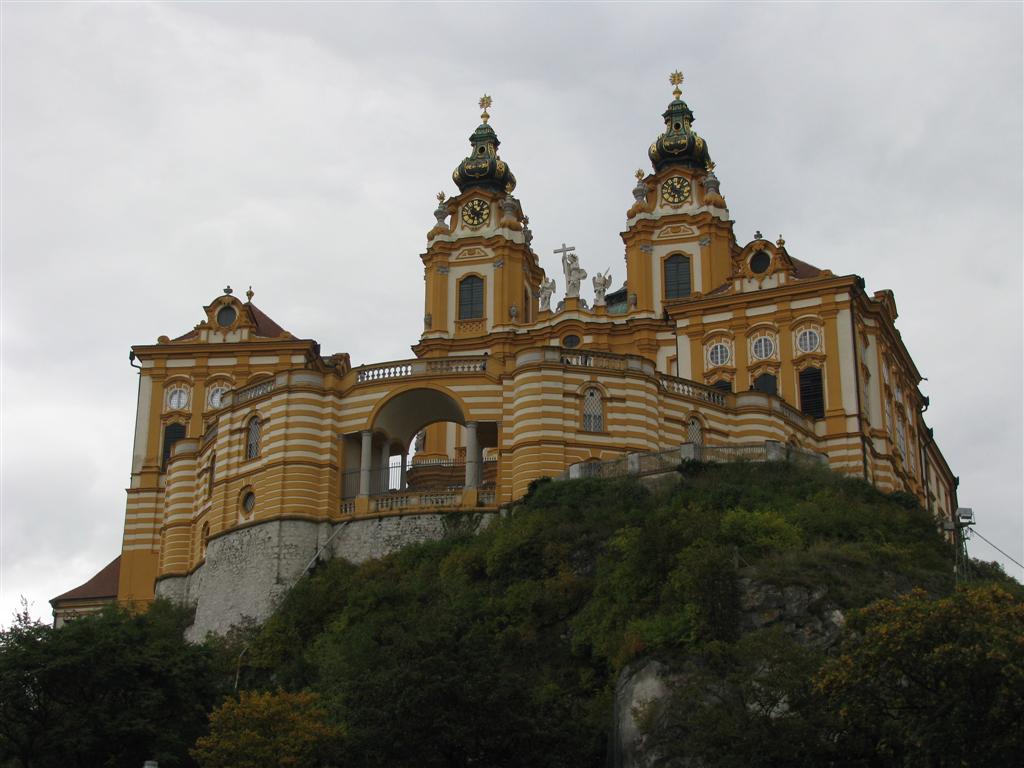
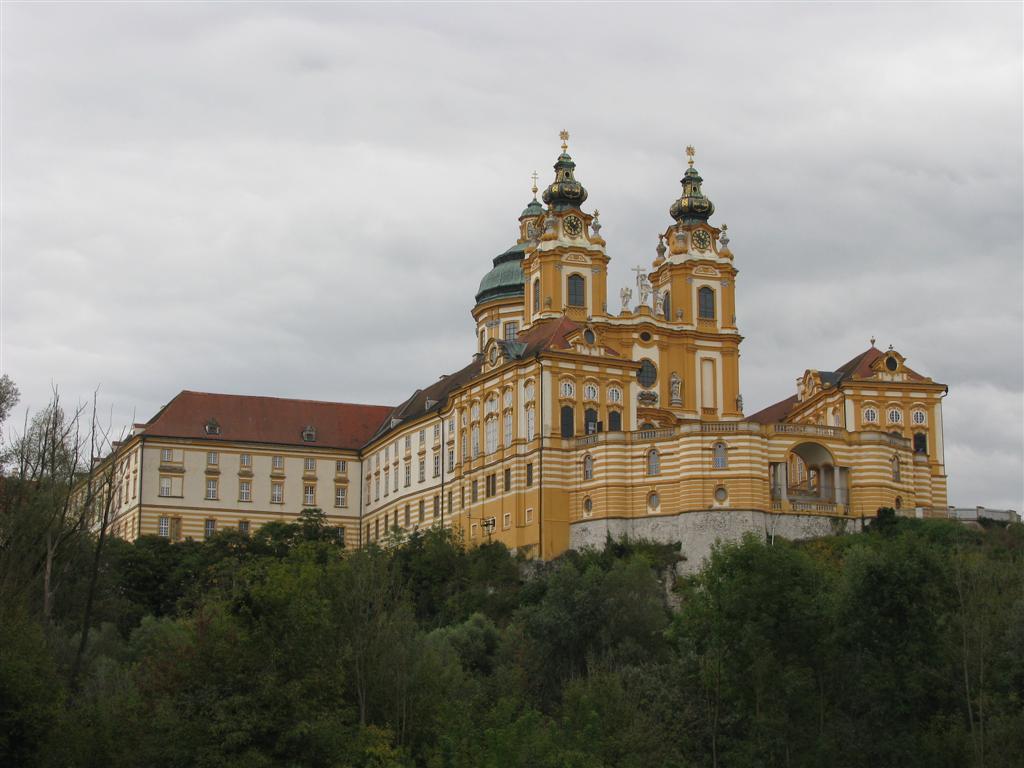
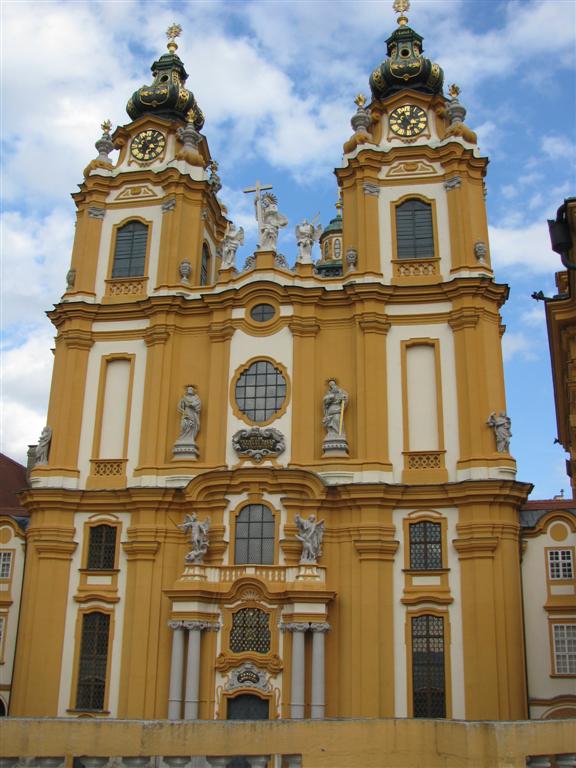
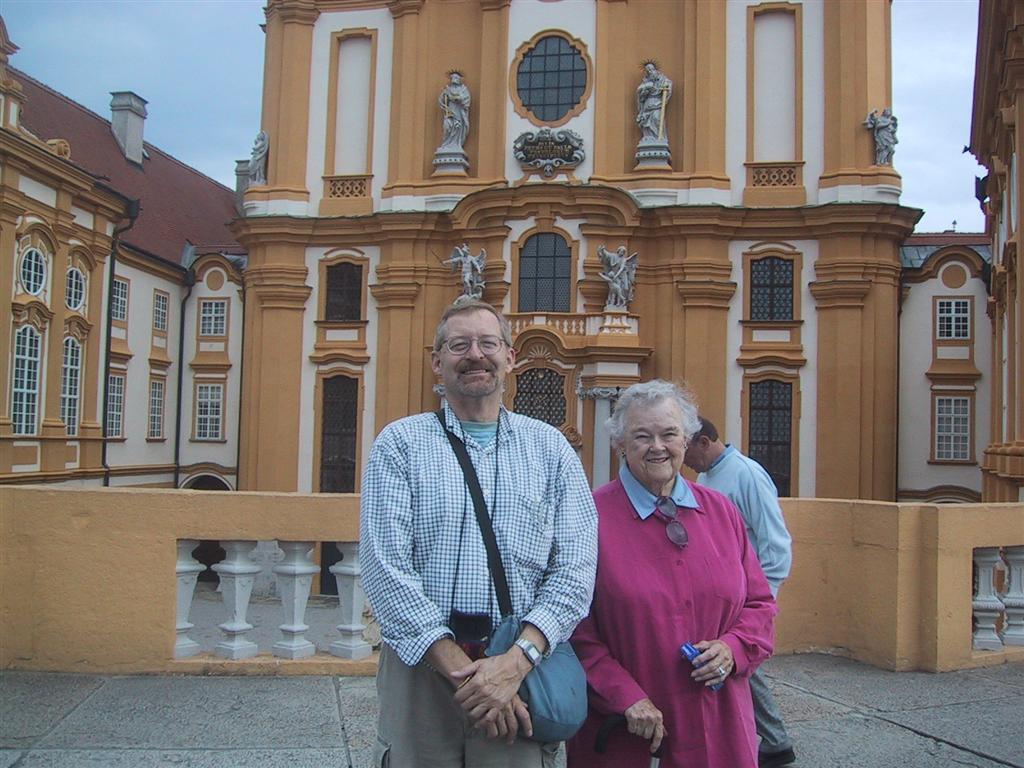 TomD & Martha
TomD & Martha
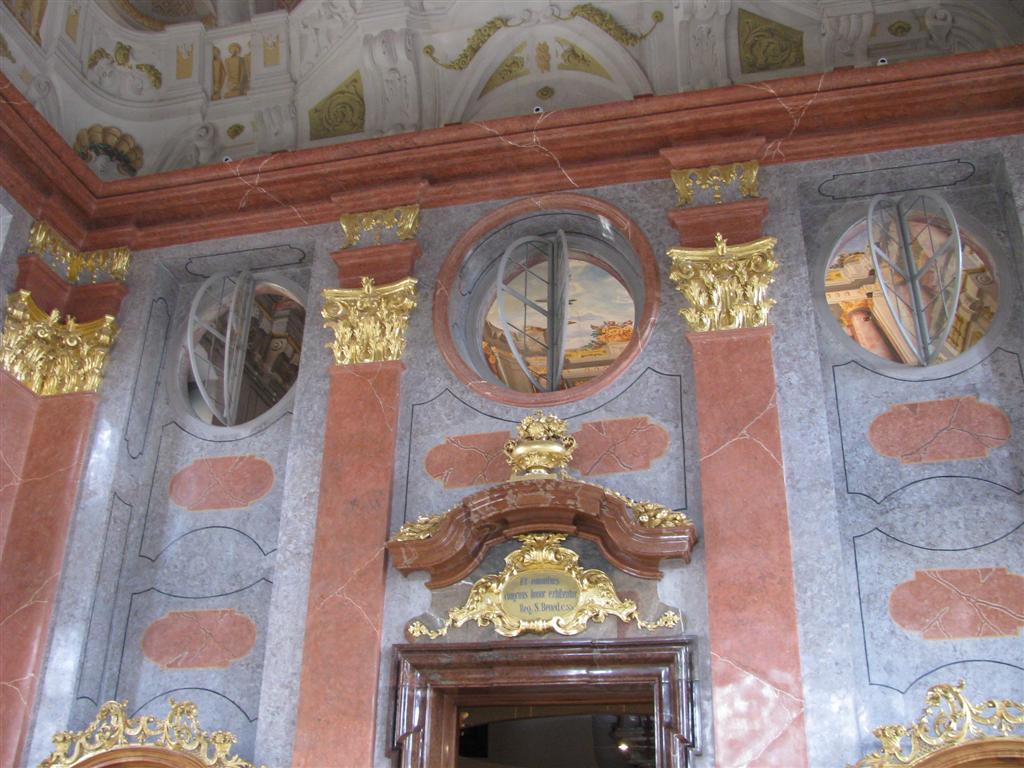
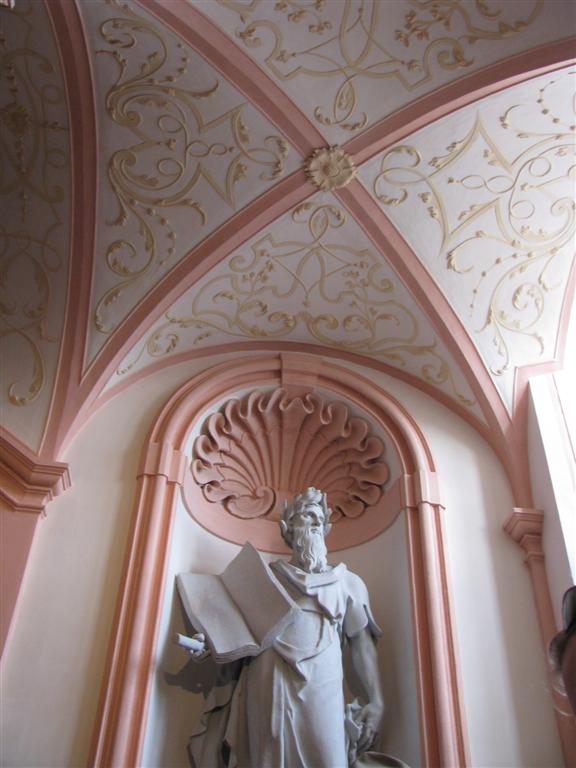
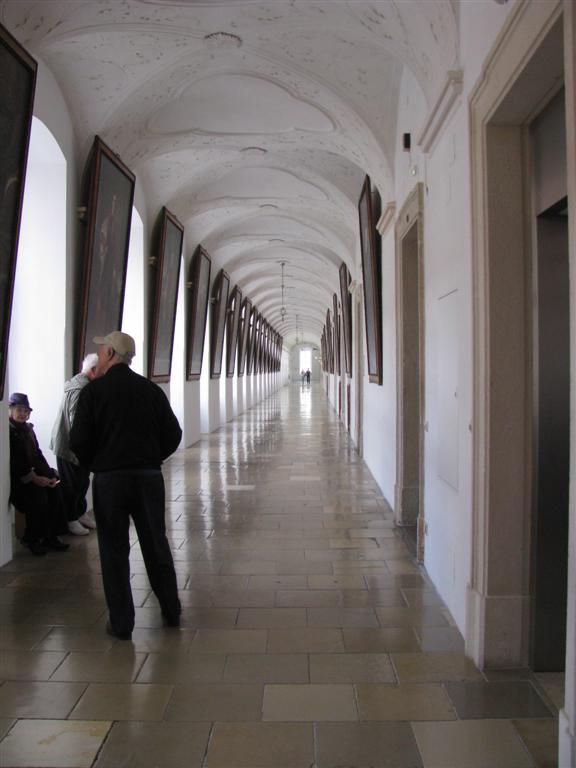
Long Hall
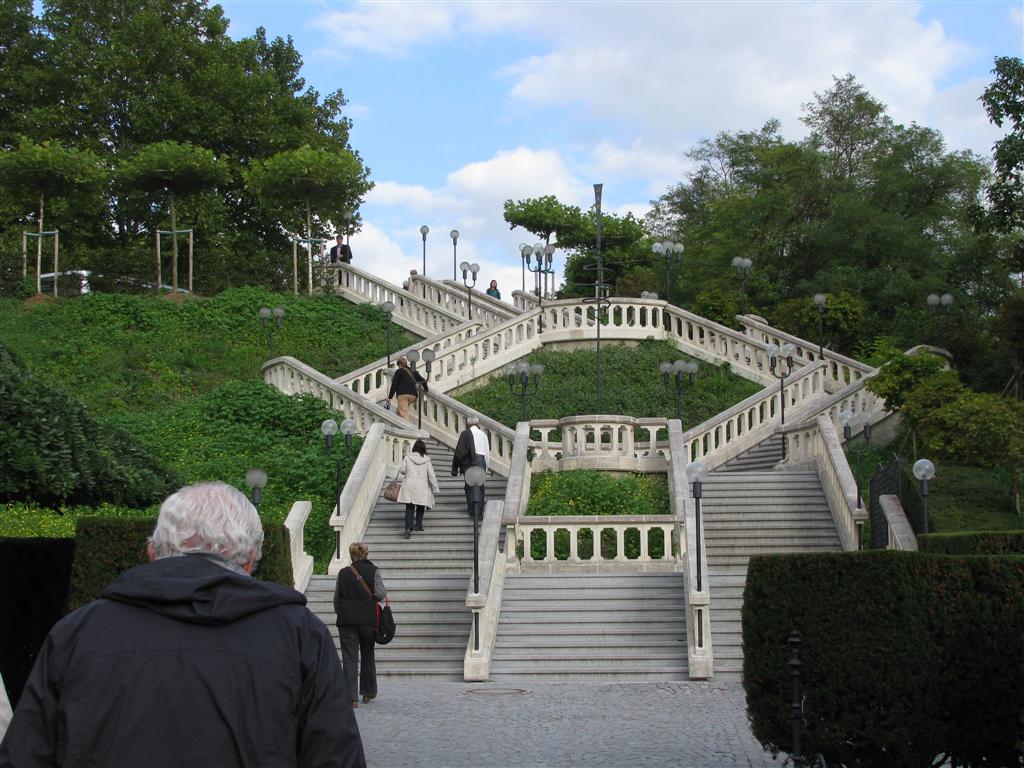
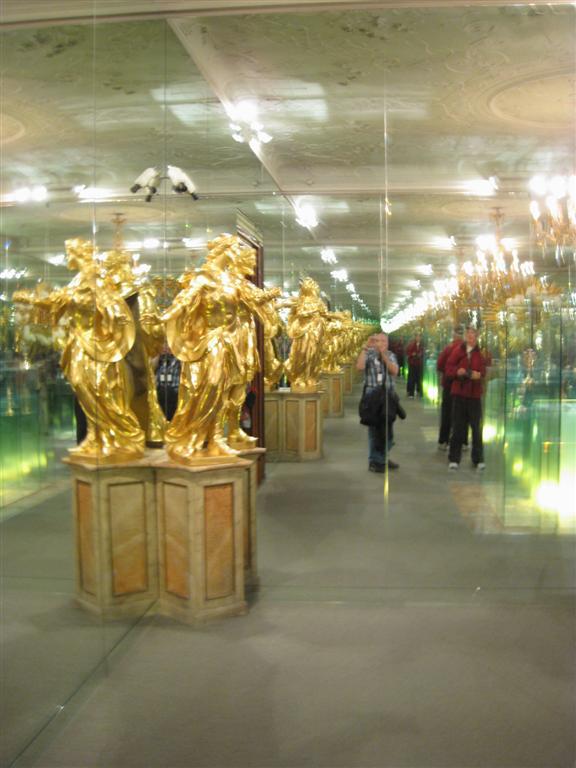
Mirror room
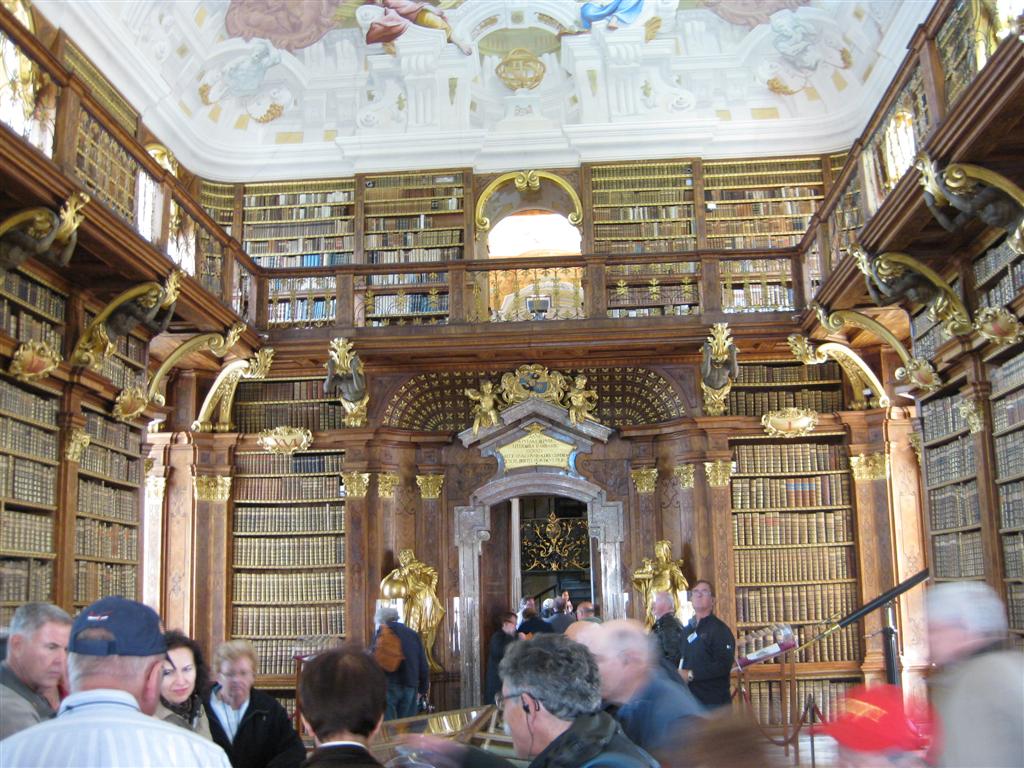
Library
We toured some of the
long corridor and a series of rooms that have an extensive exhibit
of the history and contemporary life of the community. We
ended our tour in the church. The golden statues glisten in
contrast to the frescoes and white stucco. Pictures can hardly
do it justice. Since 1978 there has been extensive renovation
and it is no wonder that it is named as a UNESCO cultural heritage
site.
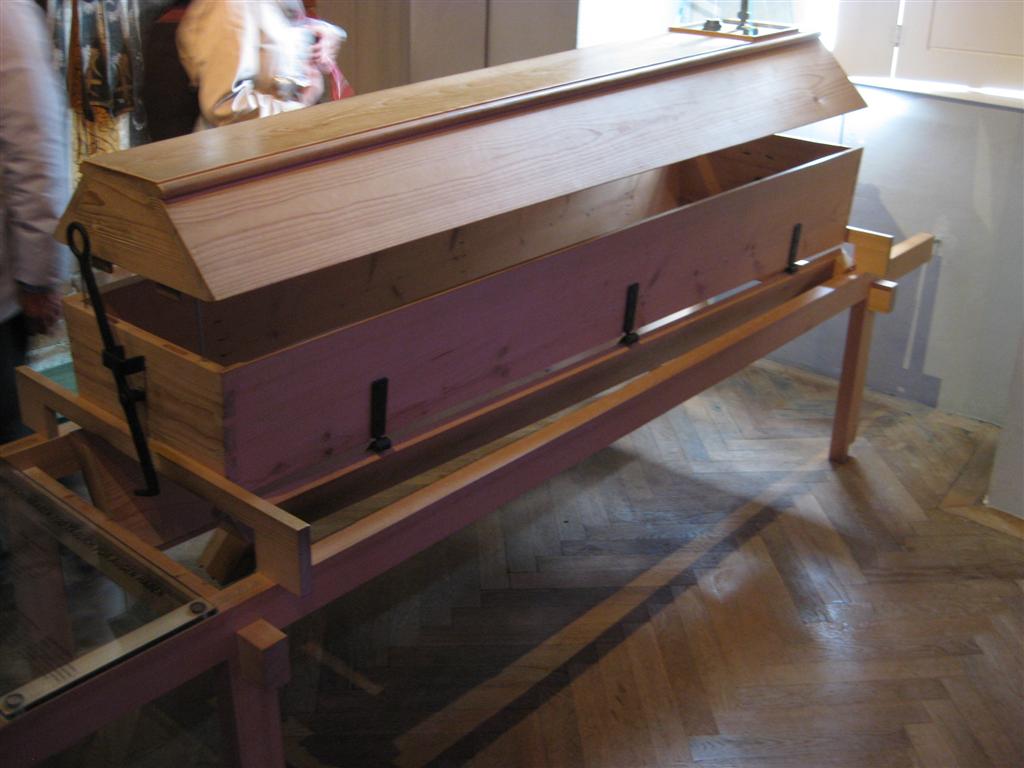
Reusable Coffin (bottom opens up)
More photos from the grounds of the Abbey at Melk:
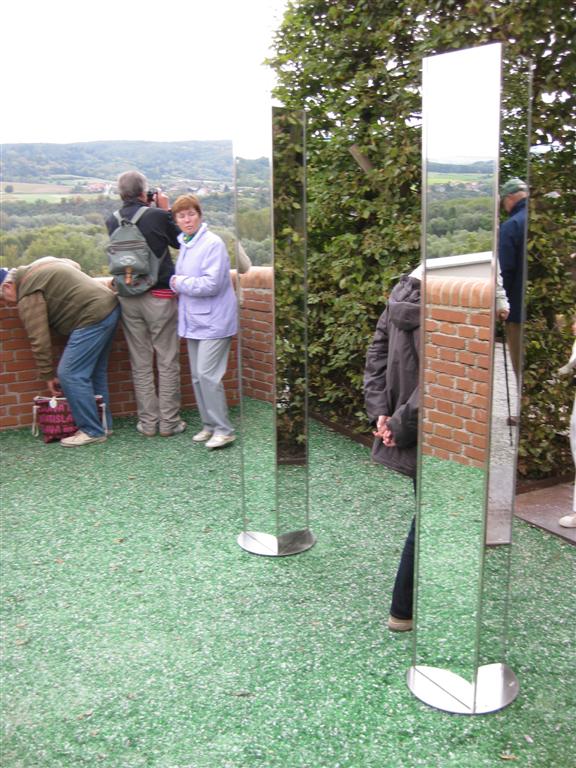
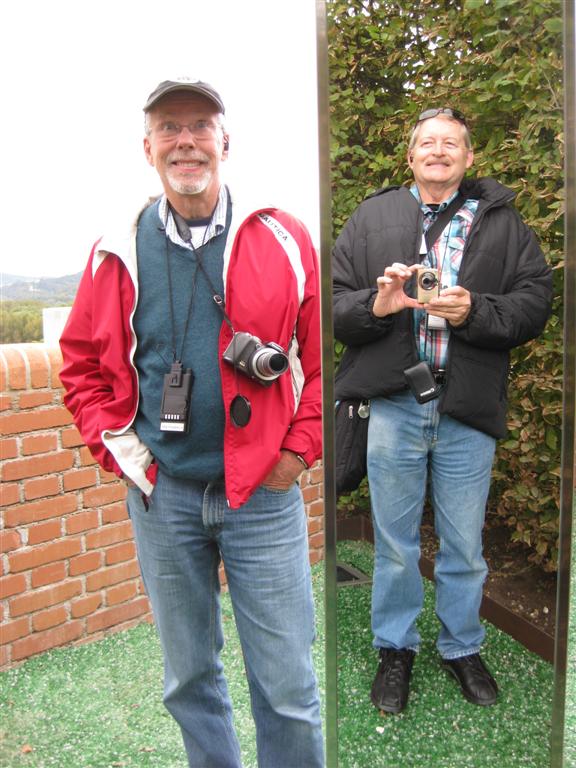
Mirror/glass lawn garden: Carl, TomD
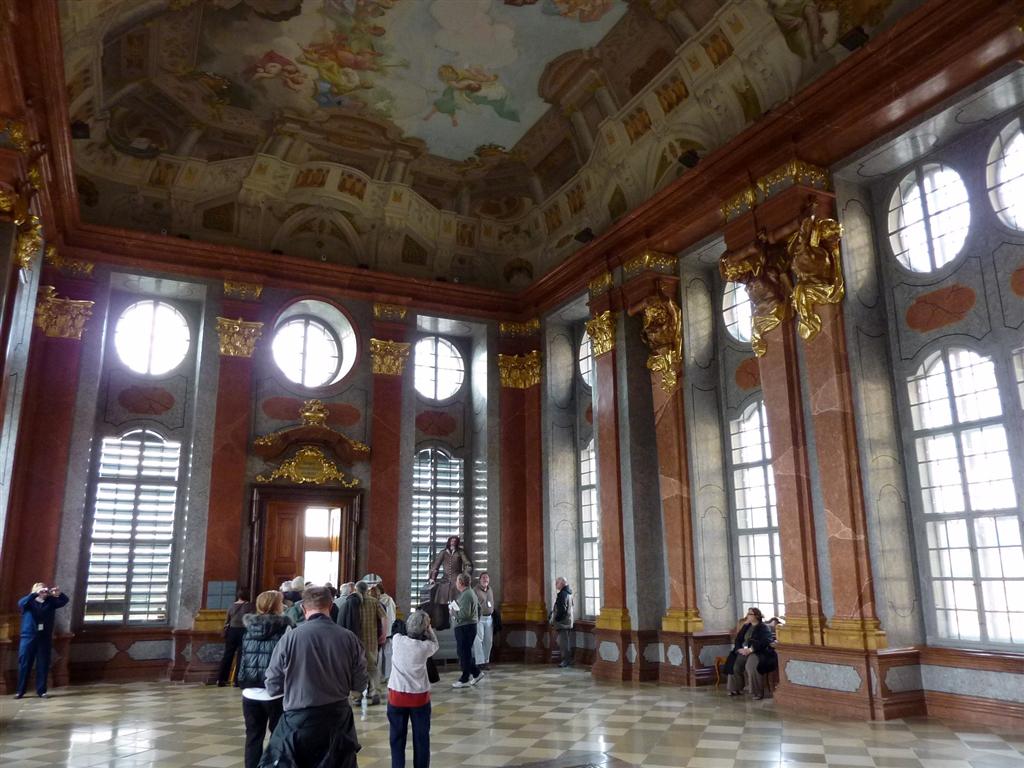
Marble Room
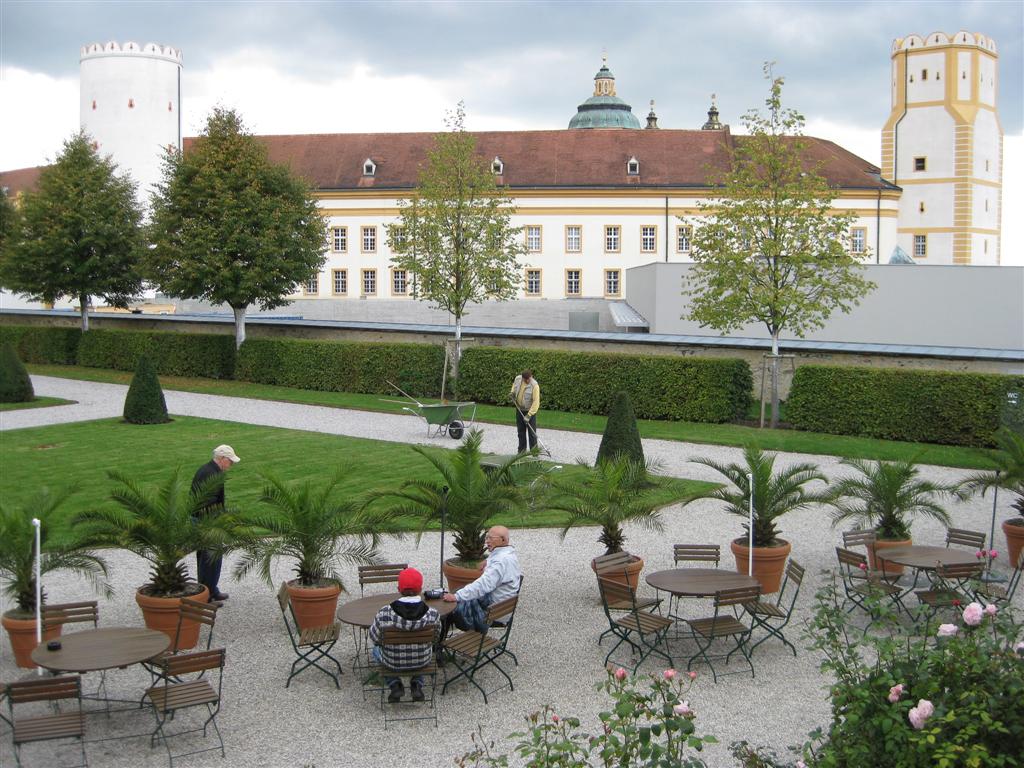
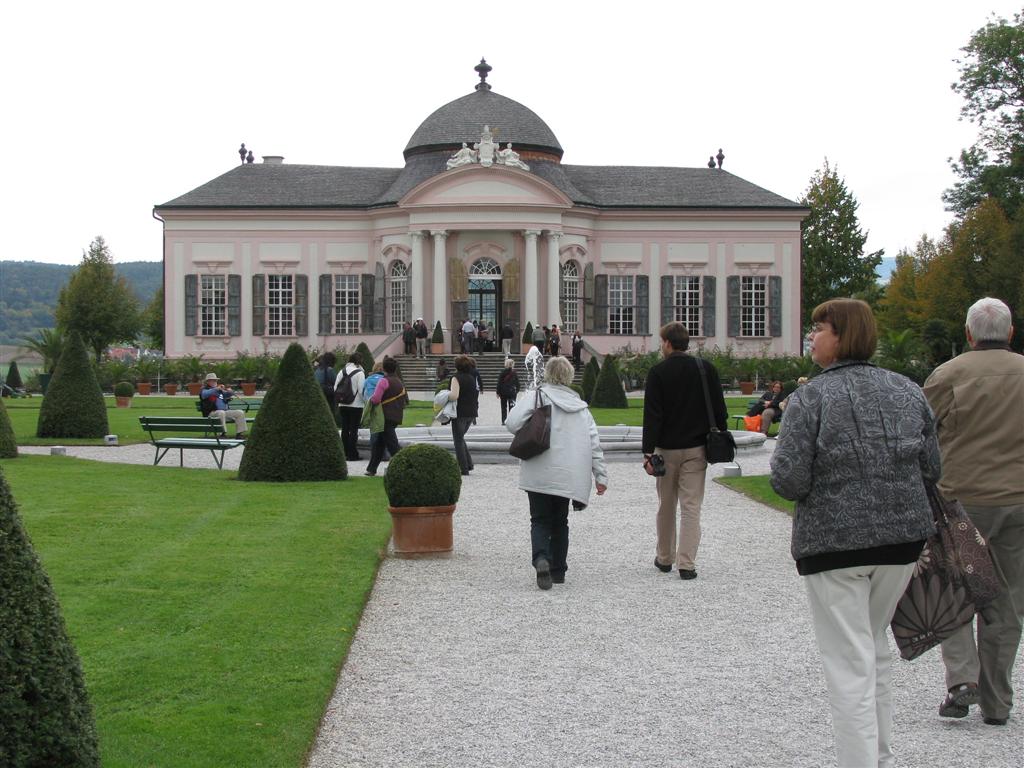
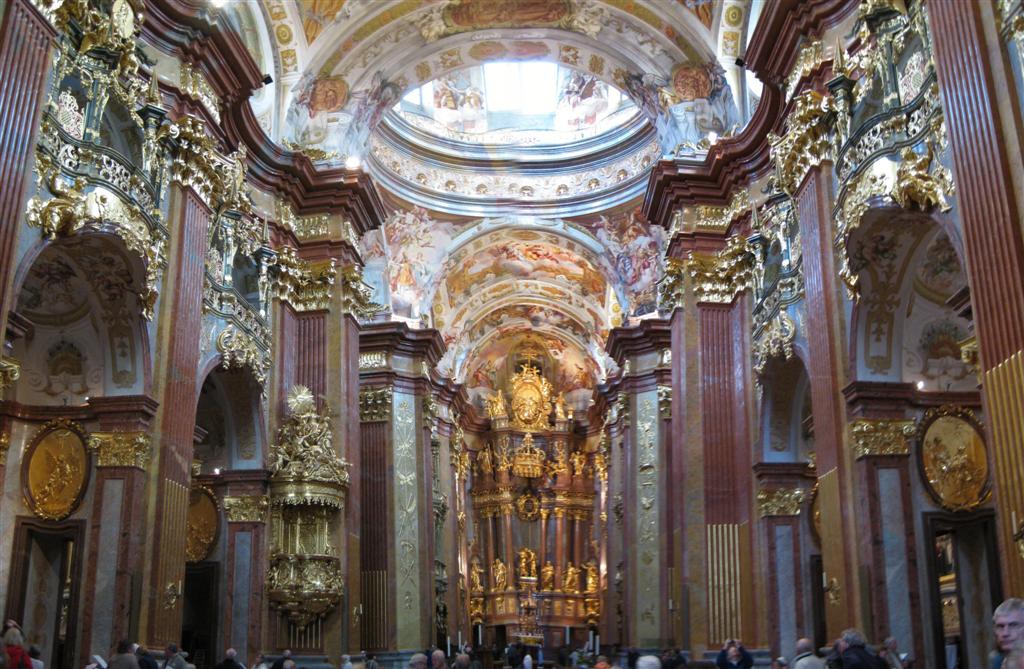
Ornate Church
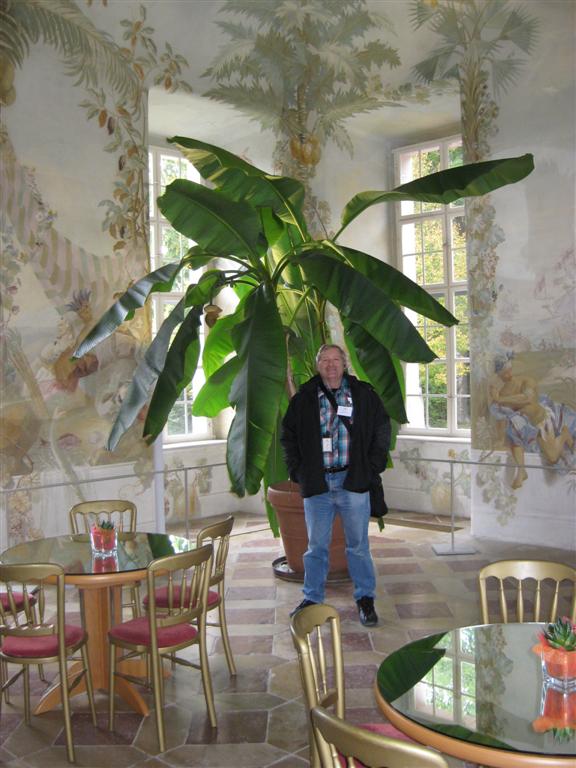
Banana
plant in garden house
Pictures from the Viking Primadonna ship:
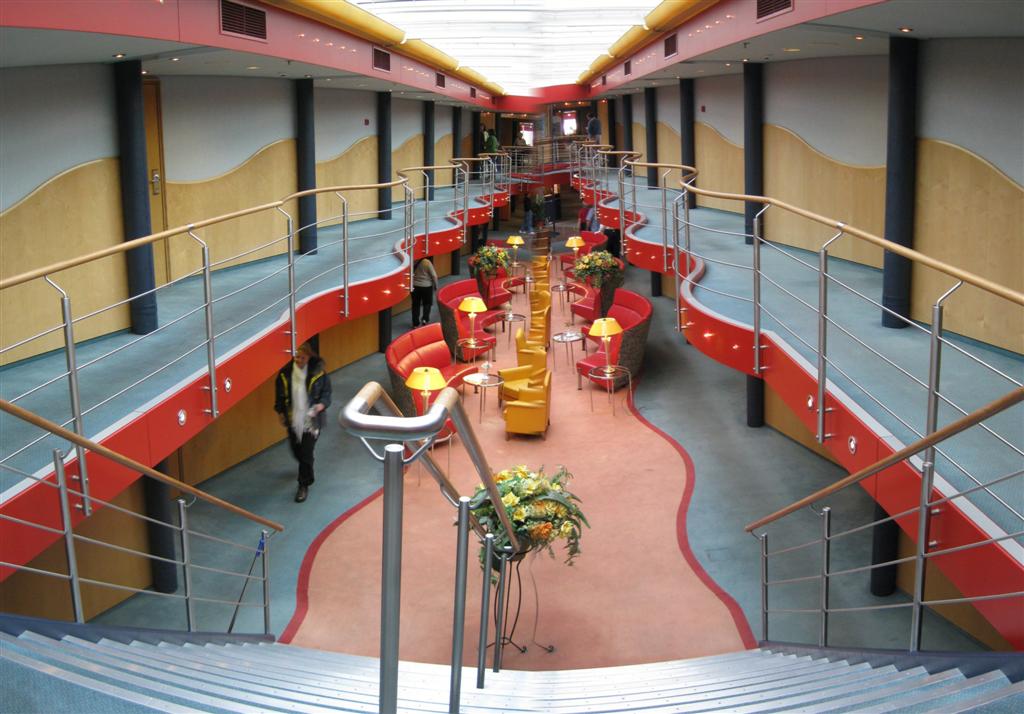
2 story atrium/lobby
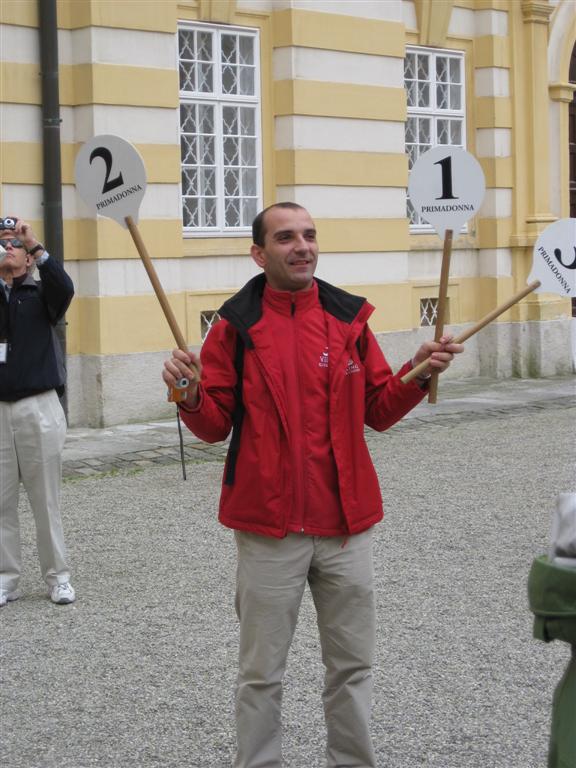 Szabi,
Viking Pgm Dir Szabi,
Viking Pgm Dir
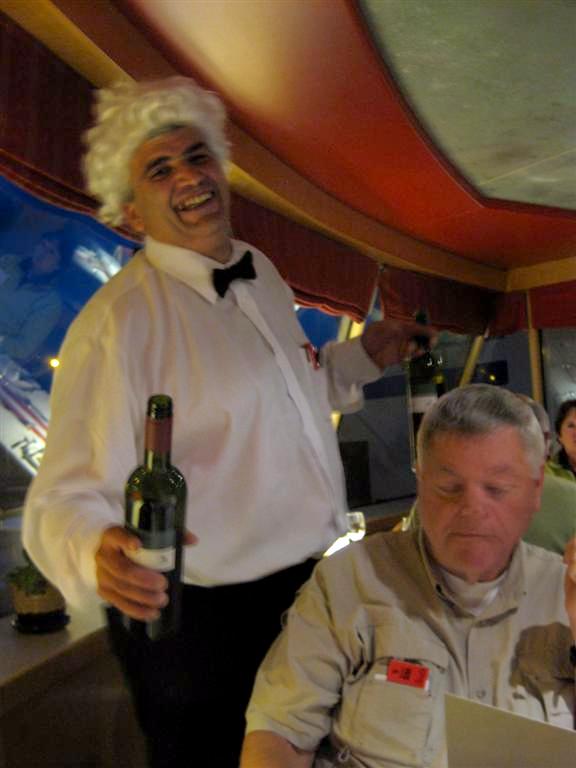
George
(Bulgaria), our waiter
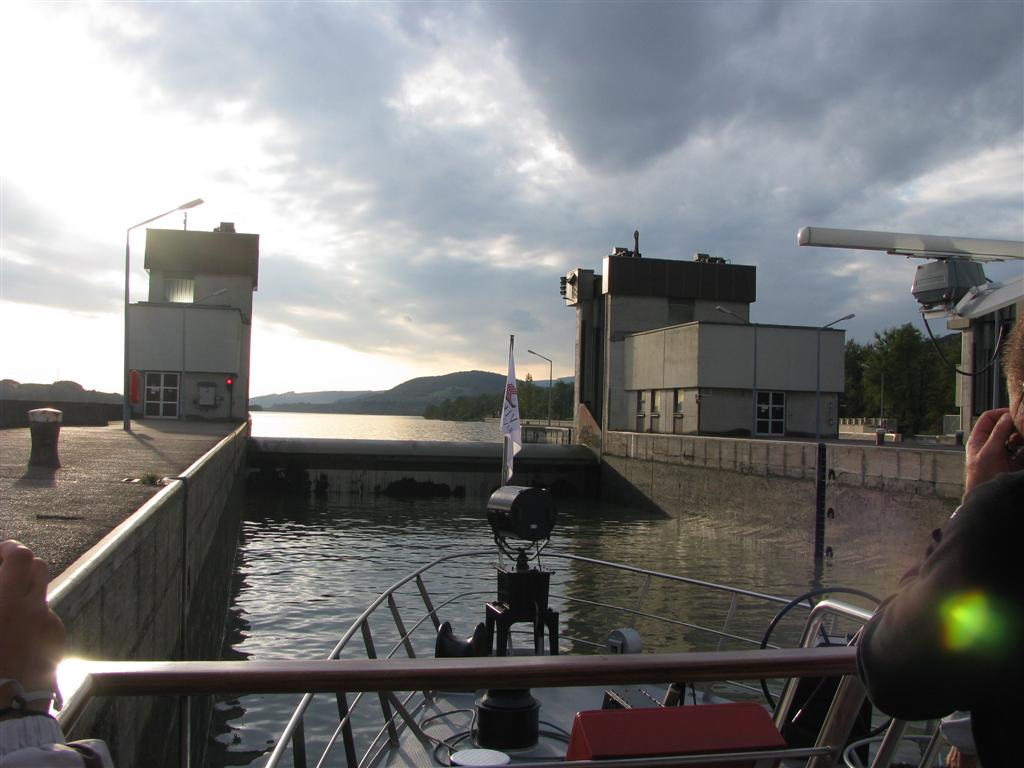
Locks near Melk
|
|
Linz, Austria and
Cesky Krumlov, Czech Republic We
arrived early in the morning in Linz, Austria and were soon ready to
disembark for a daylong trip to the town of Cesky Krumlov (Chesky)
in the Czech Republic. The hour plus drive was very scenic through
beautiful rolling countryside, first Austria then CZ. There were
beautiful very green farms much of which seemed devoted to silage
for cattle, though we saw very few, cows, that is. Most people live
in small villages usually with a prominent church steeple.
As we got off the bus, we all needed to use
the restroom facilities. This presented a problem since there was a
turn-style that required a Czech coin which we didn’t have. Our ever
faithful tour guide, Mercedes, took our Euro coins and exchanged
them for a handful of the necessary ones and we could enter.
Necessities taken care of, we were off with a local tour guide to
tour the small gothic and baroque and renaissance city most of which
has been in place since the 15th century. A UNESCO World Heritage
Site, Cesky Kromlov, whose name refers to a town built along a
meandering river, is a jewel indeed.
We started down the road and passed under
the great arches that linked the parts of the castle that straddled
the river. The double arches were capped by a passageway so that one
could cross over without having to go outside, particularly helpful
during a siege. Our cameras were clicking as we passed one
breathtaking site after the other. Every turn was a Cezanne painting
made especially colorful with the yellow and red leaves. Many of the
buildings looked to be of blocks or stone. Most all of it is a tromp
d’oeil, painted on a flat surface to look that way.
We walked through and around the town with
our guide making suggestions for lunch which was on our own for the
only time on the cruise. We walked up the steps and inclines to the
top of the castle for the magnificent view before settling in on a
place for lunch. On the way we crossed the dry moat and saw that
they had some bears in it.
We decided on The Two Marys which served
food from medieval times. Some of us had a sampler plate and since
we sat outside, the waiter got up on a stool as the food was passed
out the window. Since Tom D’s meal was a vegetarian sampler, they
included poor man’s Christmas dinner portions of barley and oats, I
think. There was millet fixed two ways, and for the meat eaters,
ham, chicken and potatoes. Everything was very tasty, but the place
was rustic and one wouldn’t have been too surprised if they had
scraped the plates in the river and rinsed them off.
Some on the tour spun off for a brewery
tour, but we all decided to spend the remainder of the time in this
town. I had made a bank withdrawal so that I could have coins for my
collection and the smallest amount I could get was 1,000 crowns. I
had to finish spending them, so we went into a café to warm up and
have coffee and for some, a dessert. The Czech Republic is a member
of the EU, but hasn’t yet met the requirements to use the Euro. (And
they thought Greece had???, one of our guides said.)
After the journey back which resulted in
some serious napping, we were ready for the Captain’s farewell
dinner. The dinner was special with a march of the baked Alaska
which we hoped wouldn’t burn the place down, and the introduction of
the 44 members of the crew who had taken care of us. A fun day!
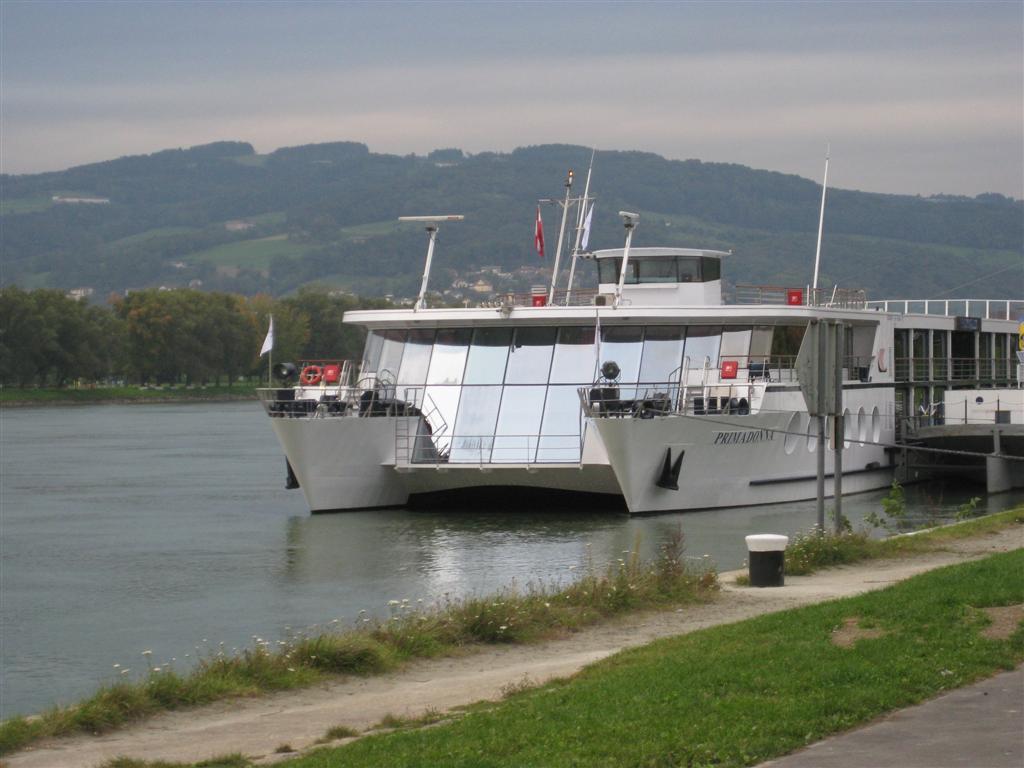
Viking Primadonna
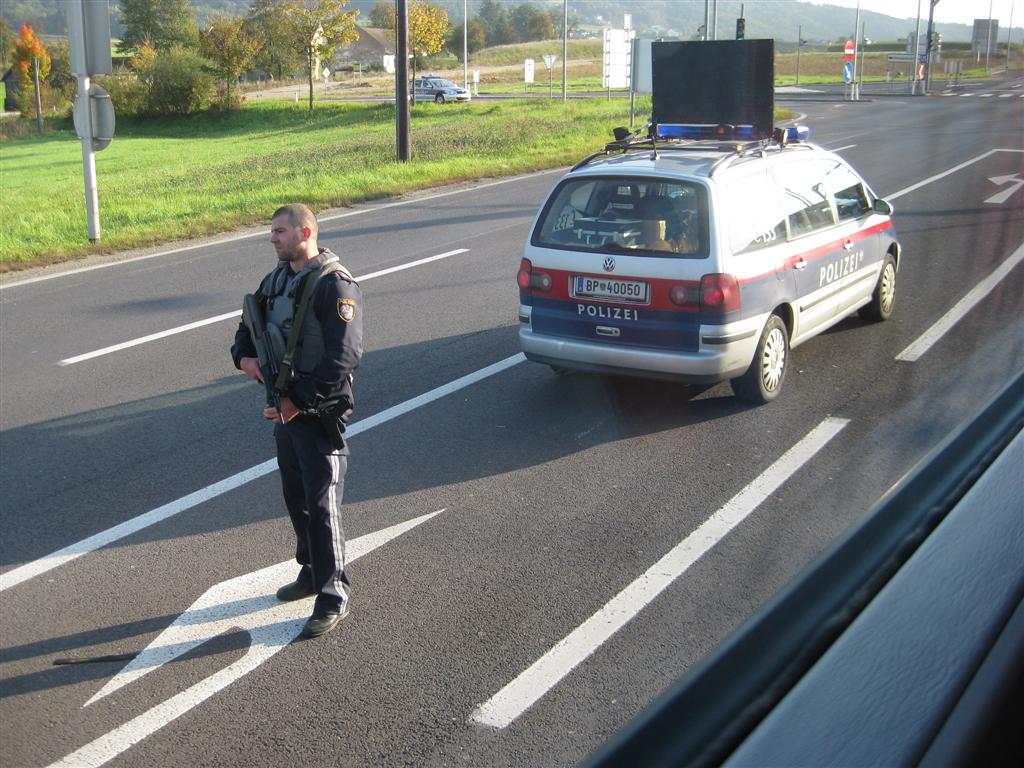
Police check point
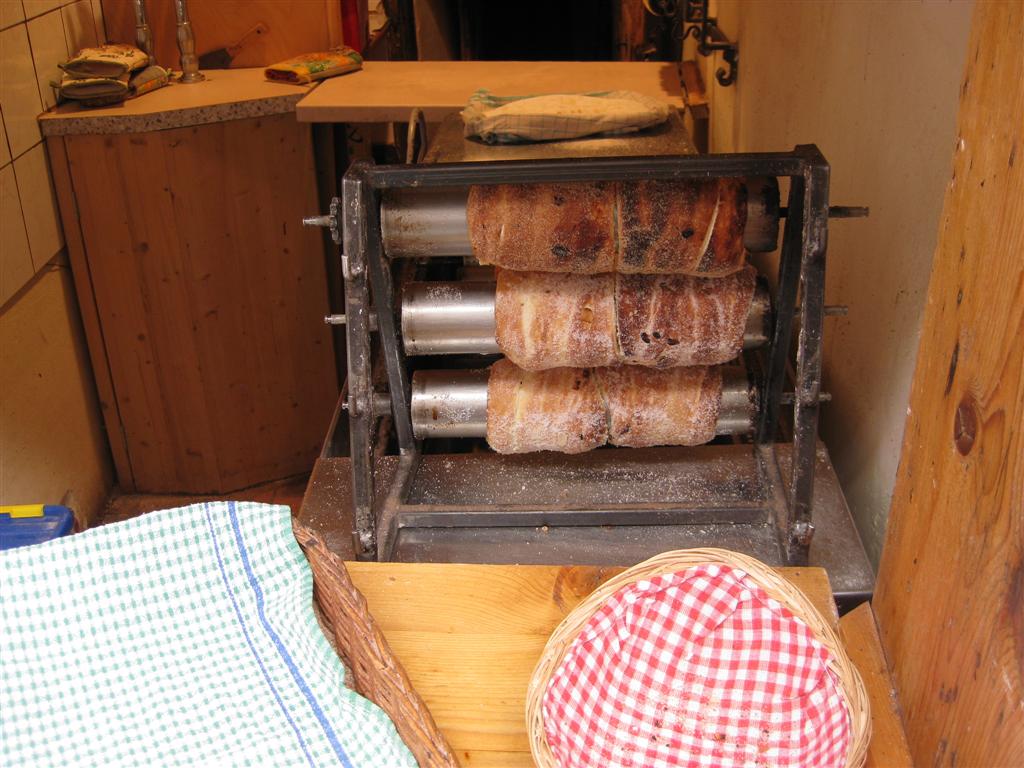
Chesky special pastry
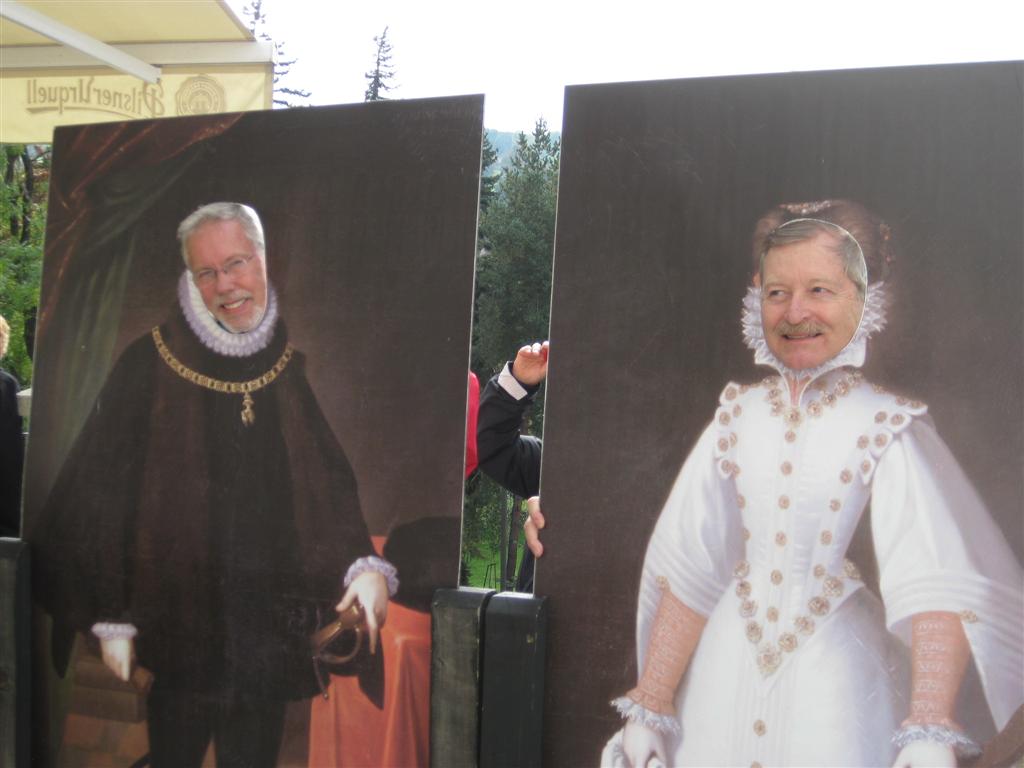
Carl, Tom
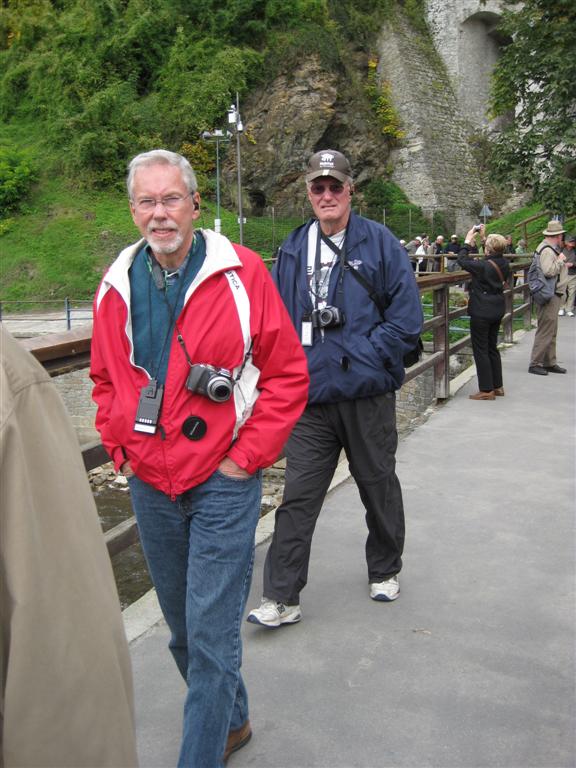
Carl, Rod
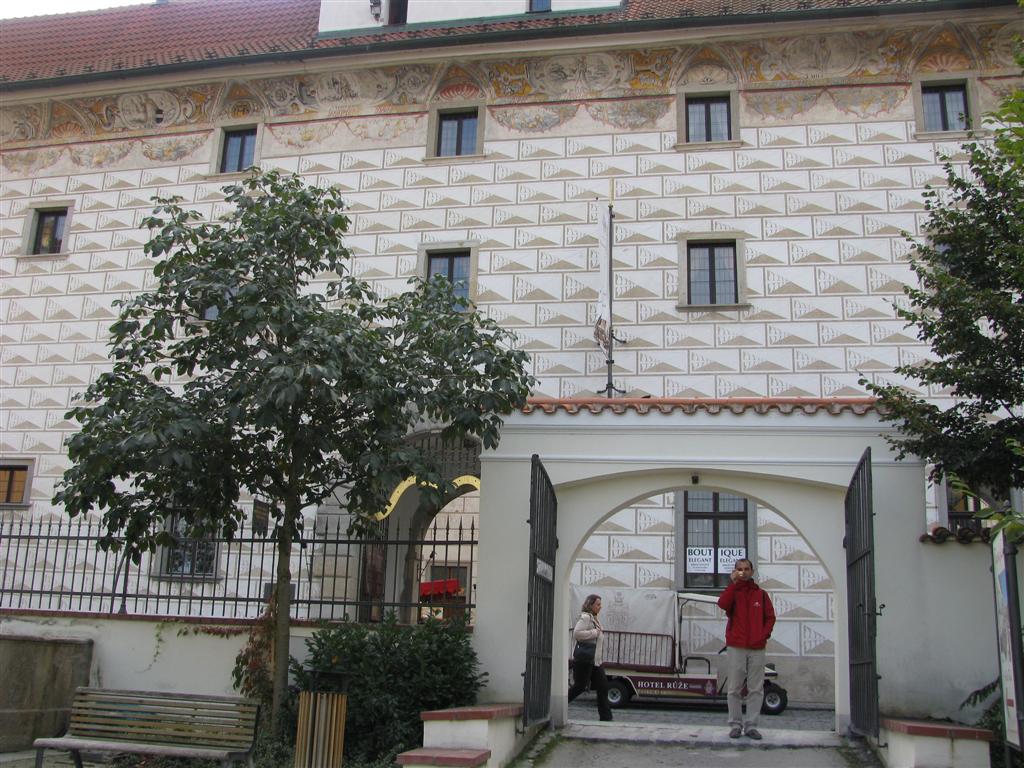
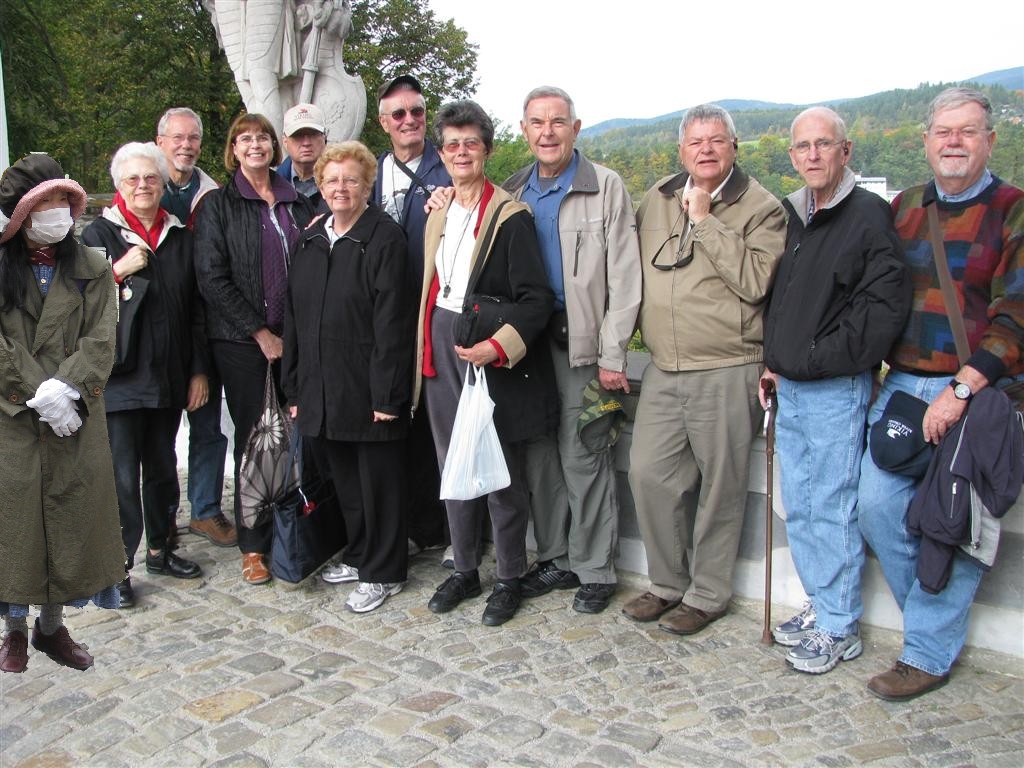
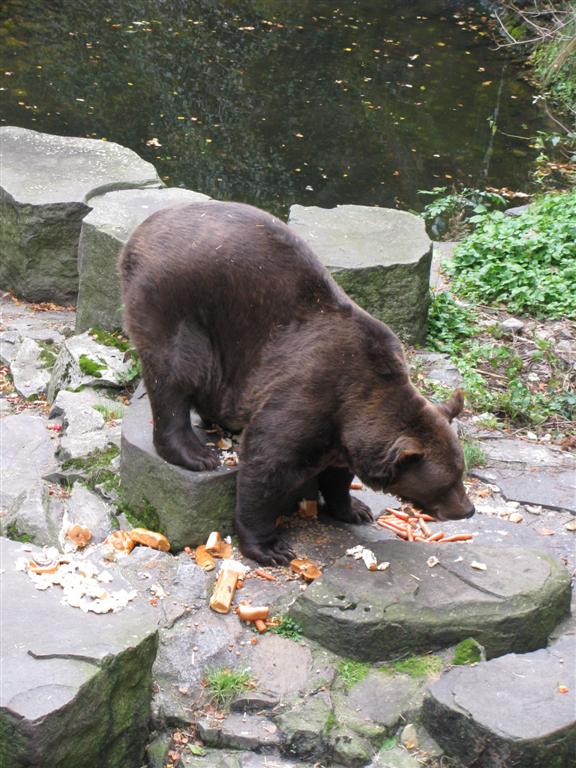
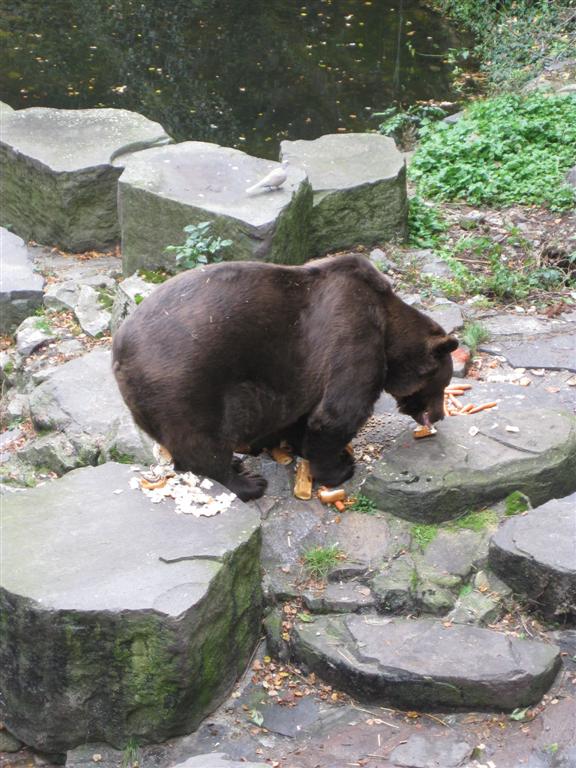 bear in castle moat
bear in castle moat
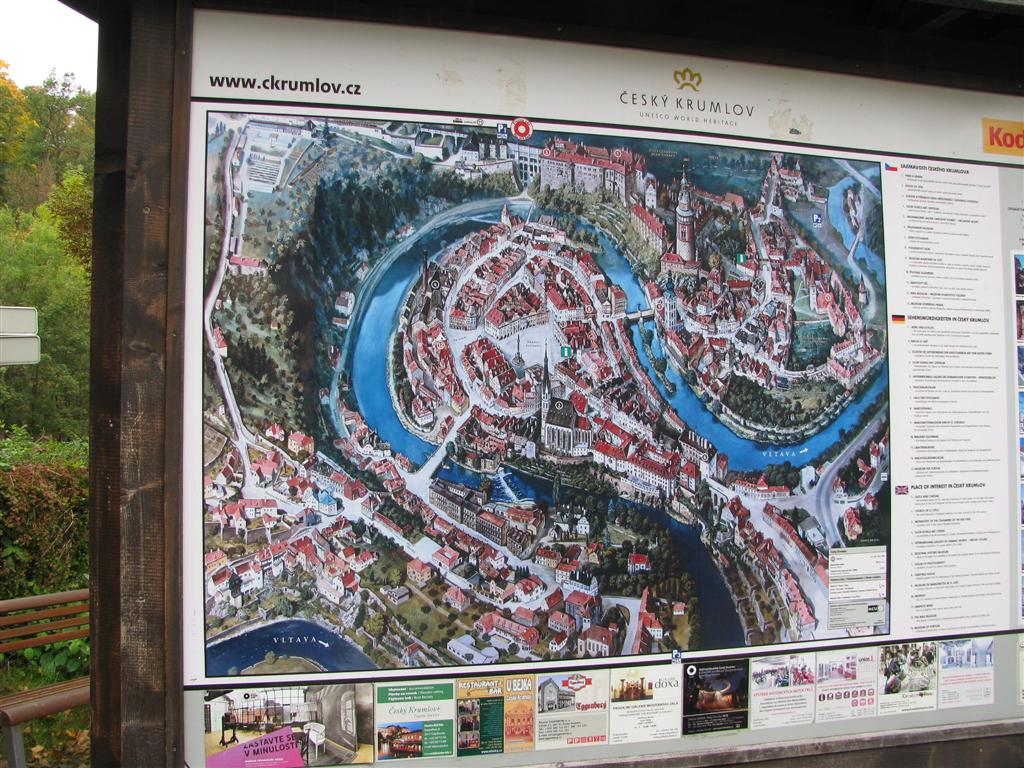

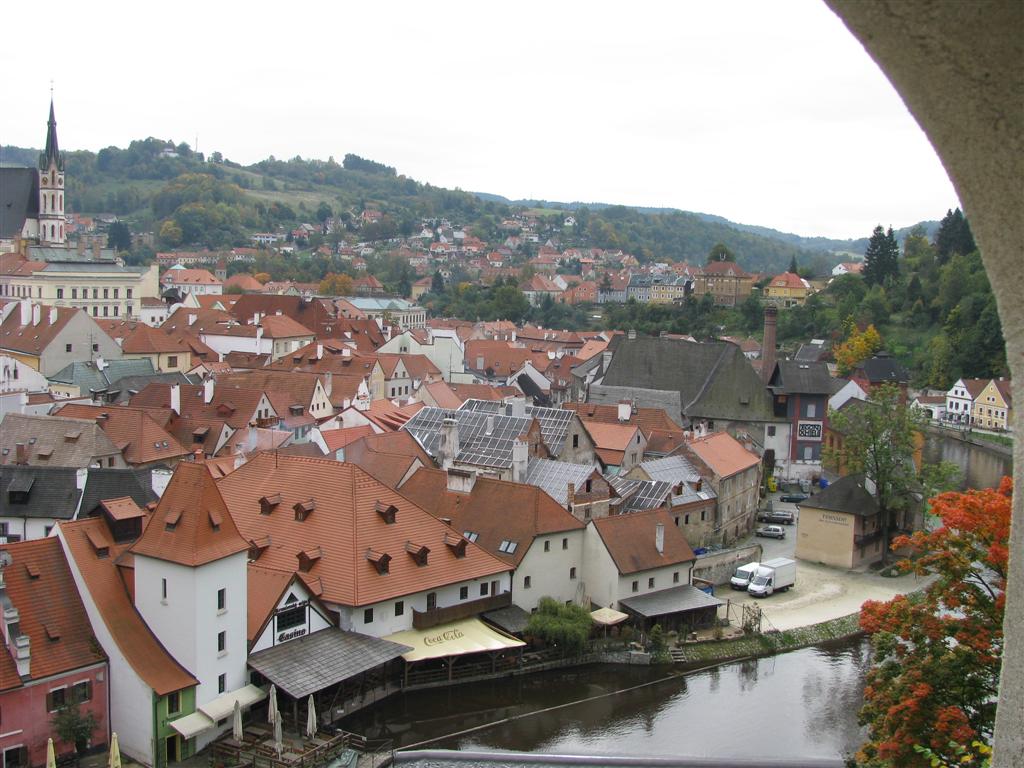
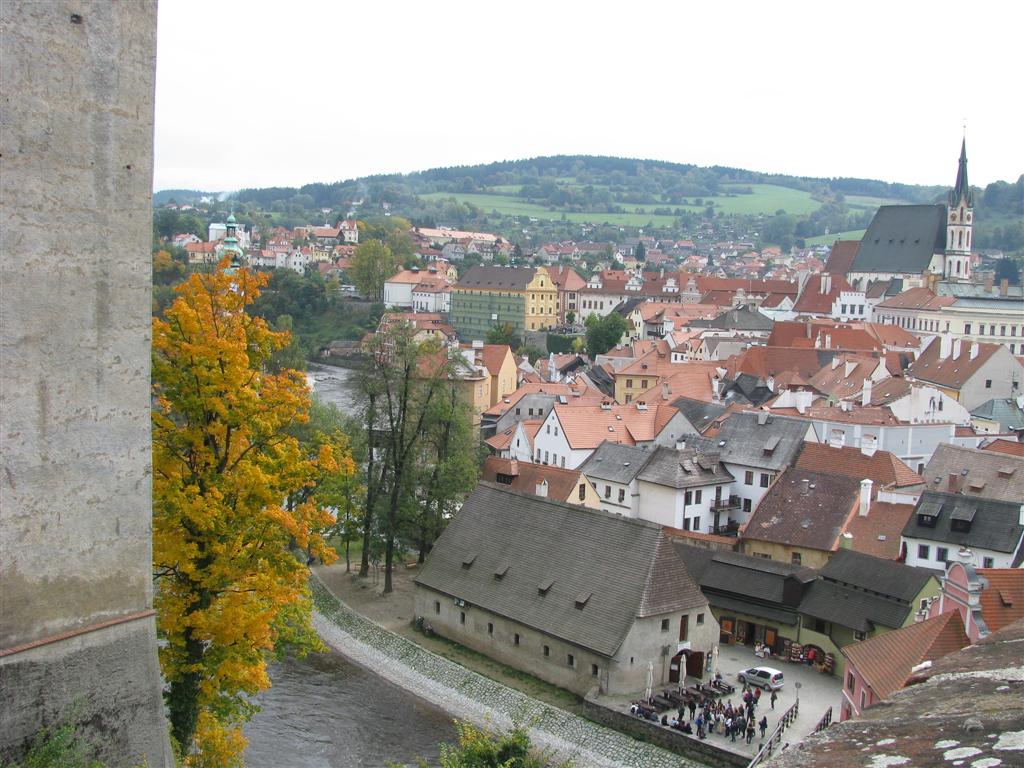
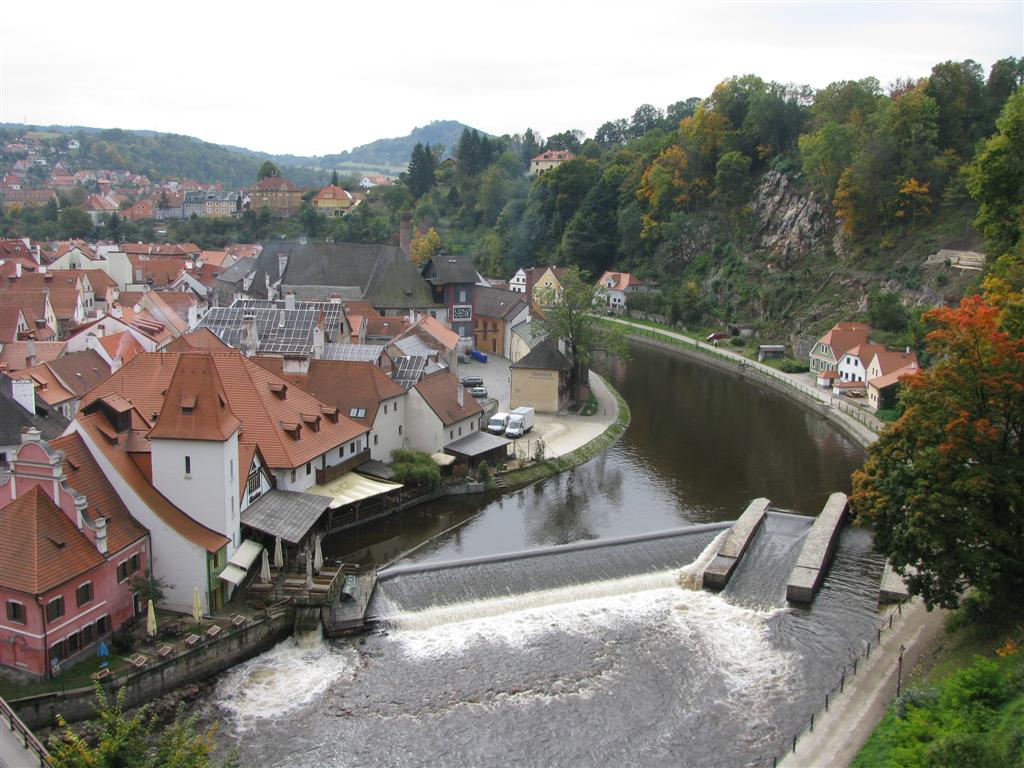
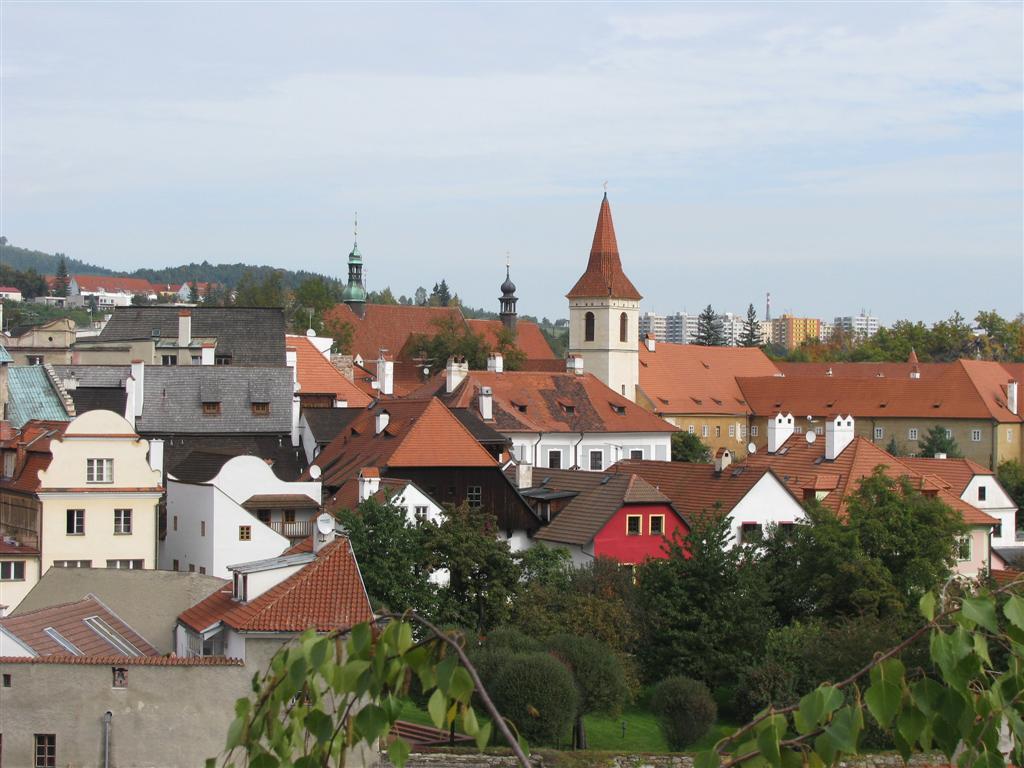
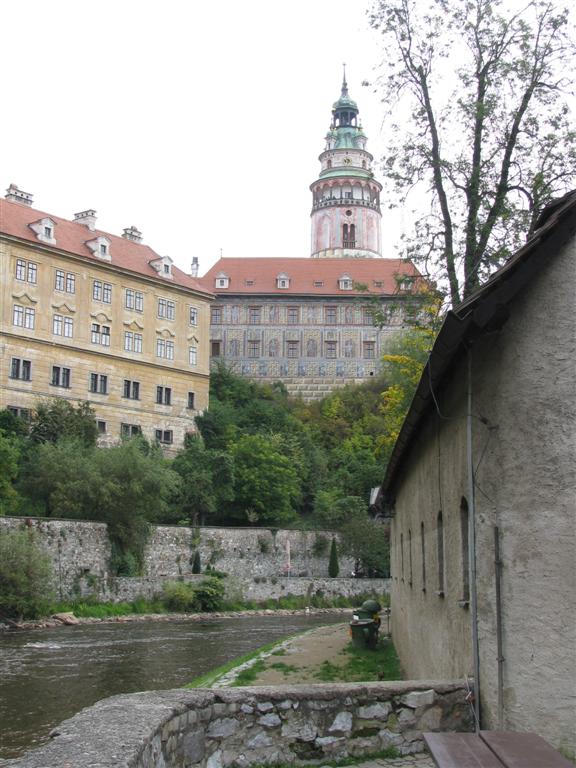
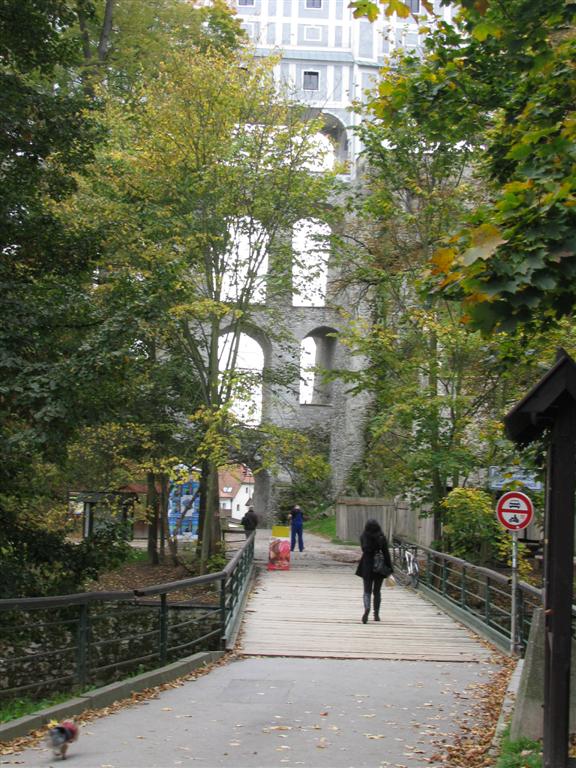
Lunch and dessert:
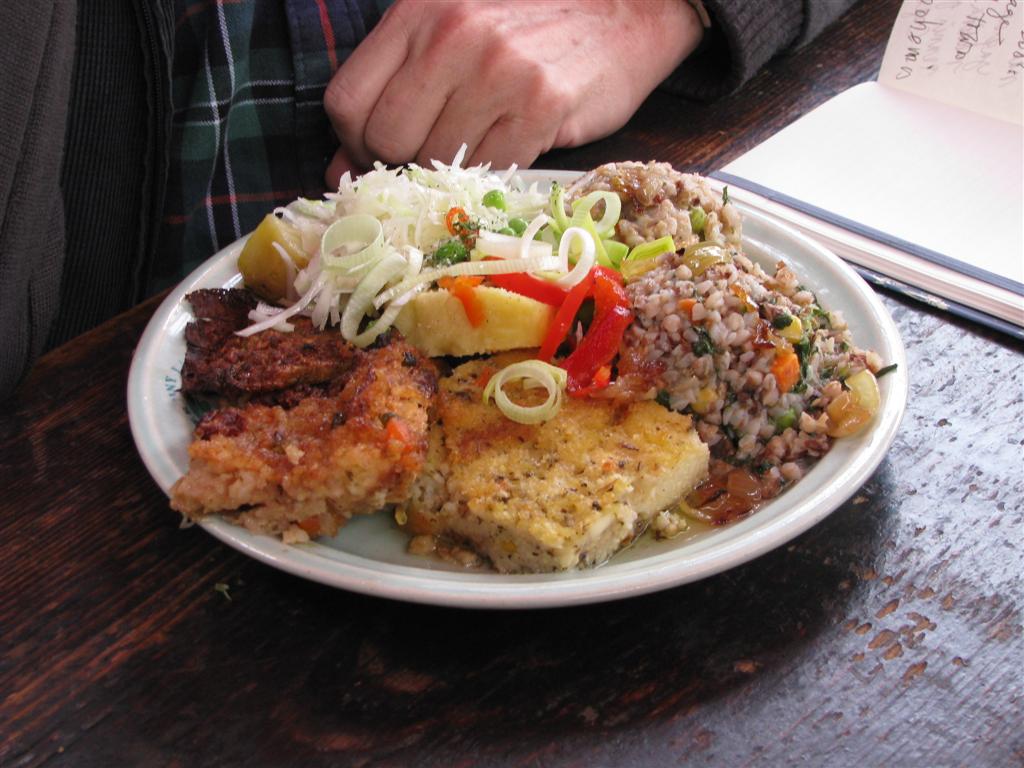
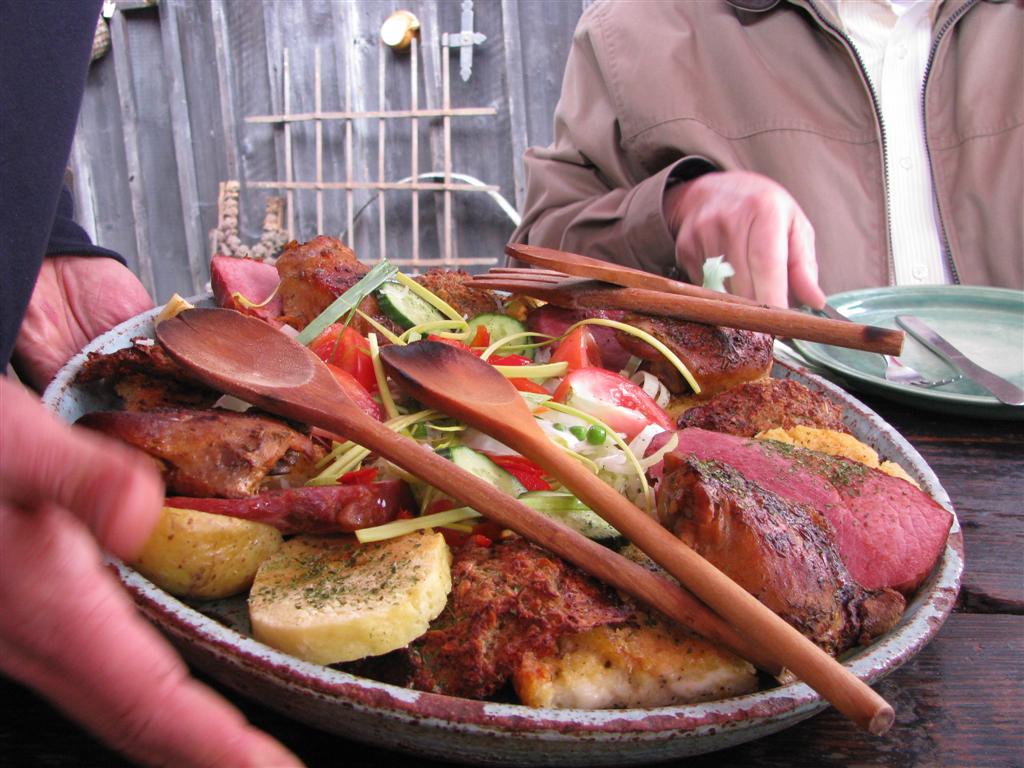
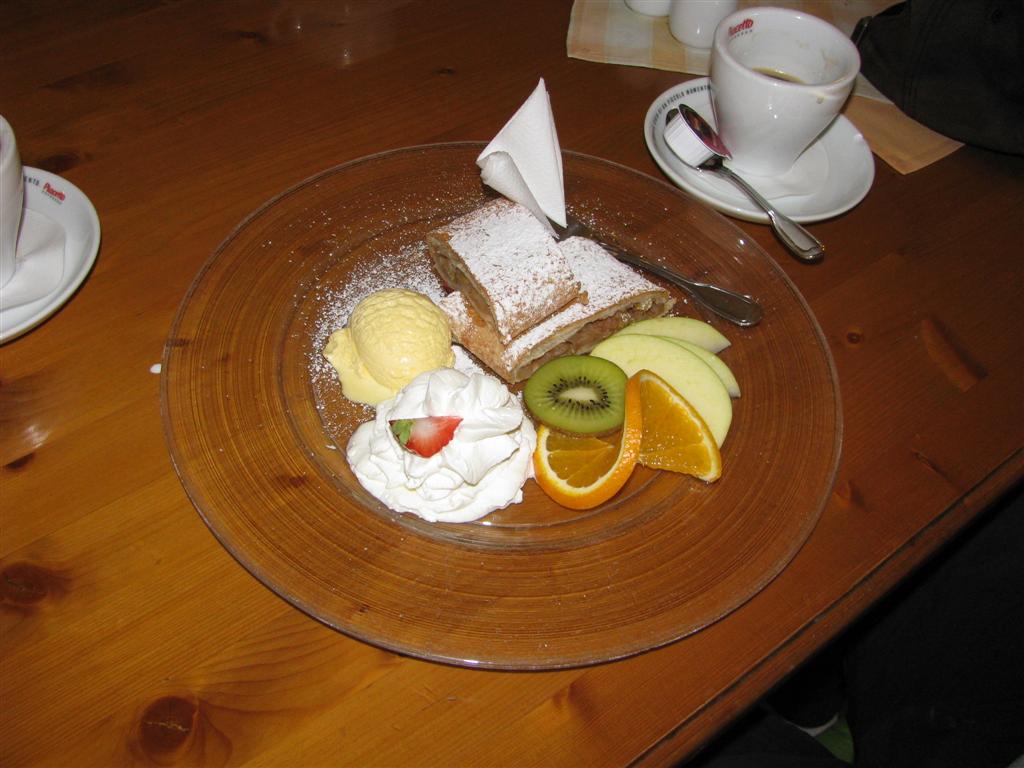
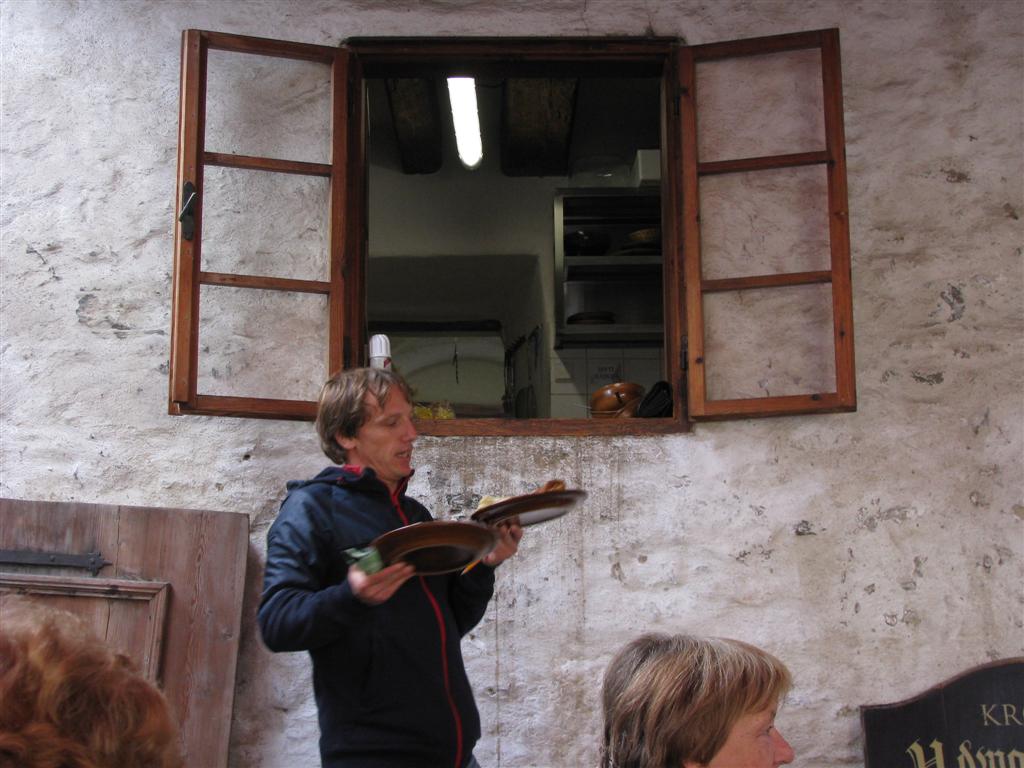
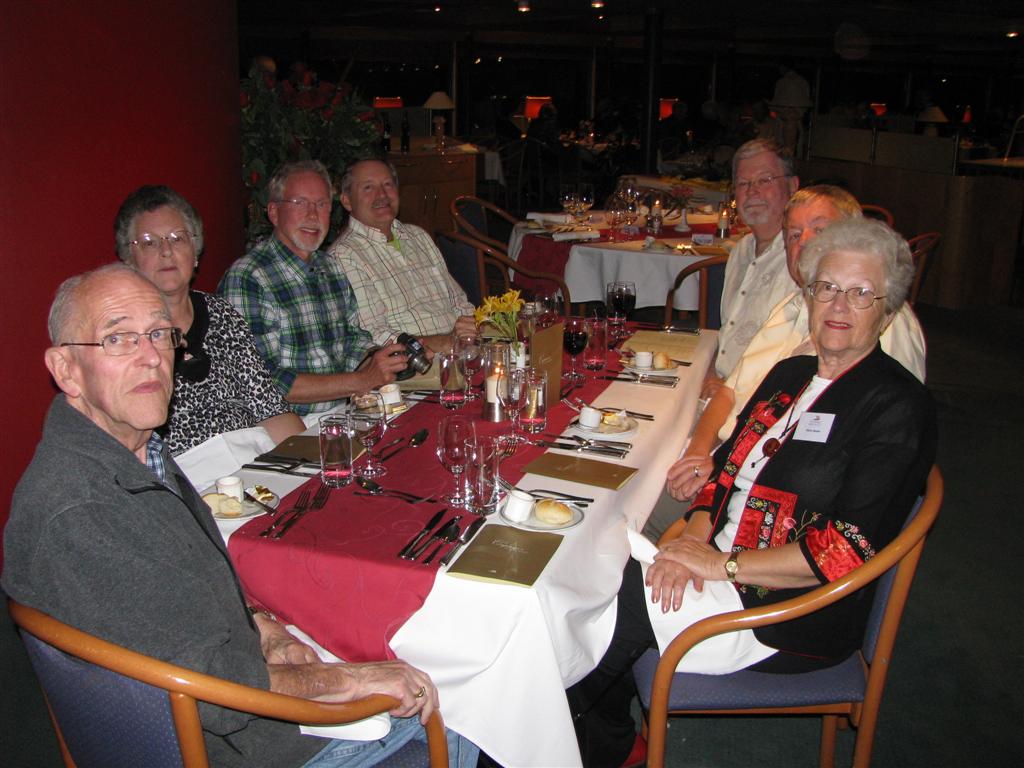
Captain's
Dinner |
Passau, Germany
(Deutschland)
Our last full day on the cruise began when
the ship docked in Passau (Pa sow with the accent on the first
syllable) about the time we were arising. Soon we were out on the
dock meeting our tour guide for a stroll through the old part of the
city. Passau, the 3 river city, is a tourist Mecca and river cruise
ships were all over. We were told that during the season, 50 to 100
dock here, and soon we could see why. In a wedge between two of the
rivers, is an area of well preserved buildings on narrow winding
streets. Our guide challenged us to find a straight one. At one
point we passed down a street that only about two people could get
by each other at one time. We passed a beautiful carved door.
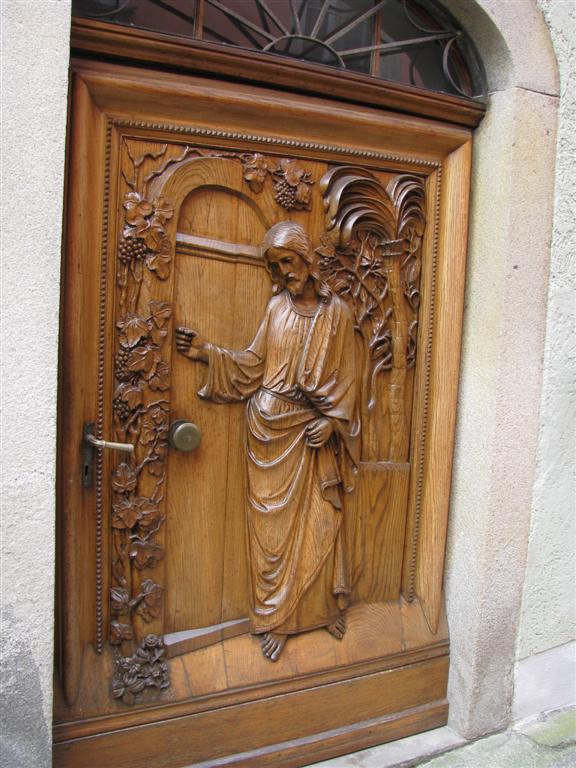
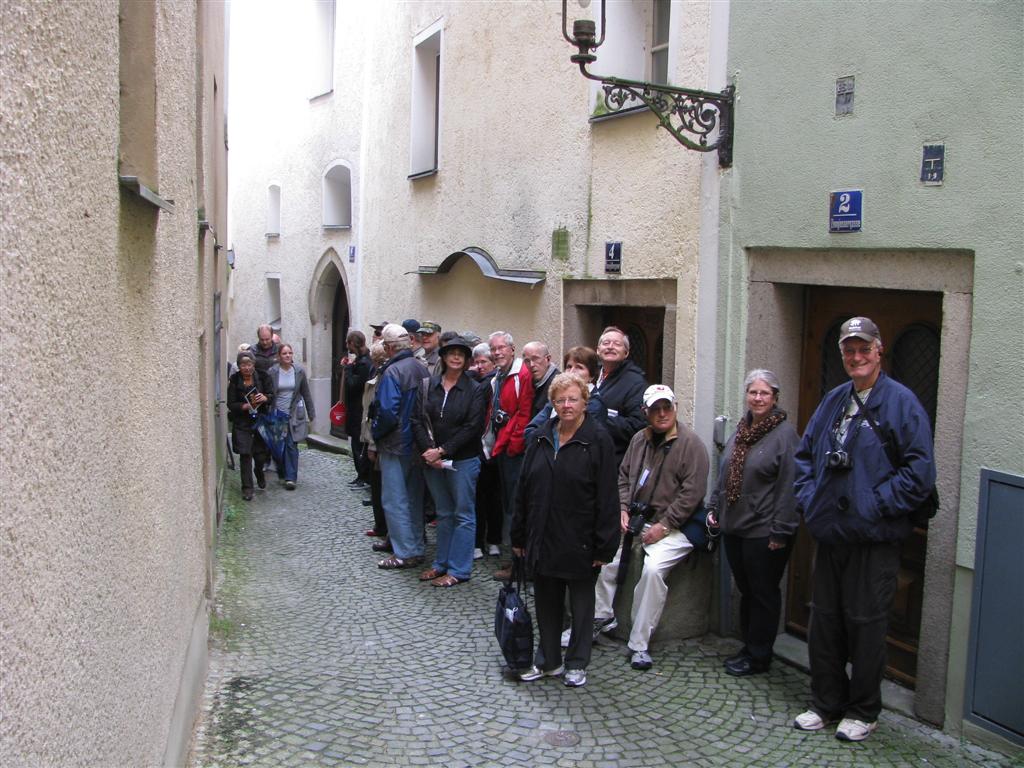
Our guide was a college student working on
his doctorate taking some time off working as a guide for various
groups. He gave us an interesting perspective on the European Union.
He felt that the various cultures of the countries meant that people
would continue to be Germans, French, or Italians first, and
Europeans second even as the economies became more integrated. They
love to be able to cross borders freely without worrying about
customs or guards or in many cases to exchange money and to go to
Austria or Luxembourg to buy cheap gas and cigarettes, and go back
home where they have a common culture and language. Workers are free
to go wherever there is work, and students can go more easily to
other countries to university. He was quite adamant that Europeans
were so devastated by two world wars that they were determined not
to let it happen again.
Our tour ended with some free time before we
were to return to the cathedral (dom) for an organ concert on the
largest pipe organ outside the US. The cathedral is the largest
baroque church north of the Alps. We returned for an excellent 30
minute concert in which there was something for everyone. There are
5 organs around the church and they are electronically integrated.
The results were breathtaking. The church was full and held
spellbound by the glorious sounds.
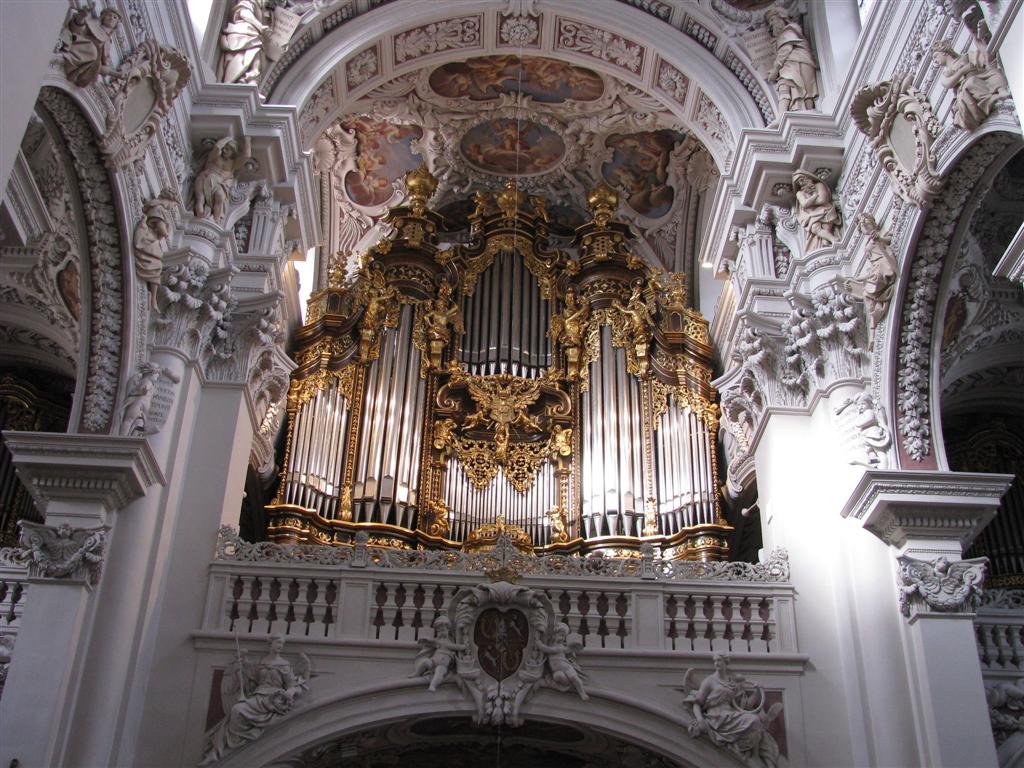 Organ
Organ
If not for the impossibly uncomfortable
benches, we might have wished for more. One of the gothic cathedral
towers was left after a city fire. More recently it was discovered
that the fire had damaged the stones, and for 80 years replacements
have been made, stone by stone.
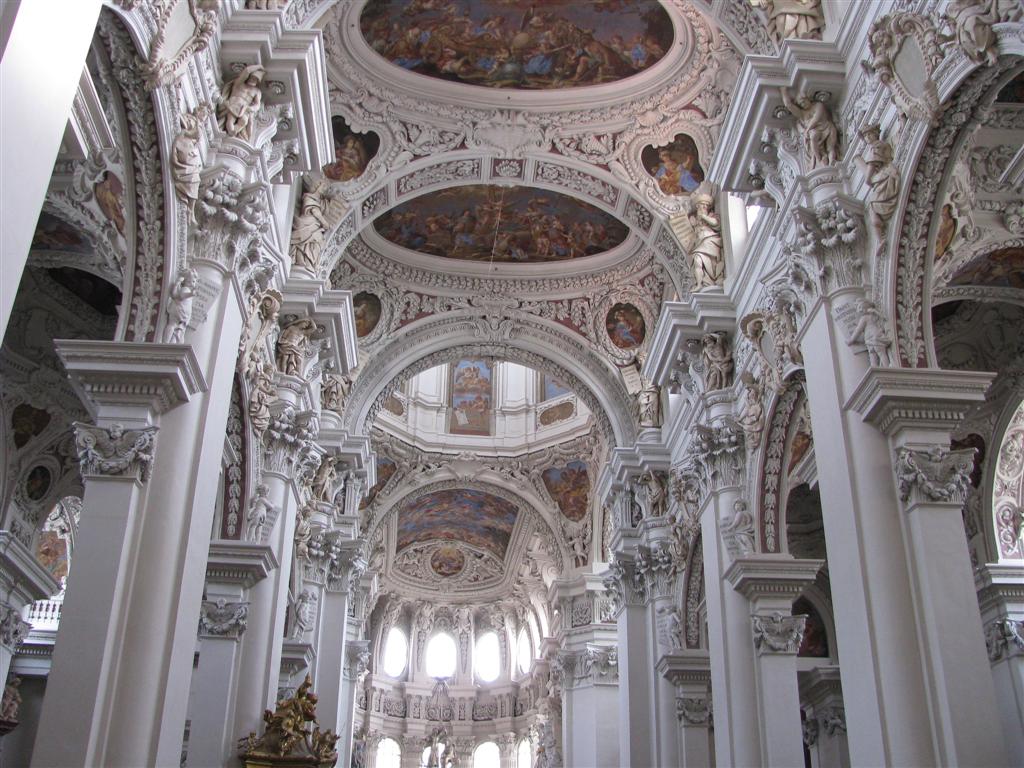
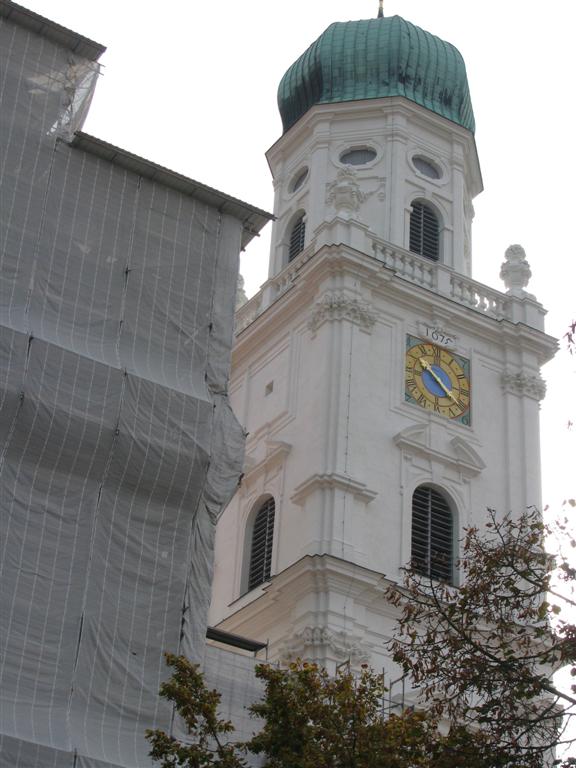
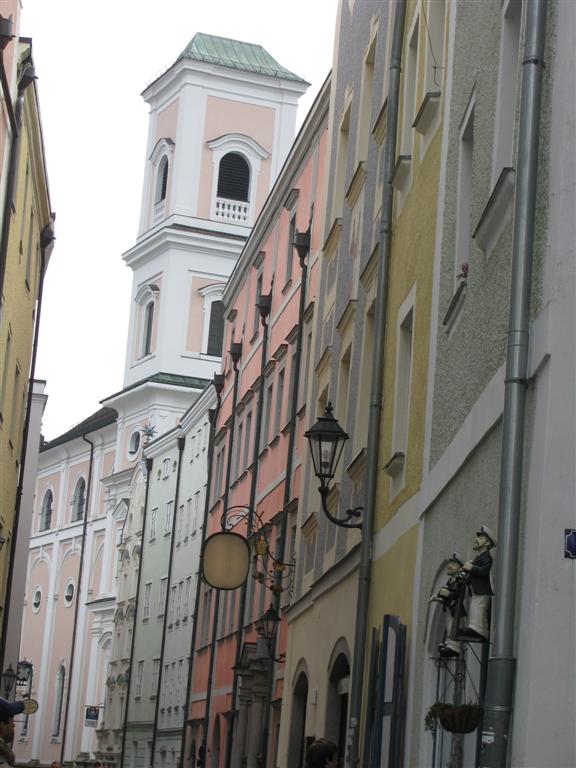
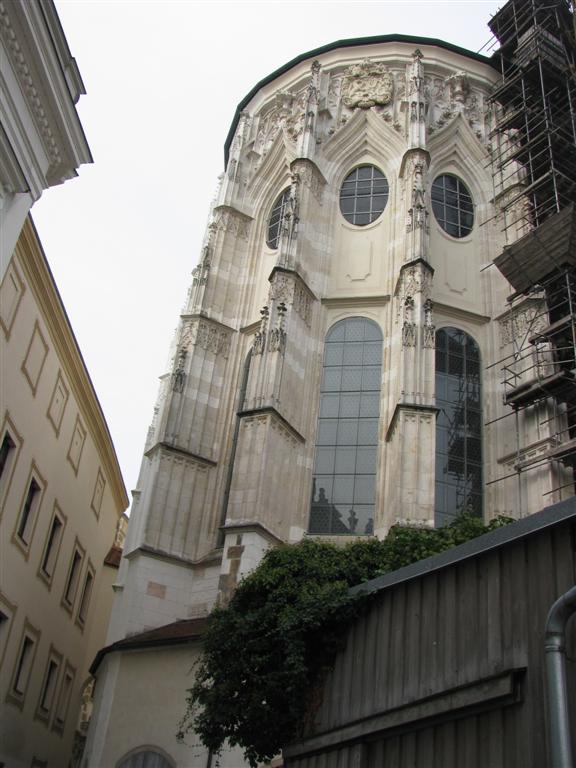
After lunch we did a little more shopping
and returned to the ship so that it was able to leave and go a short
ways to a less busy place to dock. It’s time to pack and get ready
for a departure tomorrow.
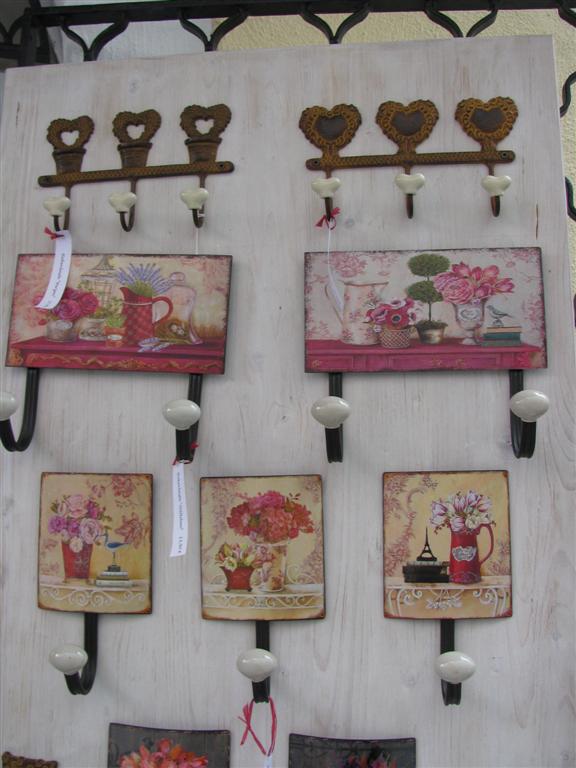
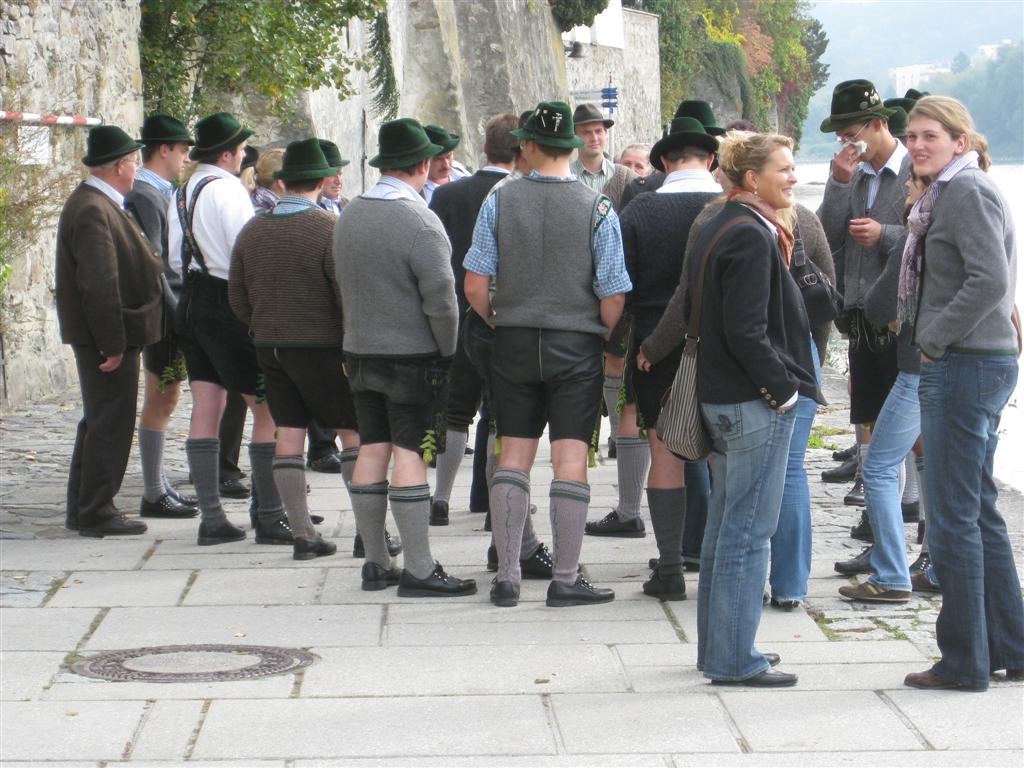
Tourists |
|
Munich,
(Muenchen)
Germany Our cruise has ended after
15 glorious days on the mighty Danube River: 8 countries, numerous
cities and splendid sites left behind. The original plan was for us
to travel about 2 hours to the Munich Airport and then find
transportation to our hotel near the city center. Our program
directors surprised us by agreeing to take us to the hotel after a
stop at the airport. That was fine with us and shortly after noon,
we were there and ready to take on OKTOBERFEST!!!! This year is the
200th anniversary so it lasted an extra day allowing us an
opportunity to attend. Urs Engelmayer, one of our dear friends in
Munich, called and said he would join us and be our guide.
We took the underground to the Ofest stop
and got off with thousands of others coming and going. We used an
escalator and were nearly stampeded when the people at the top were
stopped by oncoming hoards. Think about it. People continue to come
up the escalator, but there is no exit. All one could do was push
ahead and force a way through. Many women and girls had on typical
old German dresses and men, lederhosen.
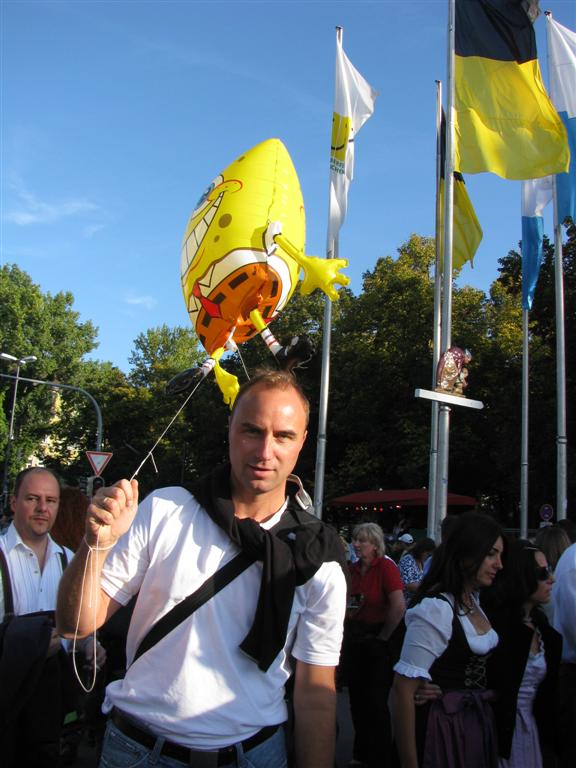
Urs with Sponge Bob Balloon

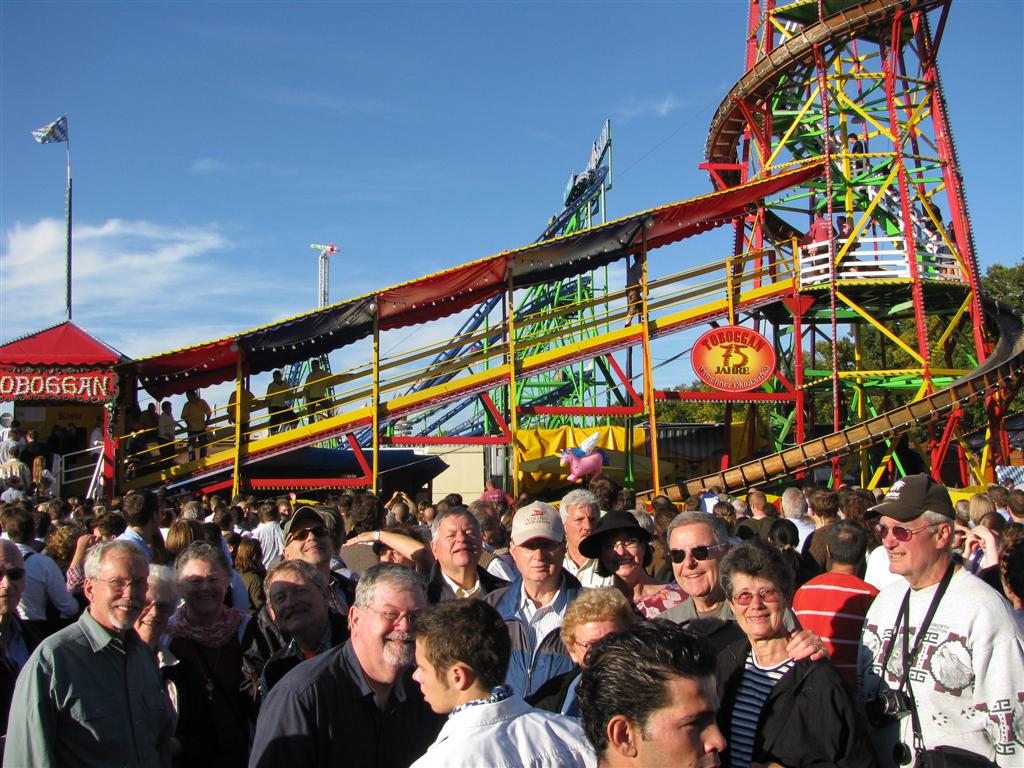
We walked a few blocks and entered the
grounds. Carnival as far as you could see with a sea of people. The
big problem was keeping our group together, not an easy task with
400,000 people in attendance. Urs stopped and bought a balloon which
helped considerably. There was everything you could think of to eat,
and every type of ride. Rick and Rod joined Urs’s daughter, Lisa on
one scary looking ride. Urs was relieved since he didn’t have to
accompany her. We turned a corner and saw the huge beer-garden tents
occupied by various breweries. There was no chance to go in one
since all had sold out in advance. That was OK by us.
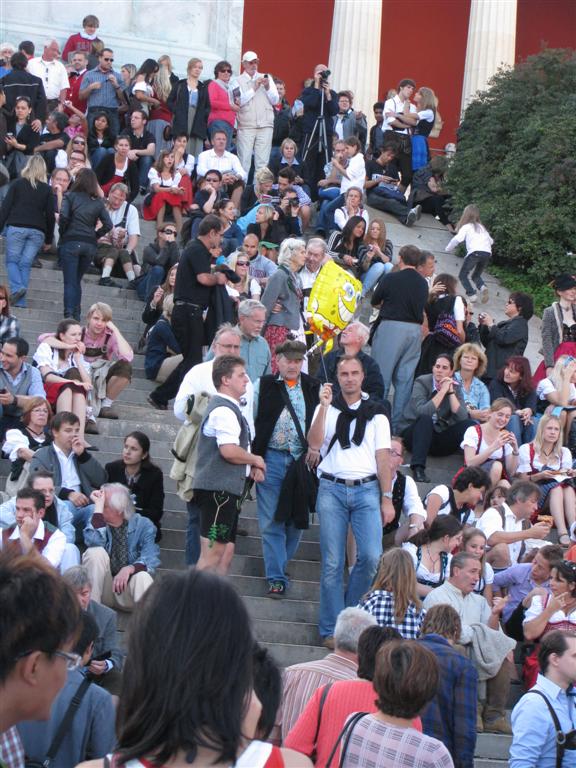
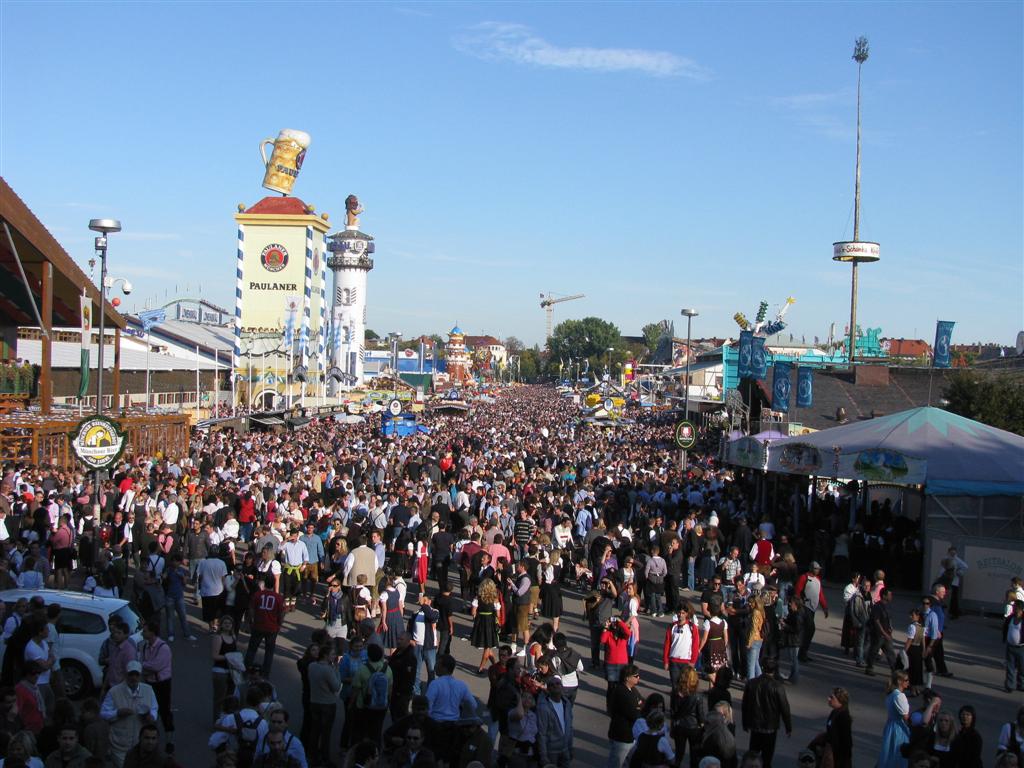
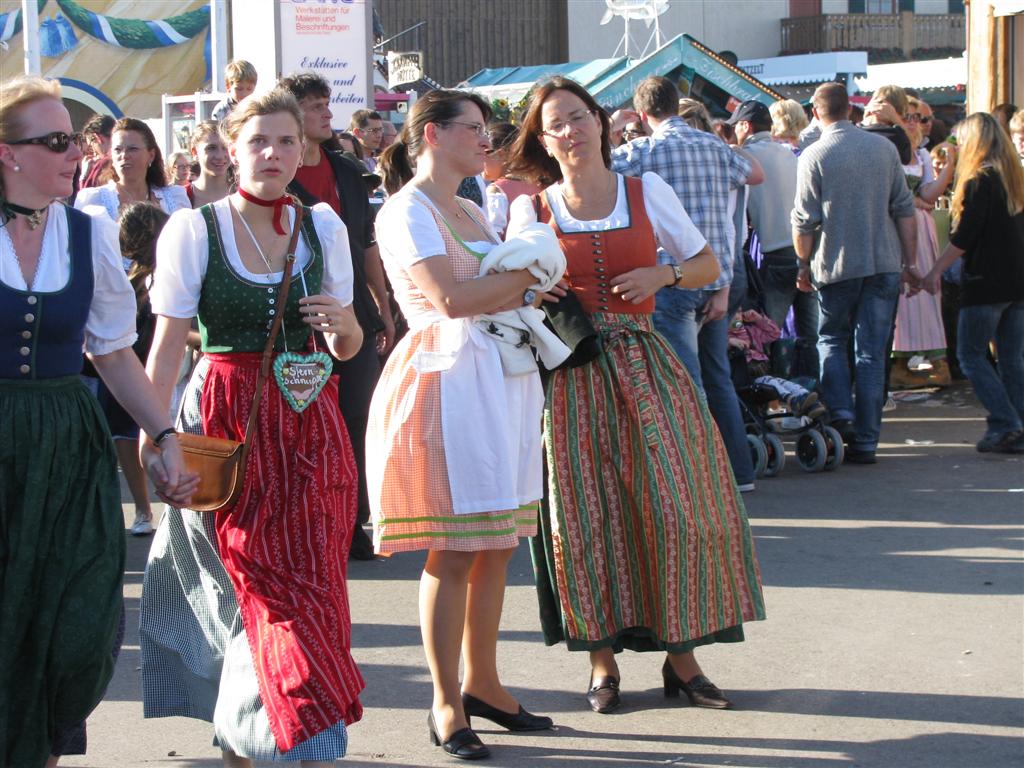
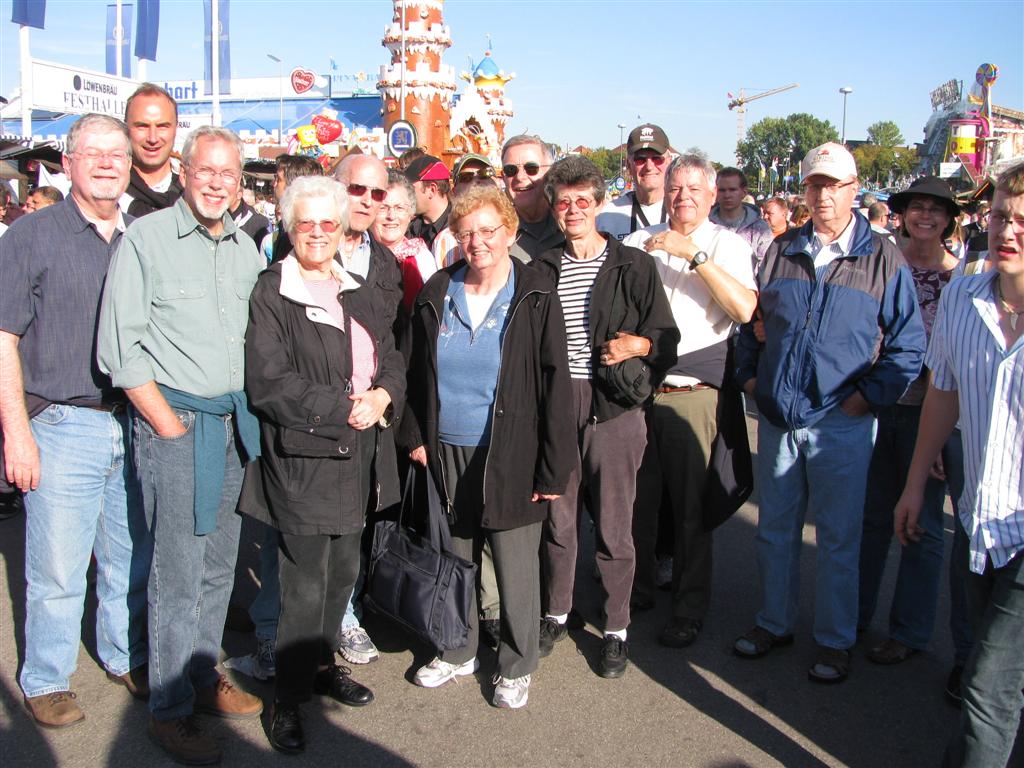
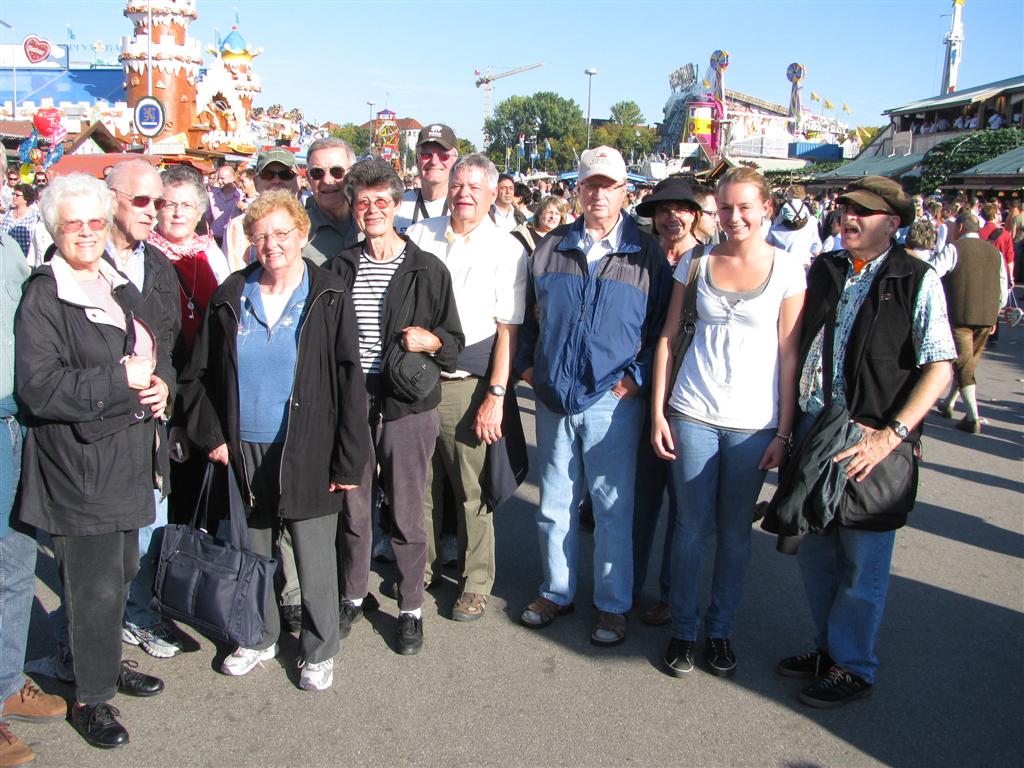
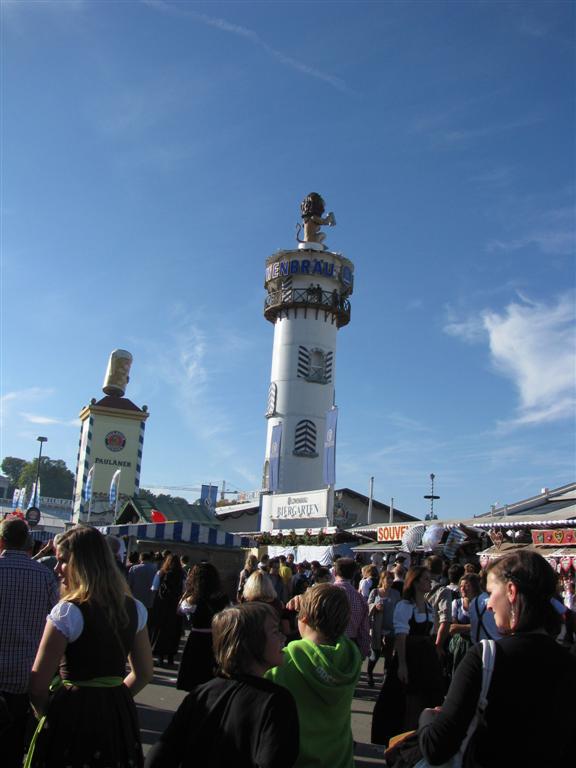
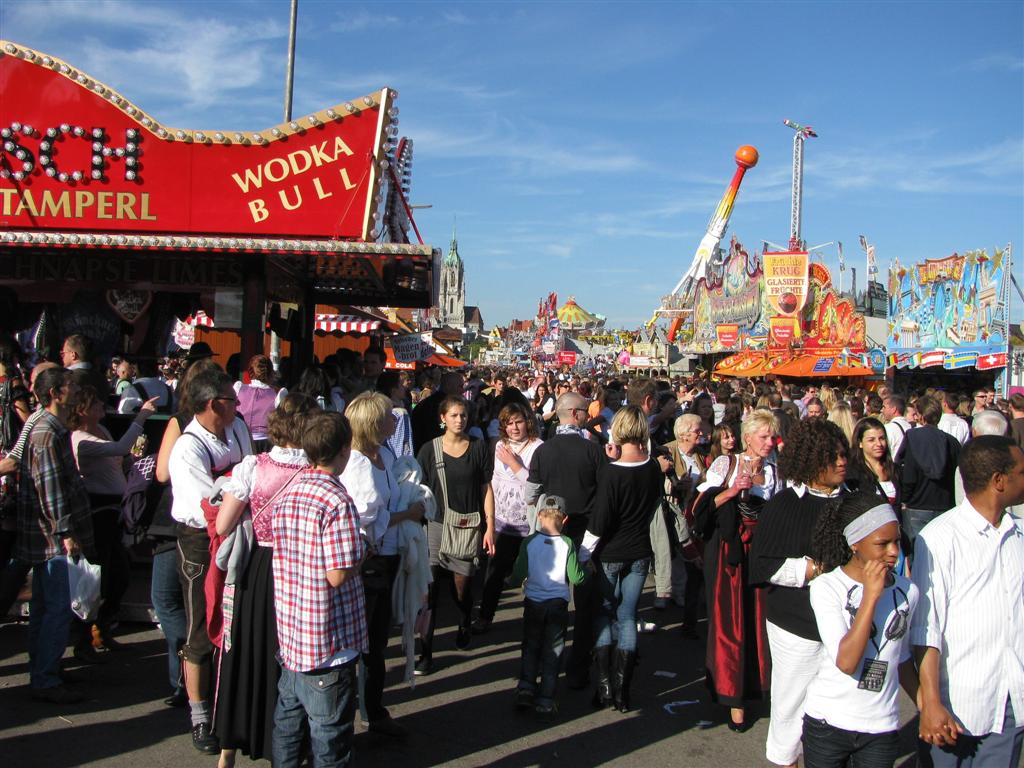
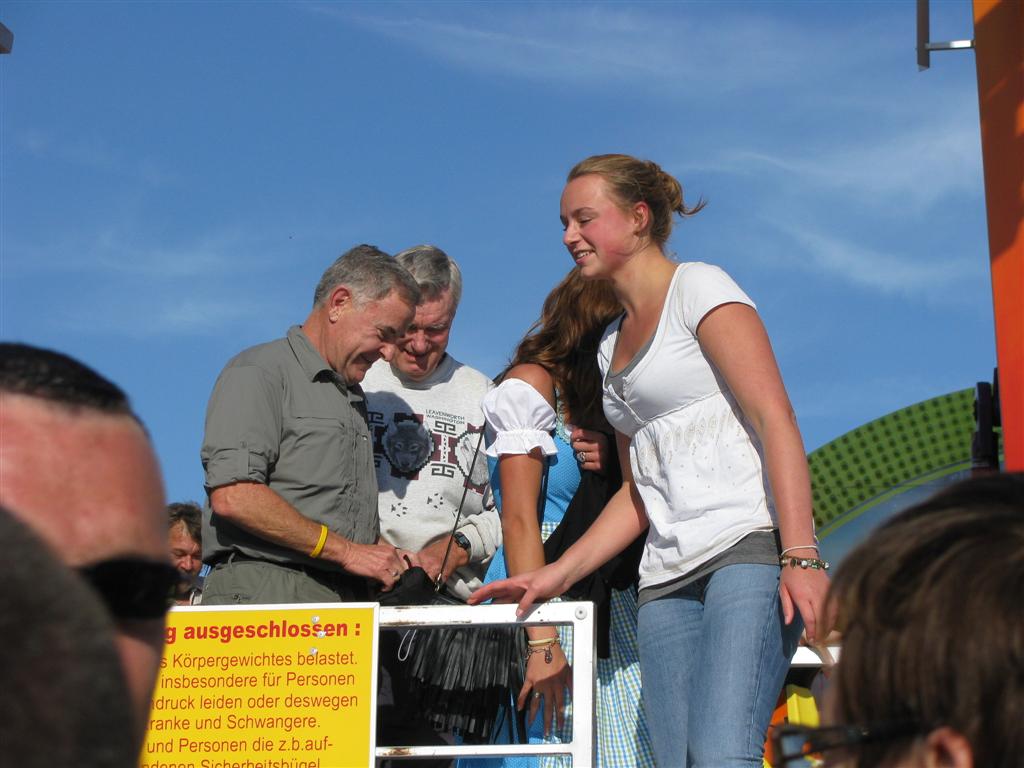
Rick, Rod and Lisa after the scary ride
After about an hour and a half, we had
enough and walked out the other side to another underground stop.
Urs was taking us on the suburban train (S Bahn) to Buchenhain about
10 miles south of Munich to meet some more of his family. It was
dusk by the time we arrived to become reacquainted with our friends
we see so seldom. The Engelmayer family’s connection to us was
through Ingrid Morf Engelmayer, who was Molalla’s first exchange
student in the class of ’59 with Blanche, Elaine and I. Over the
years we have remained in contact, although she is no longer living,
her family is so kind to welcome us with open arms.
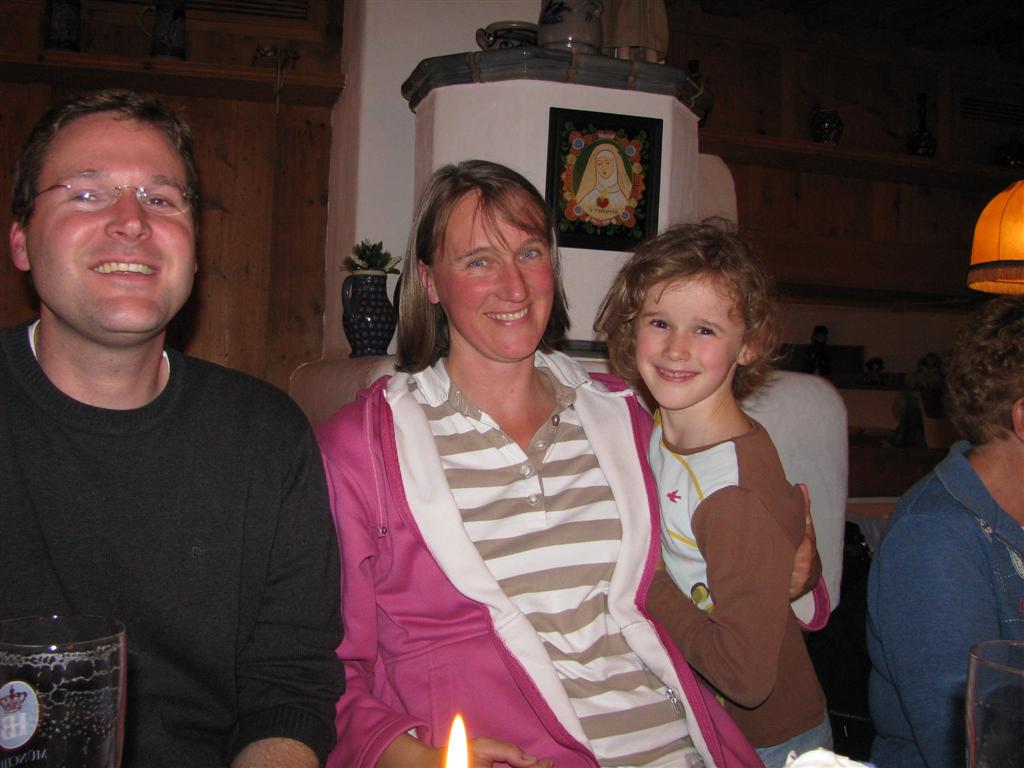
Klaas,
Ruth and Tina
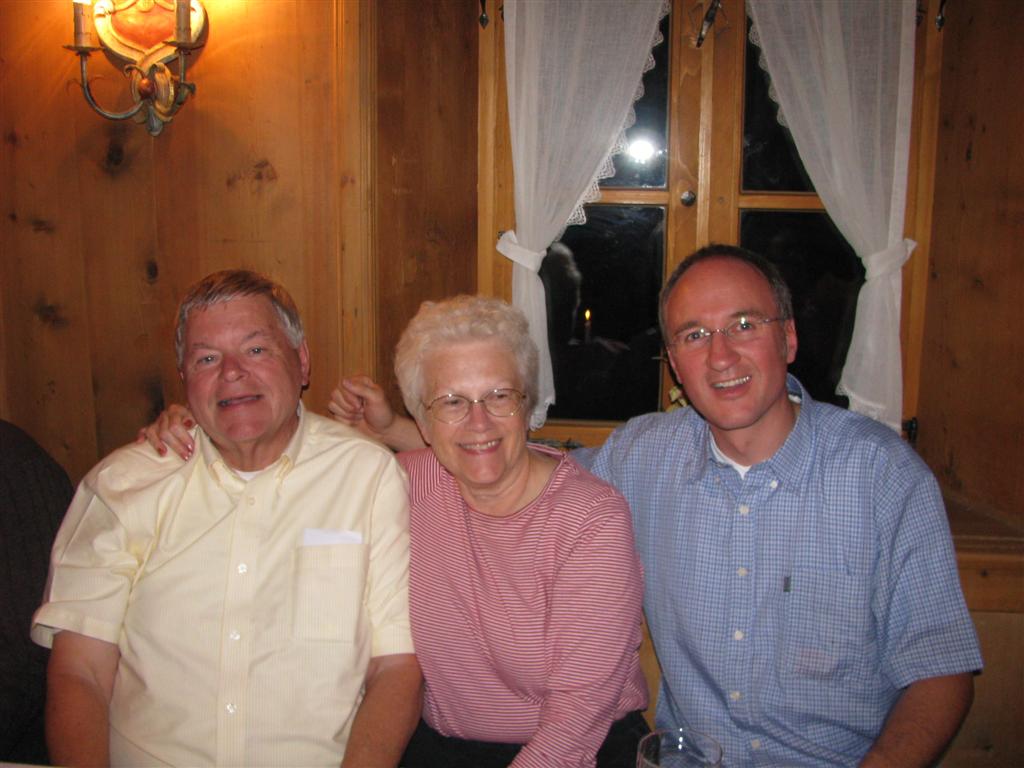
Joel, Elaine, Hans
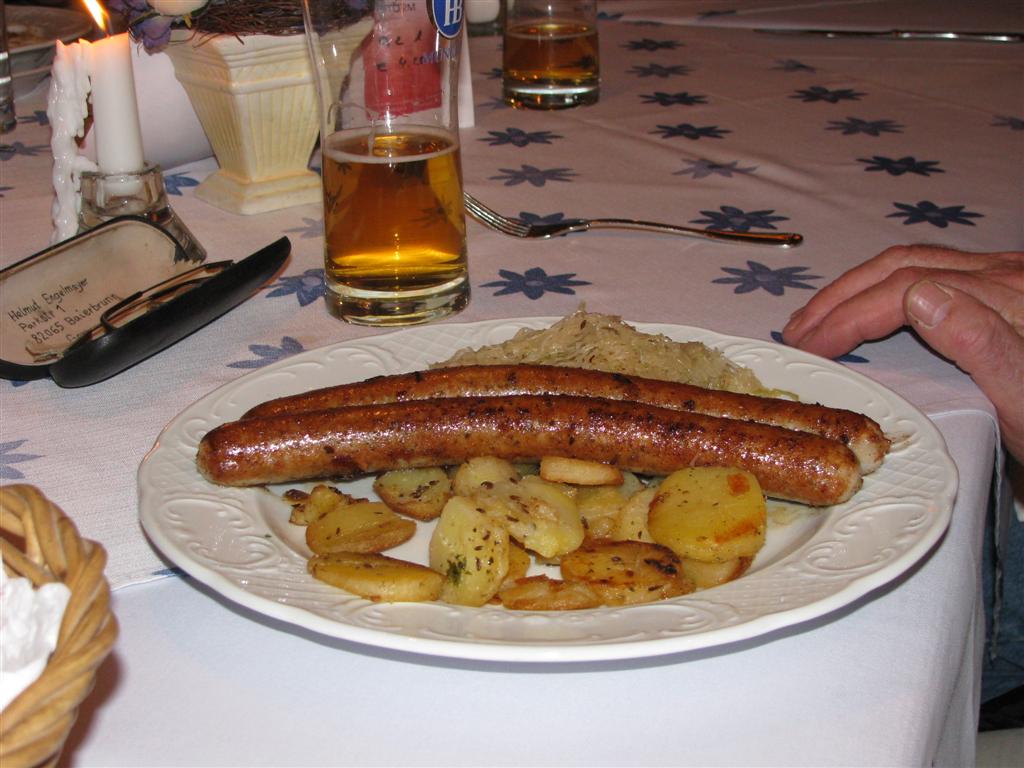
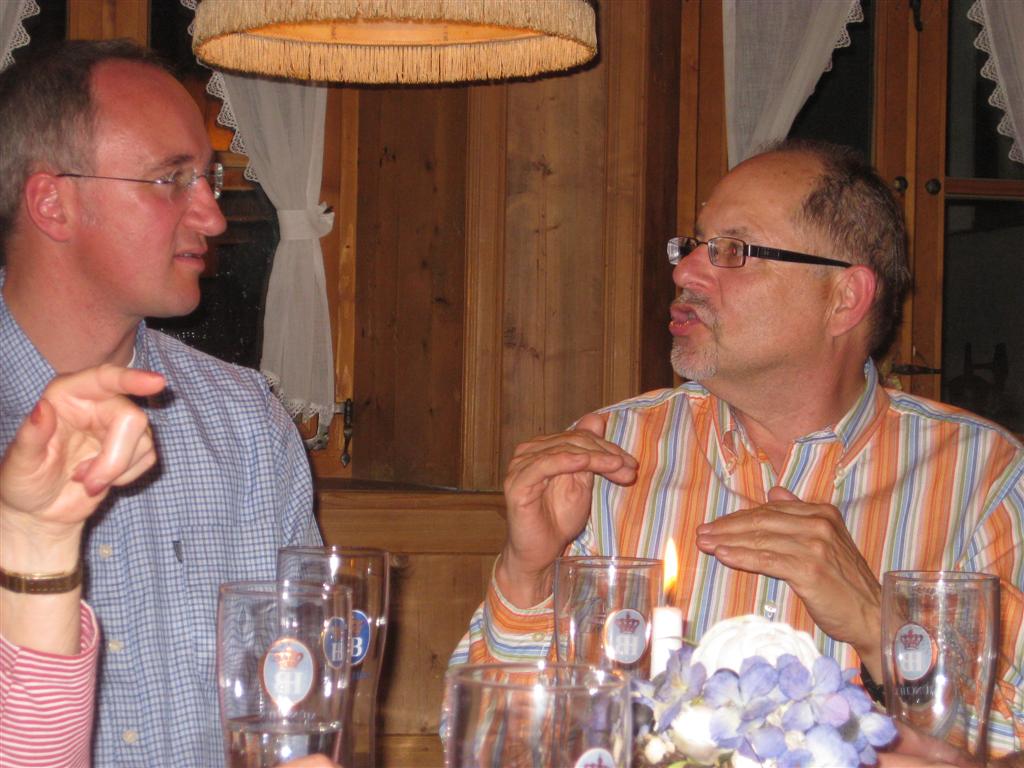
Hans, Richard
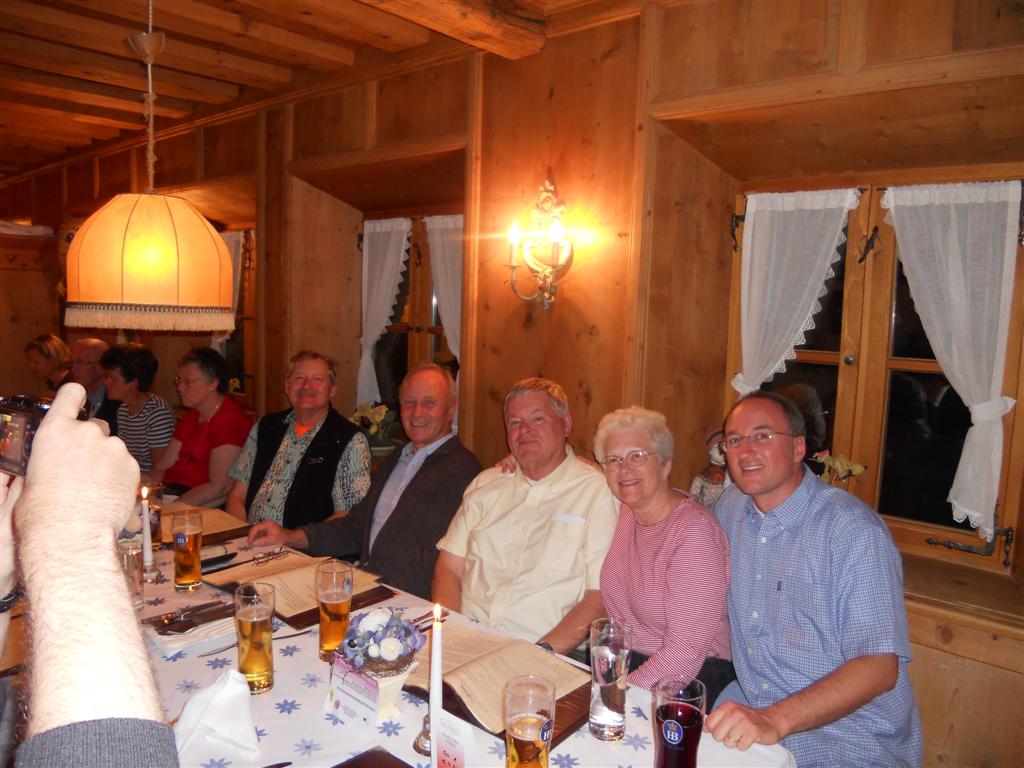
TomD, Helmut, Joel, Elaine, Hans
Ingrid’s husband Helmut had arranged for us
to go to a restaurant near their home for dinner. We were joined by
children Urs, Hans and his wife Uschi, Ruth and her husband Klaas
Willenbrock and some of the grandchildren. It was a lively table in a
beautiful place with all kinds of Bavarian specialties. There was
much catching up and lots of laughter before it was time to say
goodnight and get back to the hotel to get rested for another busy
day.
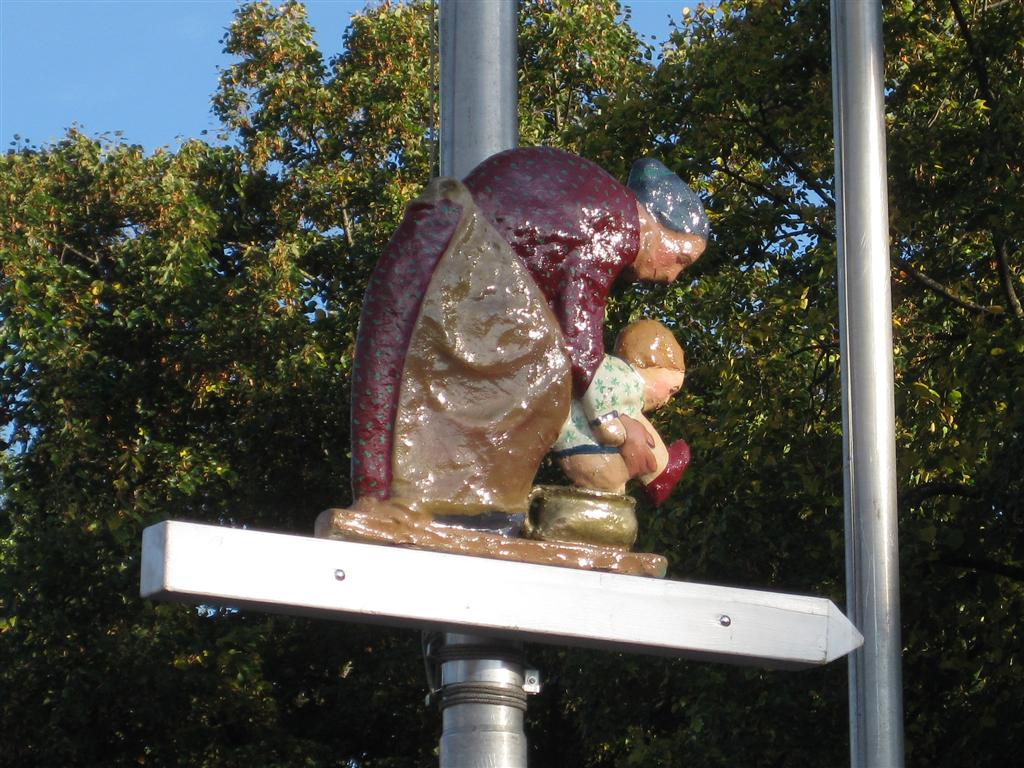
Sign for W.C. at Oktoberfest |
|
Salzburg, Austria,
The Hills Are
Alive….
Our plan while in Munich was to spend a day
in Salzburg which is about 2 hours away by train. One can buy a
Bavarian Ticket for 28 Euros and 5 people can use it simultaneously,
after 9 a.m. Ruth Engelmayer graciously volunteered to meet us at
the Hauptbahnhof, Main Train Station and be our guide. We agreed to
meet at the gate and hiked out to the appropriate platform to get
the train. The ride was very pleasant with the sunshine on the
beautiful farms and villages.
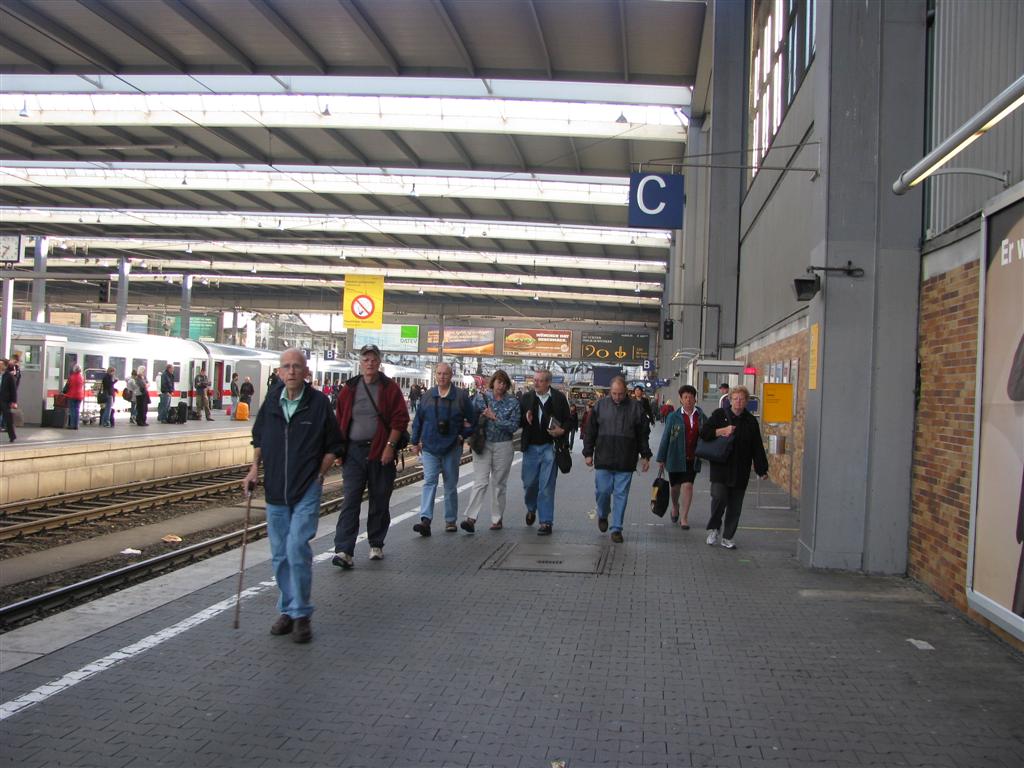
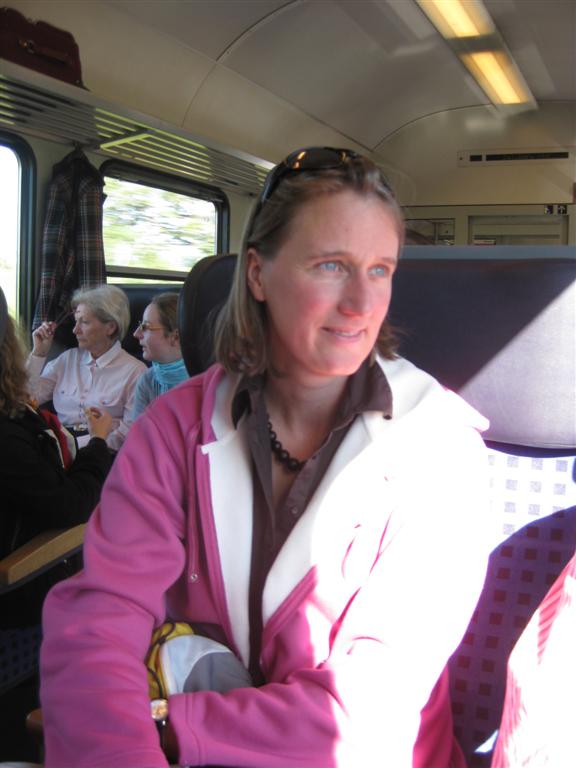 Ruth
Ruth
Saltzburg is an old city that was important
from Roman times for the salt mines. Major trading round came
through the valley, and the city became rich. It is the birthplace
of Mozart and there are many signs and plaques commemorating his
life. We found many shops on small winding streets enticing visitors
with various crafts and souvenirs.

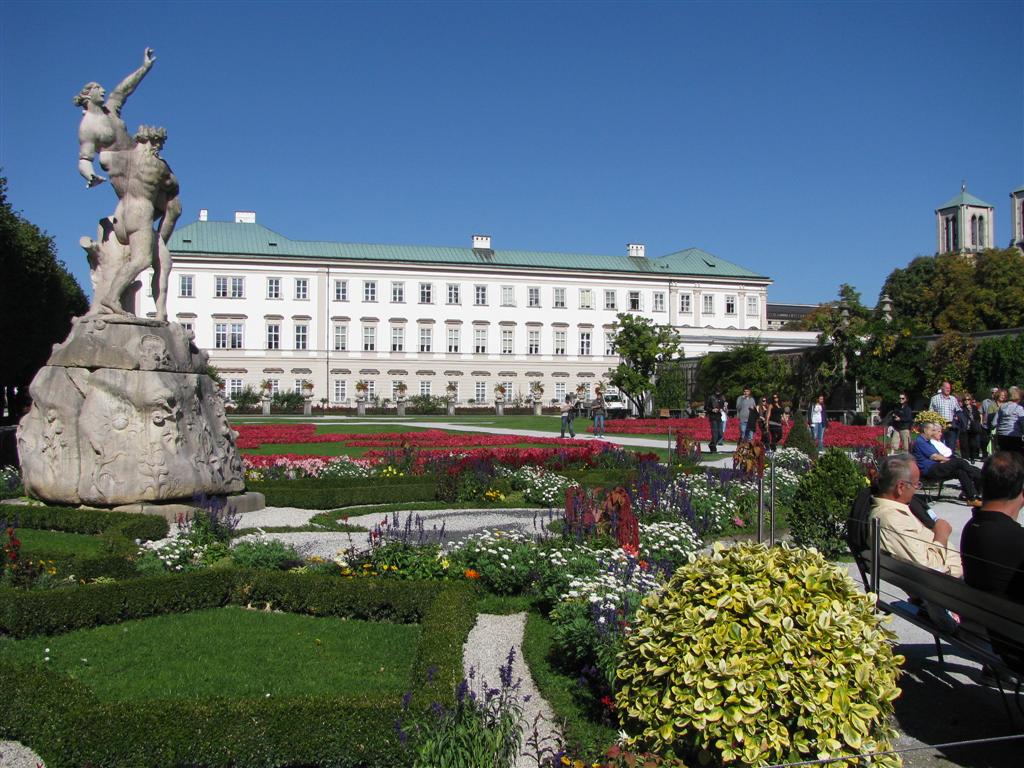
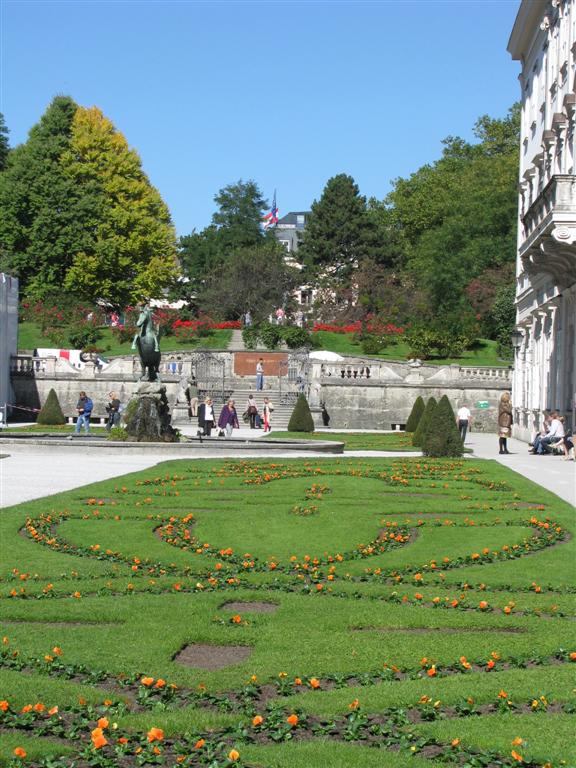 Residenz zu Salzburg
Residenz zu Salzburg
We found a nice place to have lunch topped
off with apple strudel that some couldn’t resist. Afterward, Hans
Engelmayer joined us since he could leave school at one p.m., and he
lives and teaches in Rosenheim about halfway between Salzburg and
Munich. We were asking questions about the Sound of Music and
neither Hans nor Ruth knew about it. We had to tell the story…
We took an incline cog train up to the
castle and some climbed the tower to see a splendid view of the city
and surrounding mountains. Others toured the museum with its models
of the fortress and how it had changed over the years. Church and
state in much of Germany and Austria were intertwined to the extent
that the religious leaders were also the political leaders.
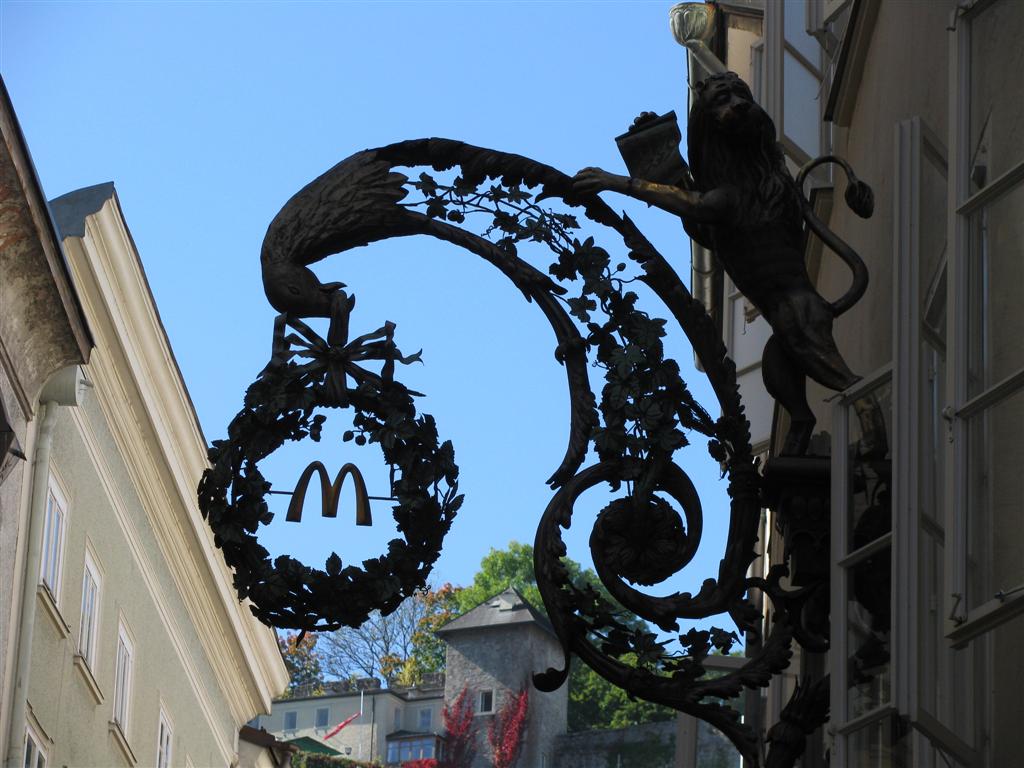
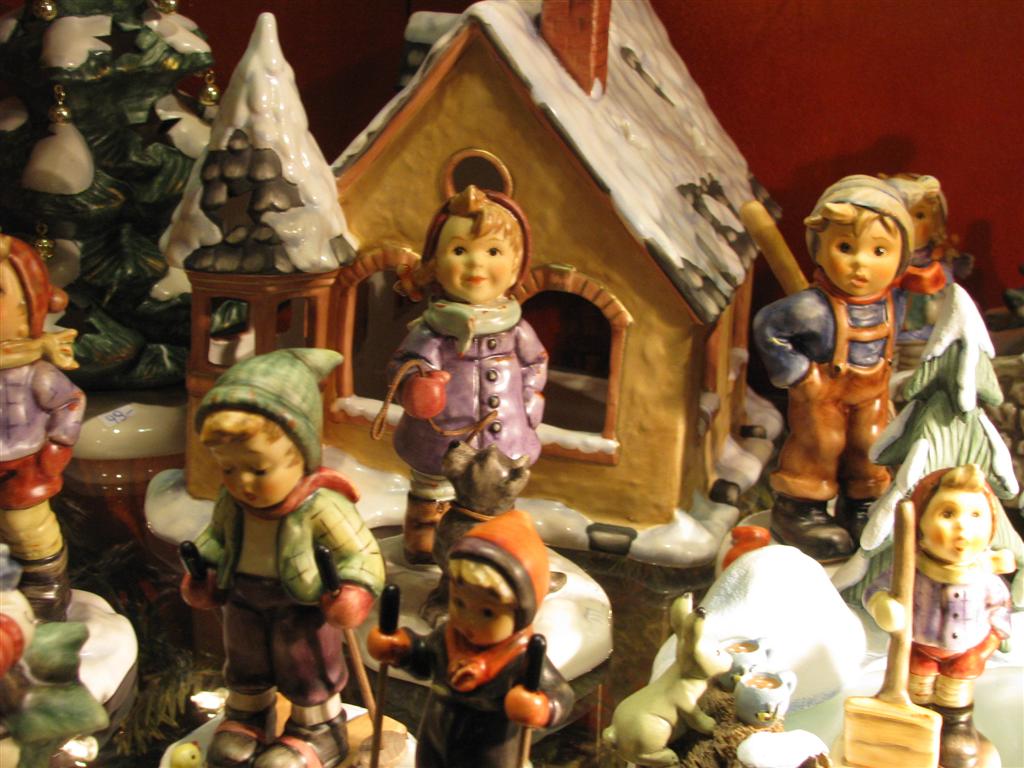
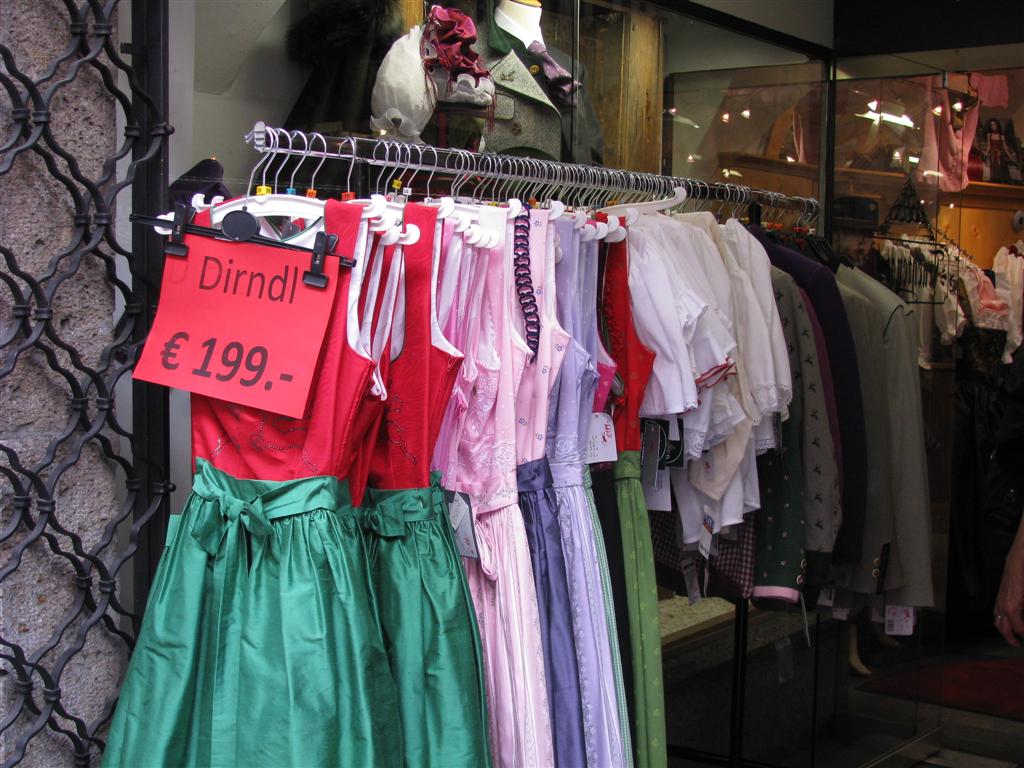
In Germany today, about 80% of the people
are enrolled in either the Roman Catholic or Evangelical (Lutheran)
church and it’s divided about 50-50. Taxes are taken out of the
incomes of the members to go directly to the church. In turn lots of
the social services are done by the churches. Church services are
sparsely attended and people don’t have the same attachment to their
church as they do in America.
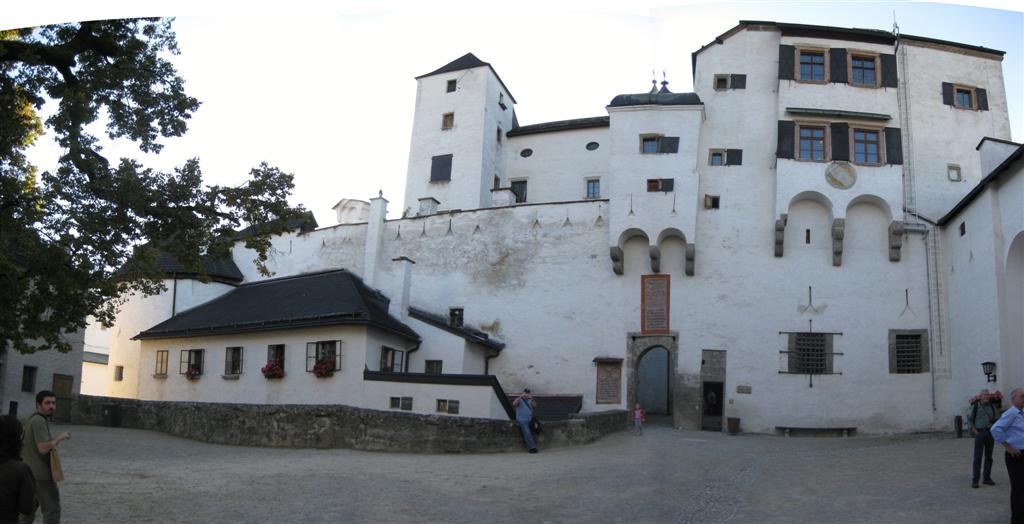
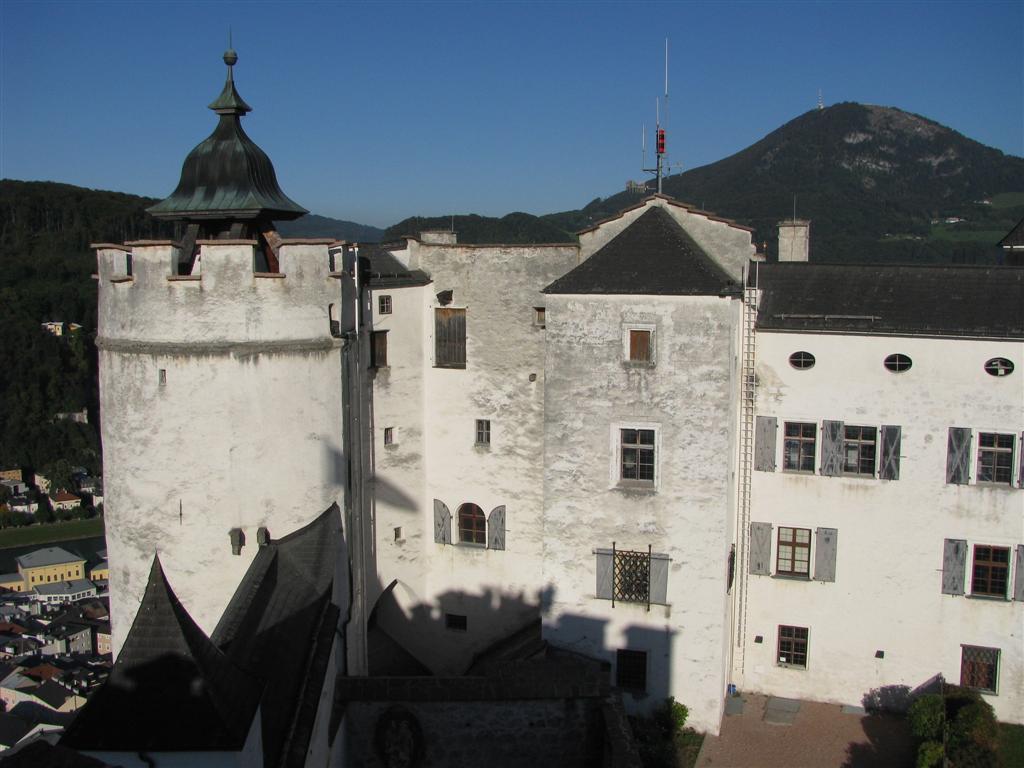
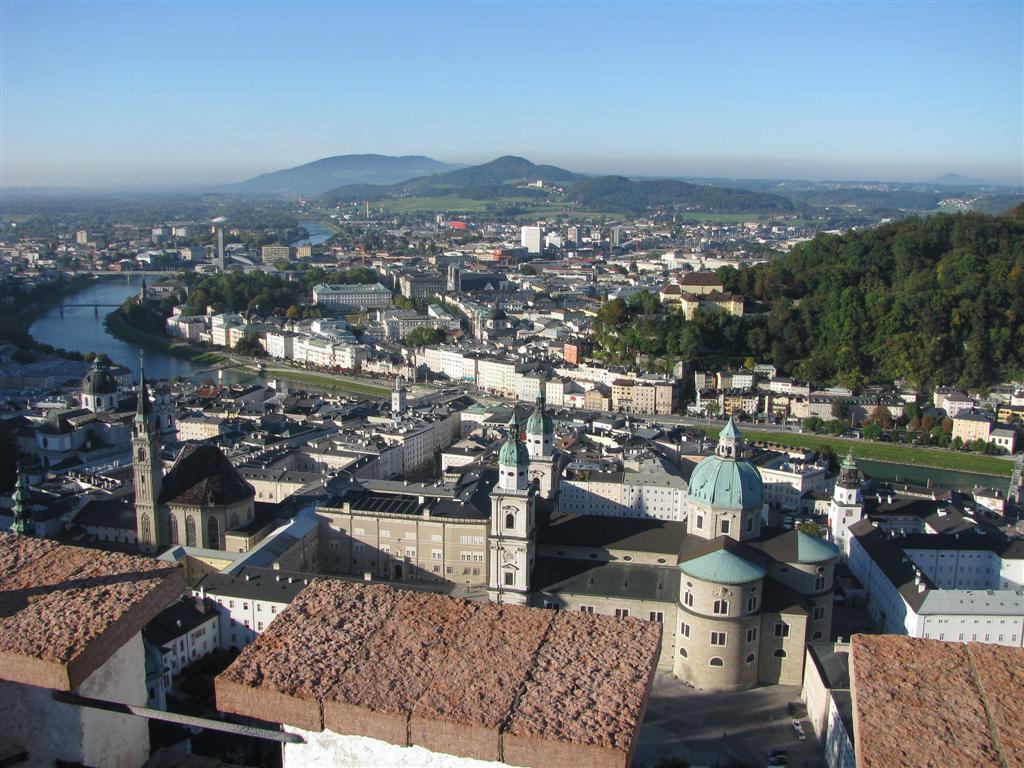
The sun was setting, the stores closing and
it was time to walk back to the train station to go back to Munich.
Along came this beautiful train from Budapest and we got on thinking
it would be faster. It was a very nice train with a café car and all
the amenities. I wasn’t sure that we were supposed to be on that
train, and when the conductor came down the aisle, we directed him
to Ruth, our leader, in the pink coat who had all the tickets. Sure
enough, we were not allowed on that train with our cheap tickets. I
was prepared to pay the difference, but Ruth and Hans talked him
into making an exception providing we got off at the next stop. We
would have to catch a slower train which we had probably passed. We
had already gone half the way before they checked our tickets. The
stop in Hans’s town of Rosenheim had some fast food and we got a
snack to take aboard for the last part of our journey.
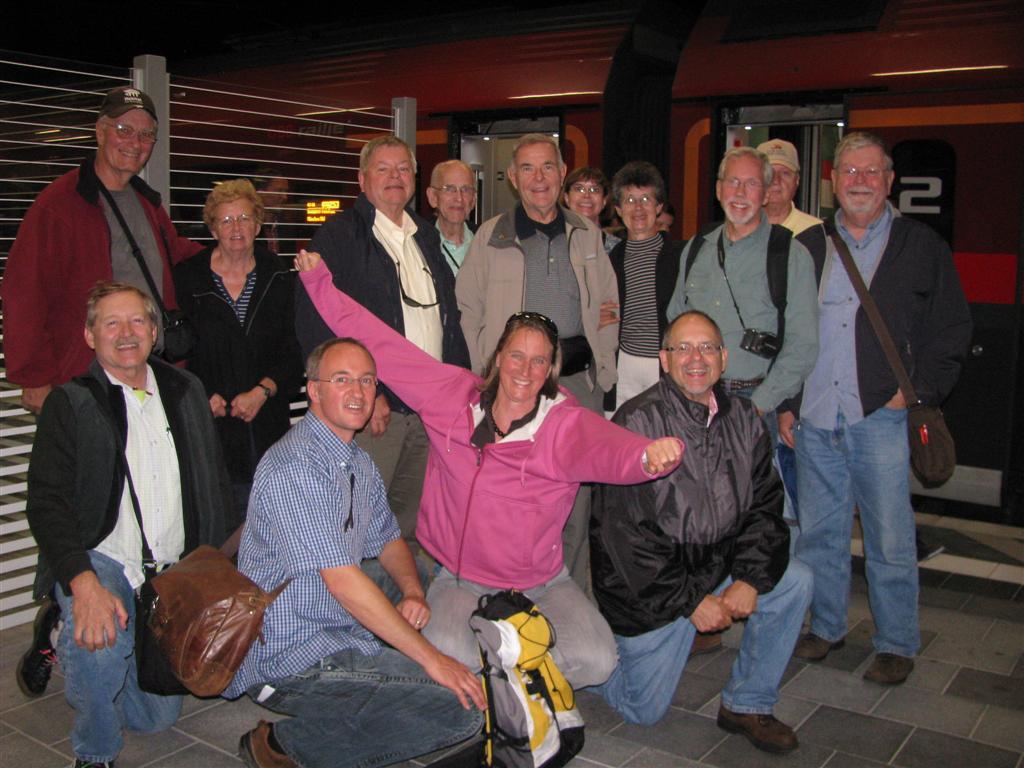
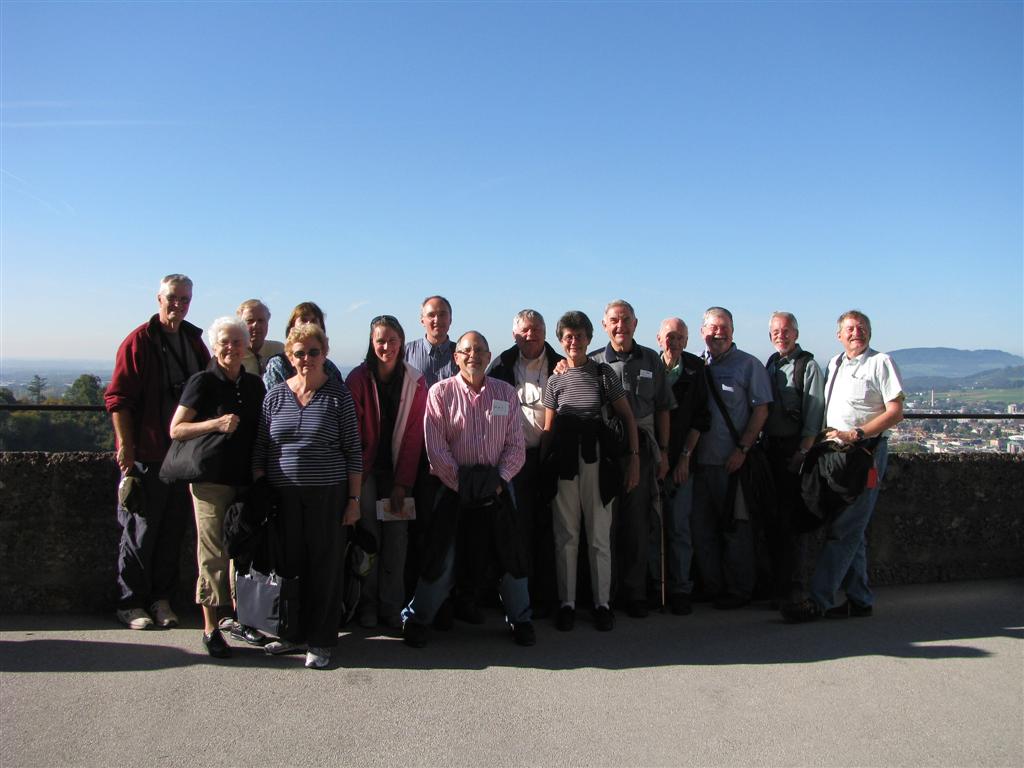
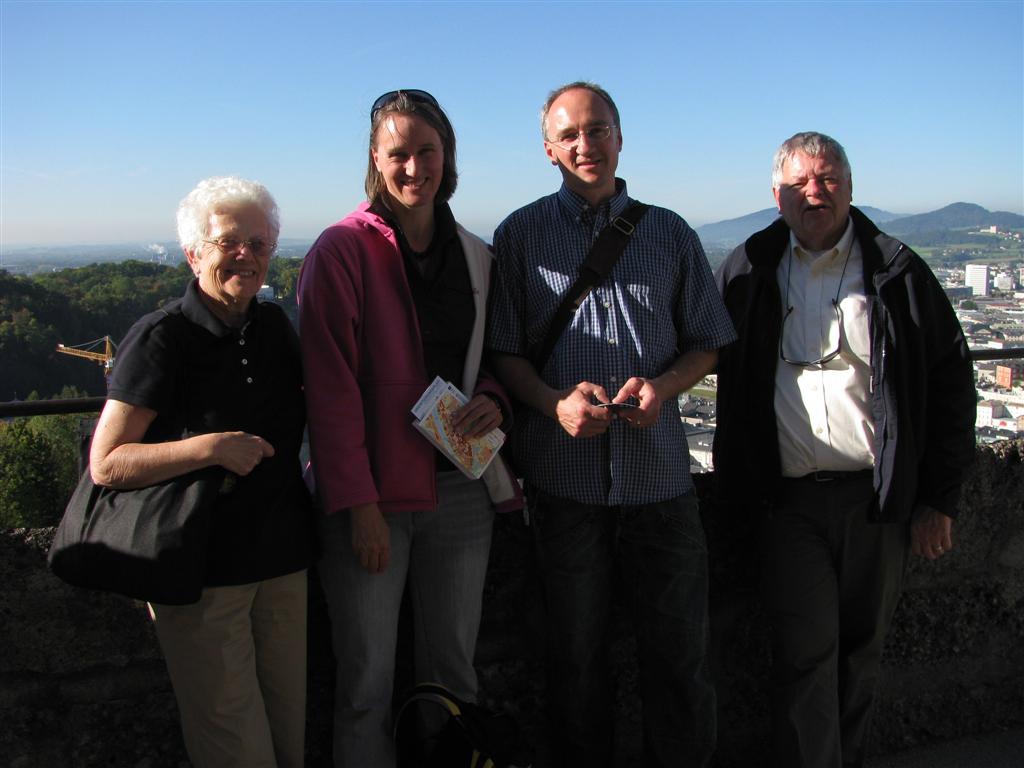
Elaine, Ruth, Hans, Joel
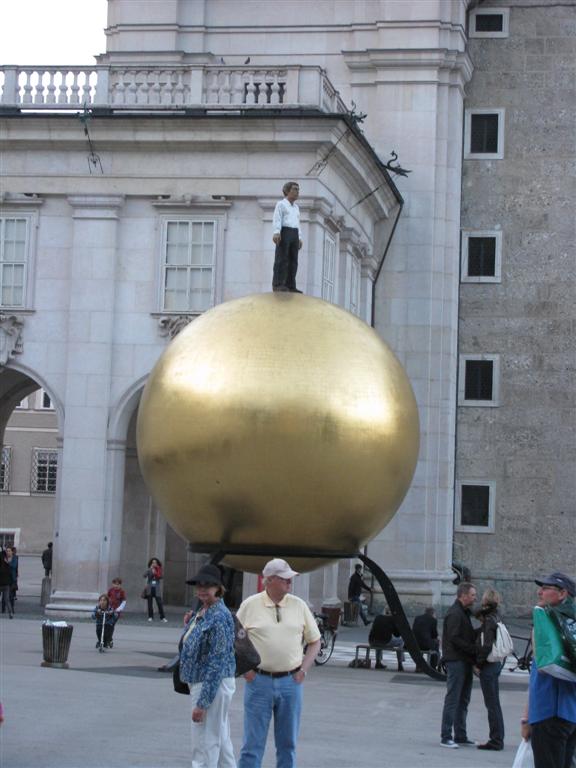
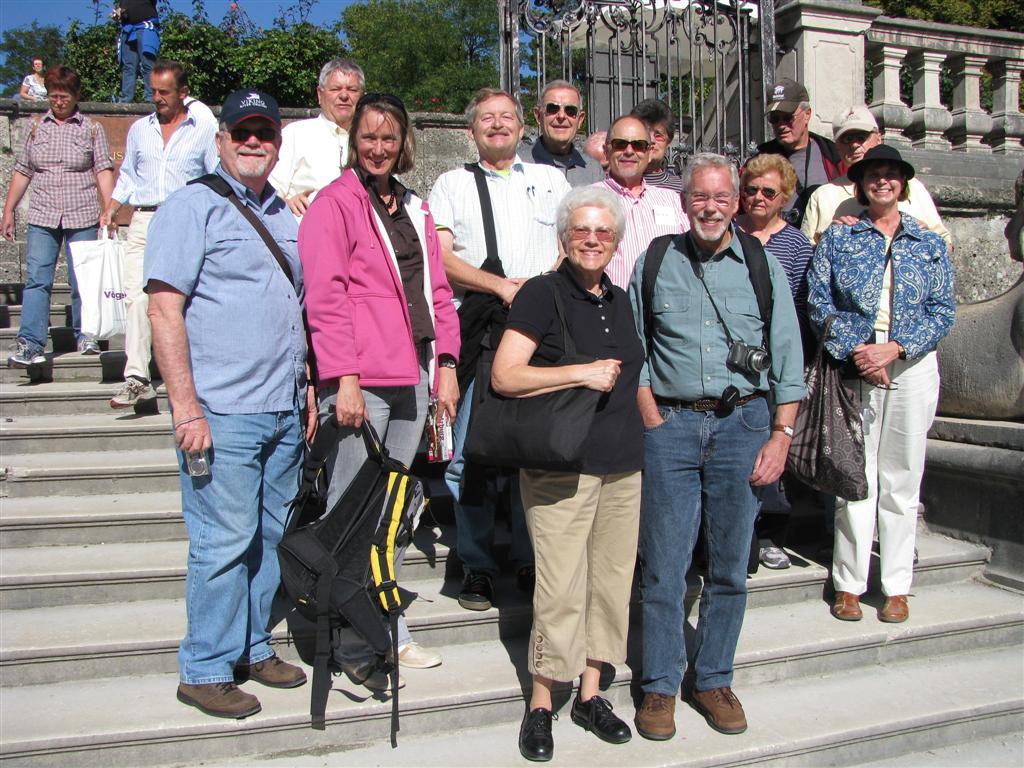
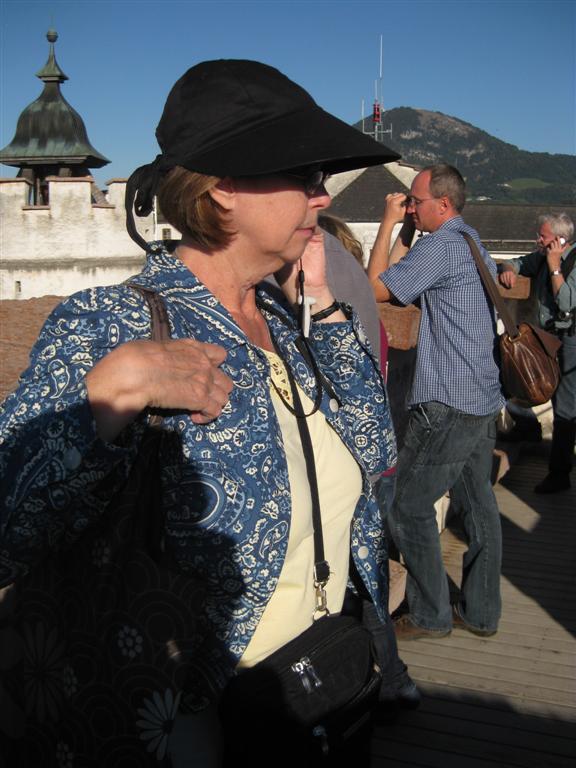
Nancy
|
|
Munich Last Day
Our final day in Munich began with an
underground ride to the downtown area to walk around Marienplatz,
the old center with the New City Hall and the Old City Hall.
Beautiful flowers were hanging from all the windows and there were
lots of people waiting for the clock to strike on the hour. We had a
few sprinkles as we looked up to see the figures joust before the
king and the dancers dance rejoicing in the victory. It lasts more
than 5 minutes.
After hitjting the Birkenstock store, the
clock figures were still again, and we got on the tube and went to
Olympia park where BMW has build a beautiful new showroom and
museum. We could walk around and see all the models of cars and
motorcycles. We think that Marvb probably ordered a new car, but he
didn’t say anything about it.
Urs Engelmayer called and said his office
was nearby and he would come over to walk around the area. It is the
site also of the 1972 Olympics and there is a tower we went up. The
skies had cleared enough for a great view of the larger Munich area.
Soon it was time to go out to Helmut, Ruth
and Klaas’s home for dessert and coffee. Helmut had made a specialty
of the region, plum cake. He likes to use what he called a farmer
plum that is more tart. He makes a sweet roll dough and presses in
quartered plums. Sehr Gute.
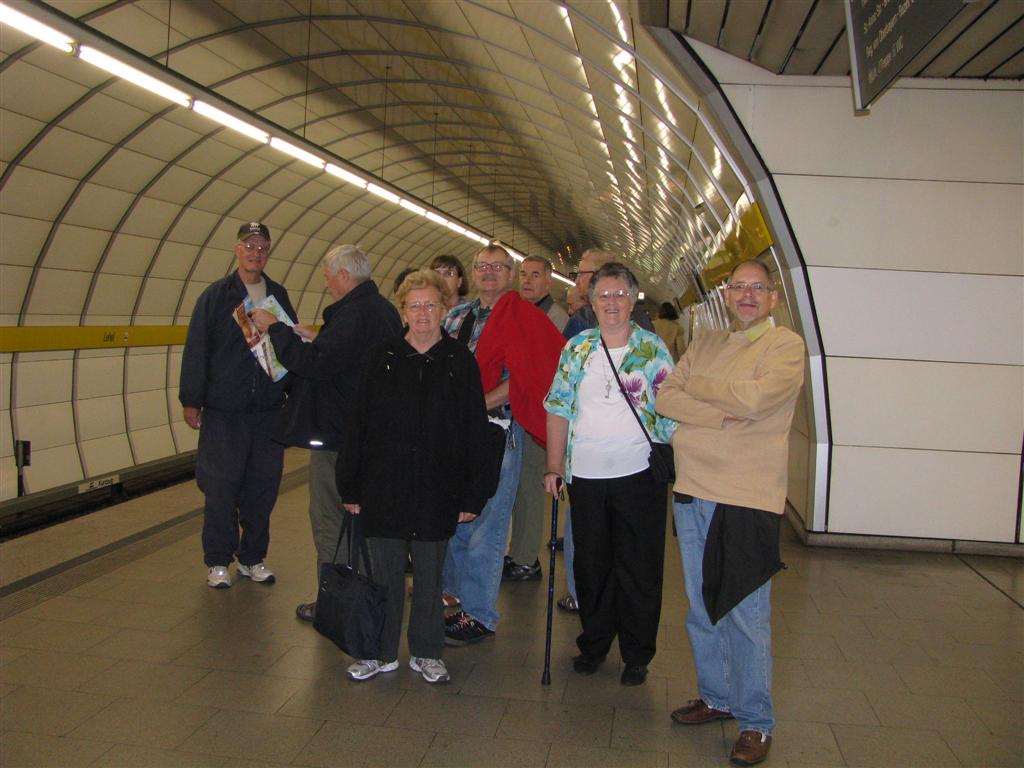
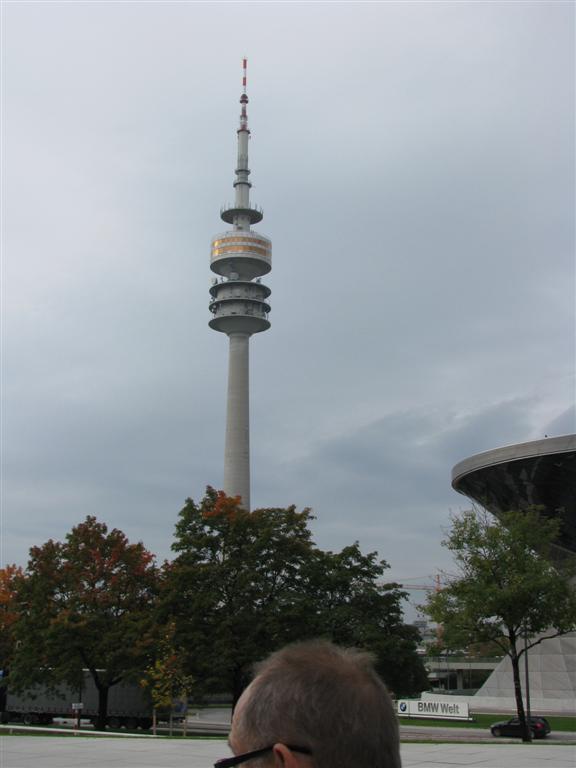
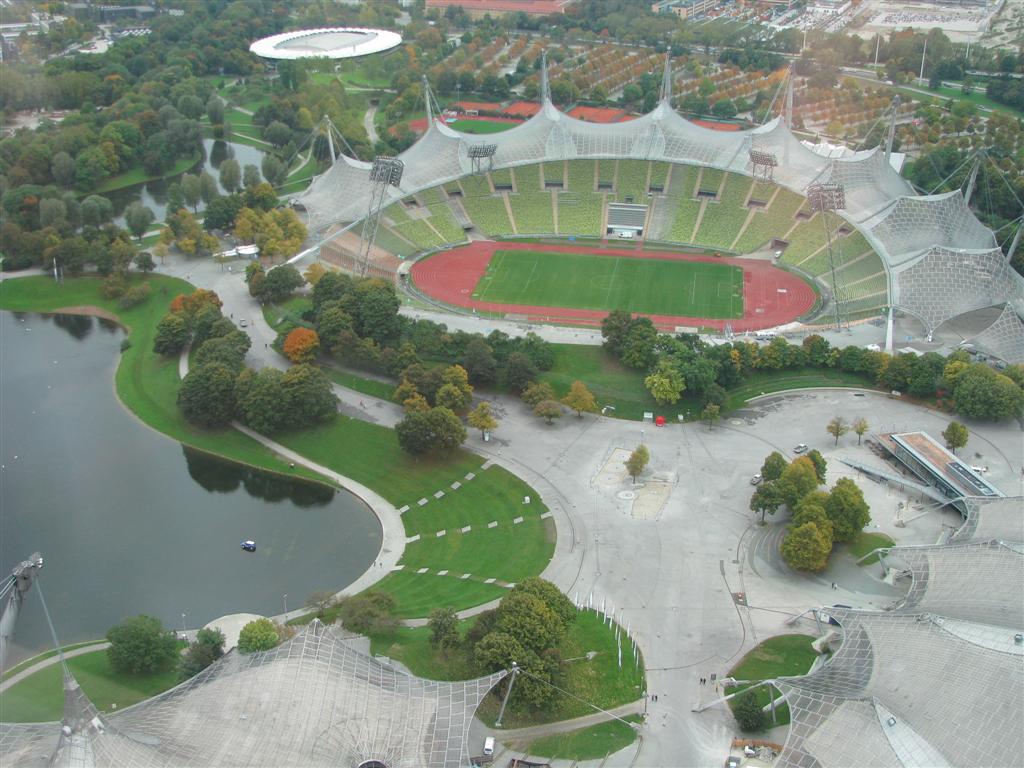
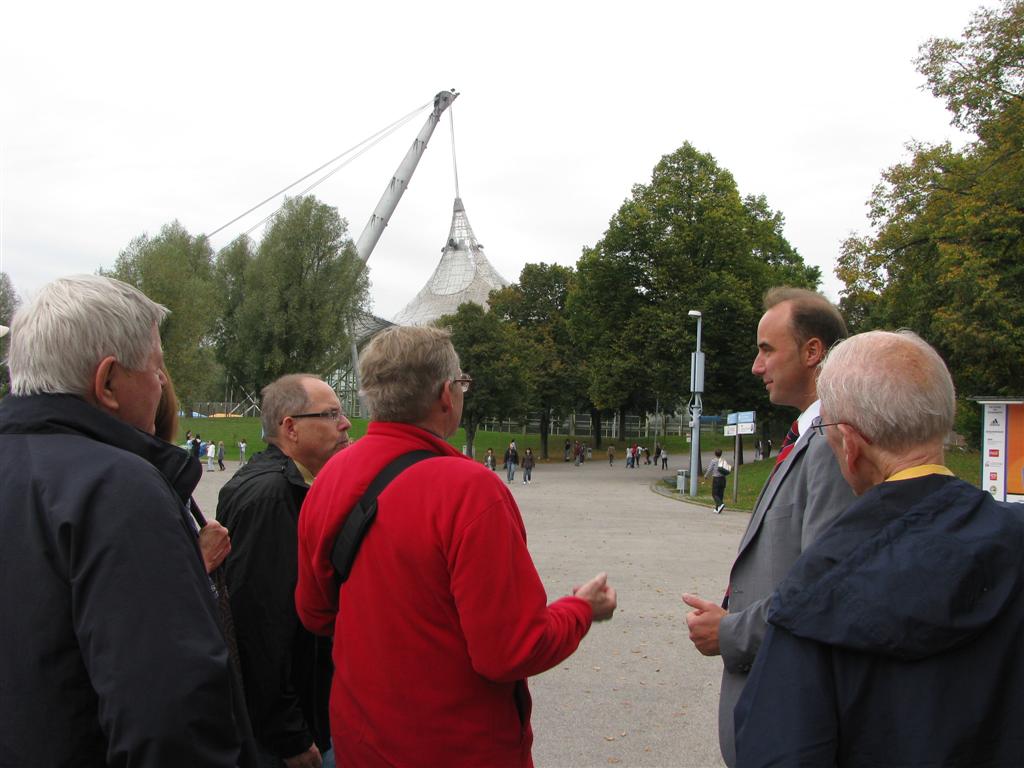
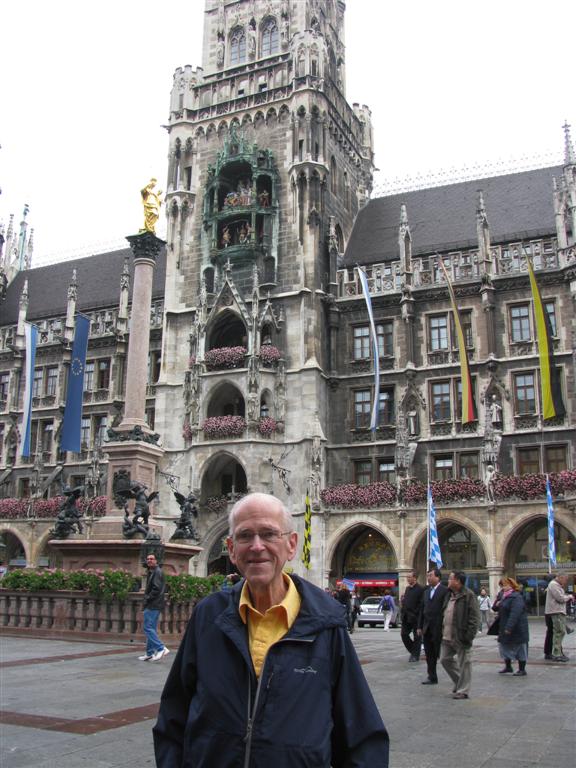
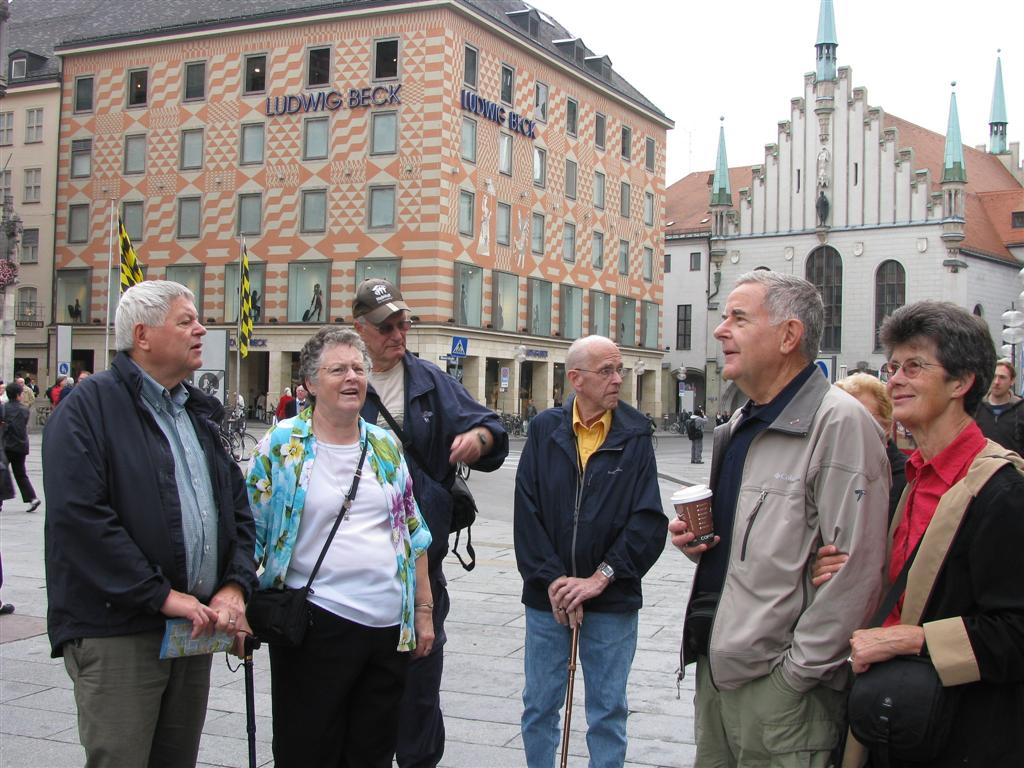
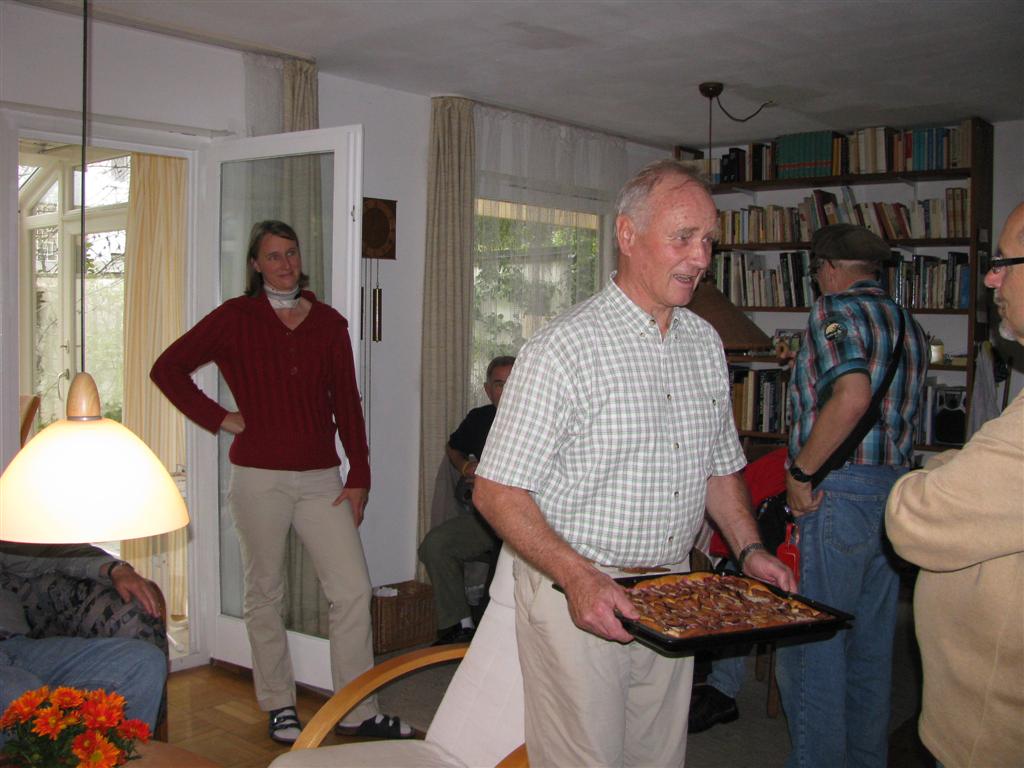
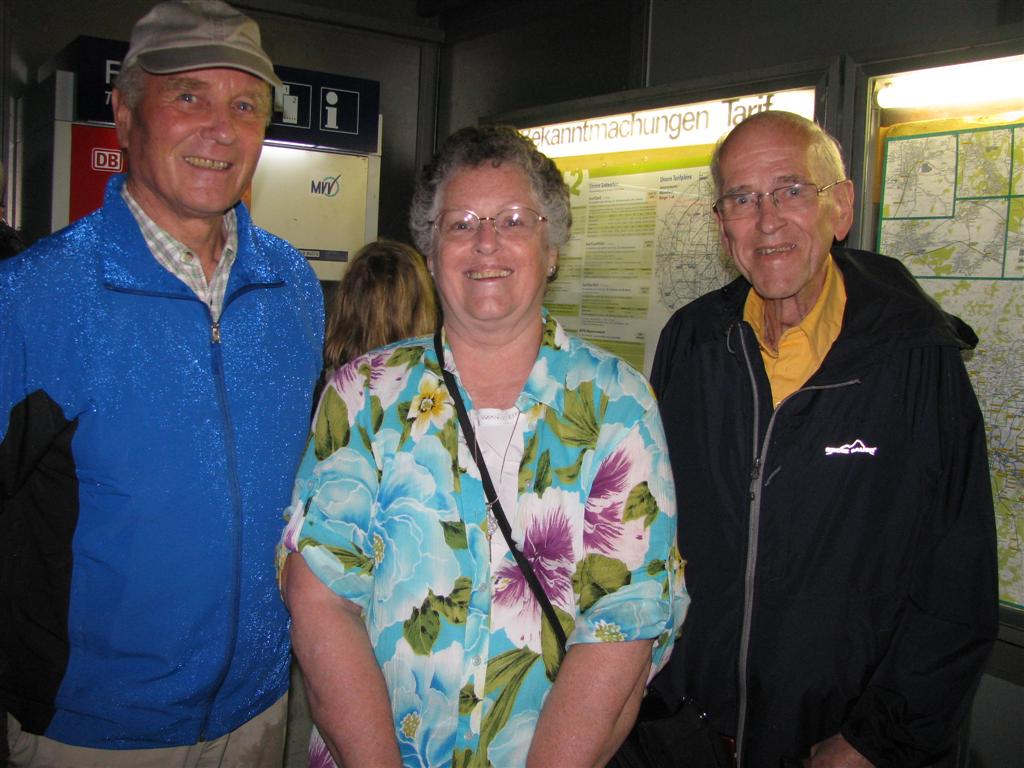
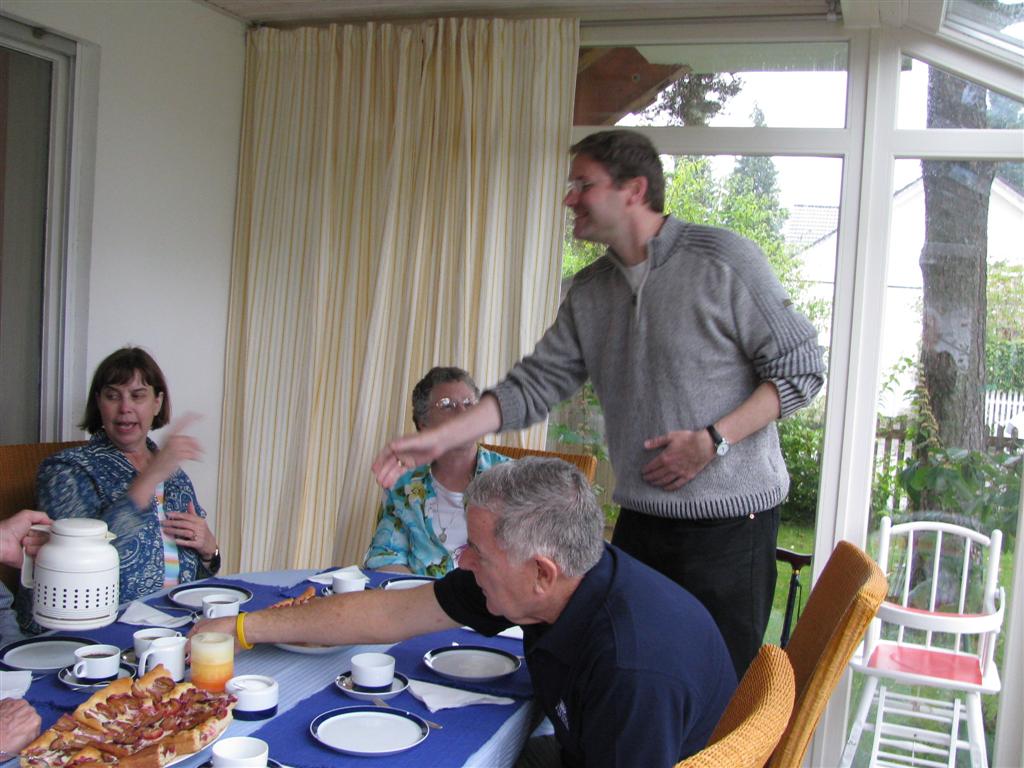
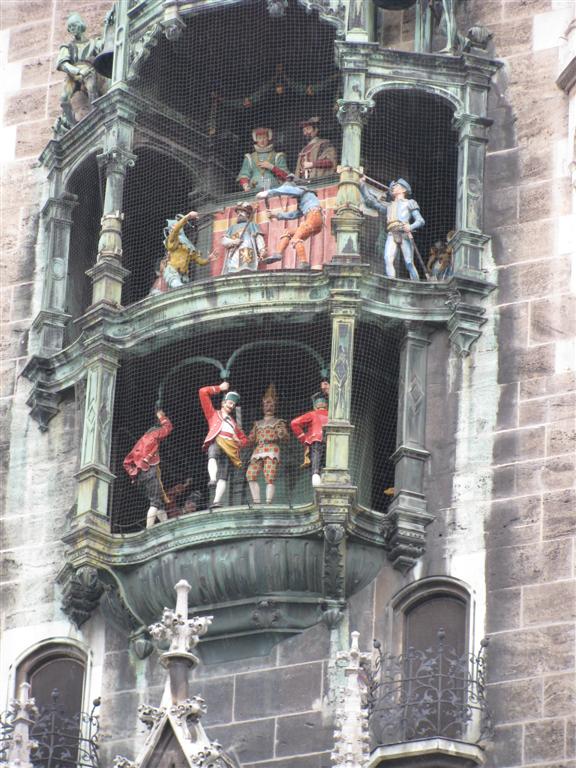
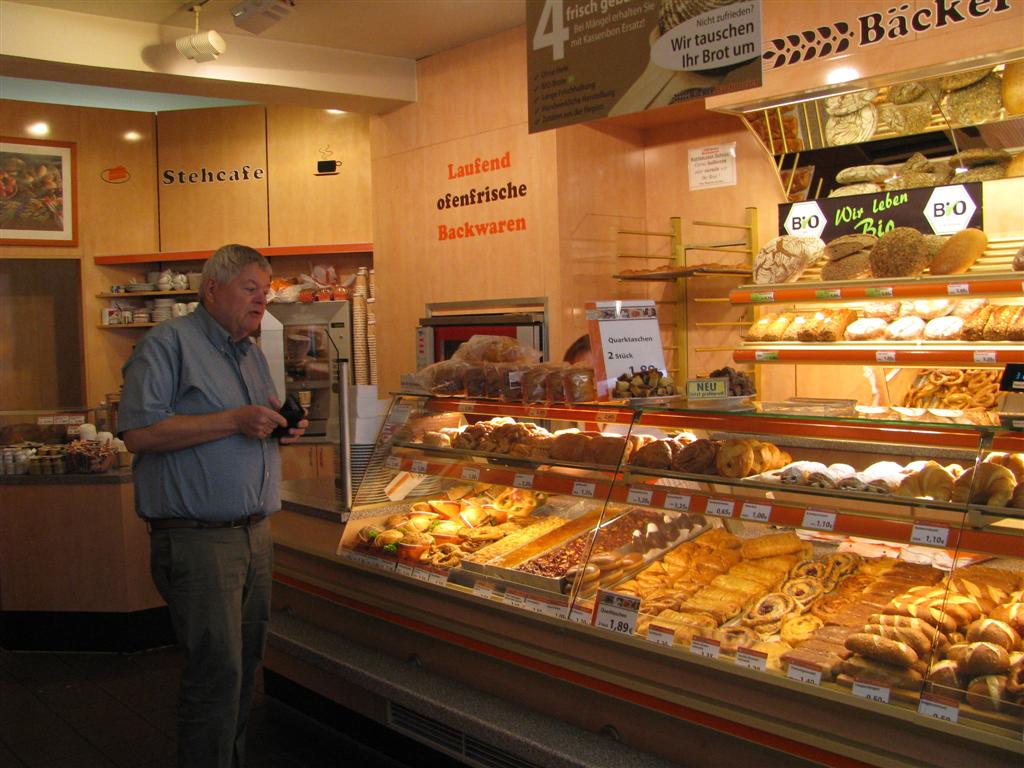
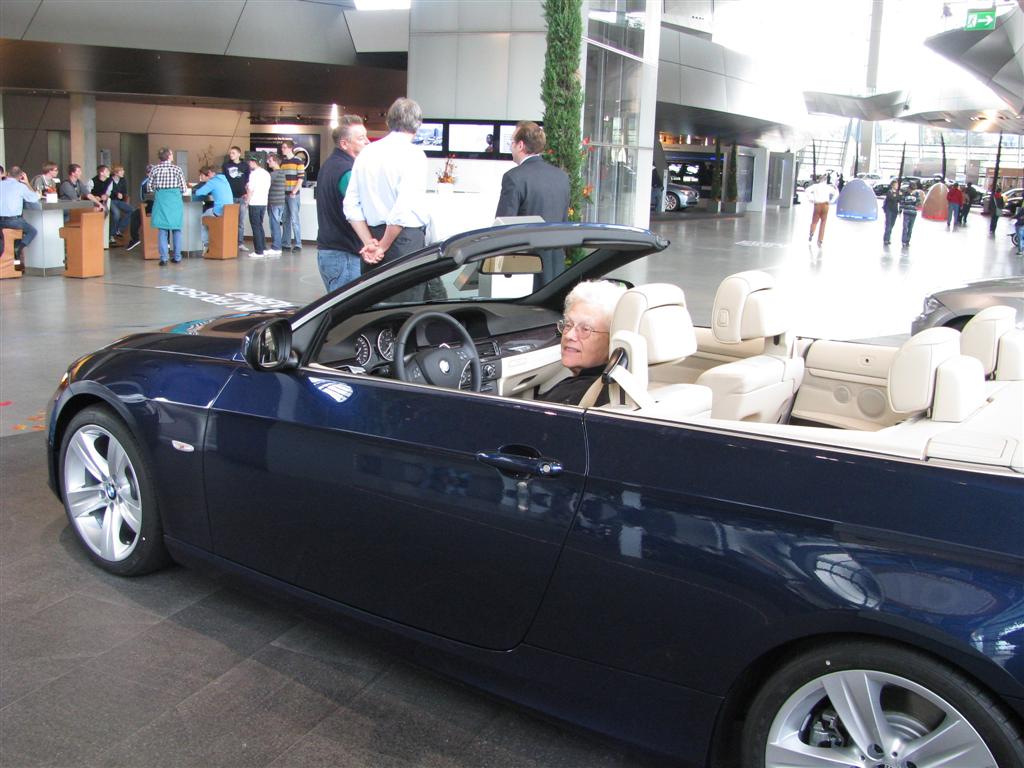
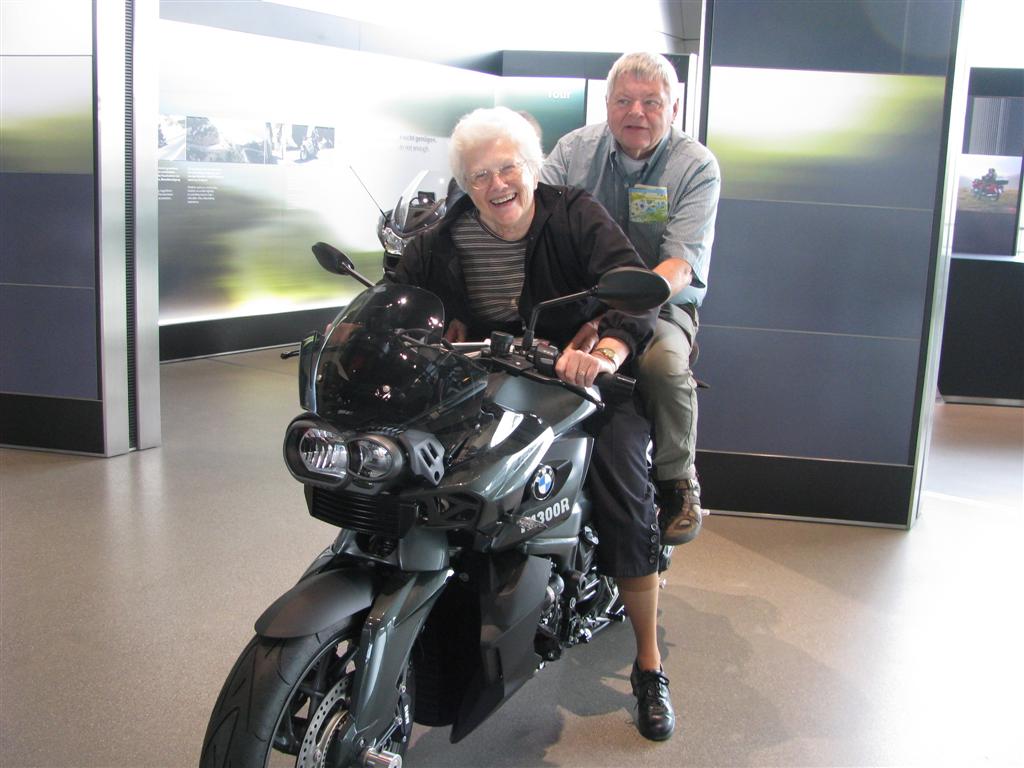
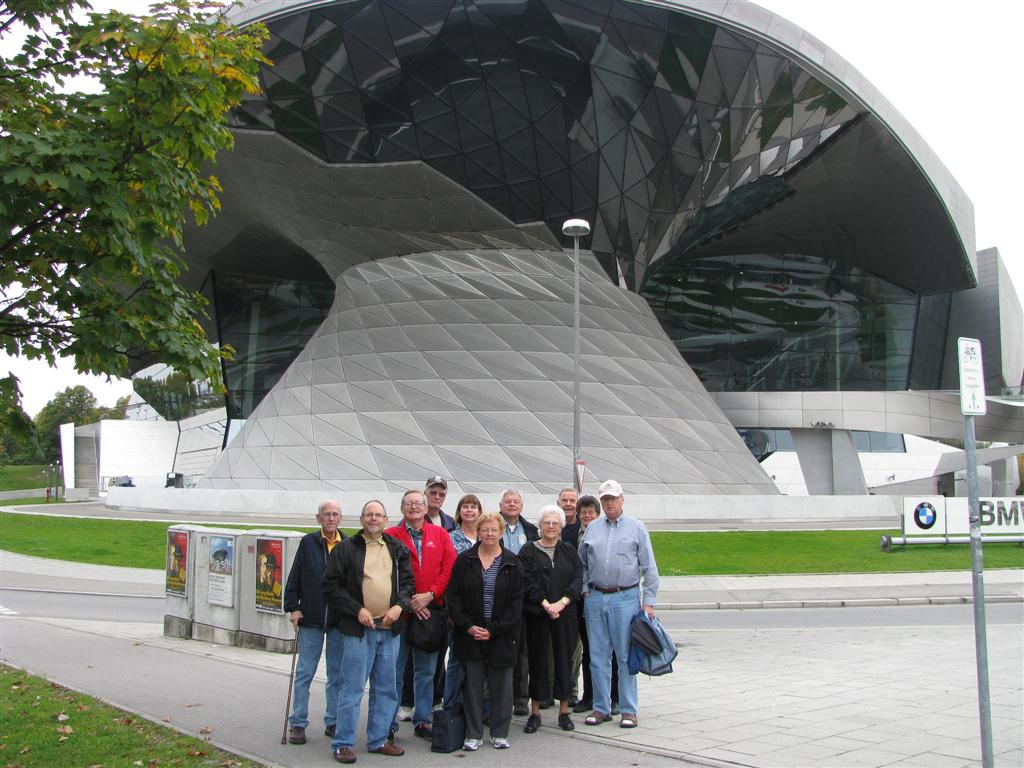
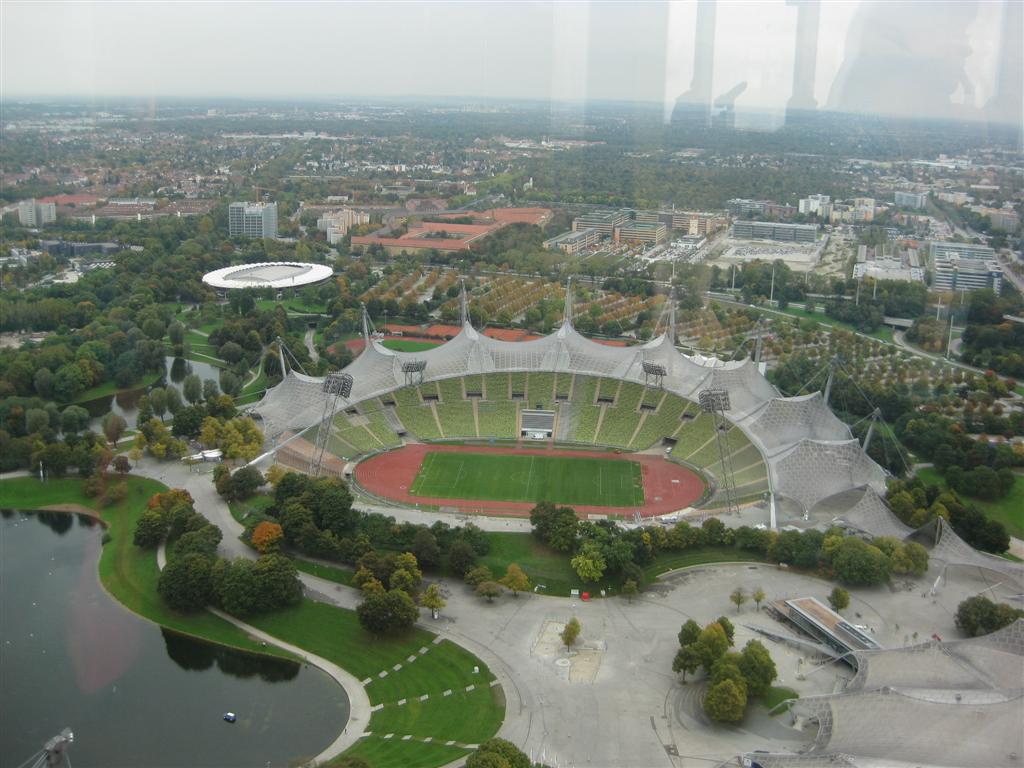
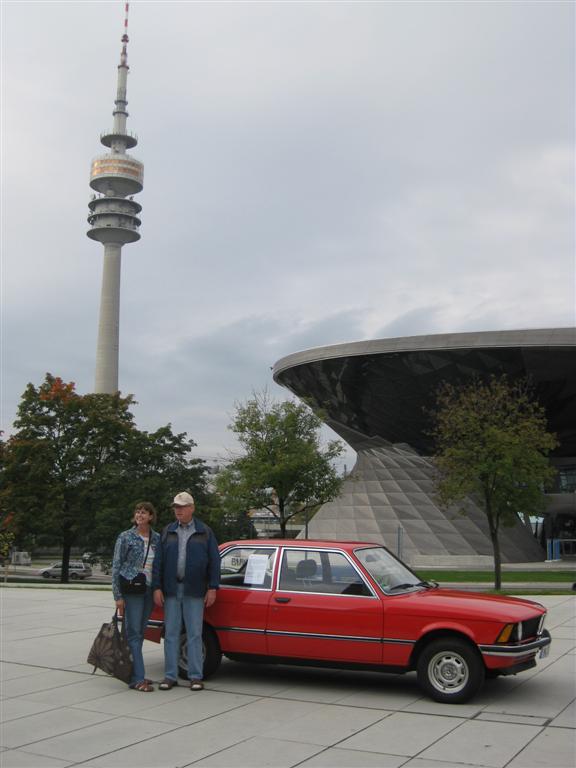
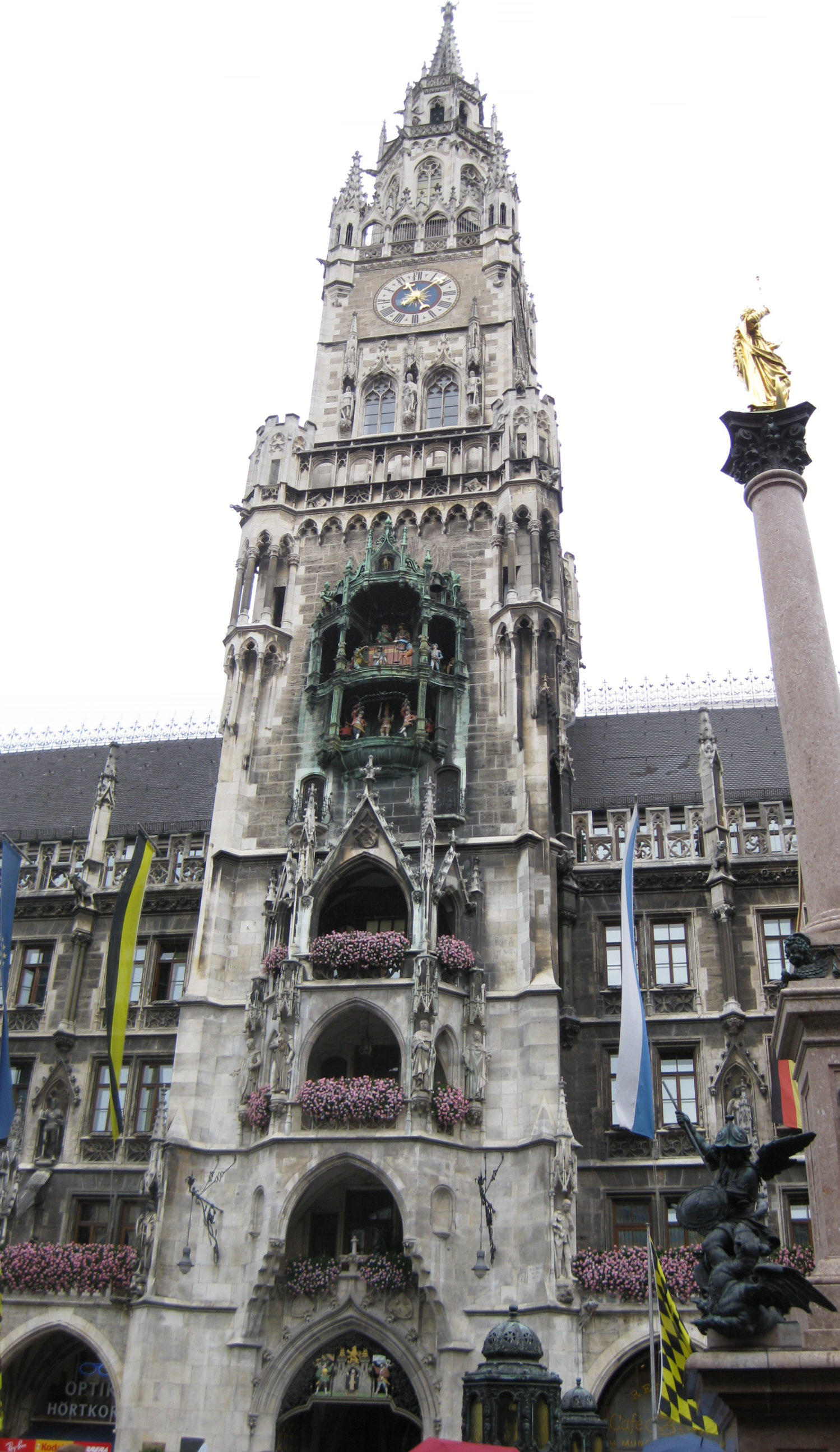
.jpg)
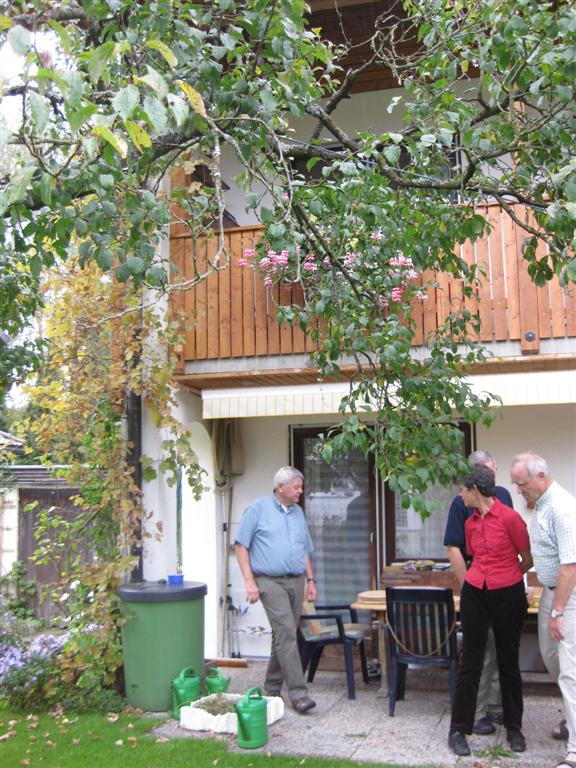
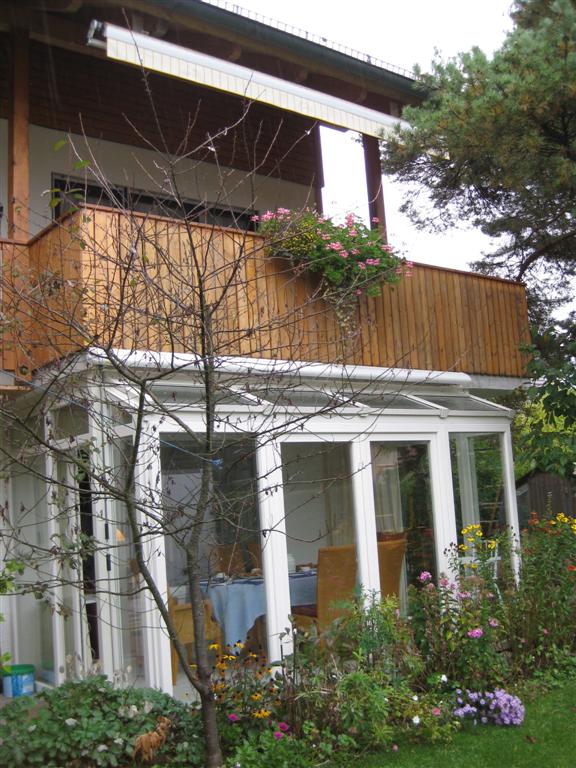
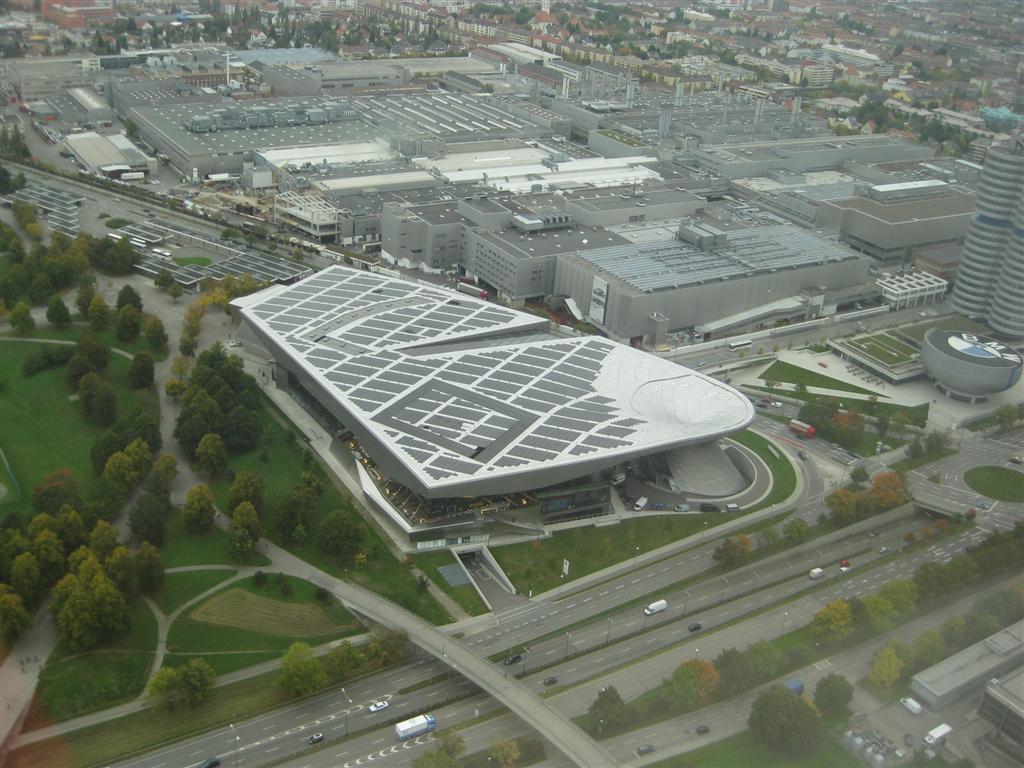
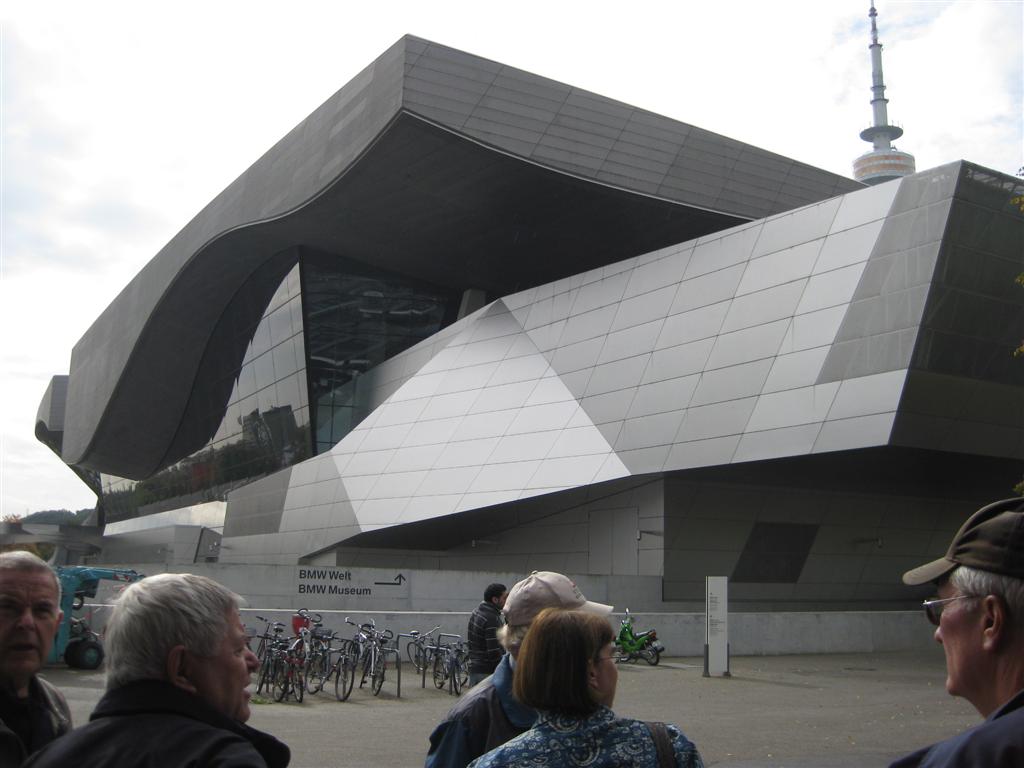
|
|
Schwäbisch-Gmünd:
The Gottwalds - America and
Germany
After 3 days in Munich it was time to get on
with the next part of our journey. Rod and Pat Bullard flew out to
Venice for their cruise to Florida, Tom O and Carl flew home and the
remainder of our split up into two groups. Marv and Nancy, Richard,
Rick and Levonne and Blanche rented a van and headed south to visit
south Bavaria. Elaine, Joel, Tom and Burt rented a car and headed
northwest to visit Gottwald relatives.
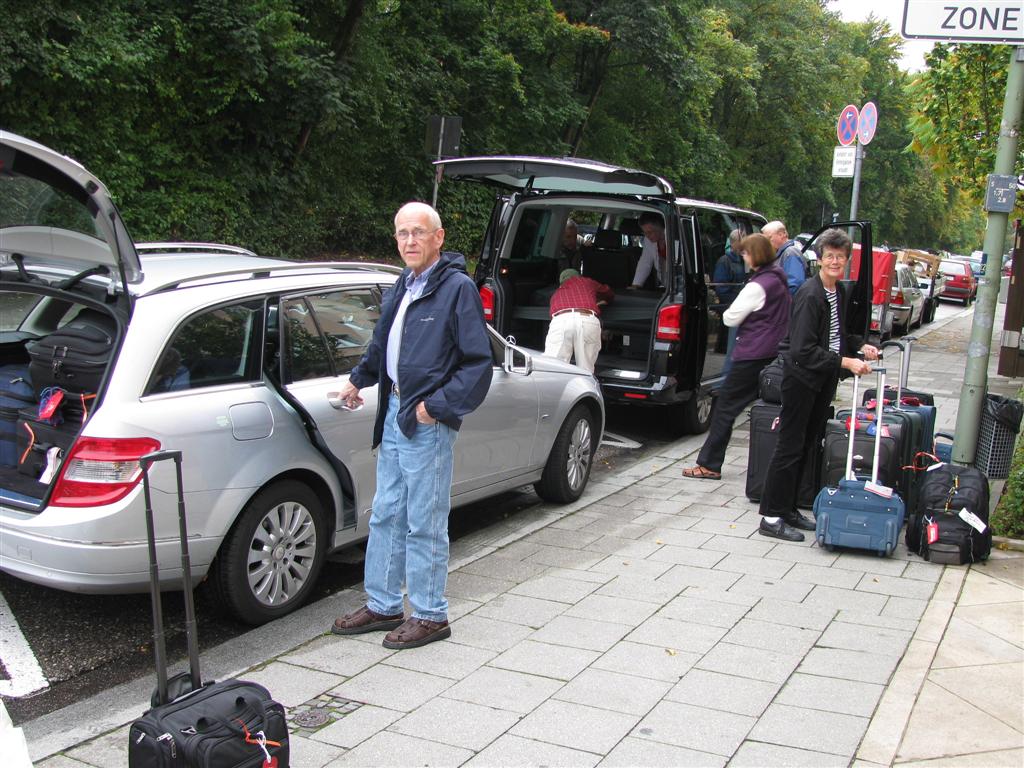 It took a long time to figure out how to get all of our bags in the
car!!!!
It took a long time to figure out how to get all of our bags in the
car!!!!
The first group visited Oberammergau,
Neuschwanstein Castle, Augsburg, Dachau and Dinkelsbuehl. The second
set off for Kornwestheim, a suburb north of Stuttgart to find
Gottwalds.
In 1883, Moritz Gottwald, grandfather of
Burt and Elaine, migrated to the United States, first to Nebraska
and later to Oregon. Joel and Elaine live on the farm he purchased
in 1903. Moritz left behind a brother and sister in what was Austria
at the time, now the Czech Republic. Descendants of Moritz’s
brother, Joseph, became refugees after World War II and settled in
the Stuttgart area. Joel and Elaine have visited them several times,
the first in 1965.
The first stop was in Kornwestheim where two
sisters, Mariann Gottwald Herman and Hedwig Gottwald Weidlich, her
husband Franz live. They had gathered with children Monika and
Dieter, Uwe, Renate and granddaughter Lena. We spent a delightful
afternoon and evening visiting with them and catching up since we
saw them last in 2001. Uwe and Renate we hadn’t seen for 45 years.
We had wonderful desserts and coffee in the afternoon, and later we
had ravioli that Hedwig had prepared. We spend some time looking at
genealogy and making additions and corrections. As the sun set, we
drove to a small village near Schwabish-Gmuend about 30 miles away
where we had hotel reservations. Cousin Gerhardt Gottwald was there
to meet us and make sure we got settled in. We had stayed in the
same hotel in 2001.
The next day we drove in to Swabish-Gmuend
to walk around the city center and look in some of the shops.
Shortly after noon we had to get back since a big party was planned
by others of the Gottwald clan. There are so many who wanted to meet
us that Gerhardt Gottwald, who was the main instigator, arranged to
have a meeting room in our hotel. We were to arrive at 3 when those
that were able to get away that early could come for dessert and
coffee. Oh, what wonderful desserts arrived prepared by various
relatives.
Gerhardt had made name tags for everyone and
gradually through the afternoon and early evening, more and more
came until we were about 30. When it came time for dinner, we
ordered off the menu of the restaurant. It worked out well since we
four sat at various tables and younger relatives could help with
English-German translation. The last of the visitors left about
11:30 and were we tired after the intensity of the interaction with
all the families.
The next morning we packed up to join the
others for a stay in Rothenburg ober Tauber. On our way, we drove
through Durlangen where some of the family had settled and still
remain. Maria and Sarah Gottwald invited us to stop for some morning
coffee in the house that Alois Gottwald built soon after the war. At
various times members of his family lived with him and his wife as
they were getting established.
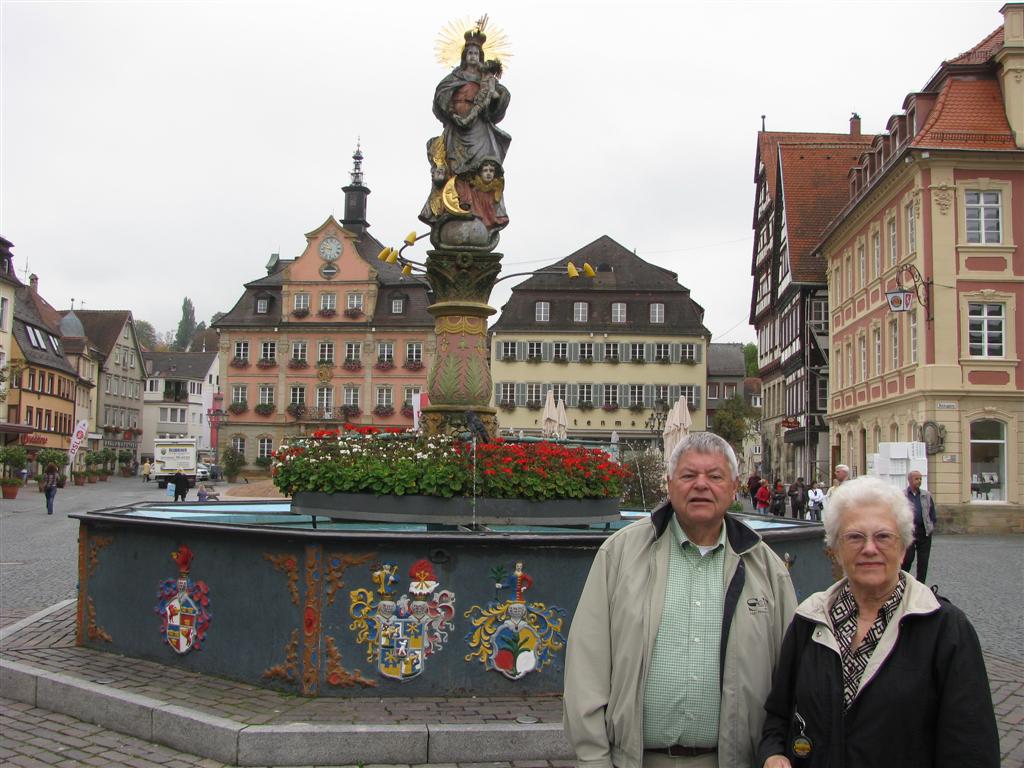
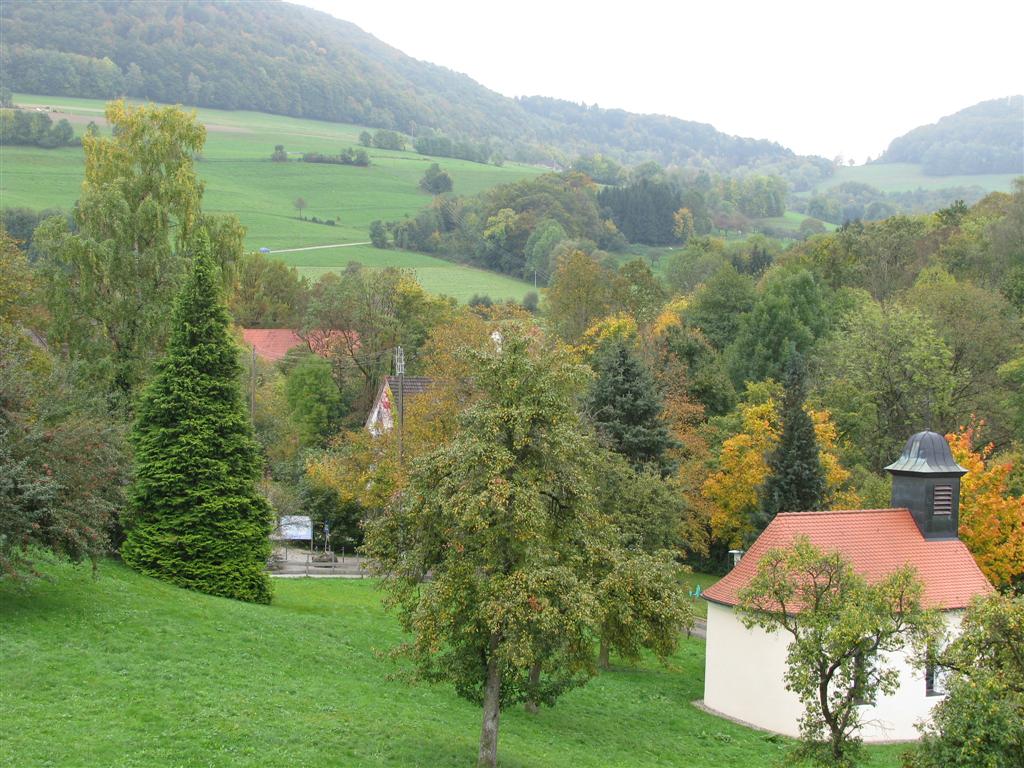
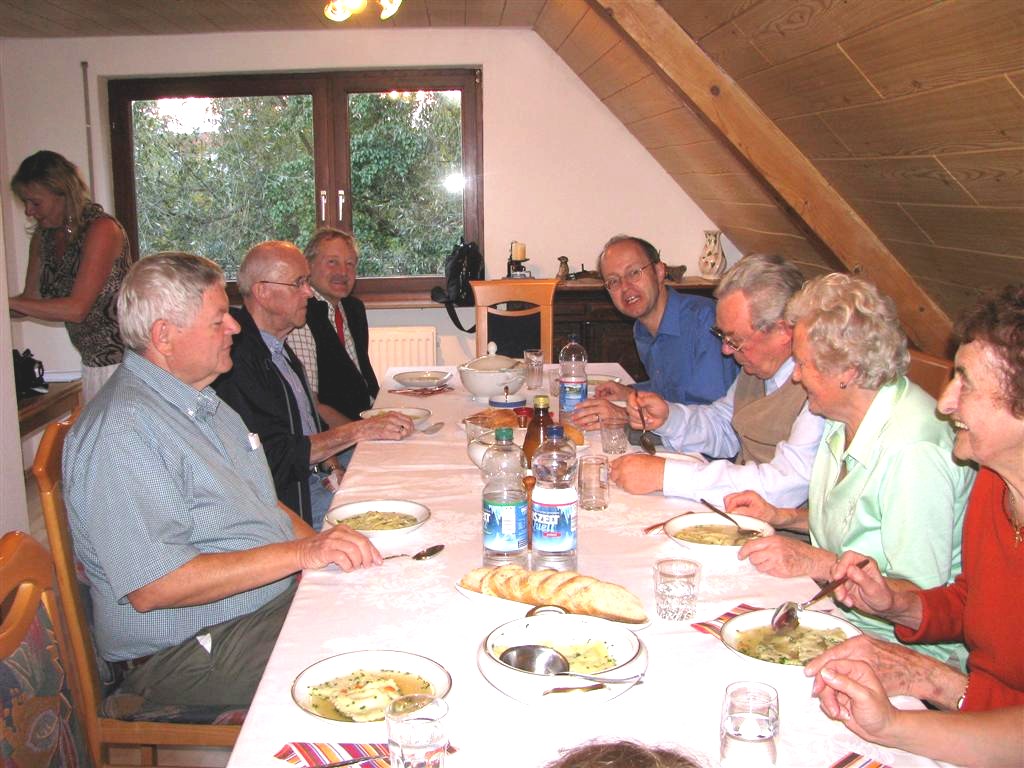
Renate, Joel, Burt, Tom, Dieter, Franz, Hedwig and Mariann
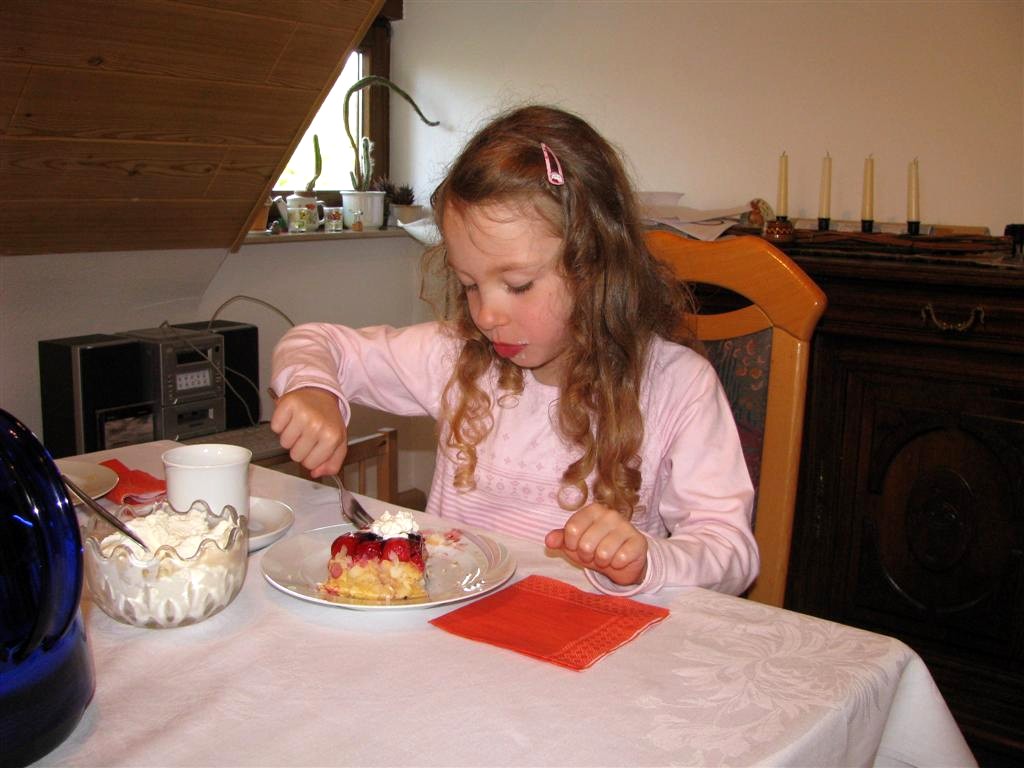
Lena Fischer
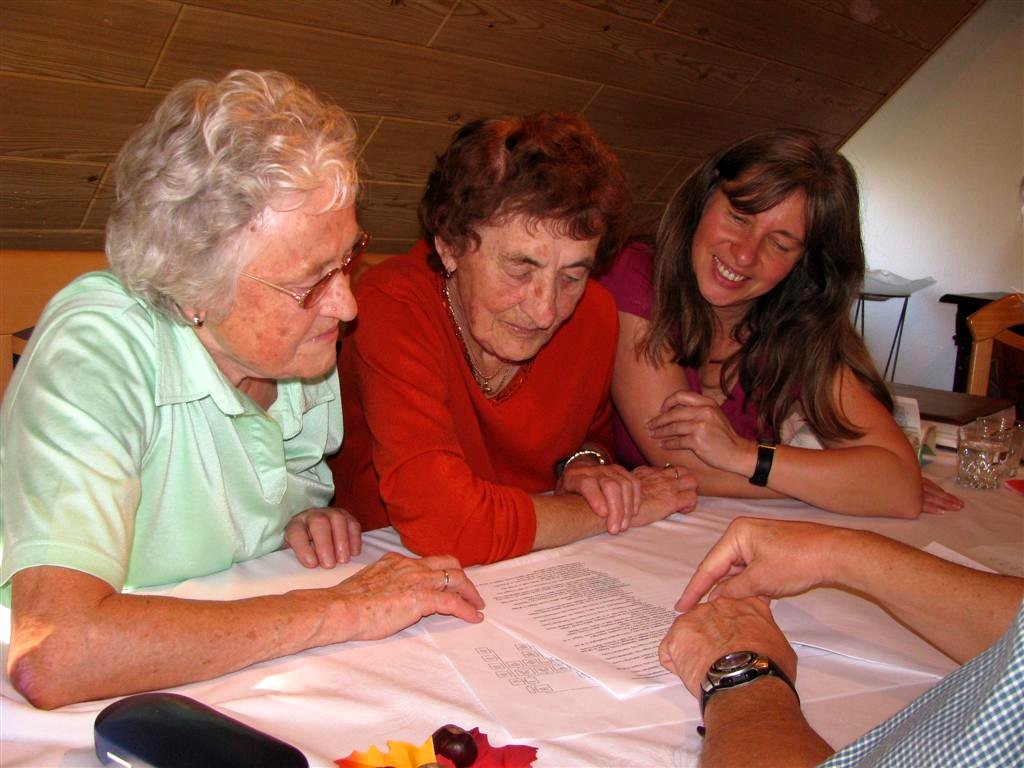
Hewig, Mariann and Monika
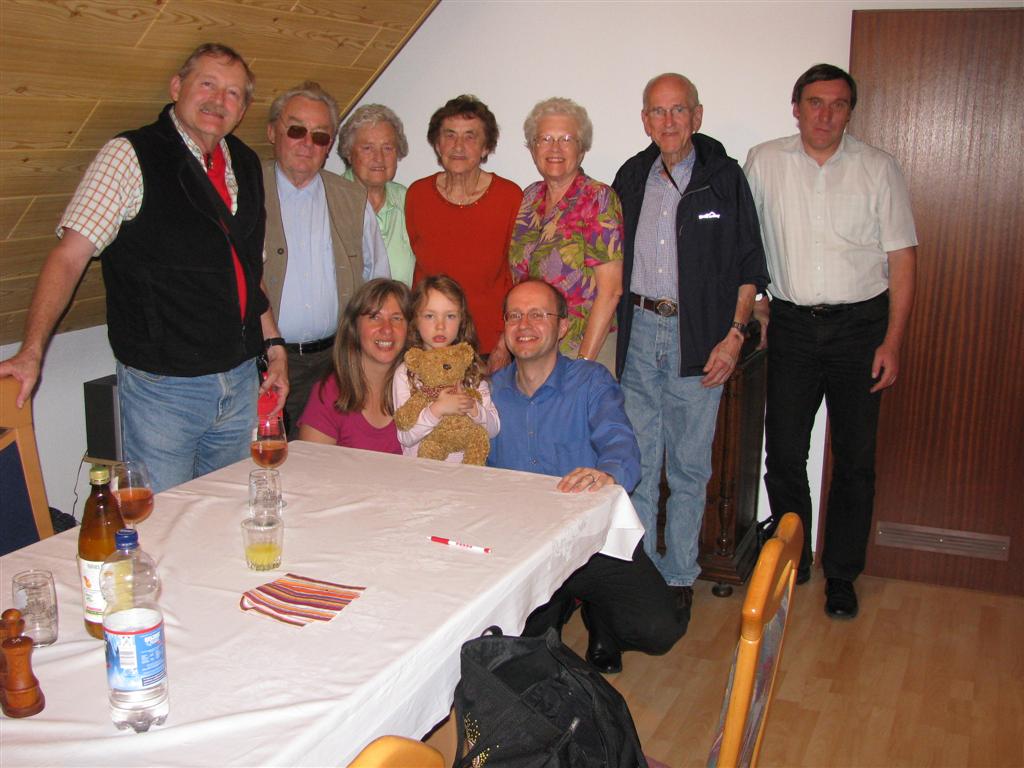
Tom, Franz, Hedwig, Mariann, Elaine, Burt, Uwe: Front: Monika, Lena,
Dieter
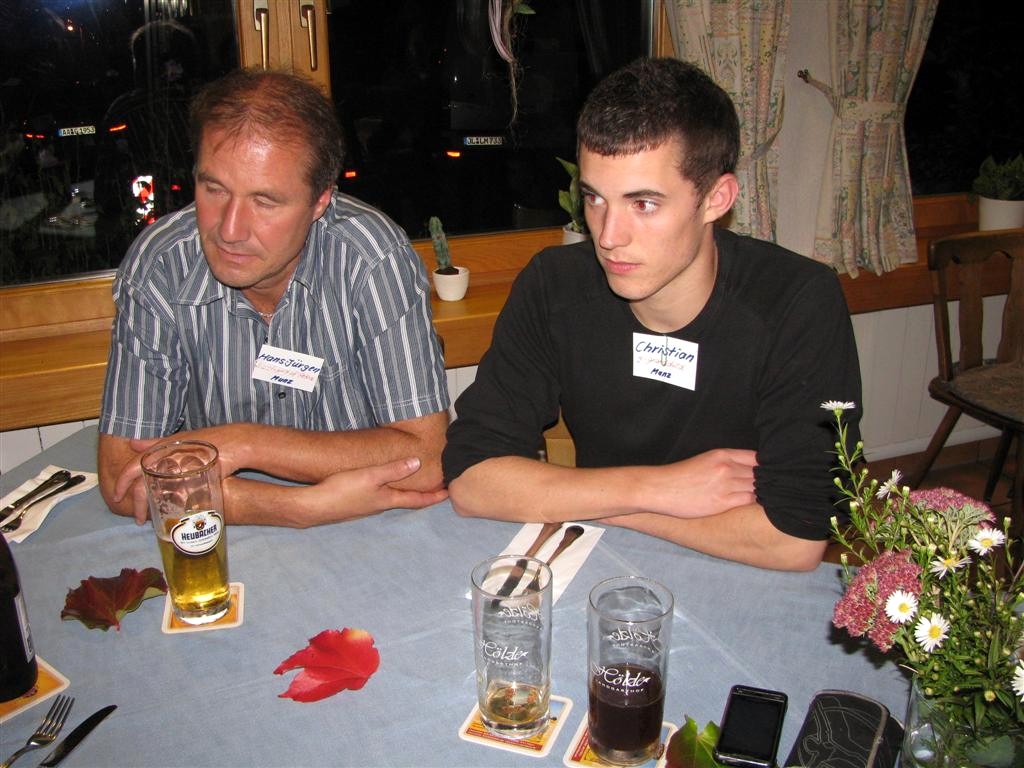
Hans-Jürgen and Christian
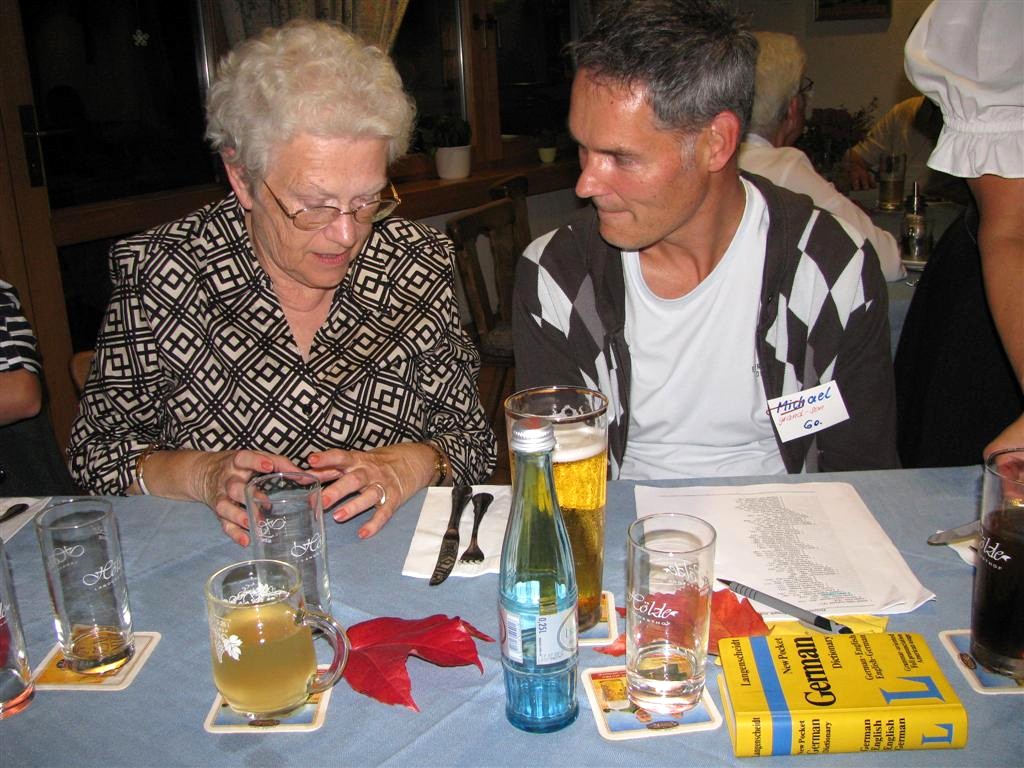
Elaine and Michael
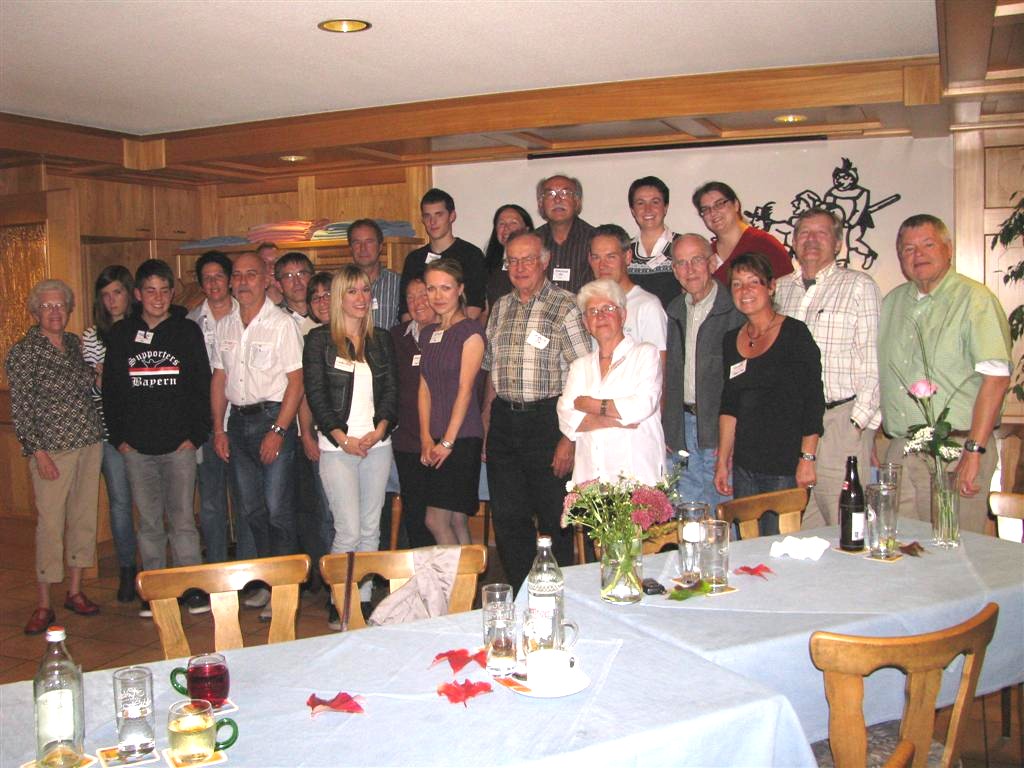
Gottwald family reunion |
|
Rothenburg ob der
Tauber
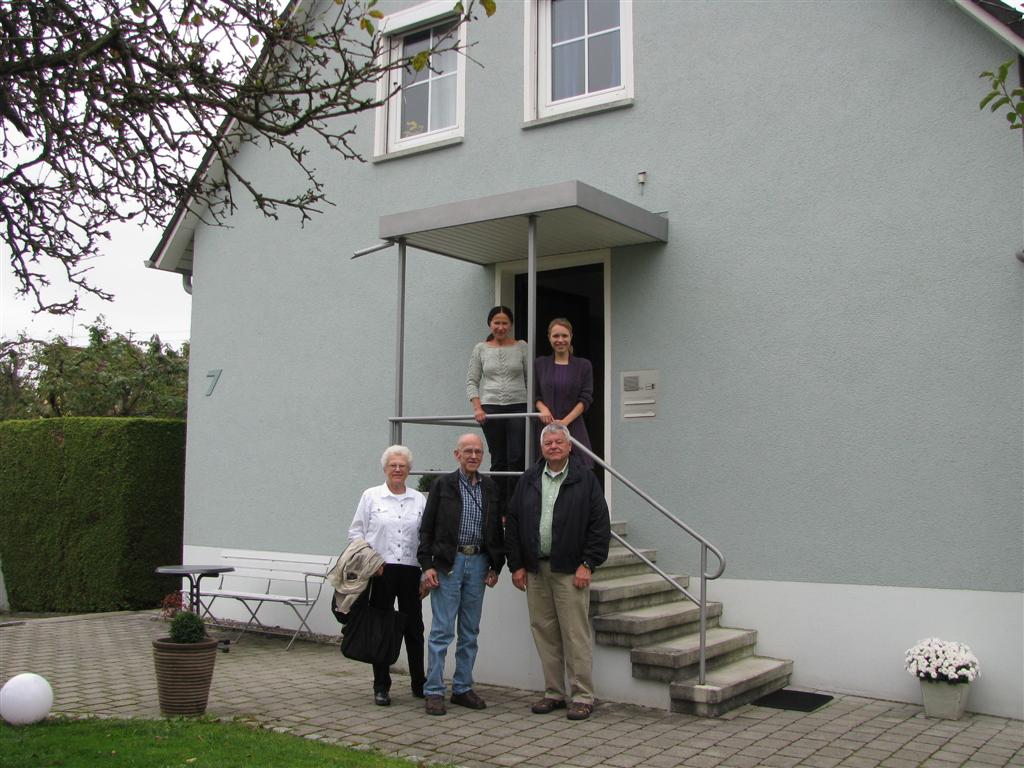
Maria, Sarah, Elaine, Burt, Joel: Saying good-bye to the Gottwalds
Leaving the “Gottwald” area, we had a
morning journey northeast to the charming old walled city of
Rothenburg ob der Tauber. Our hotel was just off the main square and
the GPS warned that we were in a restricted area. The streets are
very narrow and cobblestone. From our hotel we could get a pass
allowing us to drive there. After the bags were unloaded, we took
the car to a parking lot near the wall.
 Our Hotel
Our Hotel
There are many shops with every variety of
souvenirs, handcrafts, clothing, etc. A specialty of Rothenburg is
Schneeballe a kind of pastry made with something like pie dough cut
in strips, rolled into a ball and deep fat fried. Kind of rich for
me, but one can buy small ones.
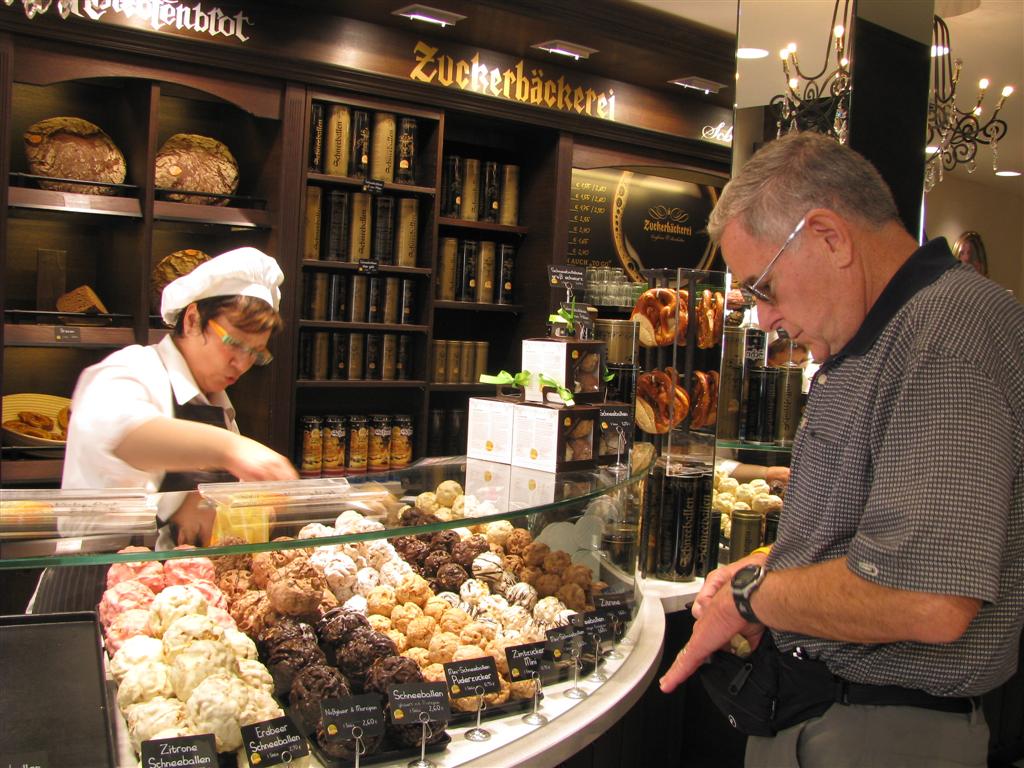
Snow balls: Rick
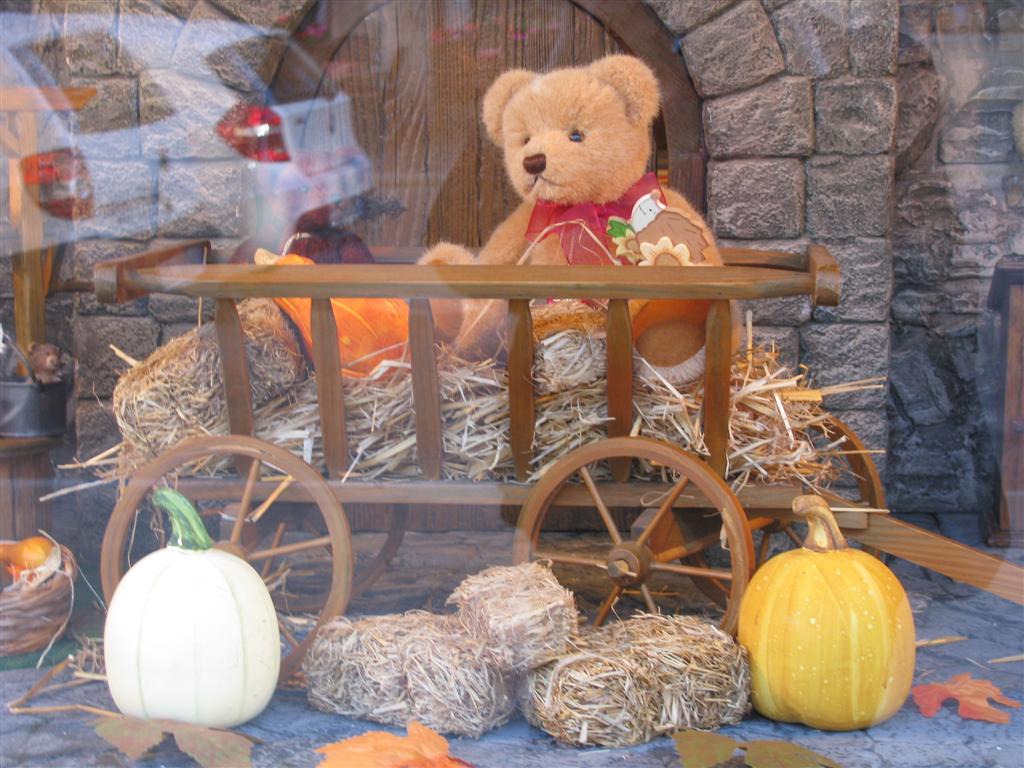
As a special treat to us, Andreas Essig, our
former exchange student who lived with us and went to Molalla, and
his wife Mariya, joined us from their home in Solingen. They had
driven to Nuremburg the day before.
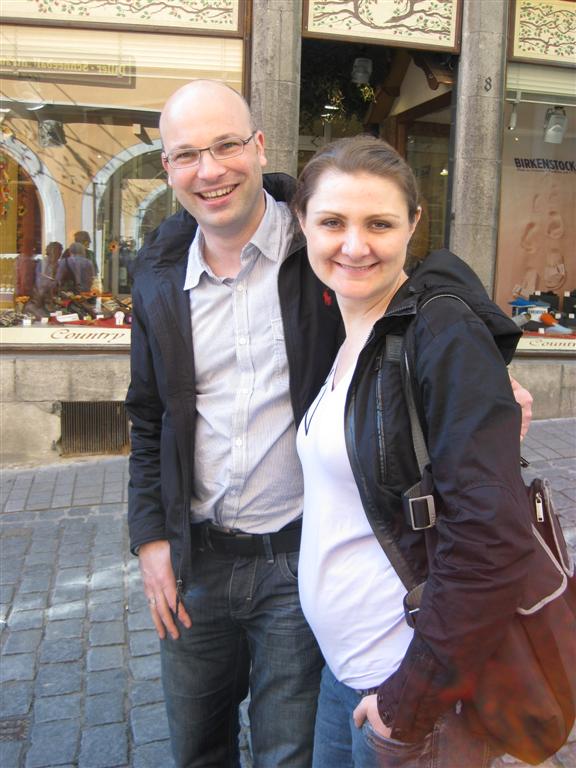
Andreas and Marija
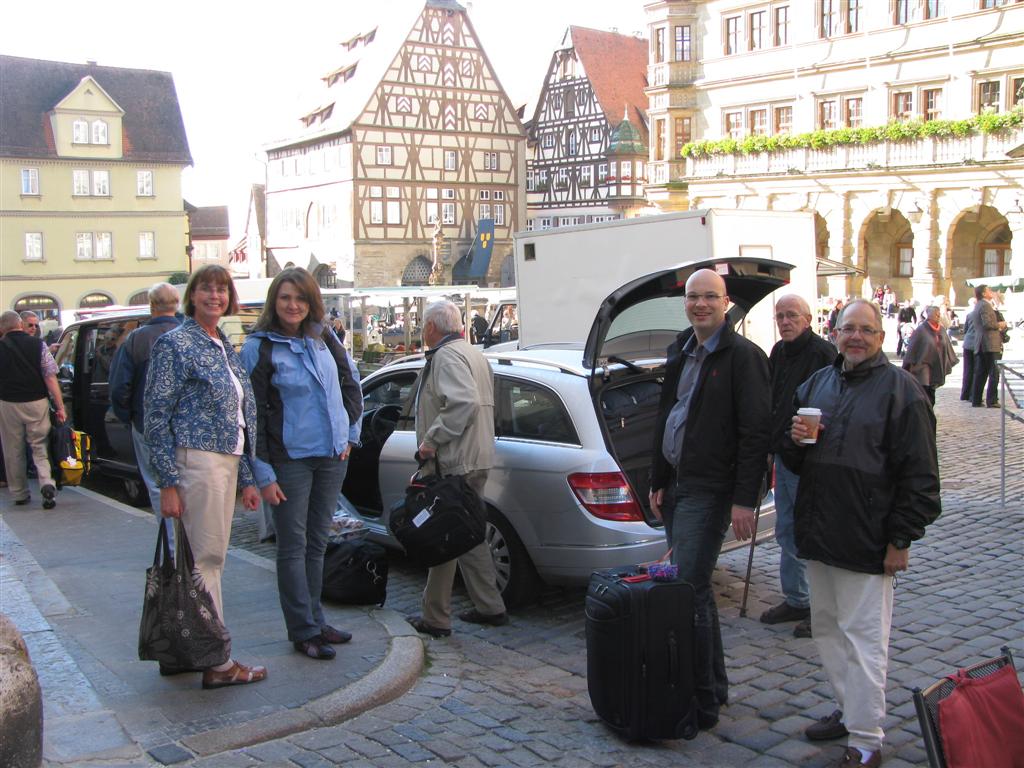
That evening after a good German dinner, we
joined the night watchman for an hour tour of the city. His droll
personality and falling voice, gave him a ghoulish persona. He gave
us a lot of history including the fate of the city in WWII. At the
end, German troops were stationed in the town so the allies wanted
to bomb them. The American commanding officer had fond memories of a
picture of Rothenburg his mother possessed. He decided to negotiate
a retreat of the Germans. They were under orders not to negotiate,
but their officer in charge decided to do it anyway. The city was
saved.

Richard, TomD with Night Watchman
In the morning, we looked out on the square
and saw that Saturday Market had started. There were vegetables,
cheeses, breads and craft items. We perused them all before we got
our cars, and packed them up for our trip to the Wurzburg area.
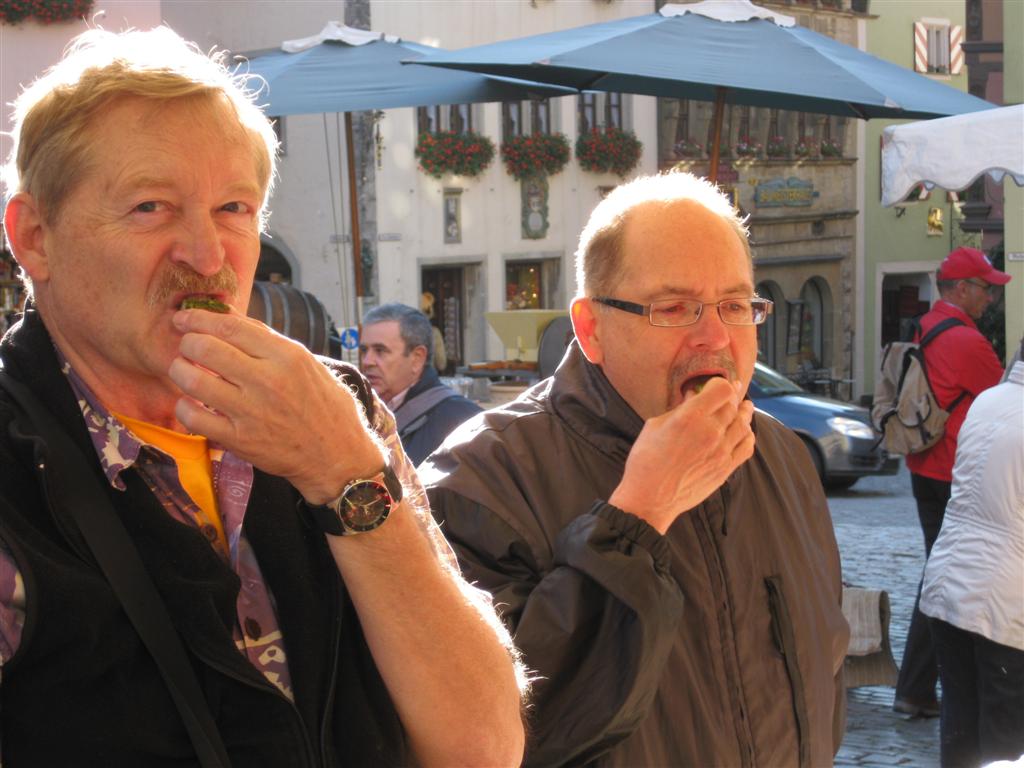
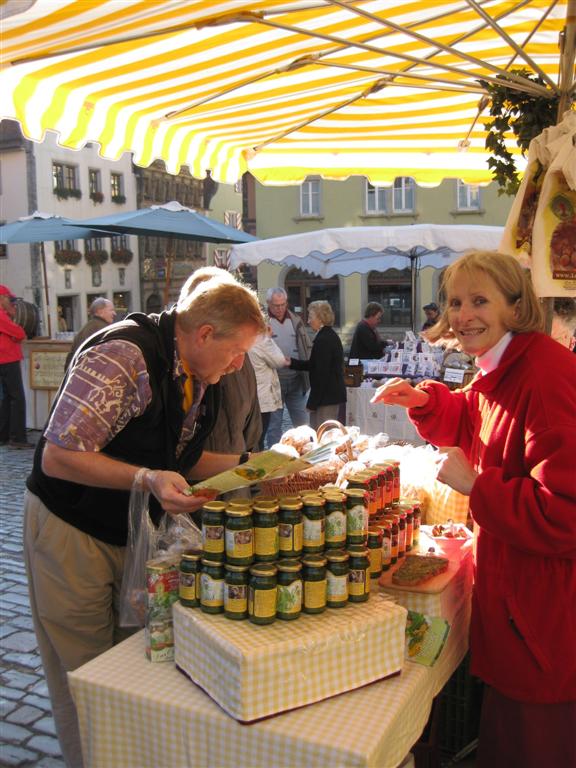
Saturday Market
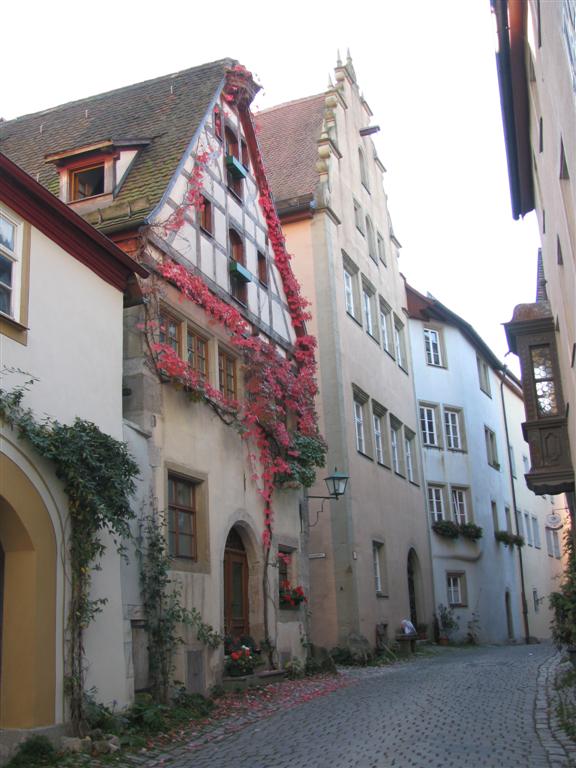
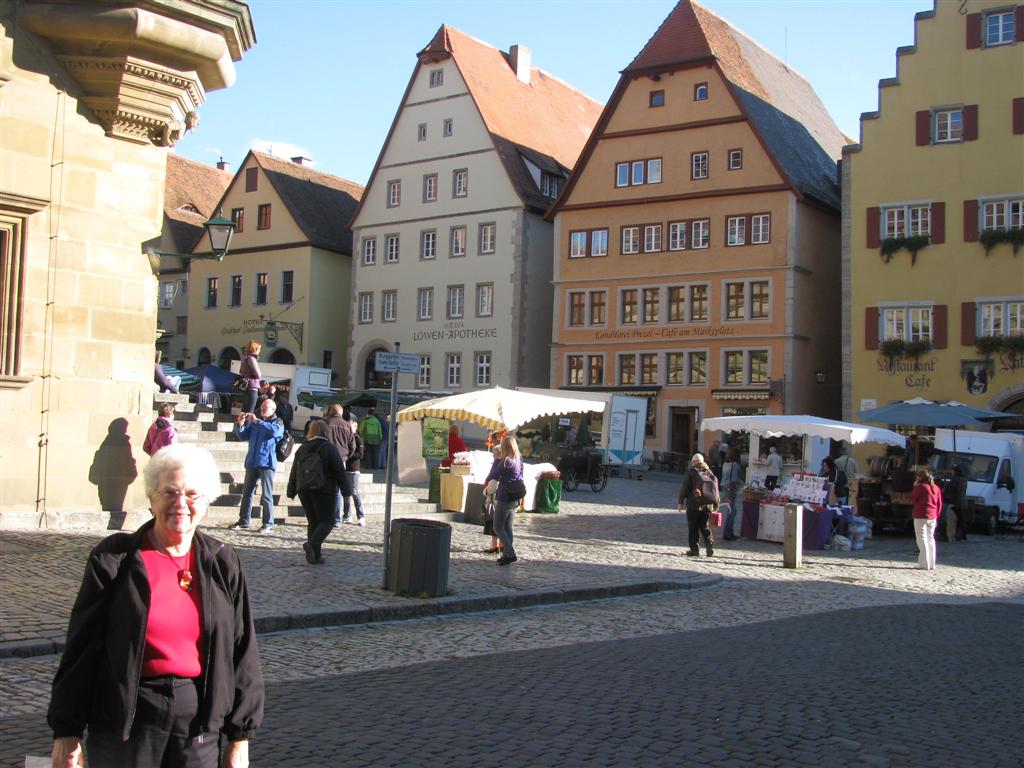
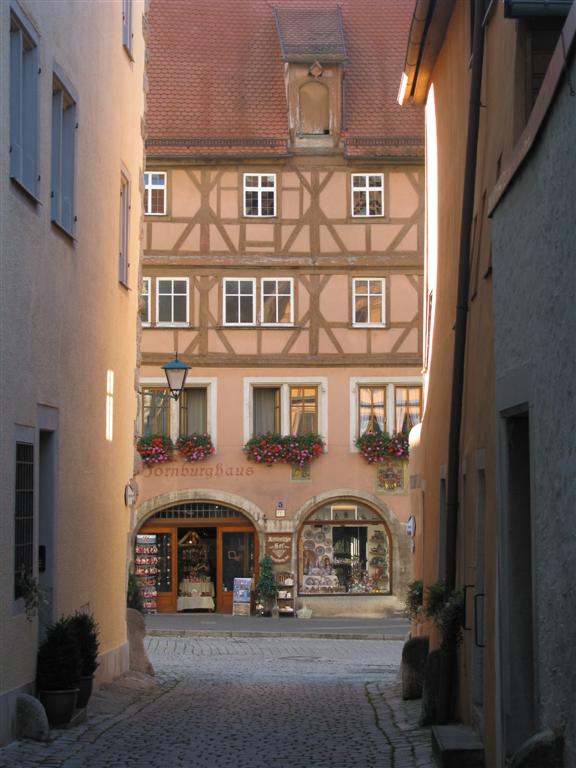
|
|
Schlossberg 1,
Reichenberg, Würzburg
Our morning journey took us through the back
roads from Rothenberg along the Tauber River to a stop at the town
of Creglingen to see a church, Herrgottskirche with an intricate
altar carved by Riemenschneider around 1500. The church is
undergoing extensive refurbishing, but one can view the beautiful
altar.
Our drive was through rolling farmland, and
we saw lots of harvesting including huge piles of sugar beets, and
truckloads of corn silage. Everything is very green from the
September rains, but we’re finding beautiful sunny days in the 60’s,
great weather for finishing up the farming before winter. Some
fields had been recently plowed.
Our destination was Schlossberg 1, where
another Molalla exchange student, Appolonia Heisenberg has lived for
many years with her husband Martin. They rent part of a castle
complete with walls dating back to the 12th century. We took a tour
around and saw the heating plant that burns shredded wood from the
forests of the castle owners, part of the interior wall that shows
woven sticks and mud.
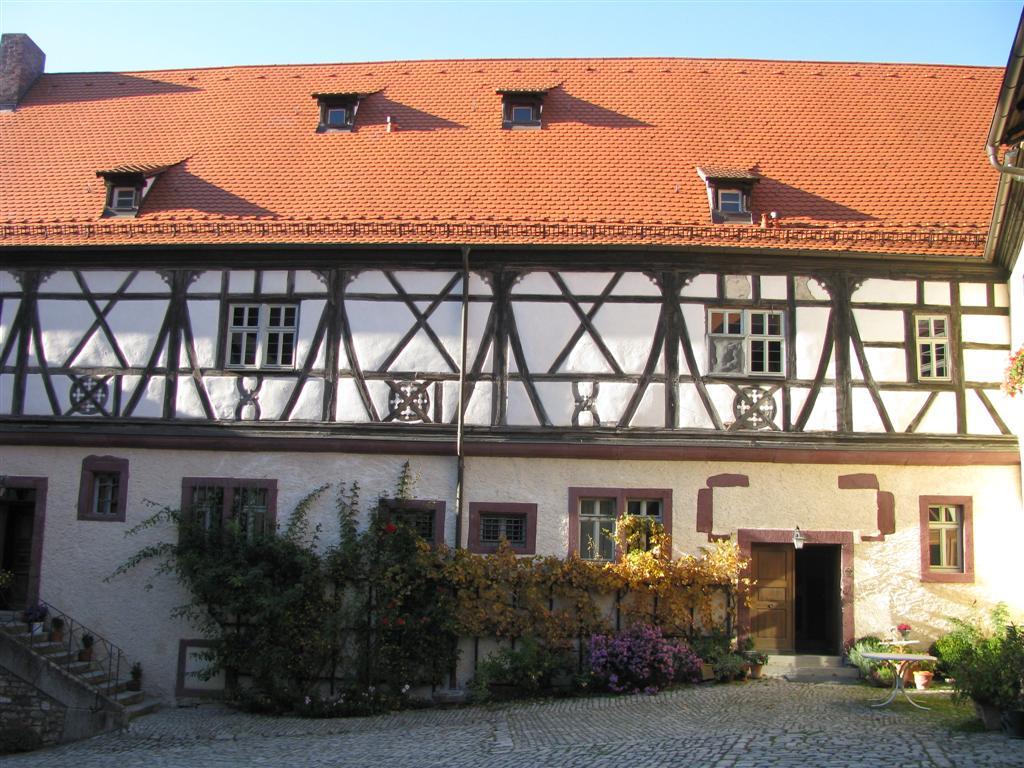
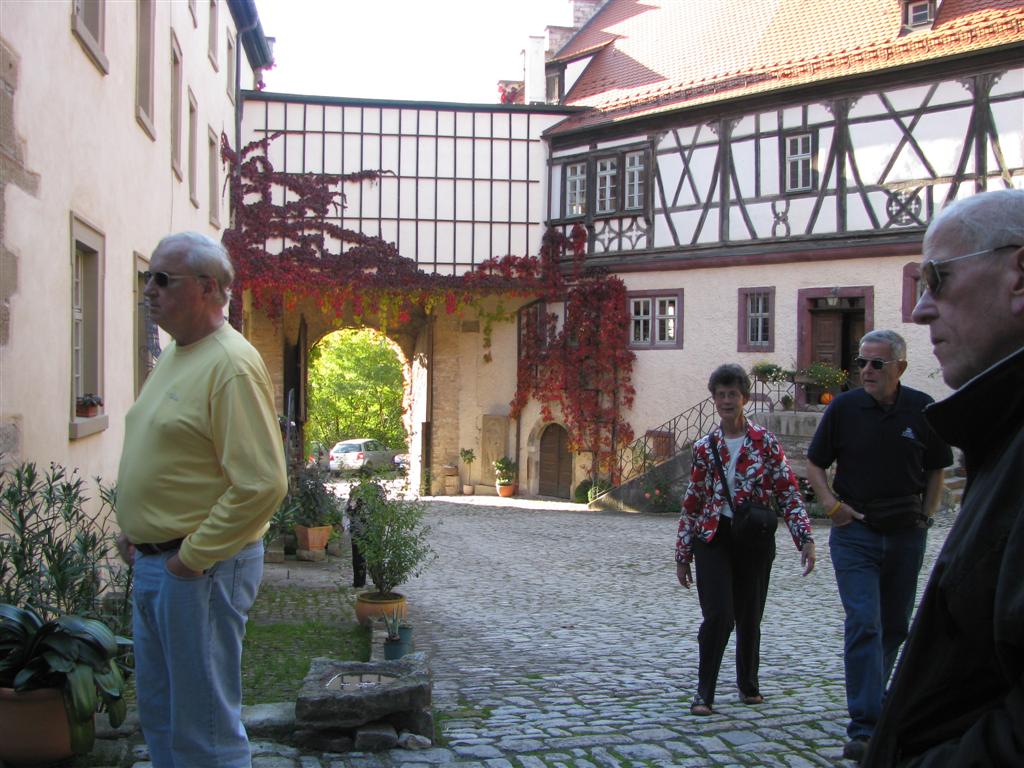
At the Schloss
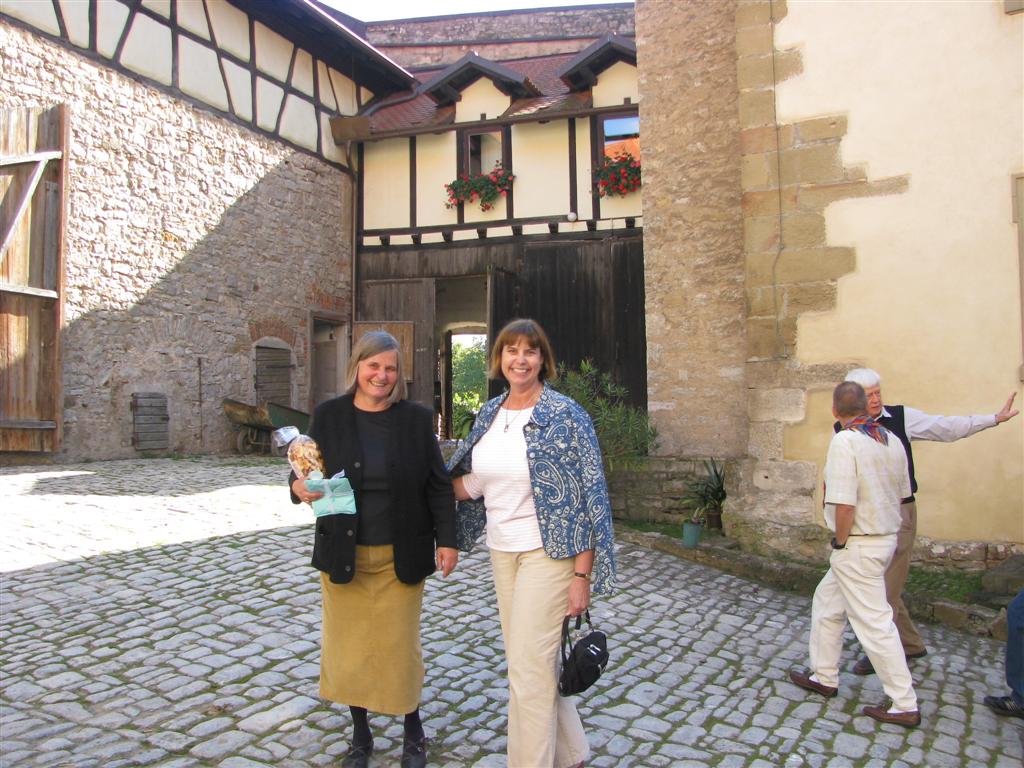
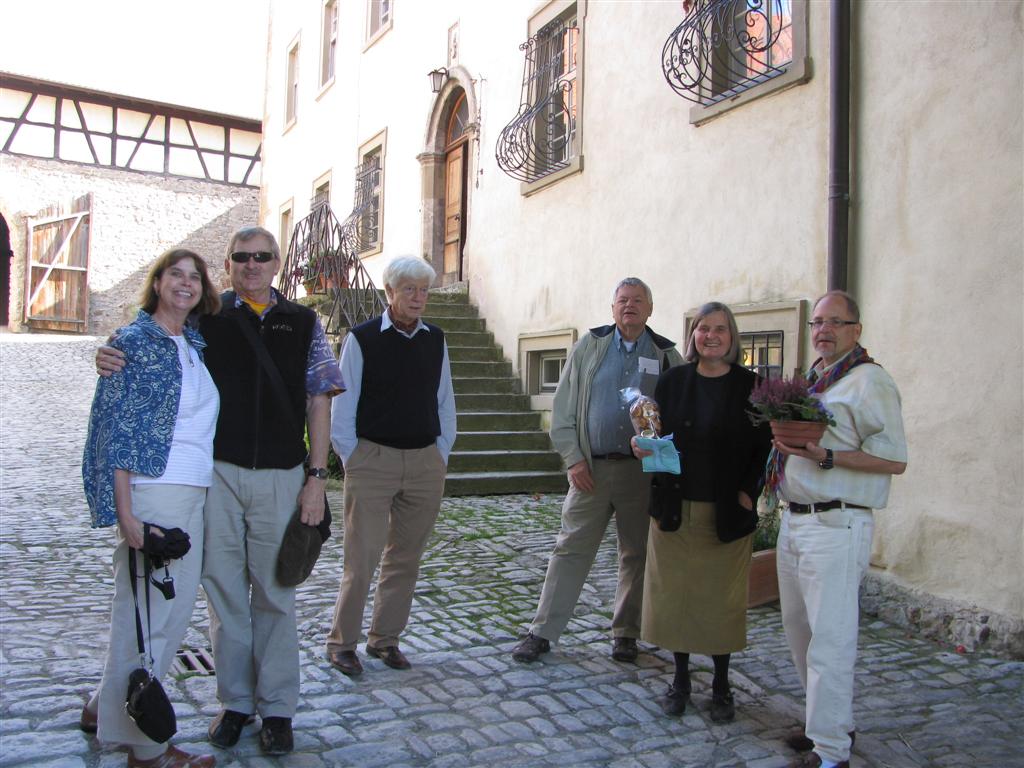
We were led through the wall to a garden where
tables had been set for a beautiful lunch of typical local foods
prepared for us. We had been assured that the lunch would be simple,
but it was hardly that. There was much visiting and catching up to
do. Tom had been in Api’s class at Molalla, and Levonne had been a
student a couple years behind.
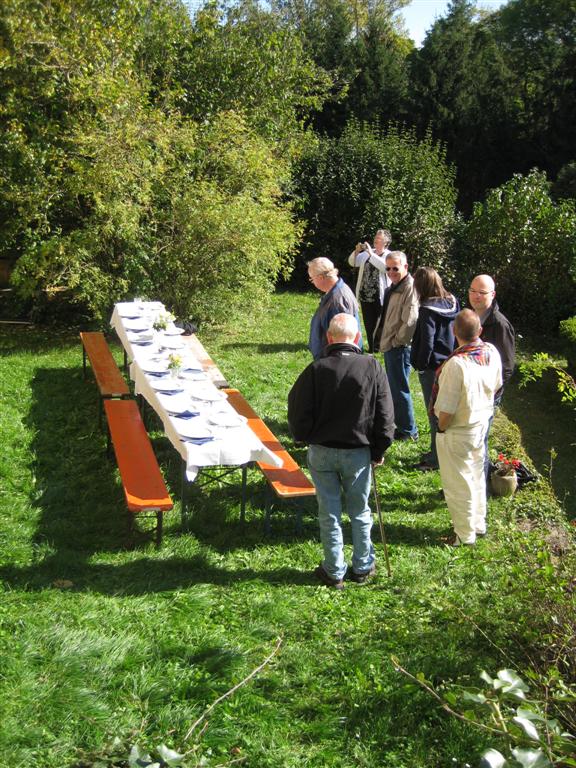
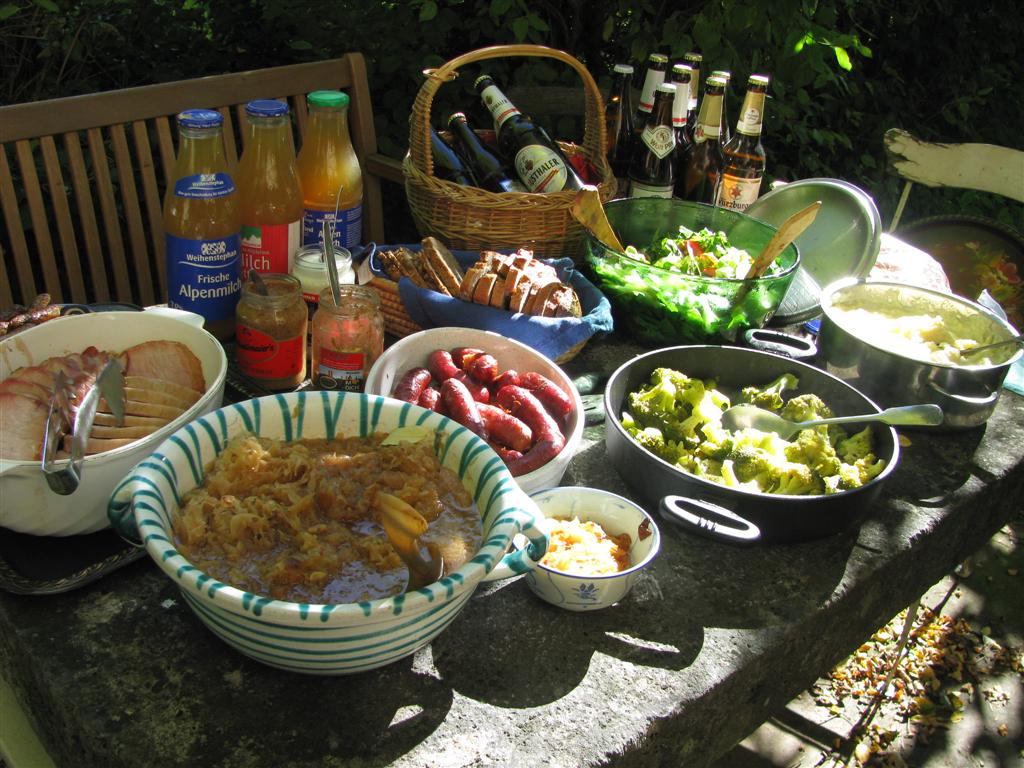
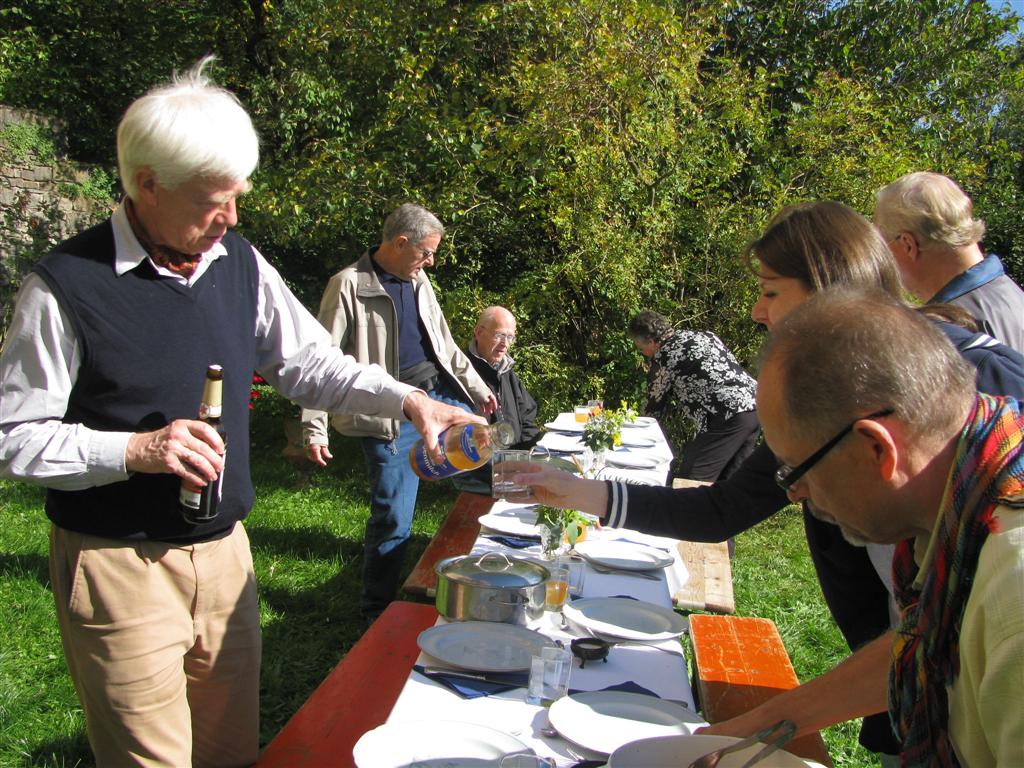
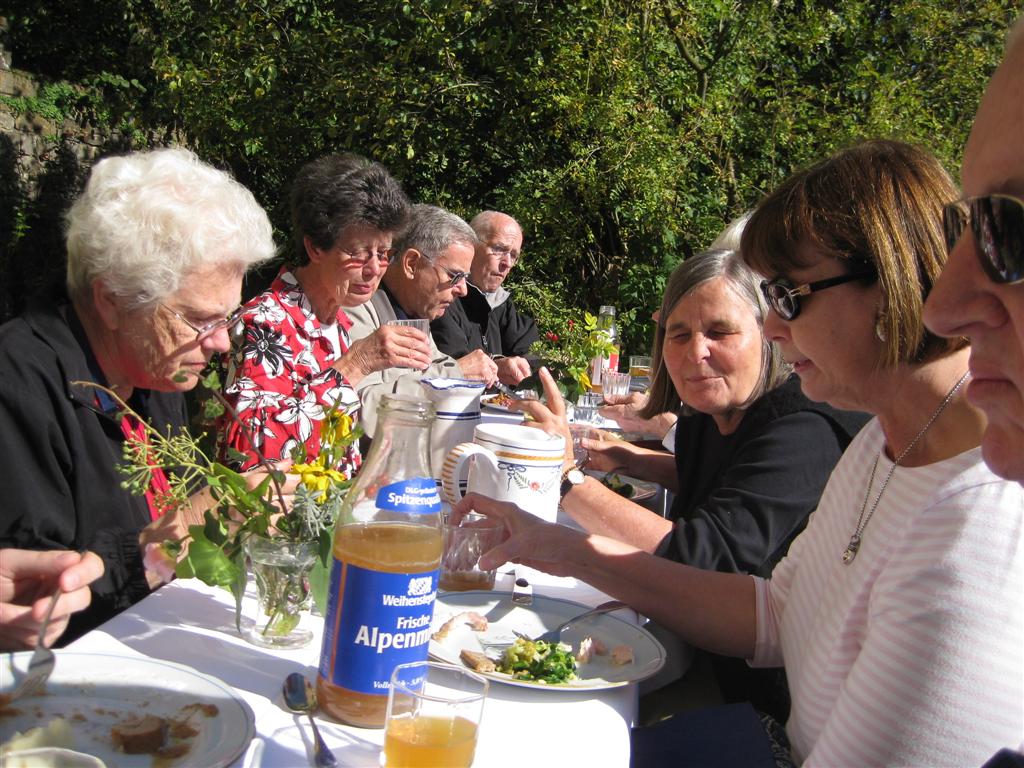
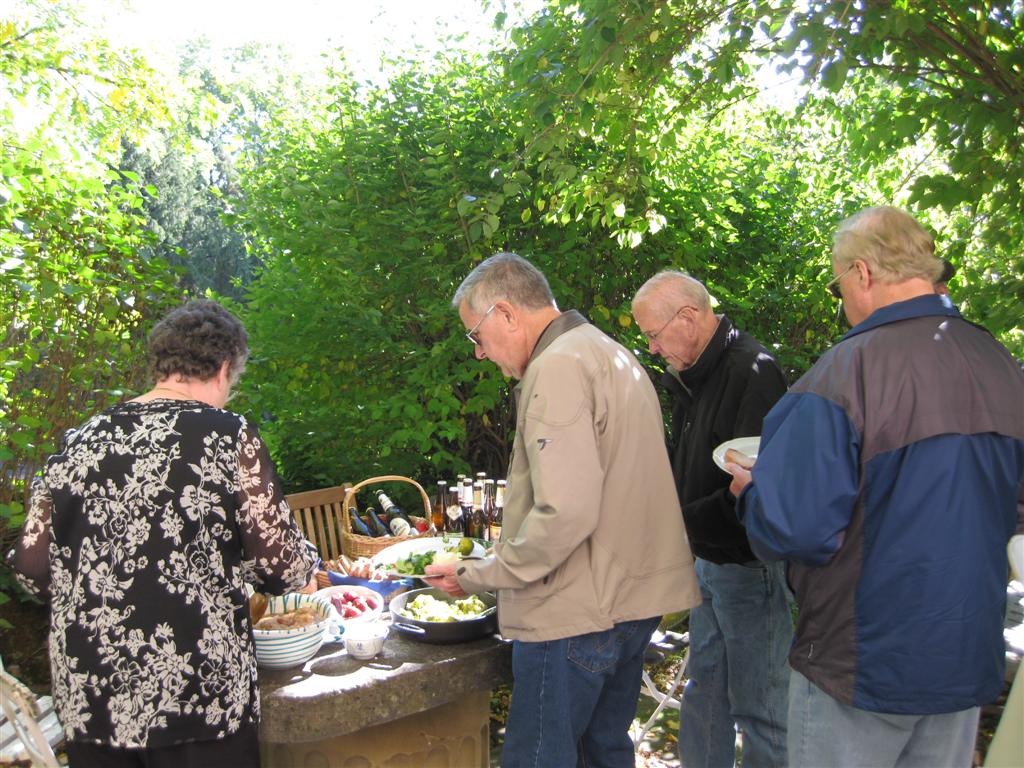
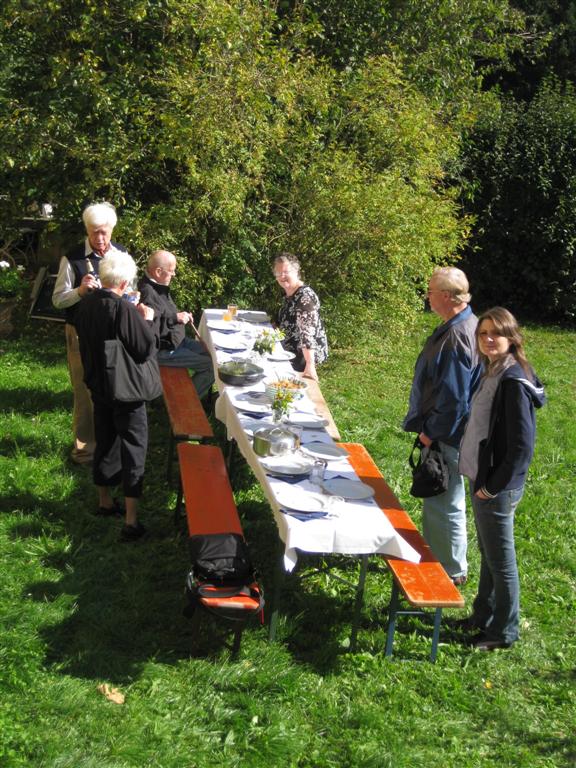
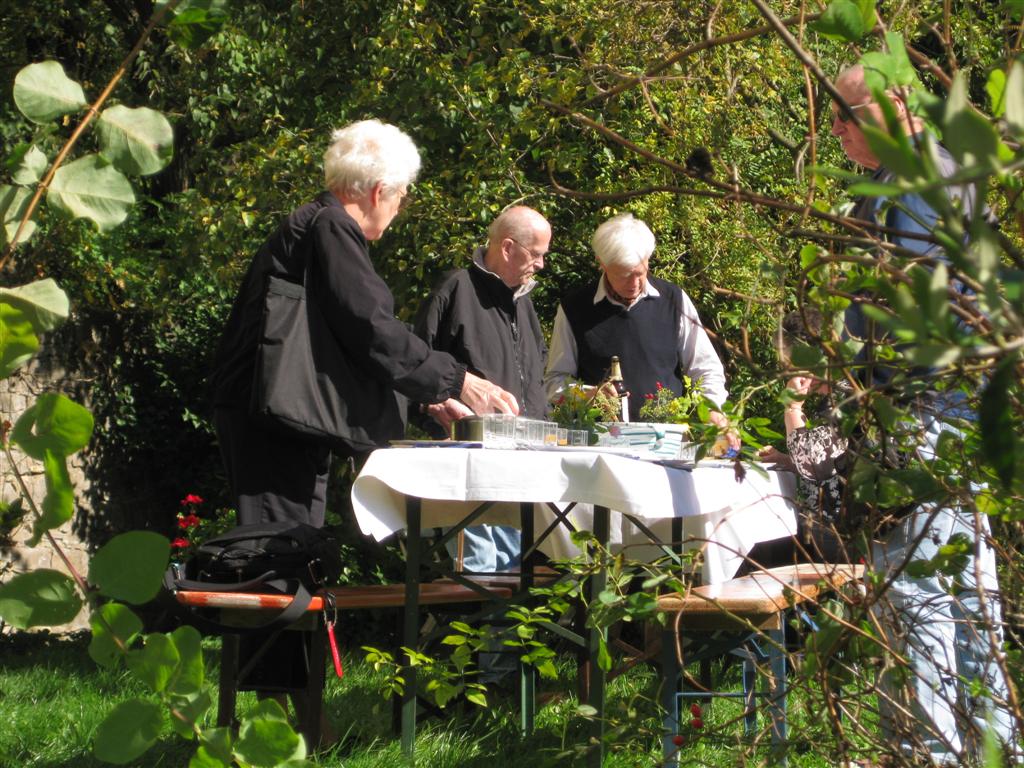
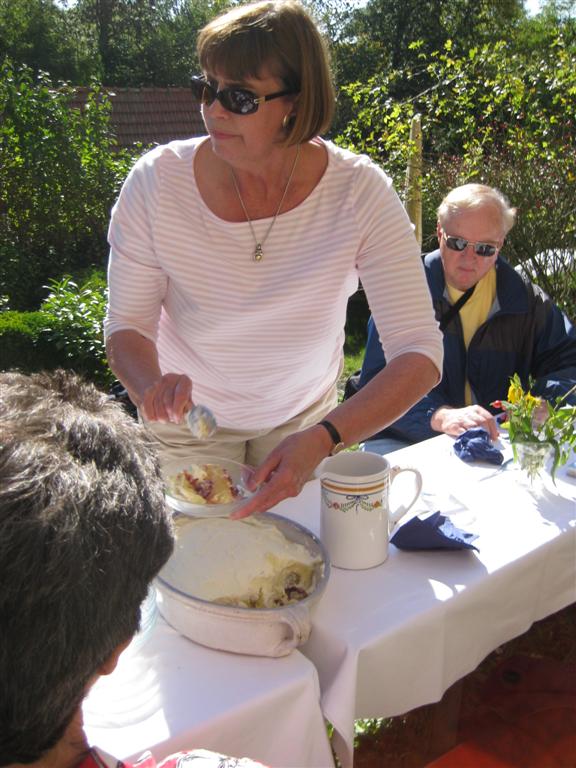
Nancy
Martin is a semi-retired scientist at the
University of Wurzburg. We had met him before 21 years ago when we
first visited the castle. His description of the work he does with
fruit flies is fascinating. He retired, but the university called
him back to help set up a new lab.
After lunch we took a walk in the woods
around and toured the part of the castle that is home to the
Heisenbergs.

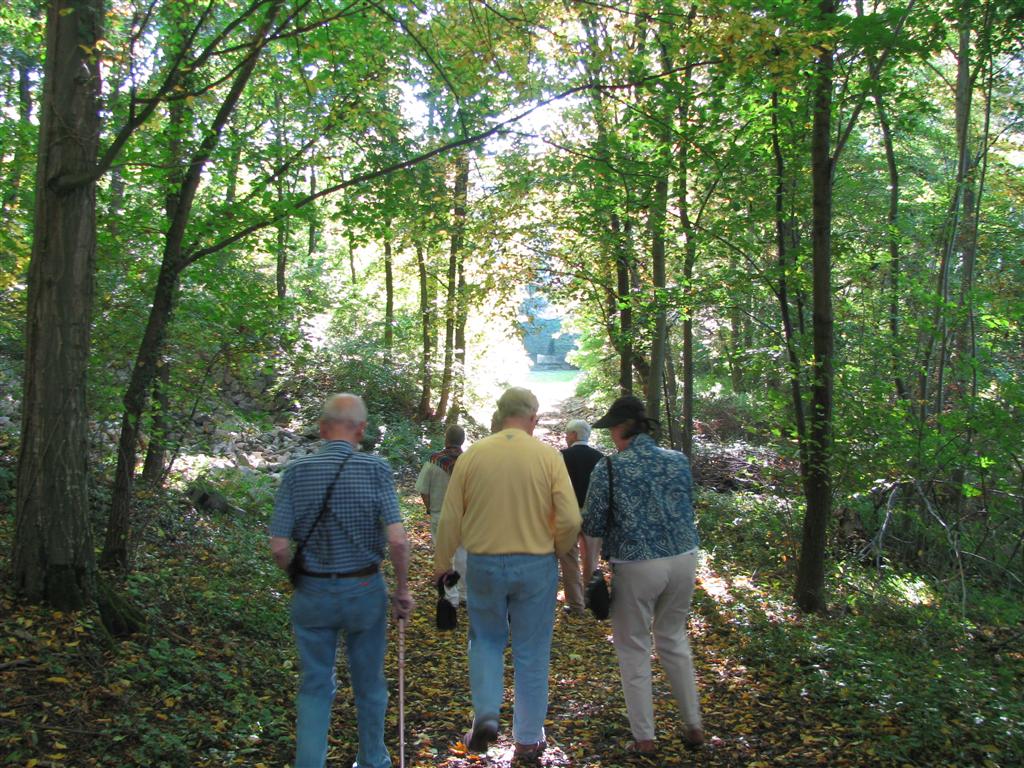
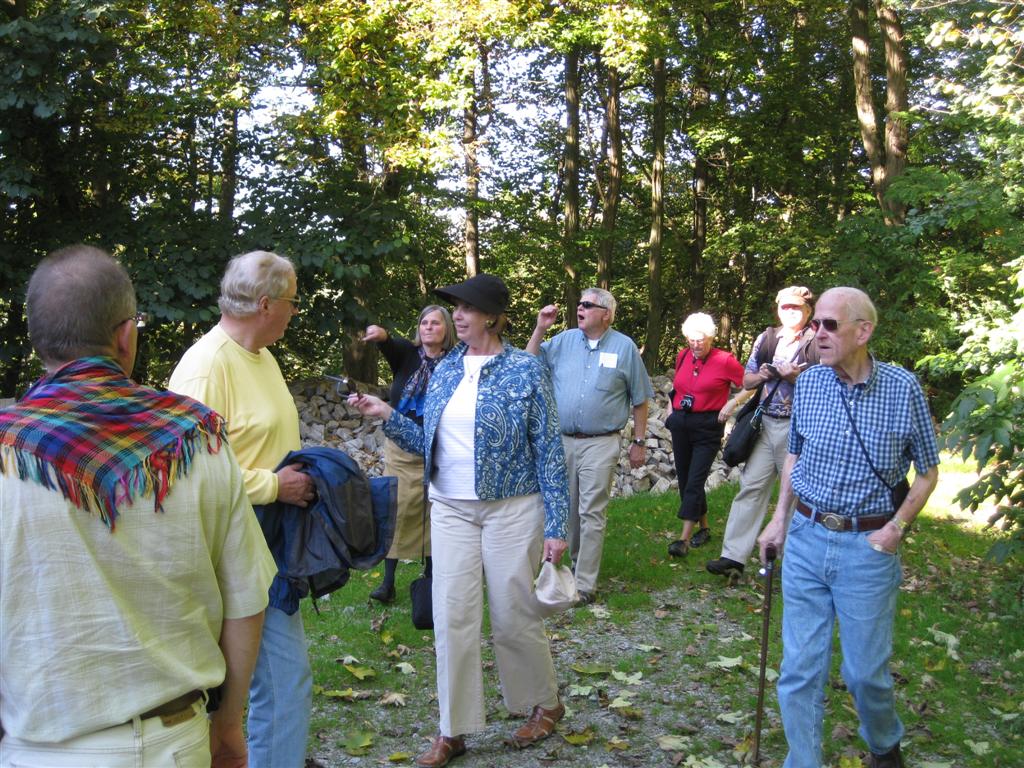
Also, on the tour was a look at a large cellar that
formerly had been a sheep pen. It has been converted into a
beautiful stone room that can be rented for parties and other
events. Appolonia said that they had hosted as many as 70 people
there.
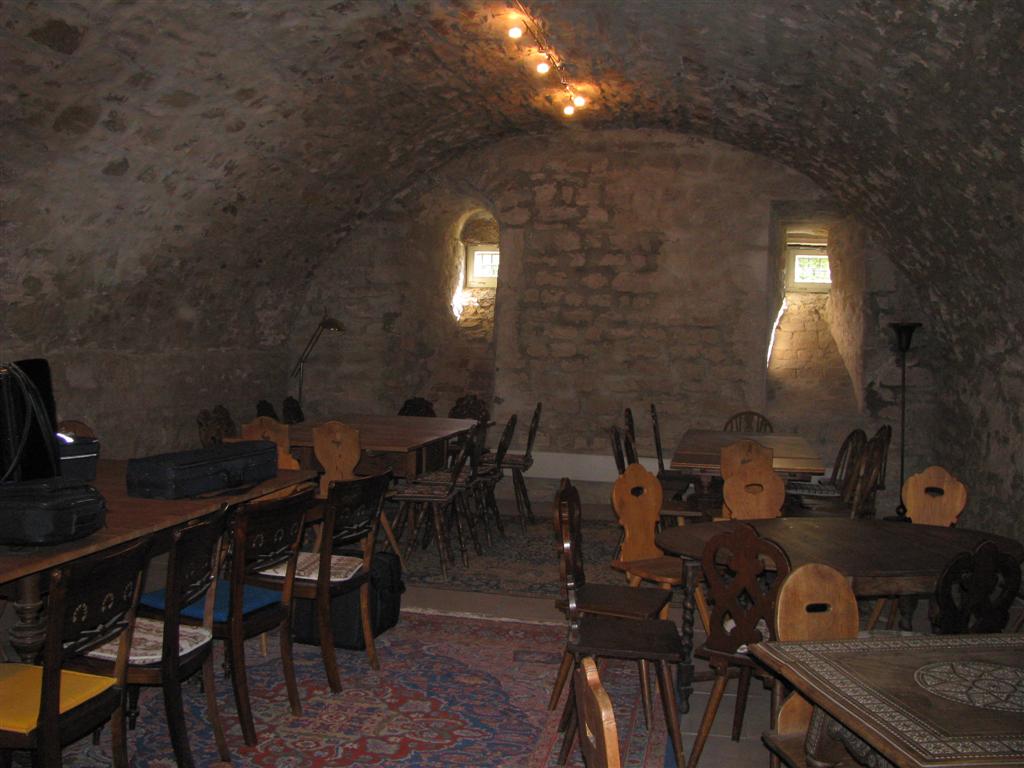
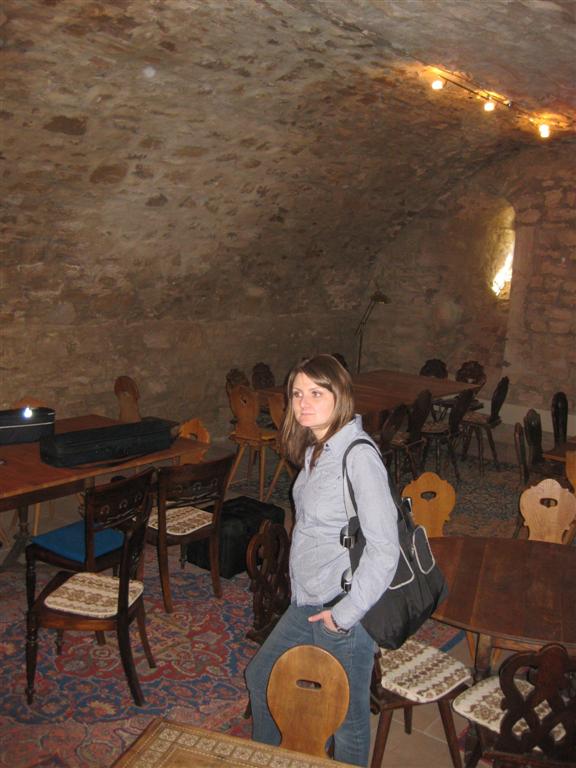
Marija in cellar entertainment room
Soon it was time to bid them adieu for our
drive to Frankfurt where we would spend the night. Marv and Nancy
were due to fly out the next day and needed to get packed. It was
convenient to stay near the airport.
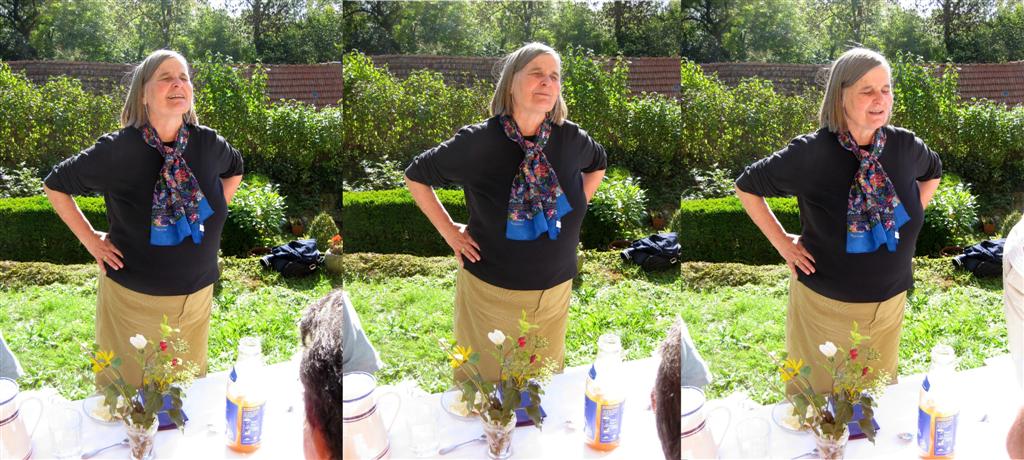

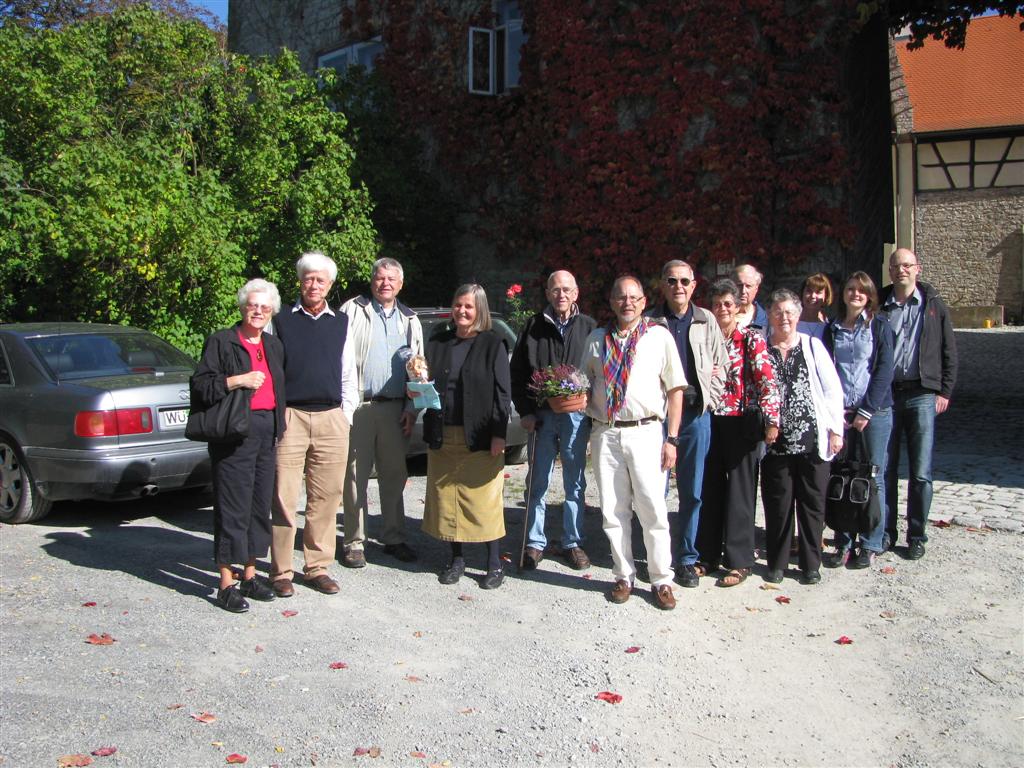
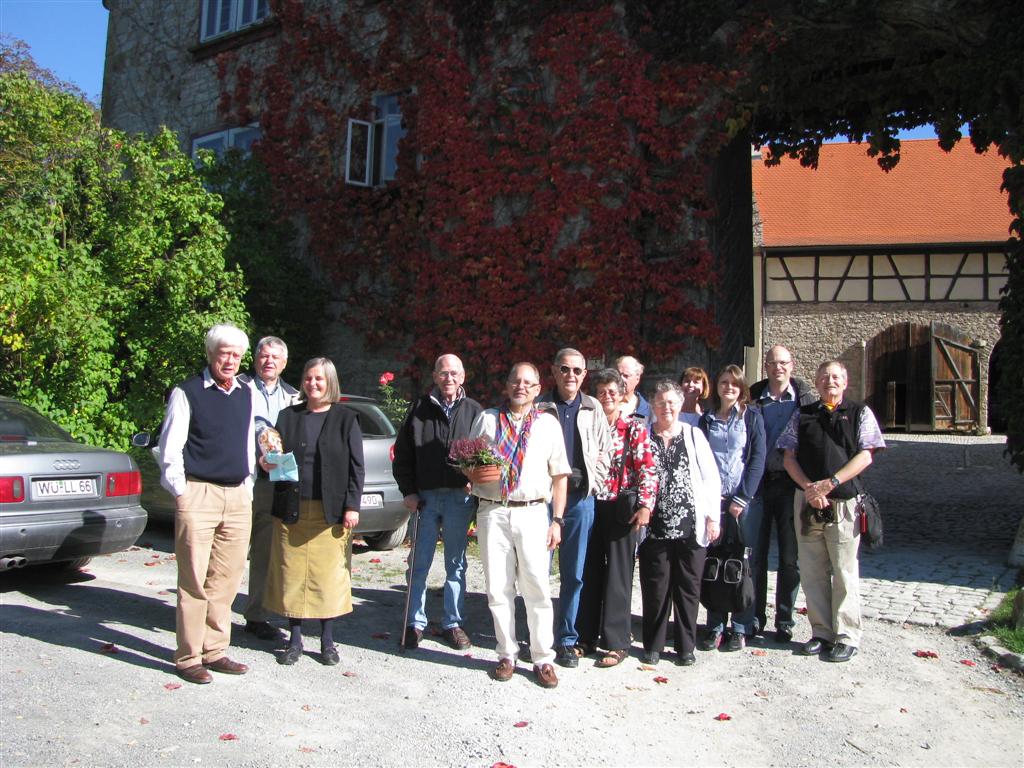
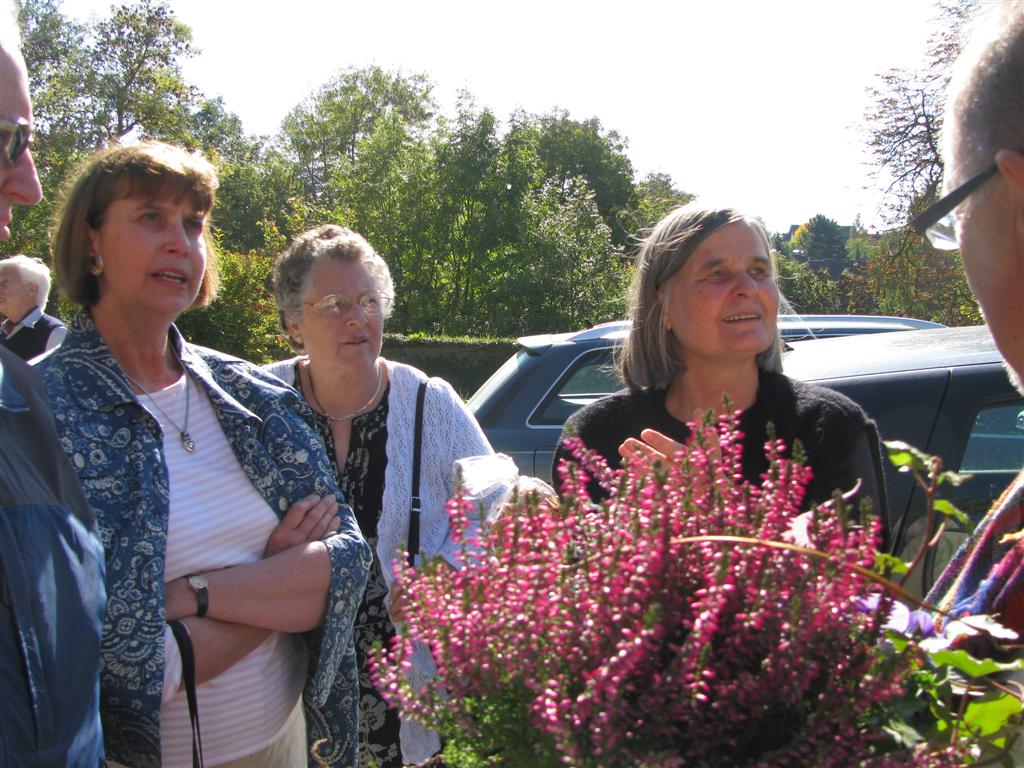
Nancy, Blanche, Api, Richard



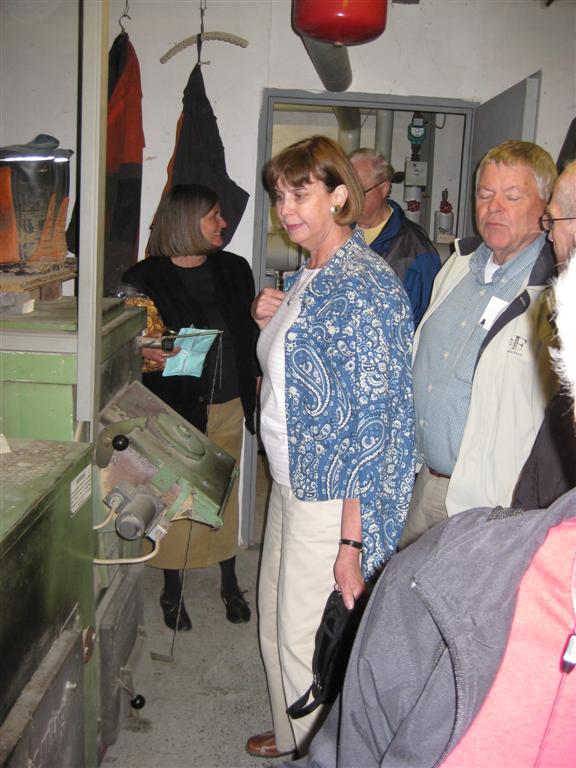
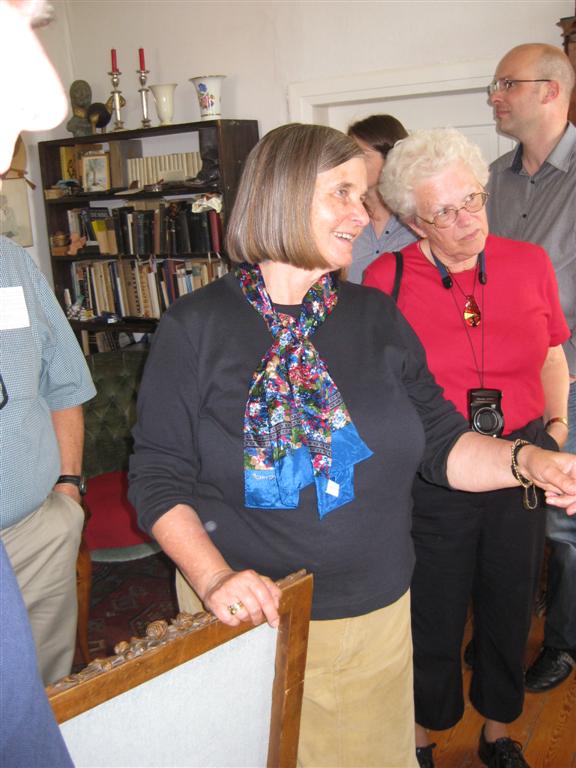
Api, Elaine, Andreas
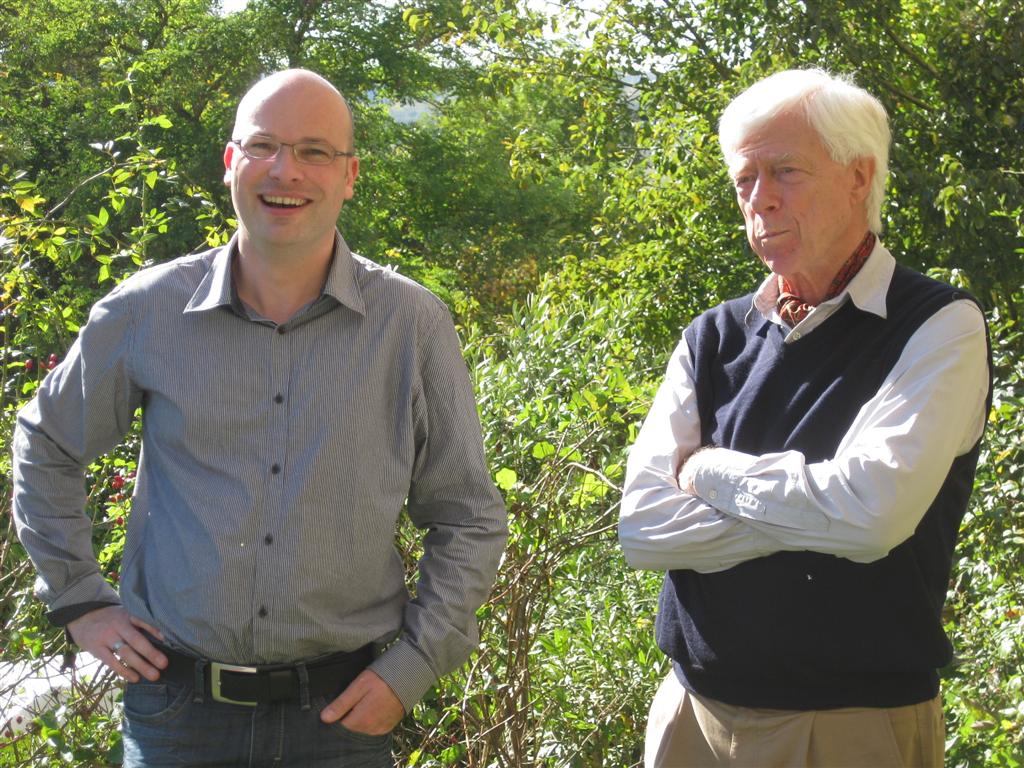
Andreas and Martin
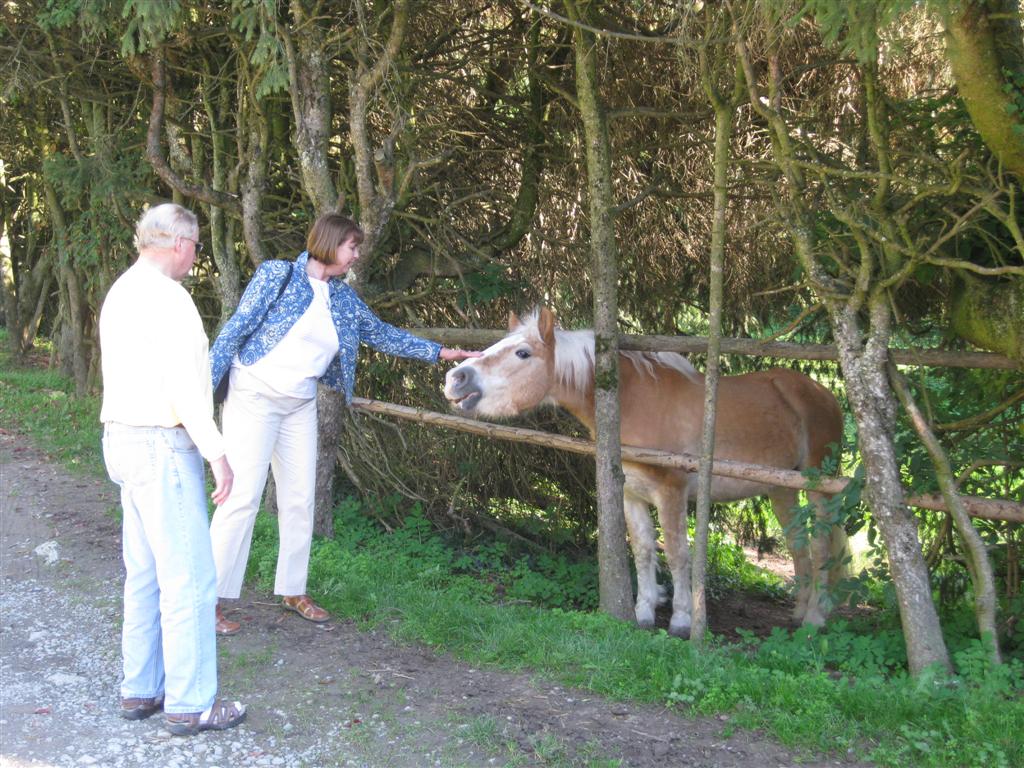
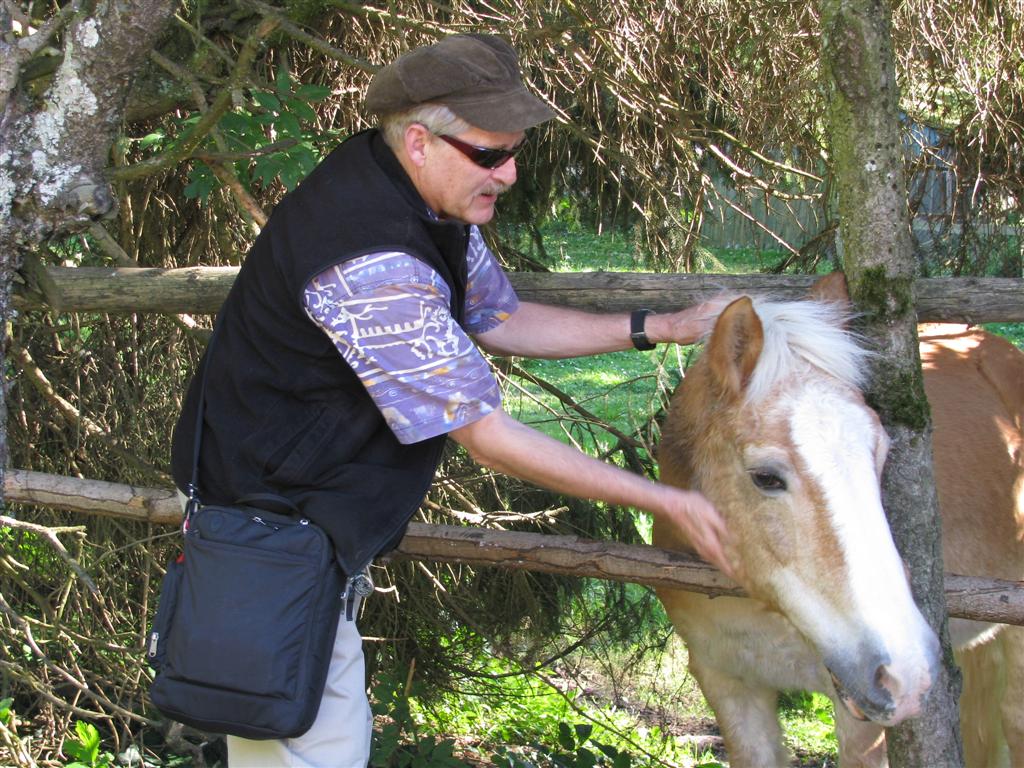
Marv, Nancy, TomD
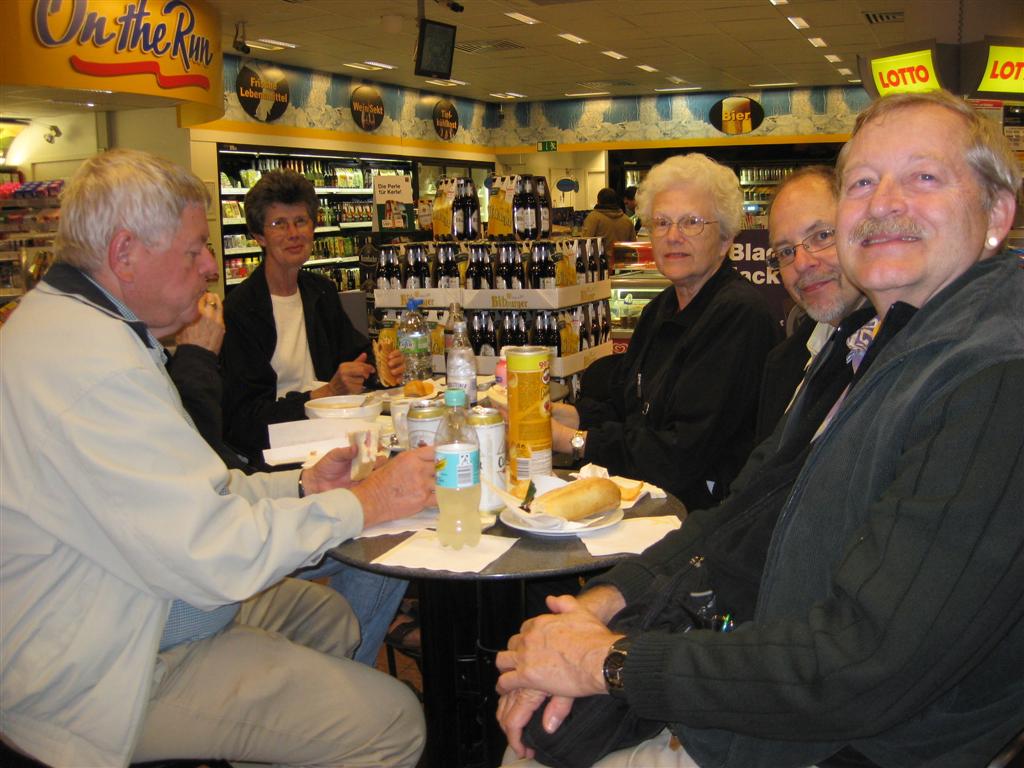
Fast food where we stayed in Frankfurt that night |
|
The Essigs in Pracht
and Solingen
After saying goodbye to Marv and Nancy in
Frankfurt and turning in one of the cars, we drove to the area east
of Bonn in Westerwald to visit Andreas’s parents, Willi and Renate
Essig. They live on a small acreage close to several small villages.
Renate was ready for us with a wonderful dinner prepared from
vegetables from Willi’s garden.
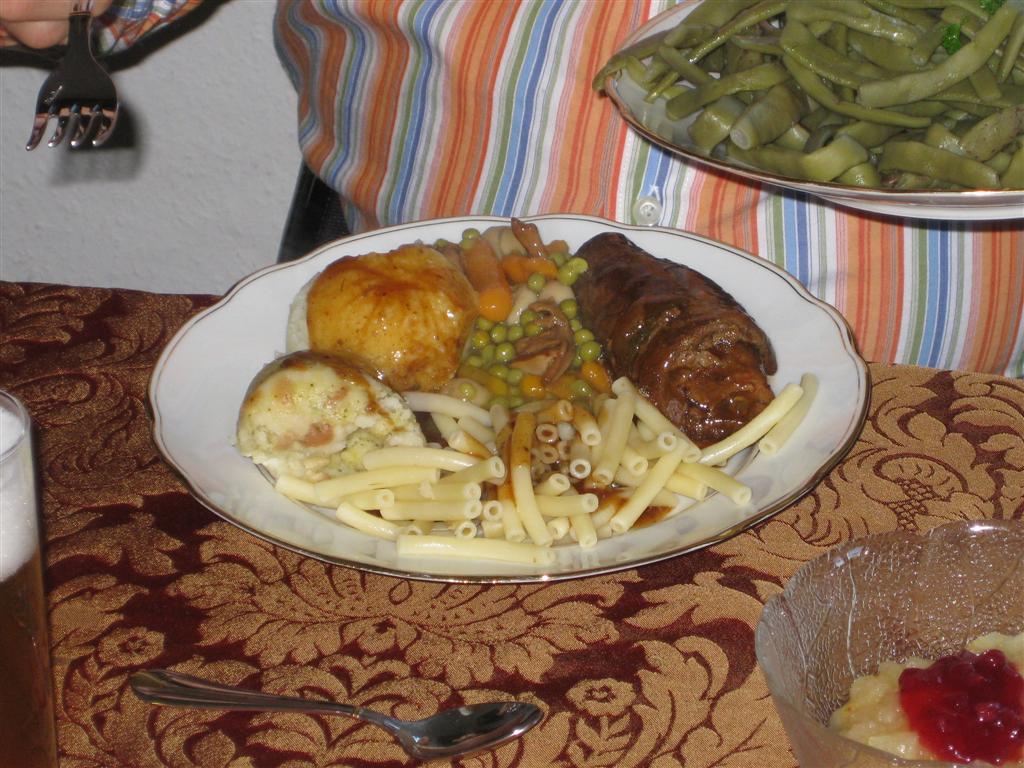
Dinner
at Renate's
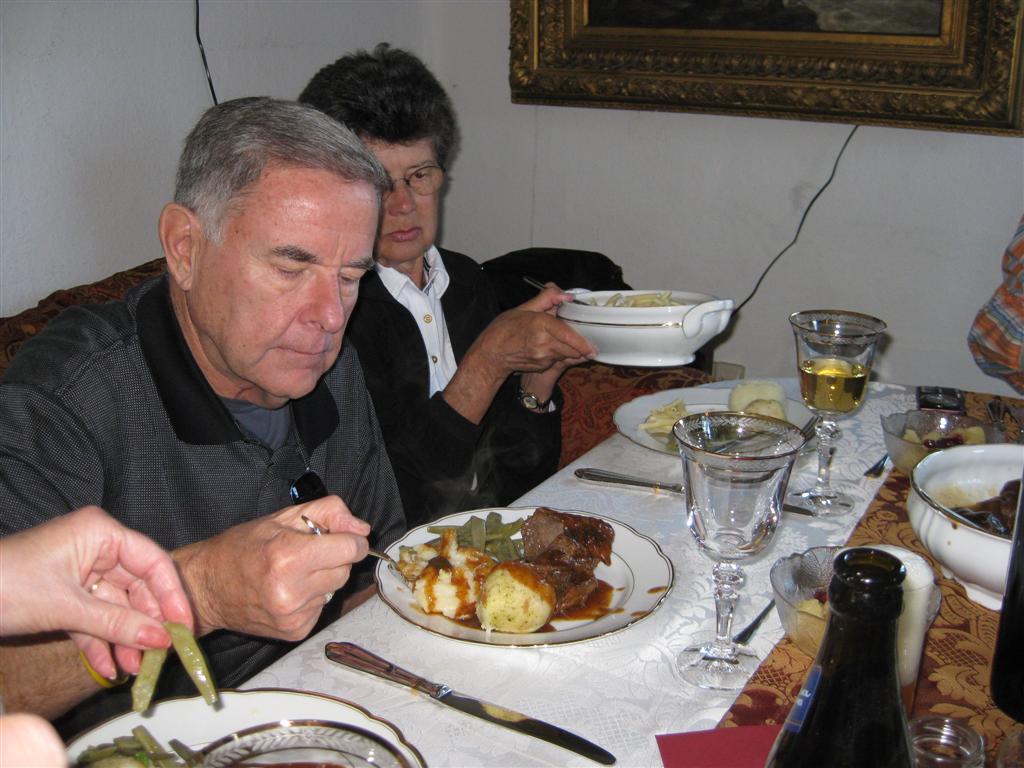
Rick & Levonne
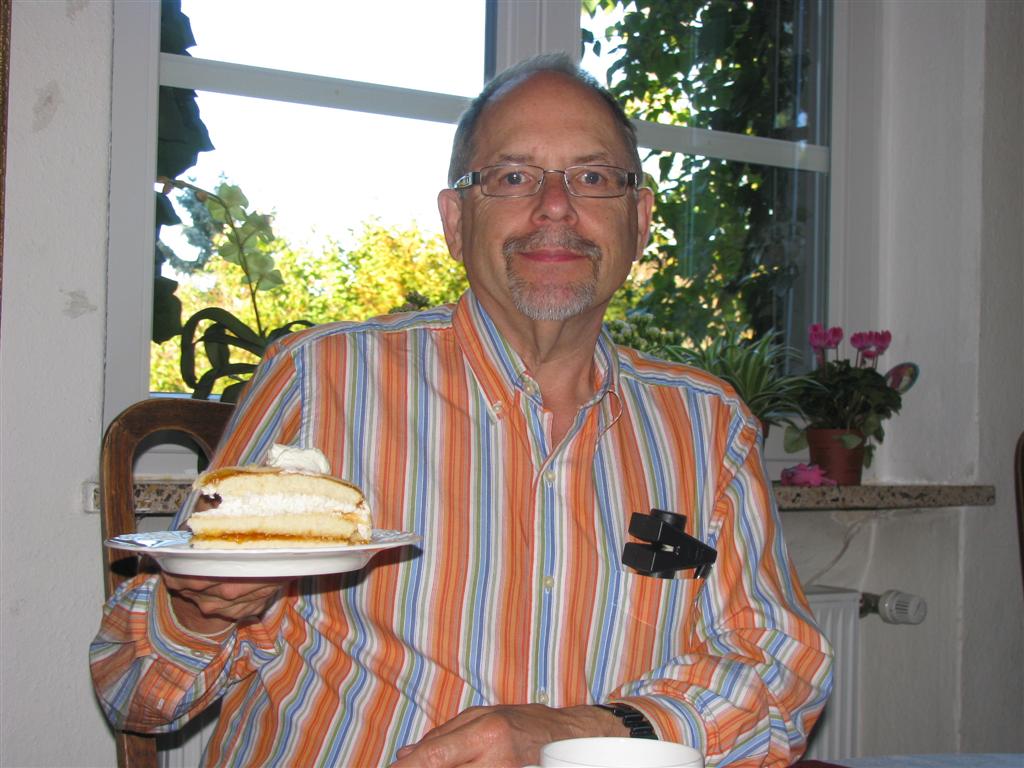
Richard
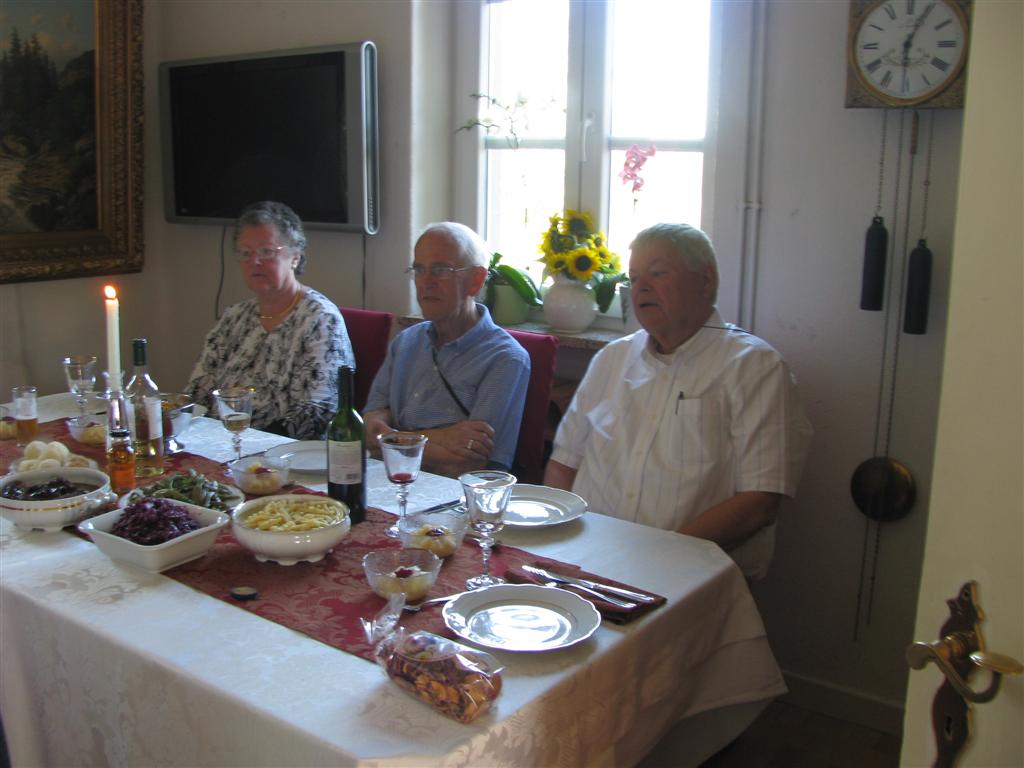
Blanche, Burt and Joel
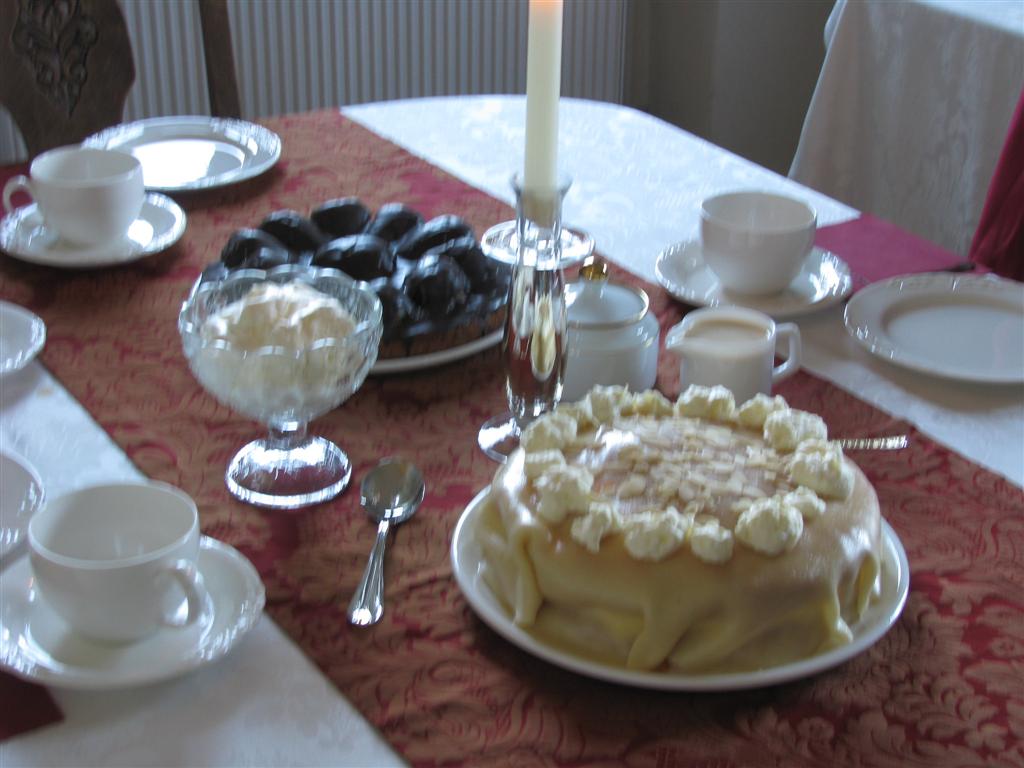 Desserts!
Desserts!
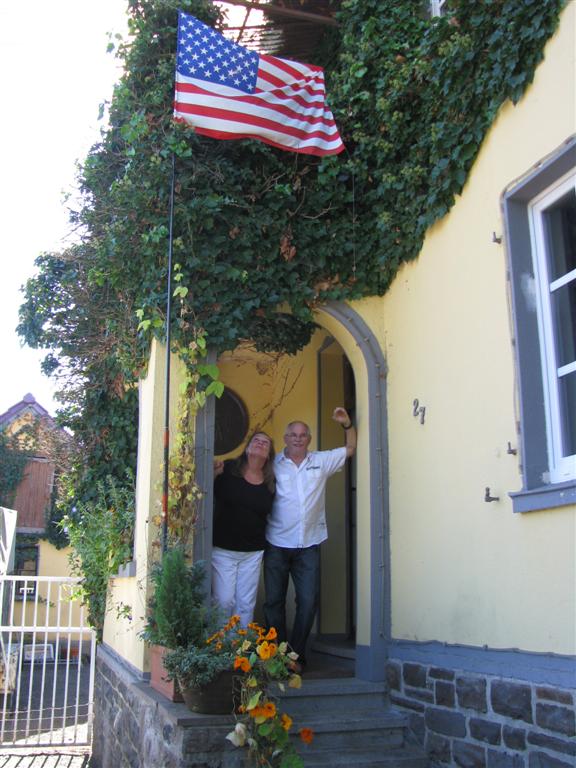
Renate and Willi
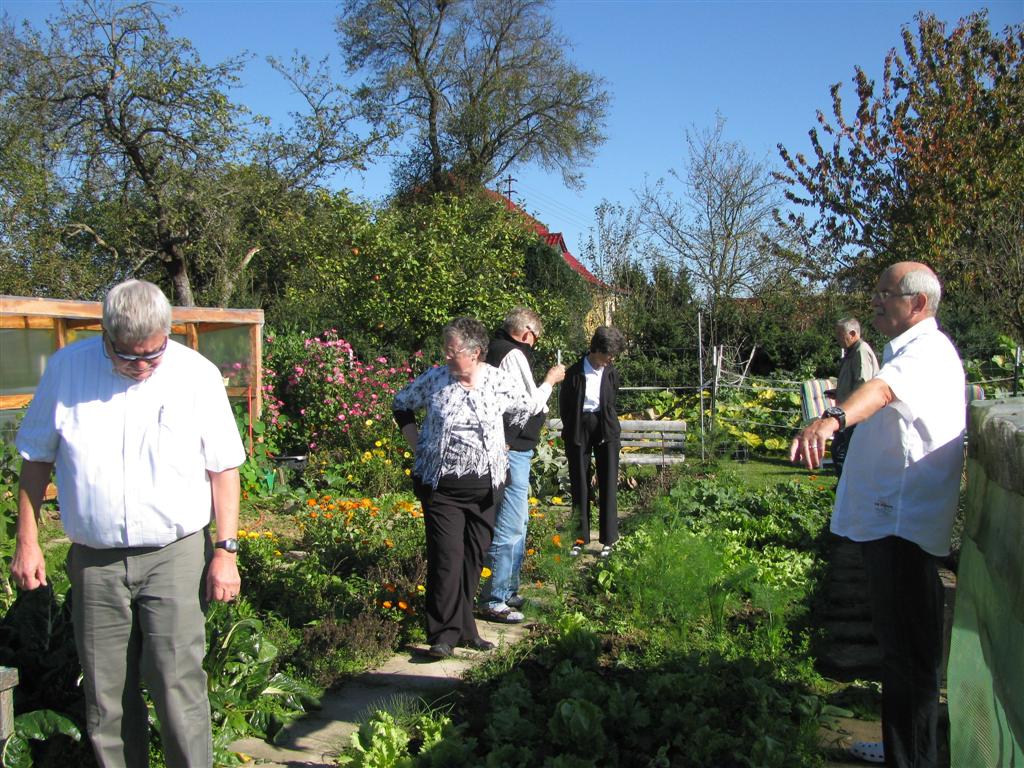
In the veg. garden
After we were thoroughly stuffed, we drove
to a wooden tower dedicated to Friedrich Wilhelm Raifeisen, founder
of rural cooperative banking in the 19th century, a major reform for
cash-starved farmers. Born in Hamm (Seig) near the Essig’s home, he
also envisioned a tower for viewing the surrounding countryside. On
a very clear day, one could see as far as Cologne.
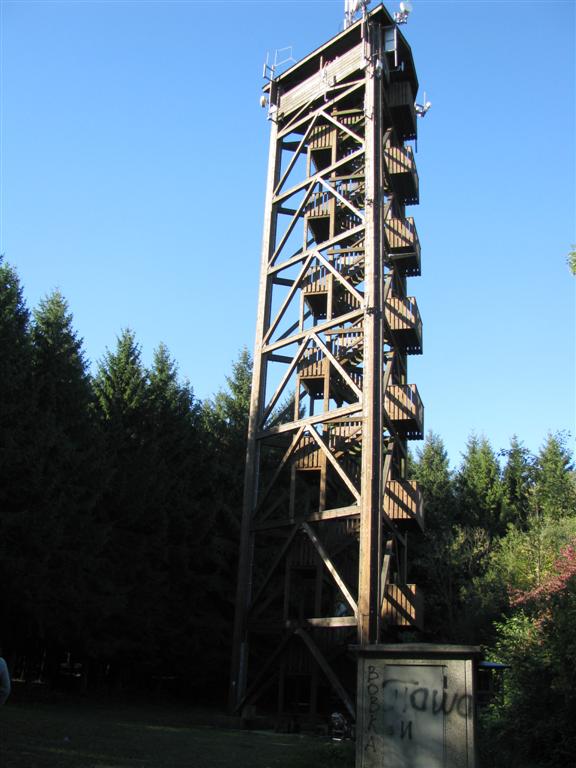
The tower
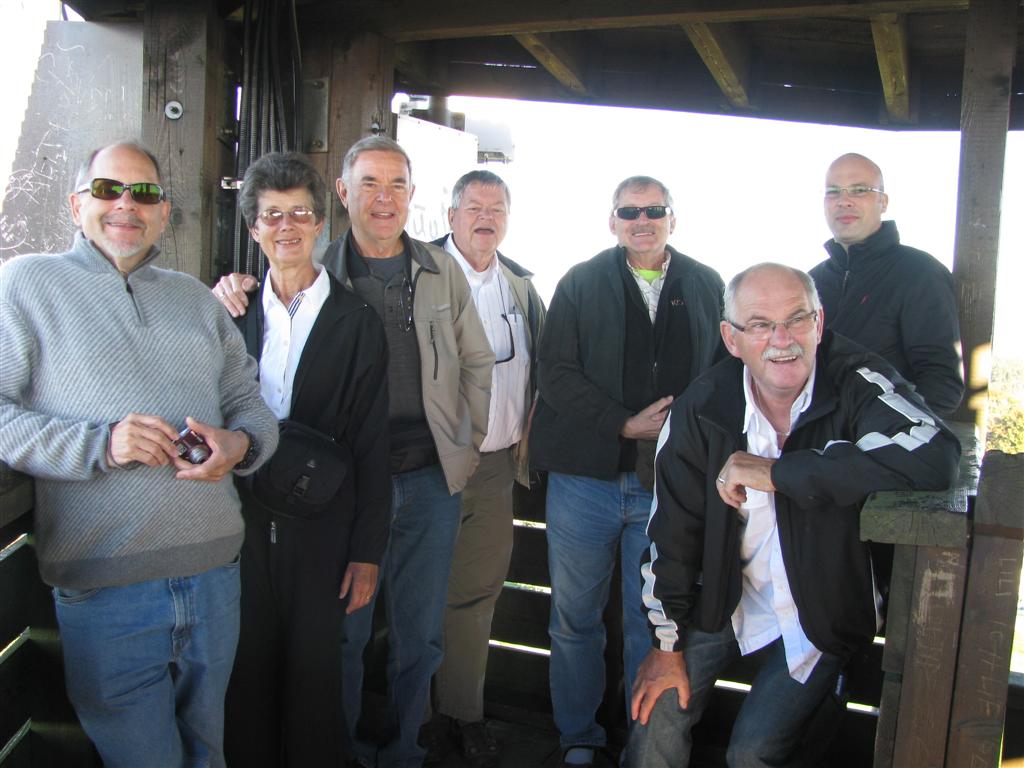
Richard, Levonne, Rick, Joel, Tom, Willi, Andreas Up in the tower
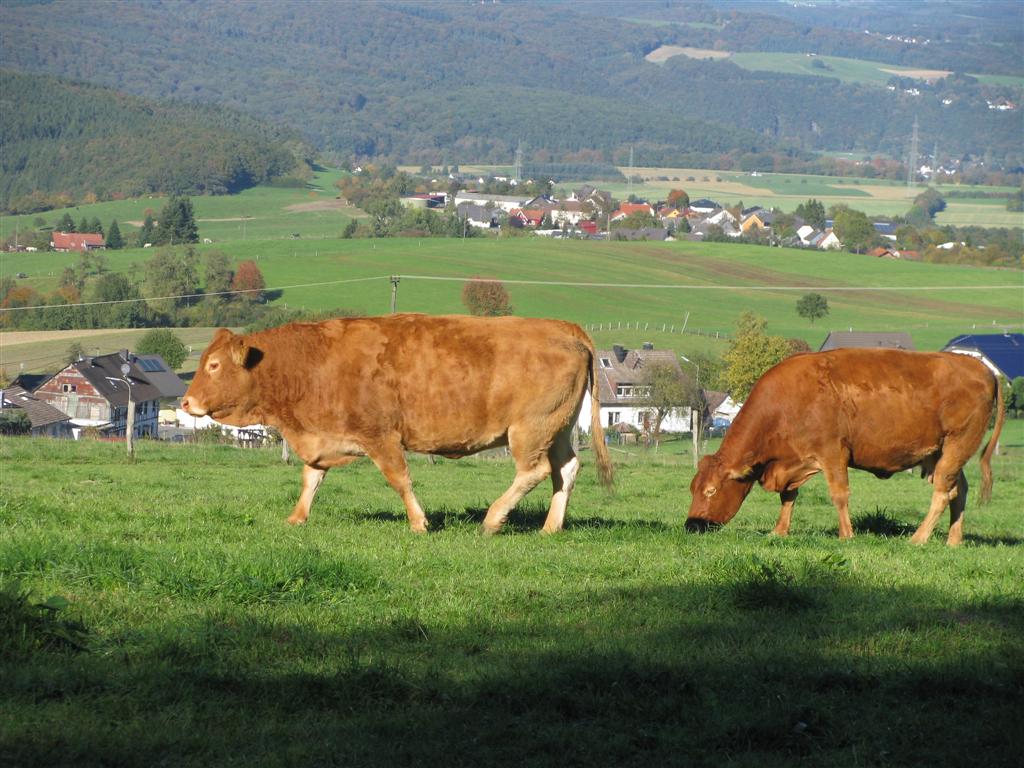
Brown cows
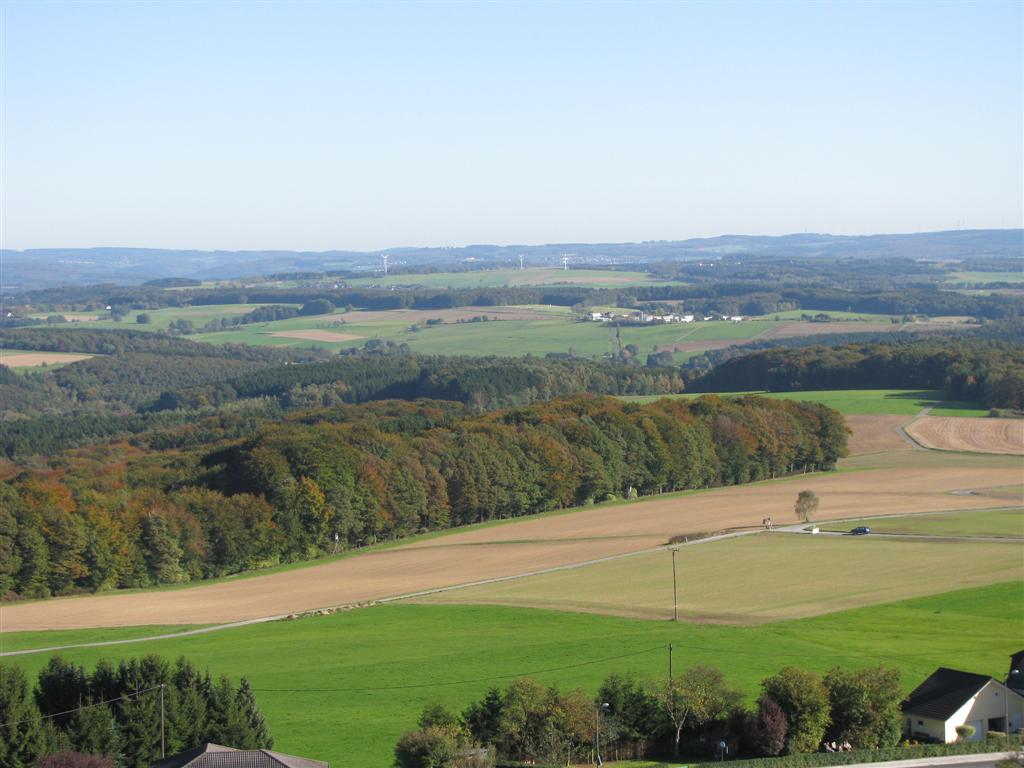
From the tower
Later we drove back to the Essig’s for
Renate’s 6 desserts and coffee. Late in the afternoon, we drove on
with Andreas to Solingen (famous for knives) where he lives. He has
taken a week off to be with us and several of us stayed in his
apartment and the others in hotels nearby. It was a long day, and we
were tired. Driving takes much more concentration than at home.
Speed limits on the autobahn, when there is one, are always
changing. Some places have lighted signs that can change the speed
in accordance with road conditions and traffic. On secondary roads,
there is always a speed limit and when you get to the city limits
and the big yellow sign of the town name, the speed is automatically
50 kph. When you leave the town there is a similar sign with a slash
through it, and you can resume the speed which can be from 70-100
(45-62 mph). Photo radar is common, but the fines are small relative
to ours. German drivers are generally predictable, and one is
expected to not lollygag around. Before a light turns green, it
turns yellow, so be ready!
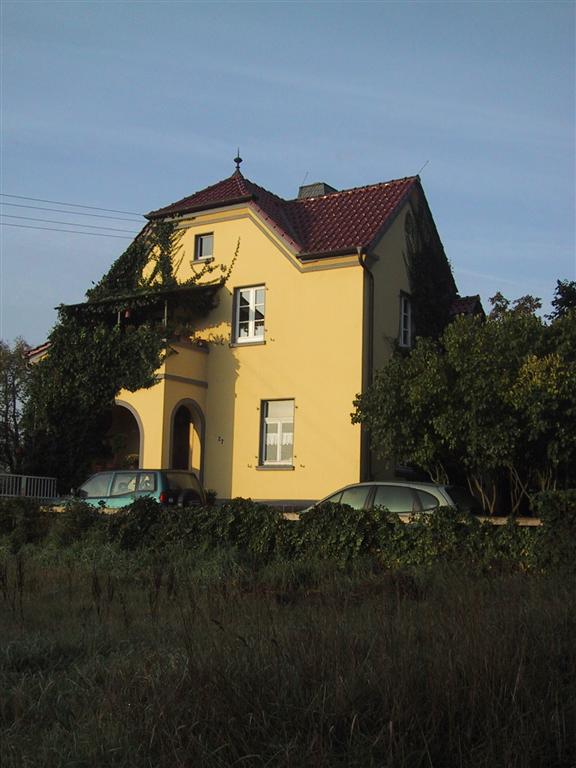
Renate
and Willi house In 2001
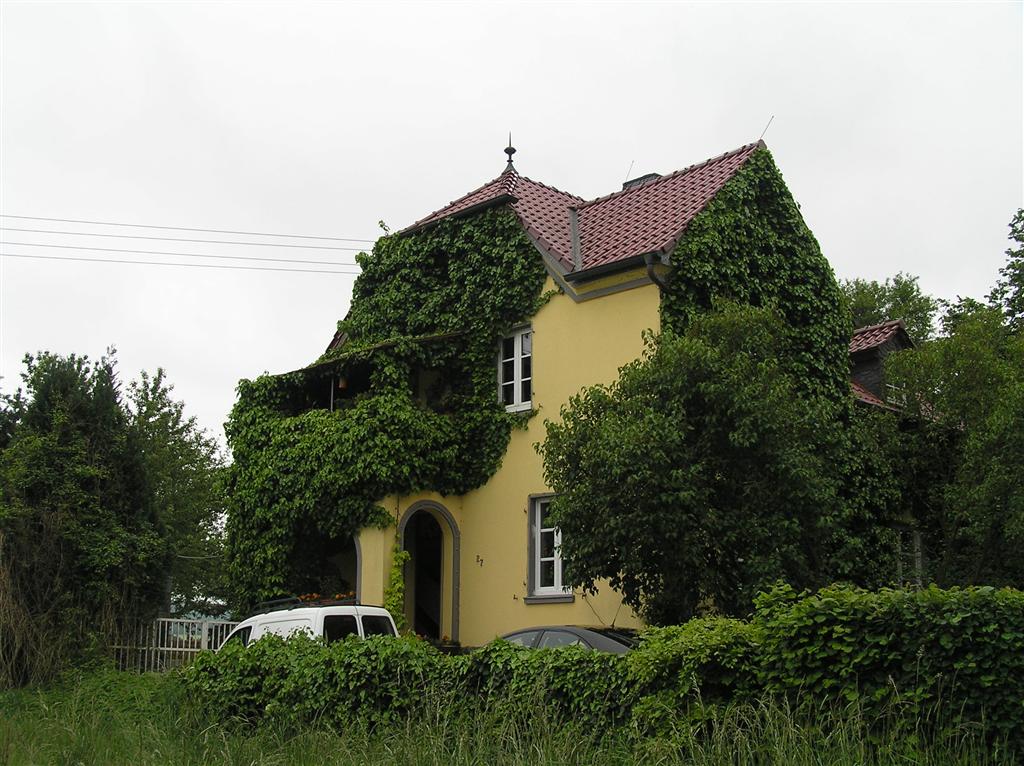
In 2005
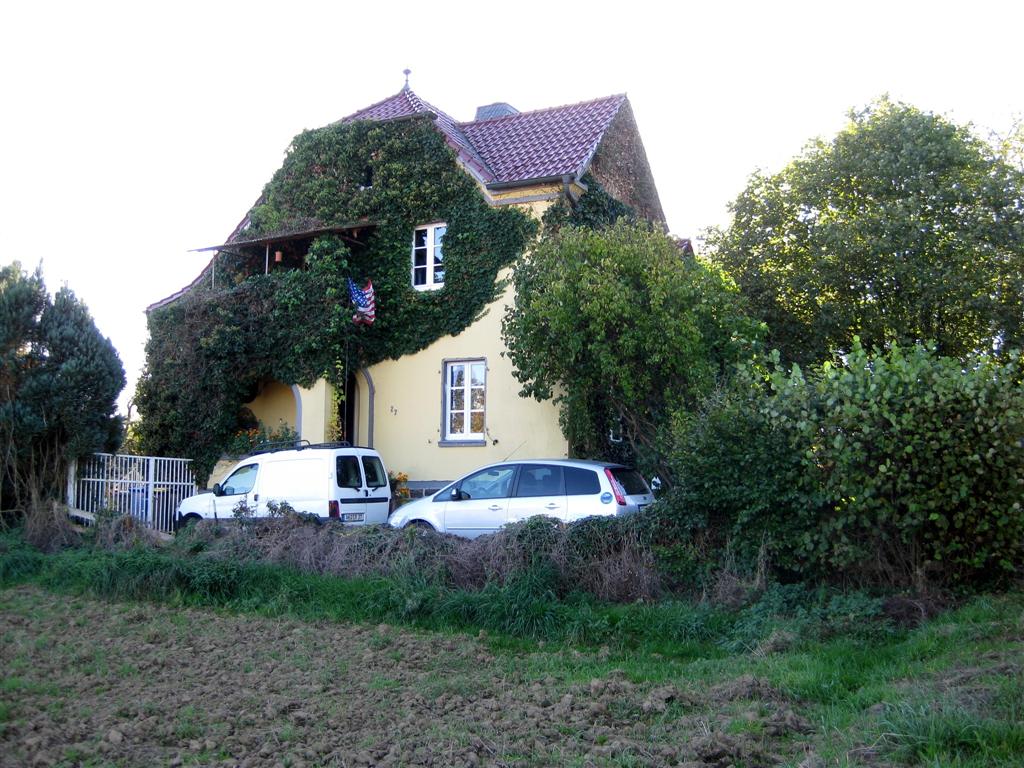
In 2010
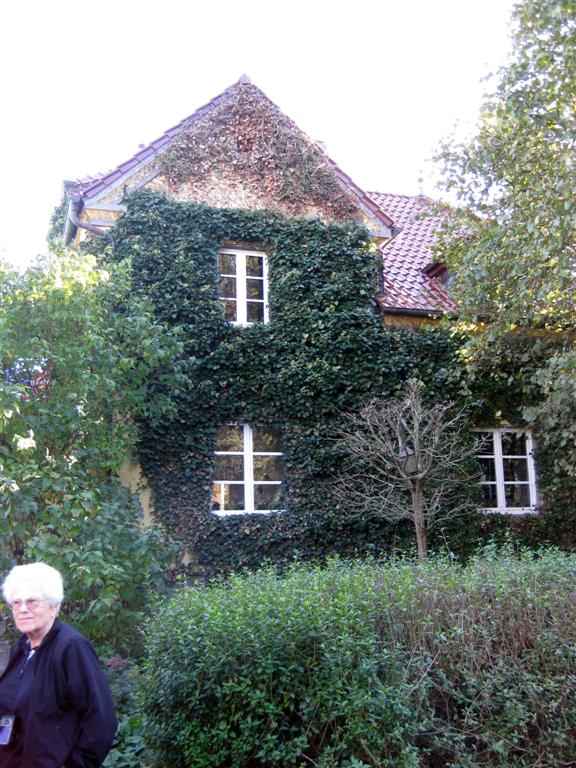
In 2010
The next morning Andreas went out and bought
fresh rolls, cheese, meats, etc. for a typical German breakfast with
lots of good coffee.
We were to be off to meet his parents in
Cologne (Köln). We drove the 20 miles or so to park near the Cologne
Cathedral, one of the largest gothic structures in Europe. It was
begun in 1248 as a structure to hold the reliquary of the Three
Kings. It was completed in 1880 and for a couple years was the
tallest structure in the world until the completion of the
Washington Monument. The windows are stunning and represent many
different styles and colors. Andreas was all prepared to tell us
about it, but was interrupted by a staff person who said he wasn’t
licensed as a guide. He was a little more circumspect and told us
what we needed to know. The structure was damaged during the war,
but the windows had been removed. It wasn’t destroyed since bombers
used the spires as a guide to the city.
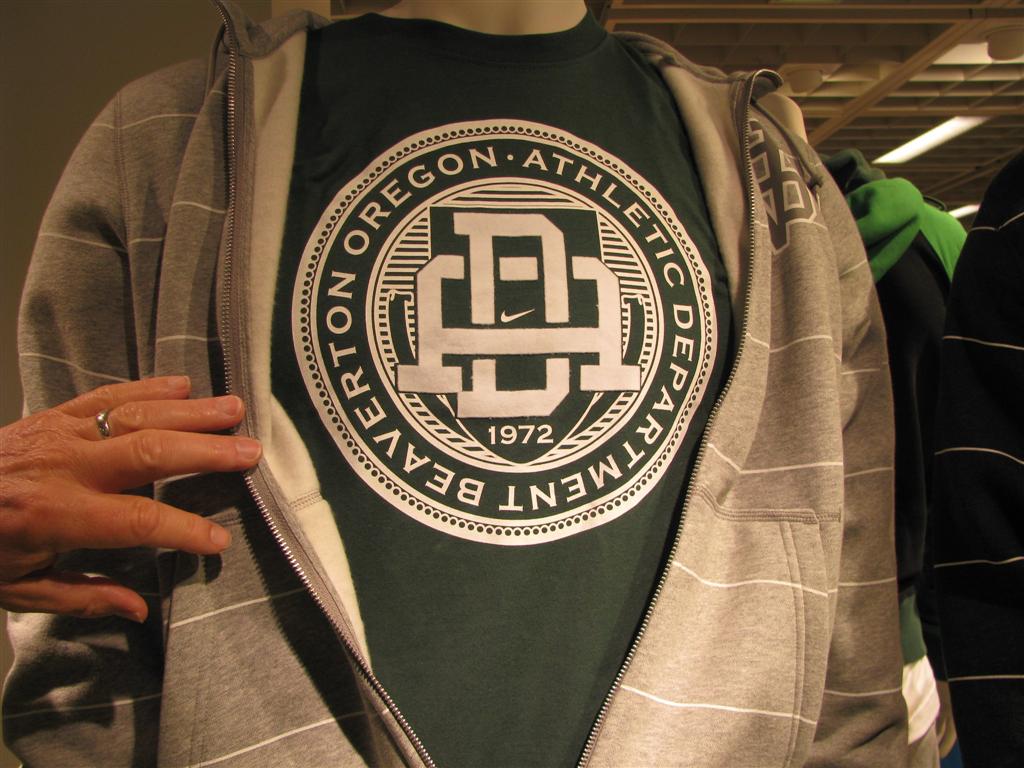
See in the Kaufhof department store in Köln:
Nike in Beaverton, Oregon.
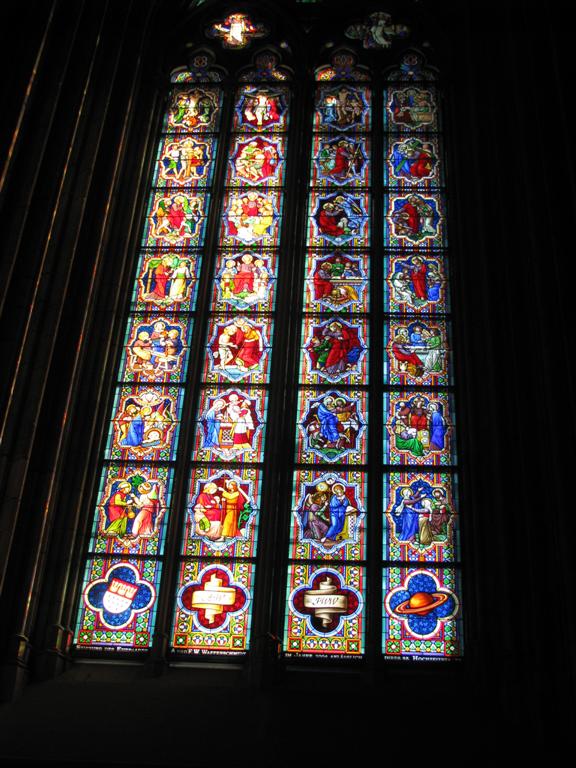
Stained
glass window at the Cathedral
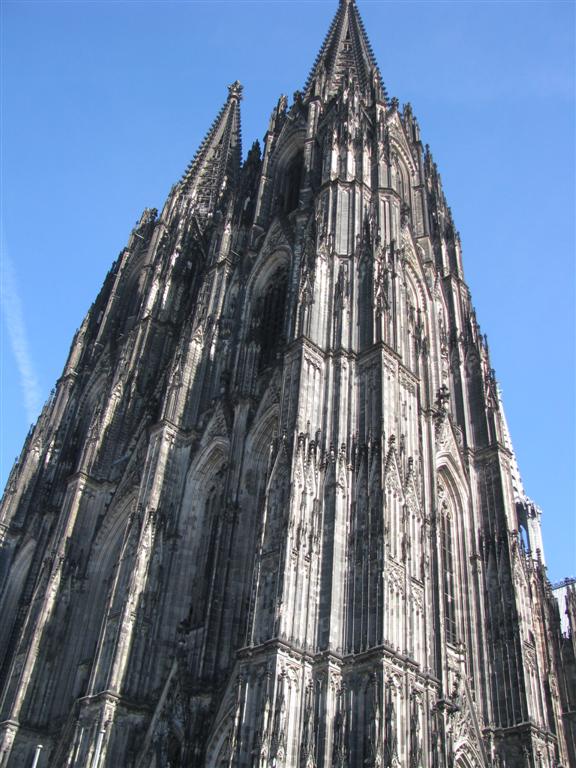
Köln Cathedral (Dom)
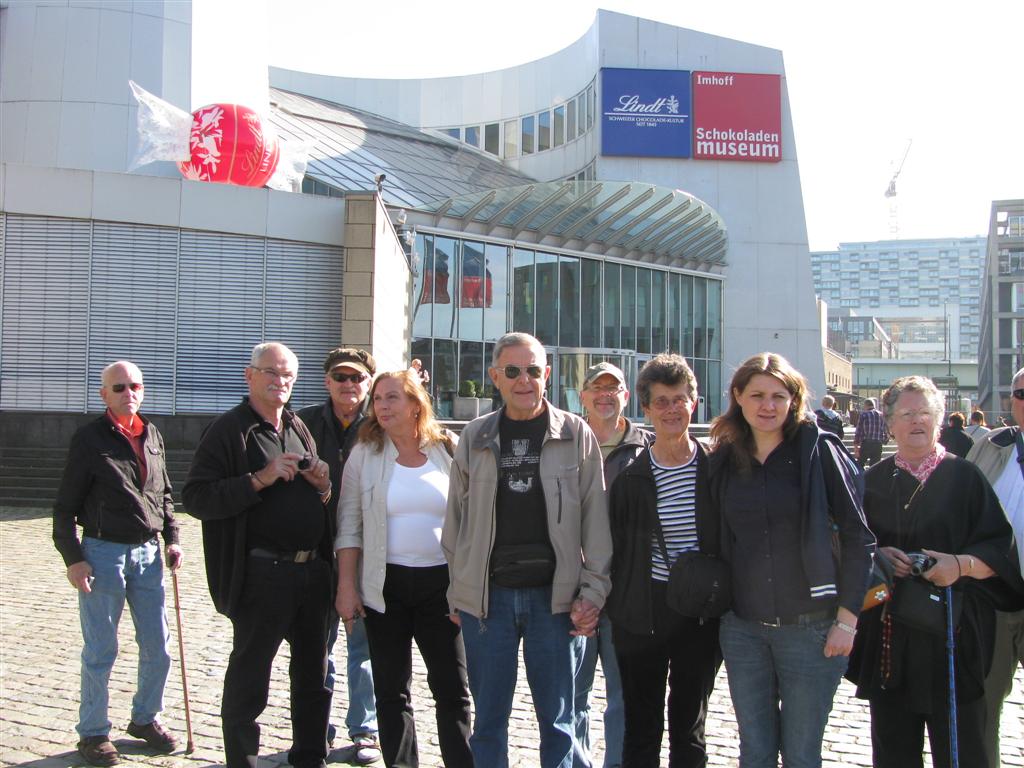
Burt, Willi, Tom, Renate, Rick, Richard, Levonne, Marija, Blanche at
the closed Chocolate Museum
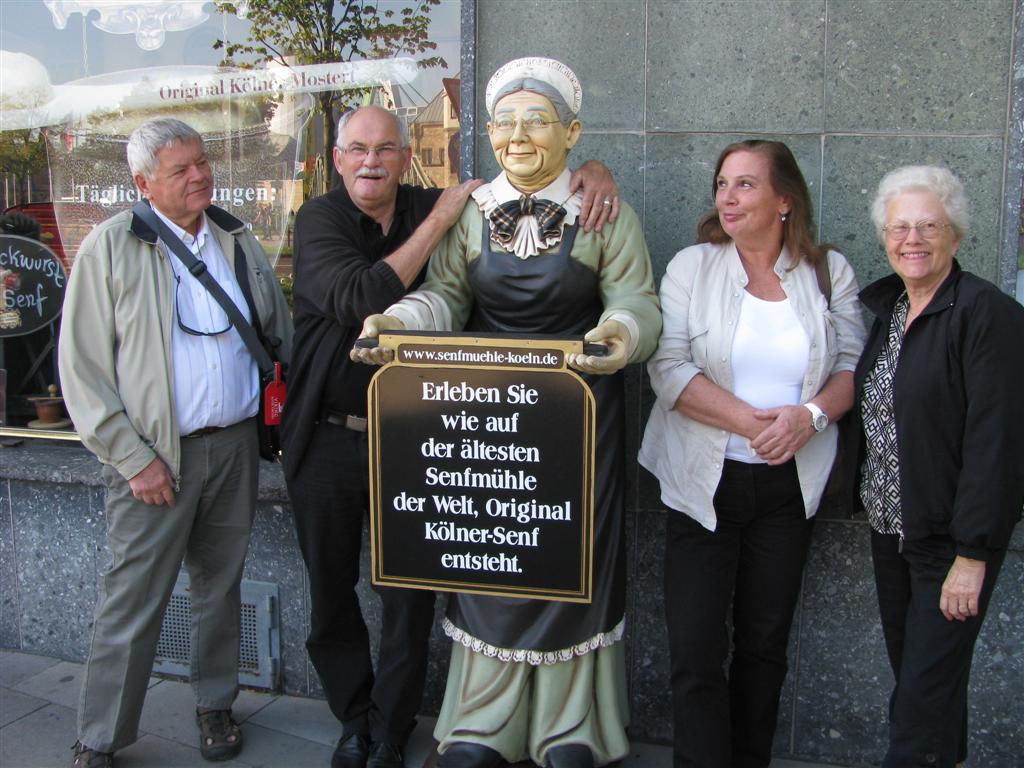
Joel, Willi, Renate and Elaine at the mustard museum.
We took a small tour tram for a tour around
the central city with a stop at the chocolate museum. It turned out
to be closed on Monday, but we were able to go to the mustard museum
across the street. At the conclusion of the tram tour, we walked on
the pedestrian streets by countless shops. We have nothing like that
here and it was surprising how many people were out and about. Not
many were tourists, although there were more children since schools
are having their 2 week fall vacation.
The next day, we drove to the Müngstener
Bridge, the highest steel bridge in the world, built in the 1890’s
for trains. It goes between Solingen and Remsheid across the Wupper
River. It shortened the distance from 25 to 5 miles. Trains are
required to slow down to 10 kph to cross it since rapid braking
during an emergency would cause too much stress. We ate at a new
restaurant built nearby and sided with rusted steel. Willi has the
contract to wash the windows, and said that some may need to be
replaced due to being etched by the lime runoff from the concrete.
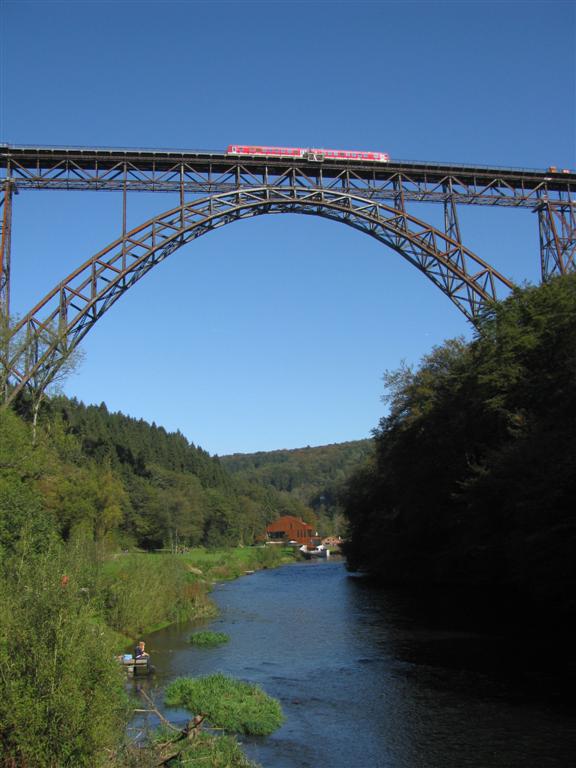
Müngstener Brücke / Muengsten Bridge
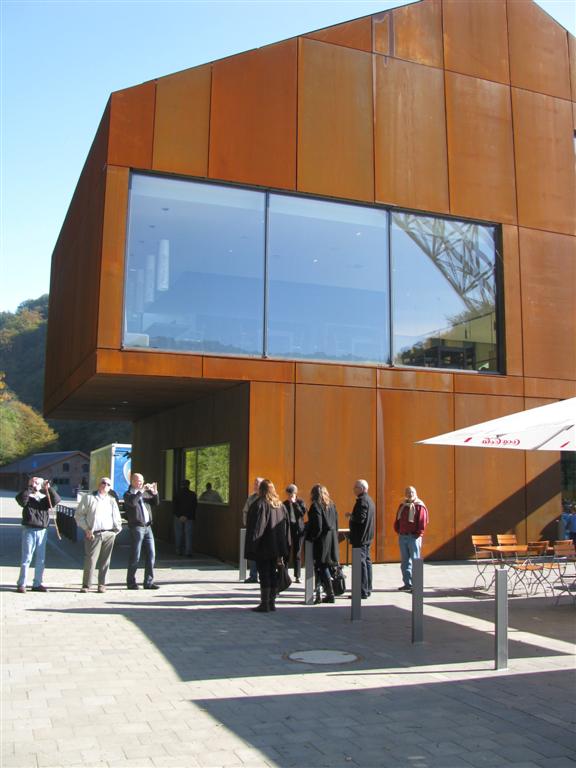
Restaurant
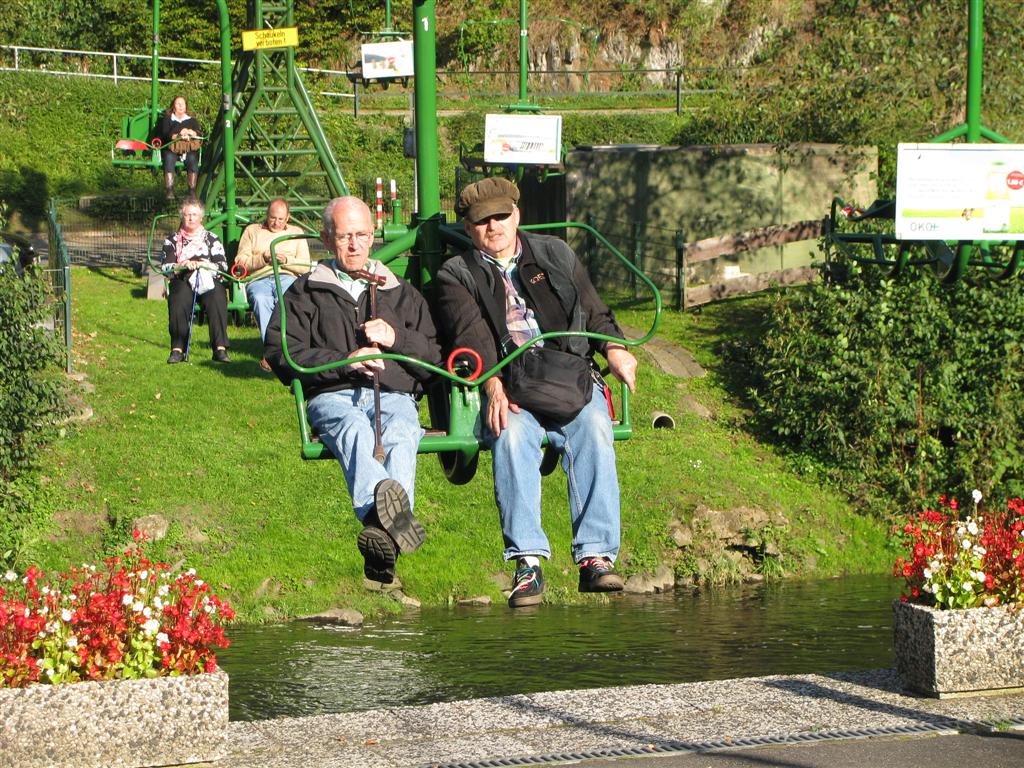
Cable car to Solingen Castle ("Schloss Burg")
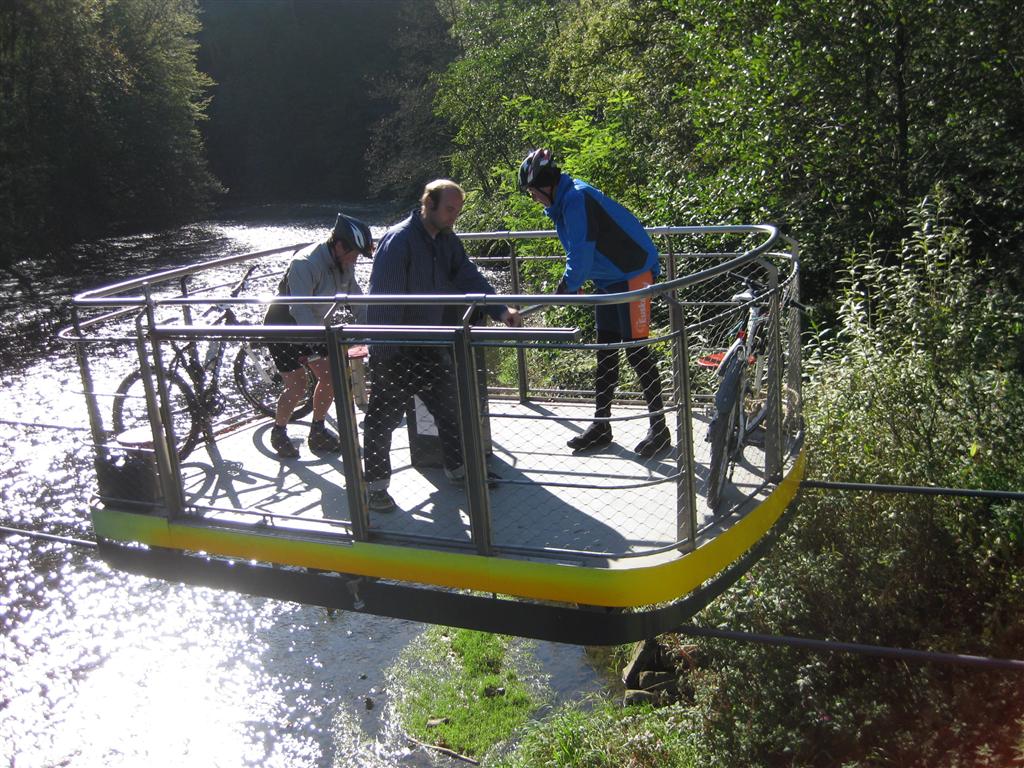
Suspended "Pump" ferry for cyclists and hikers over the Wupper
River.
We drove on to Düsseldorf where we viewed
some of the interesting new architecture including a Frank Gehry
apartment complex in the dock area of the Rhine River. The wind came
up and it turned cold, but we trudged on to the Düsseldorf Tower
which we ascended to look around the city from up high. By the time
we descended it was time to get back to Solingen so we could get
prepared for returning home to Oregon and California the next day.
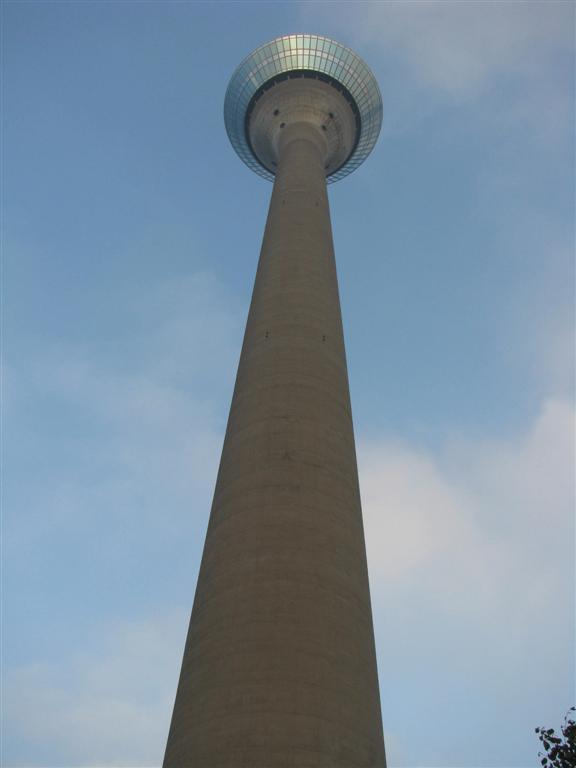
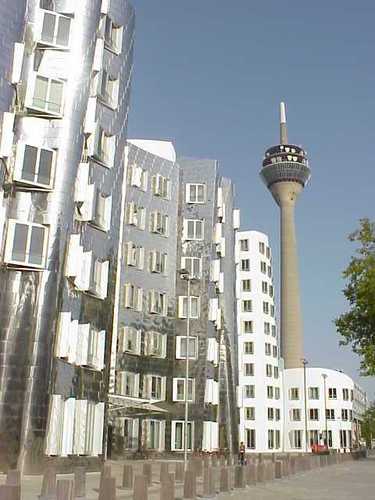
Tower with Frank Gehry buildings
Tom had to leave the earliest and decided to
take the train to the Düsseldorf Airport. Marija accompanied him to
help with a change in trains along the way. Then Andreas took
Richard whose Icelandic flight would take him to Reykjavic , Iceland
for a couple days before returning to Portland. He was taking the
train to Frankfurt to catch his flight. Marija, back from taking
Tom, jumped in our car and drove with us back to the Düsseldorf
Airport for our flights to Seattle/Portland via London Heathrow.
Andreas caught up with us to say goodbye. We only had 1 hour 10
minutes to make our connection at Heathrow which I wouldn’t
recommend, but everything went our way and we made it. Heathrow is
so large that it is recommended that if you have to go from one
terminal to another, you allow 2 hours. The flight over Iceland,
Greenland and Canada was smooth, but somehow the return always is
harder. We followed the sun and got to Seattle 1½ hours after we
left.
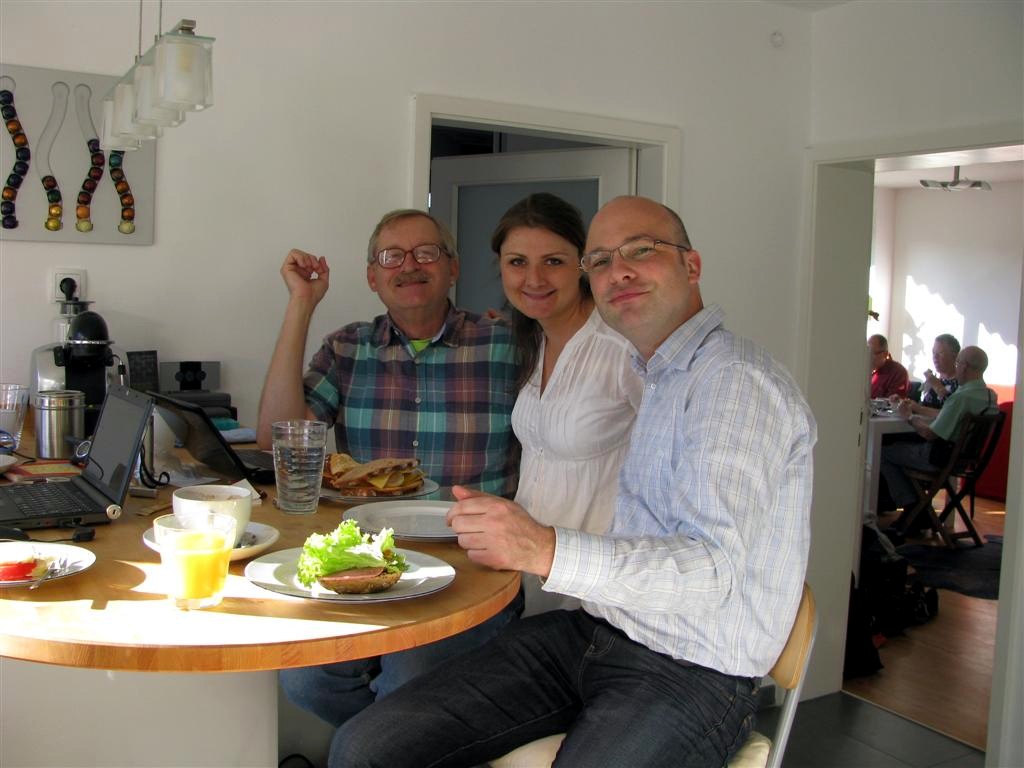
TomD, Marija, Andreas
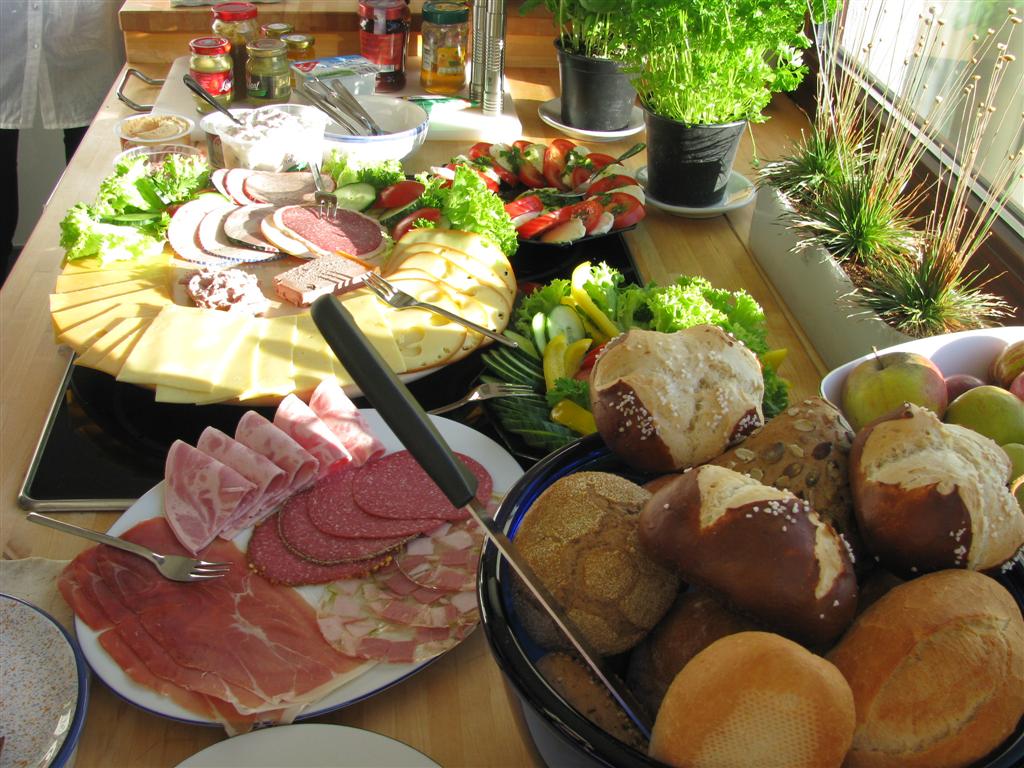
Breakfast at Andreas Marija's
We hope you have enjoyed following us on our
journey. We went to 10 countries in 30 days across all of Europe.
Now is time to sort out all the memories with the help of pictures
and journals. We loved it all, although the best part was meeting up
with friends and relatives who were so gracious to us all.
Joel and all
|
| |
|
